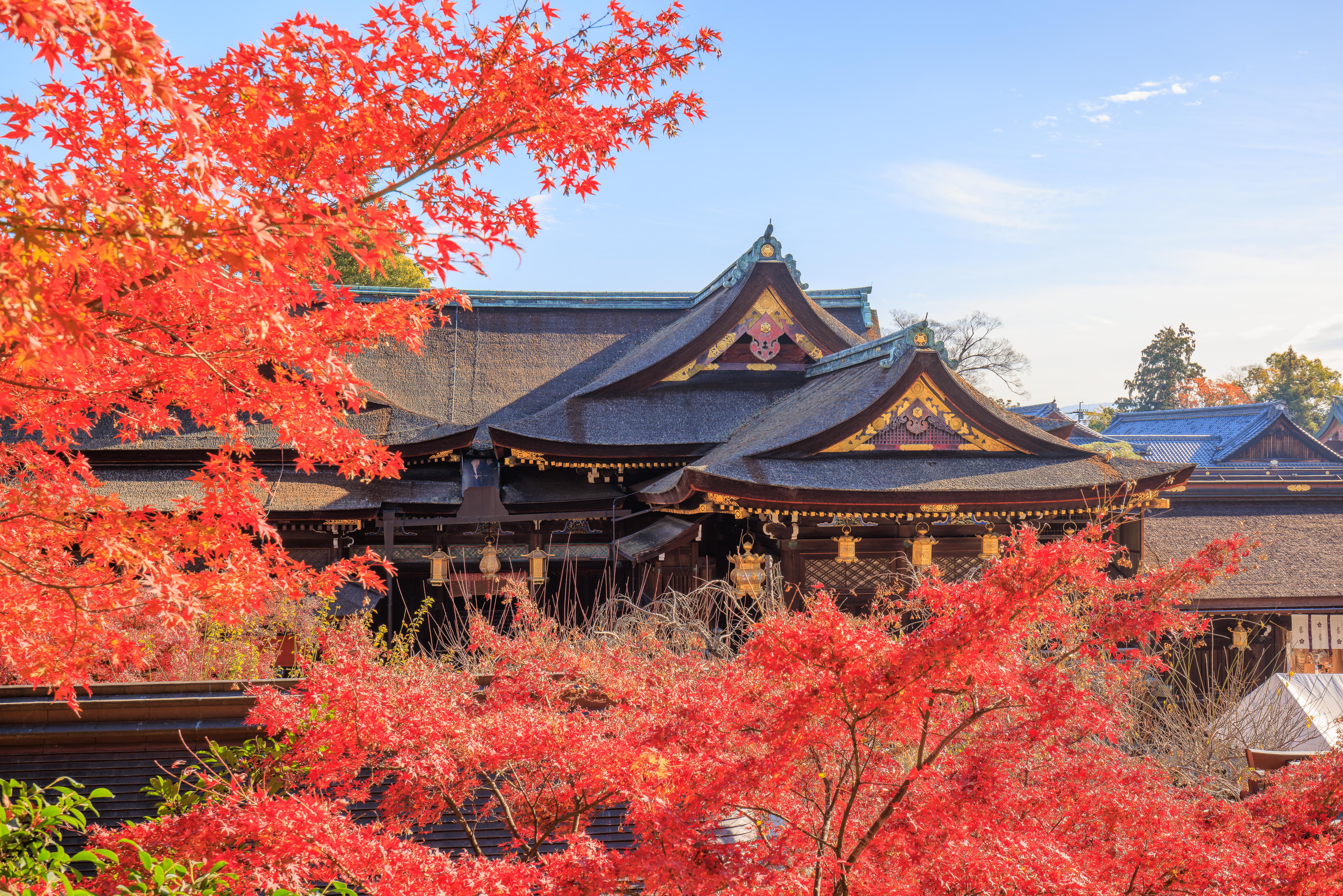We headed out in the morning by bus from the Hyatt Place Kyoto to Kitano Tenmangu, a Shinto shrine in northwestern Kyoto. After spending the morning there, we had lunch and visited To-ji, a Buddhist temple near Kyoto Station. We ended the day at Kyoto Station where we did some shopping and had dinner.
Breakfast
After waking up at the Hyatt Place Kyoto, we went to Sukiya, a low priced Japanese gyudon restaurant chain. It was just a block and a half away at the intersection of Karasuma and Marutamachi.
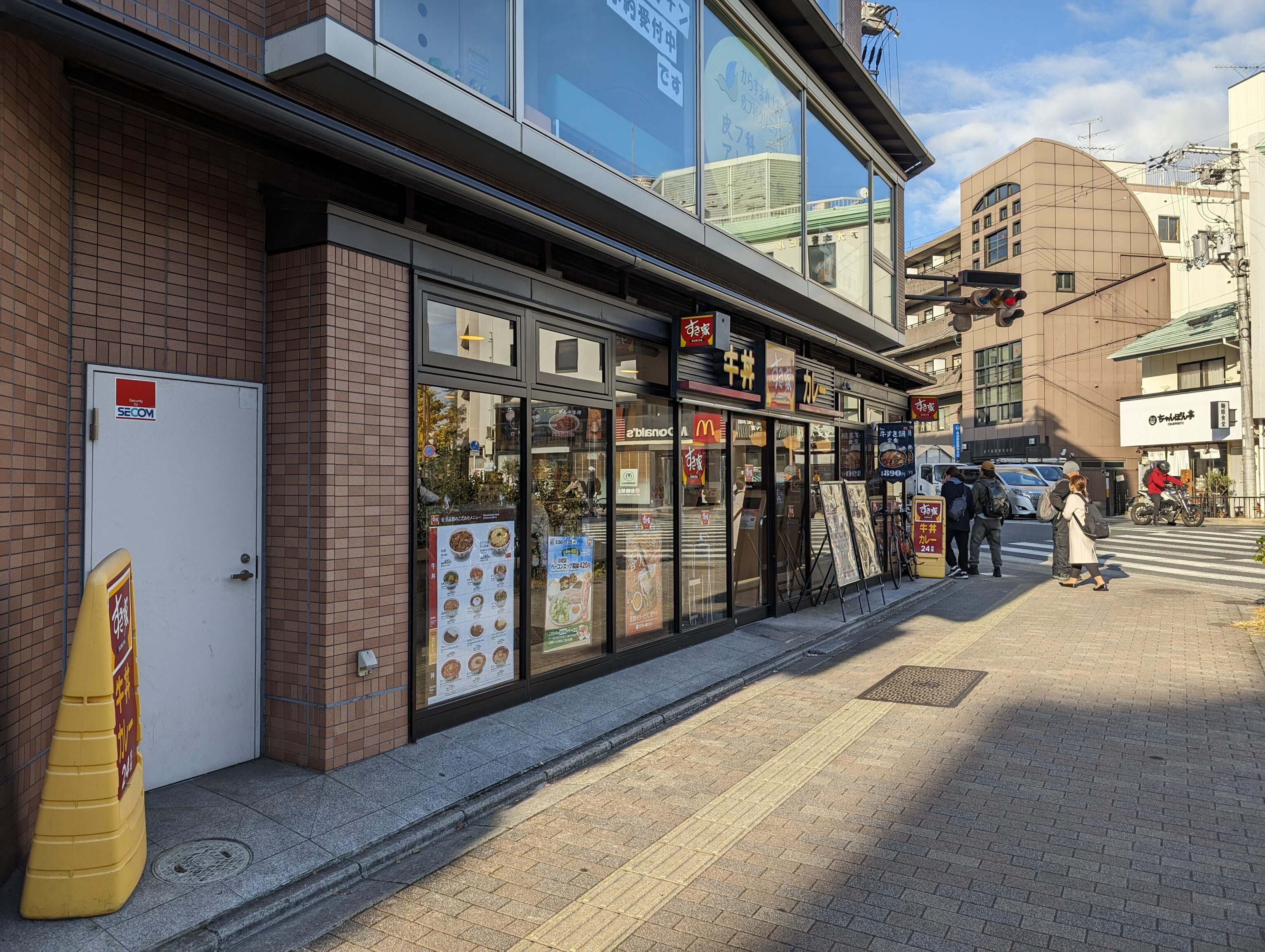
We’ve seen this restaurant at this very visible corner pretty much every day! It wasn’t busy when we arrived. We got two dishes, a sukiyaki and a gyudon.
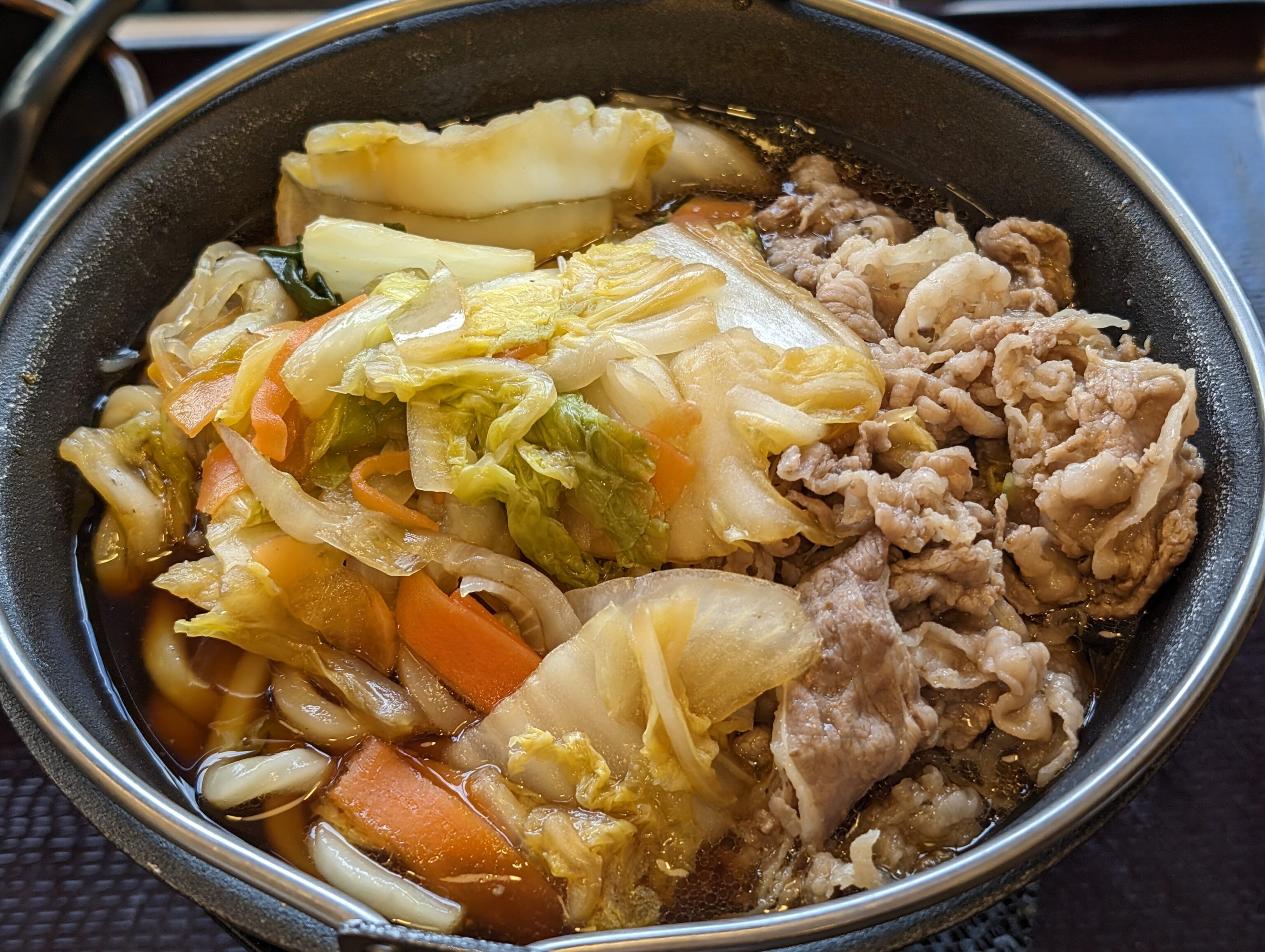
The sukiyaki came in a bowl heated by a Sterno. Not actually a Sterno since it is an American brand name. We don’t even know the general term for this type of product in English! Kind of like Kleenex and Scotch tape! Anyway, we waited for it to come to a simmer before eating. Definitely low end food but tasty!
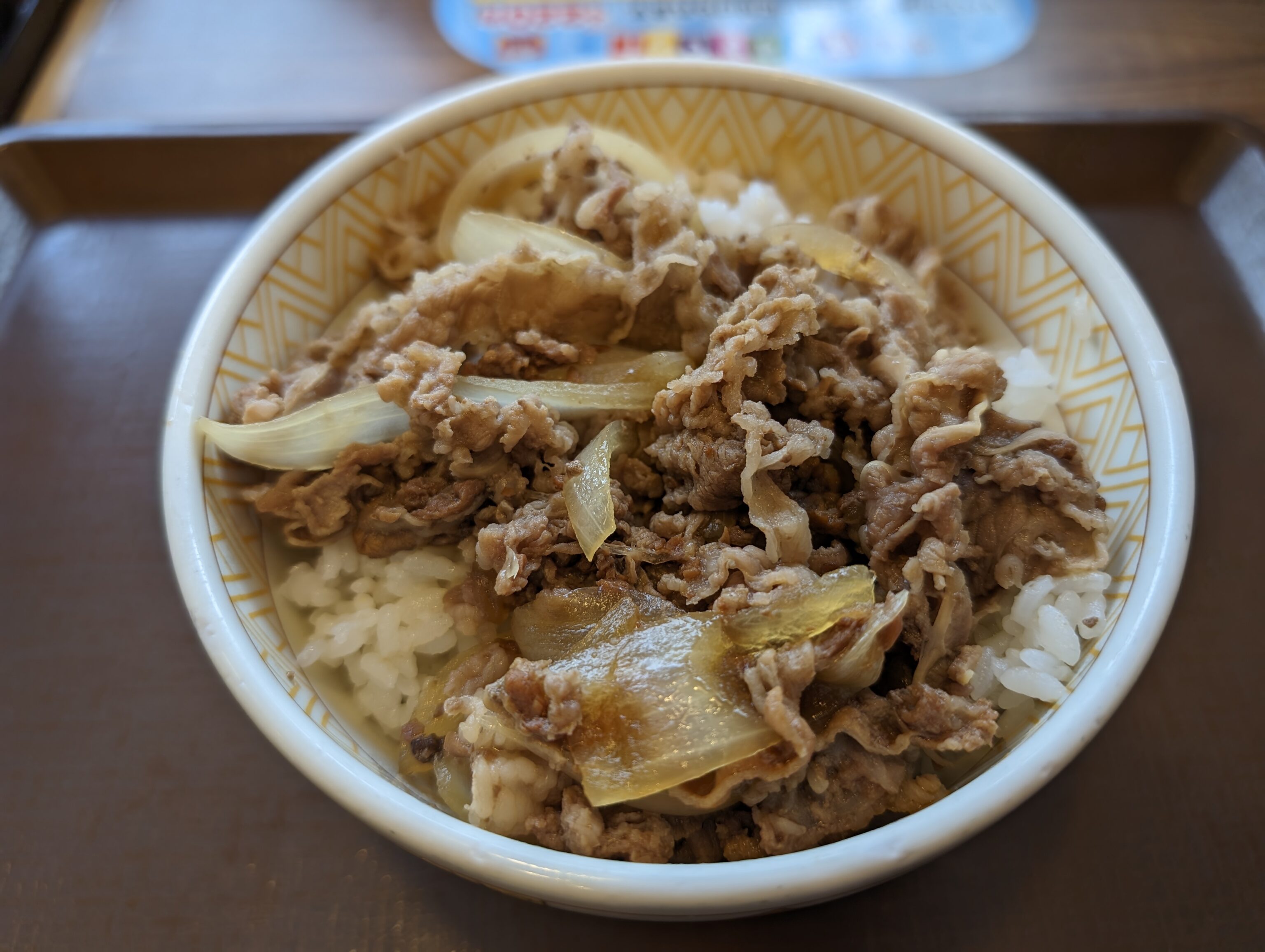
We also got a gyudon, which is beef over rice and this chain’s specialty. A much simpler dish than the sukiyaki. It was also pretty satisfying. Overall, at this price point, its much better than what you would get in the US! Plus, there is table service and of course no tipping!
Kitano Tenmangu
After breakfast, we caught the 51 bus from the stop between the Hyatt Place Kyoto and Sukiya. Very convenient! 15 minutes or so later, we got off right in front of Kitano Tenmangu‘s main entrance.
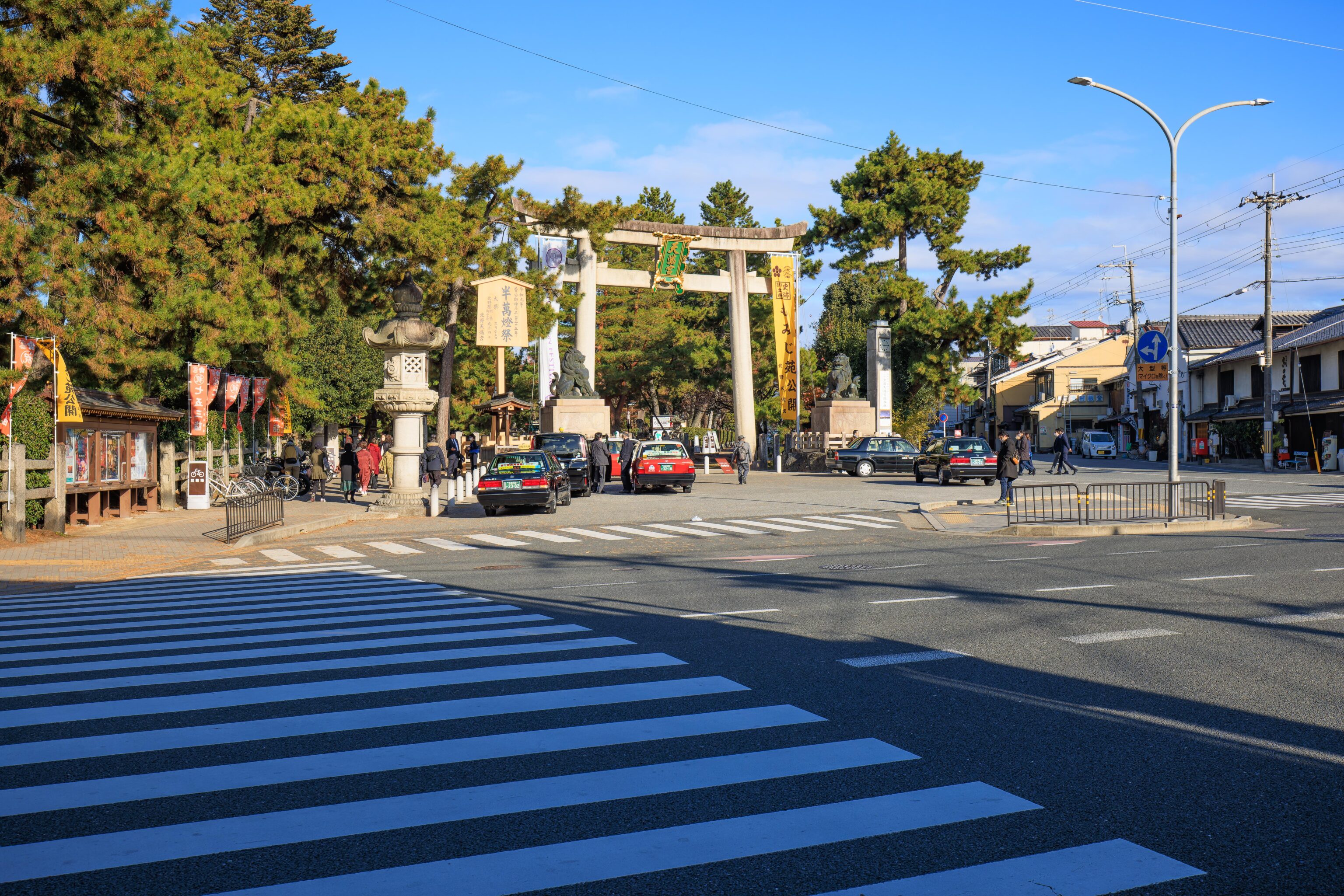
This is a Shinto shrine so there is a torii. Though, this being Japan, it is pretty common to see Buddhist and Shinto things mixed together.
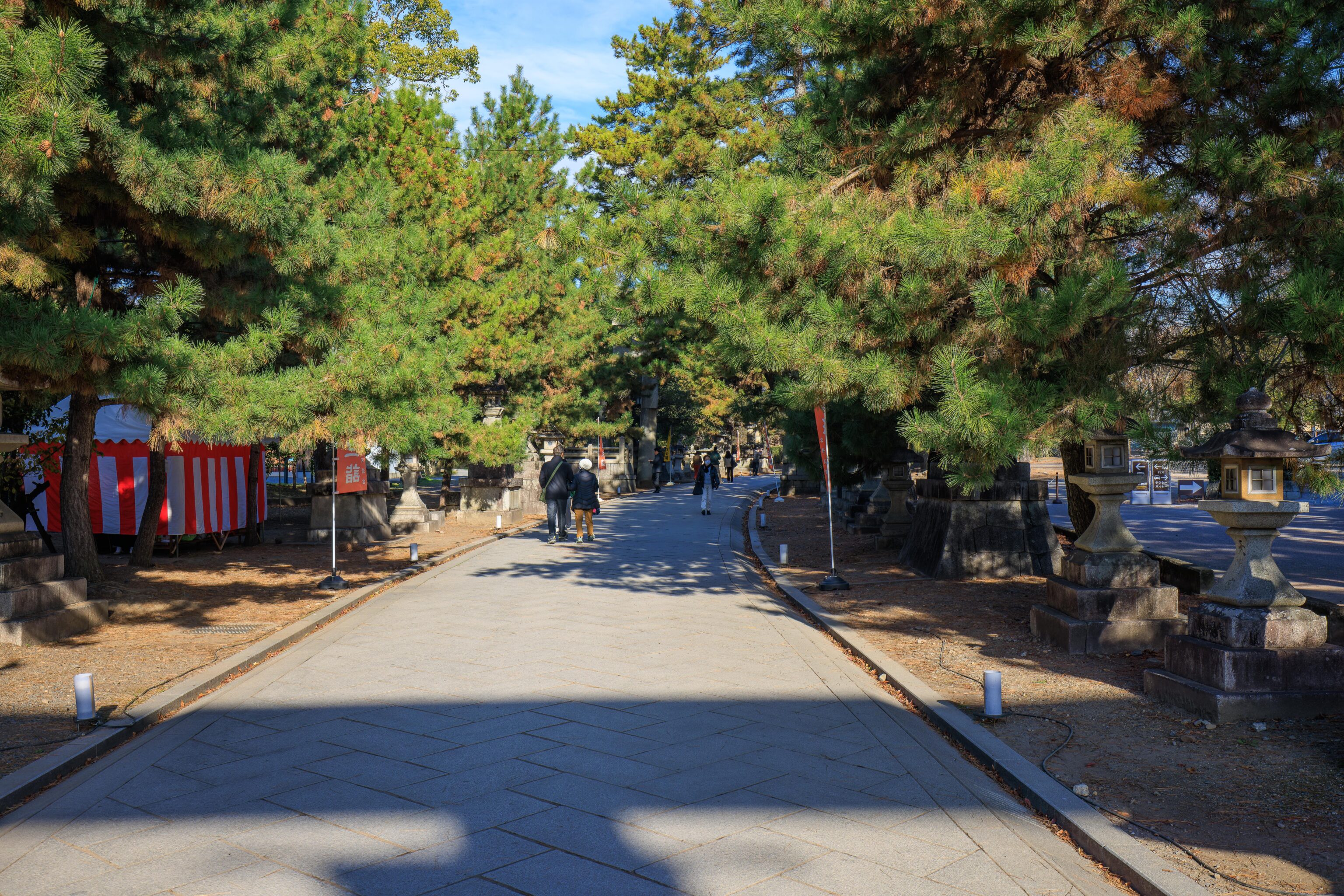
We passed under the torii and walked along this wide path, heading north.
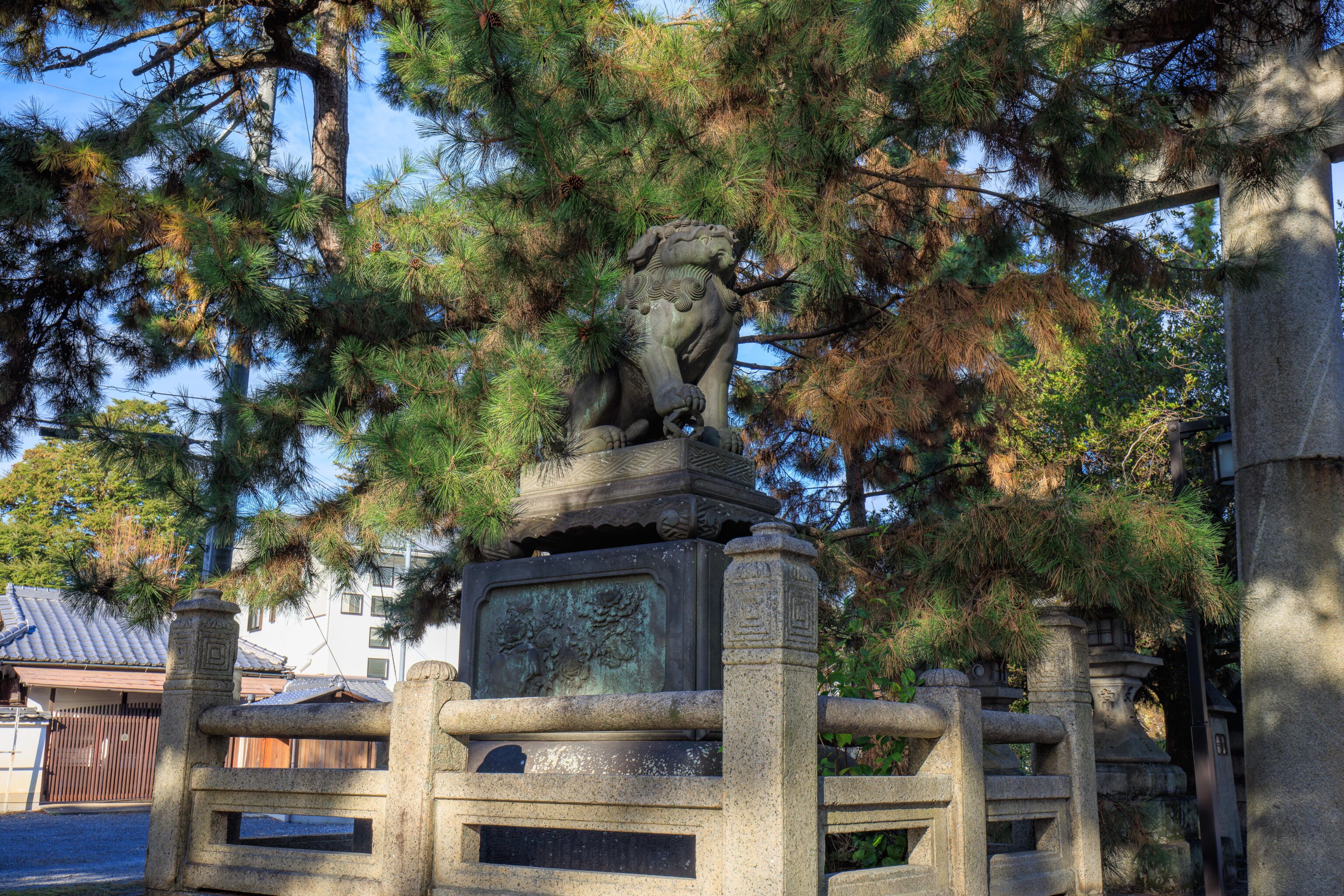
One of the komainu guarding the shrine.
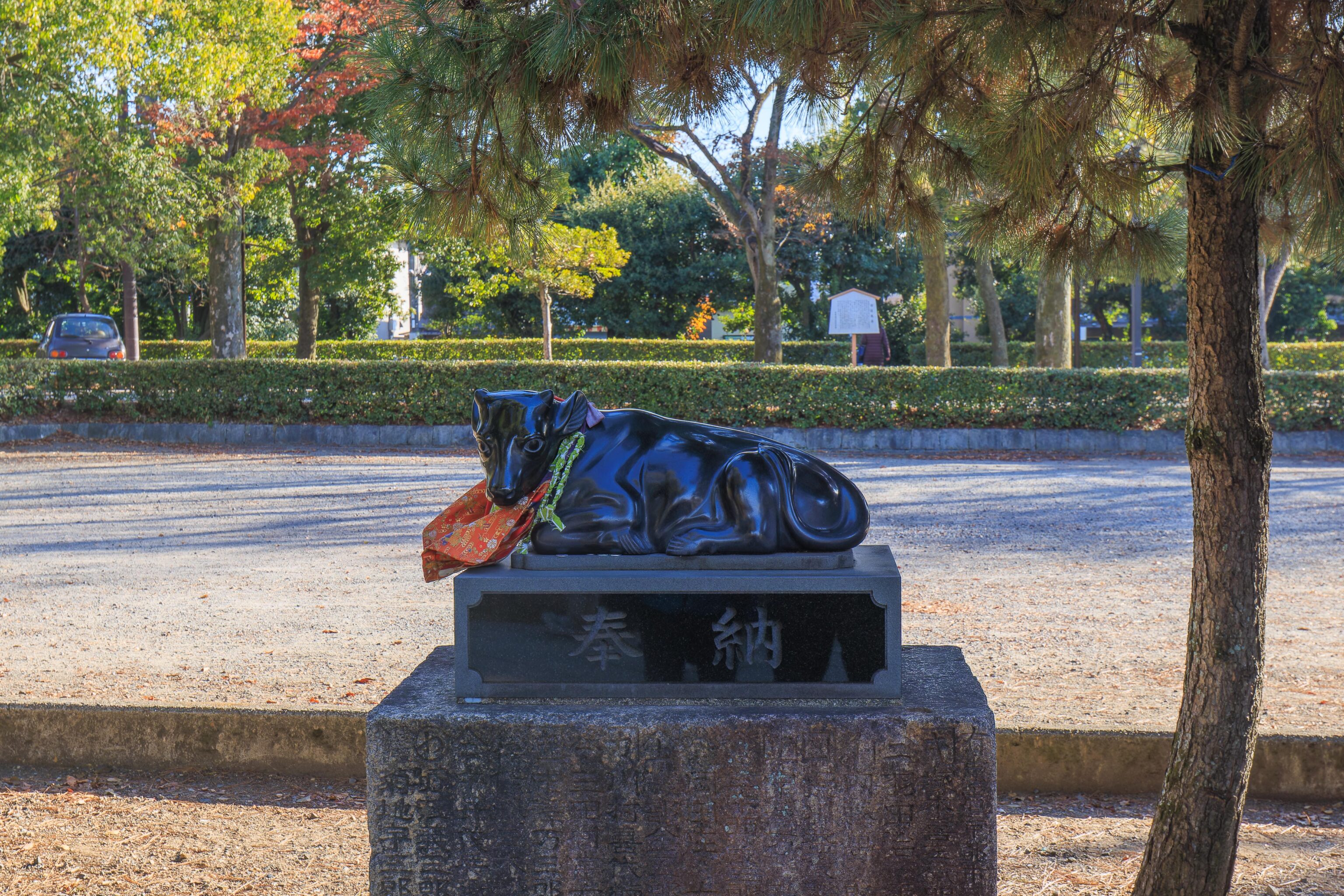
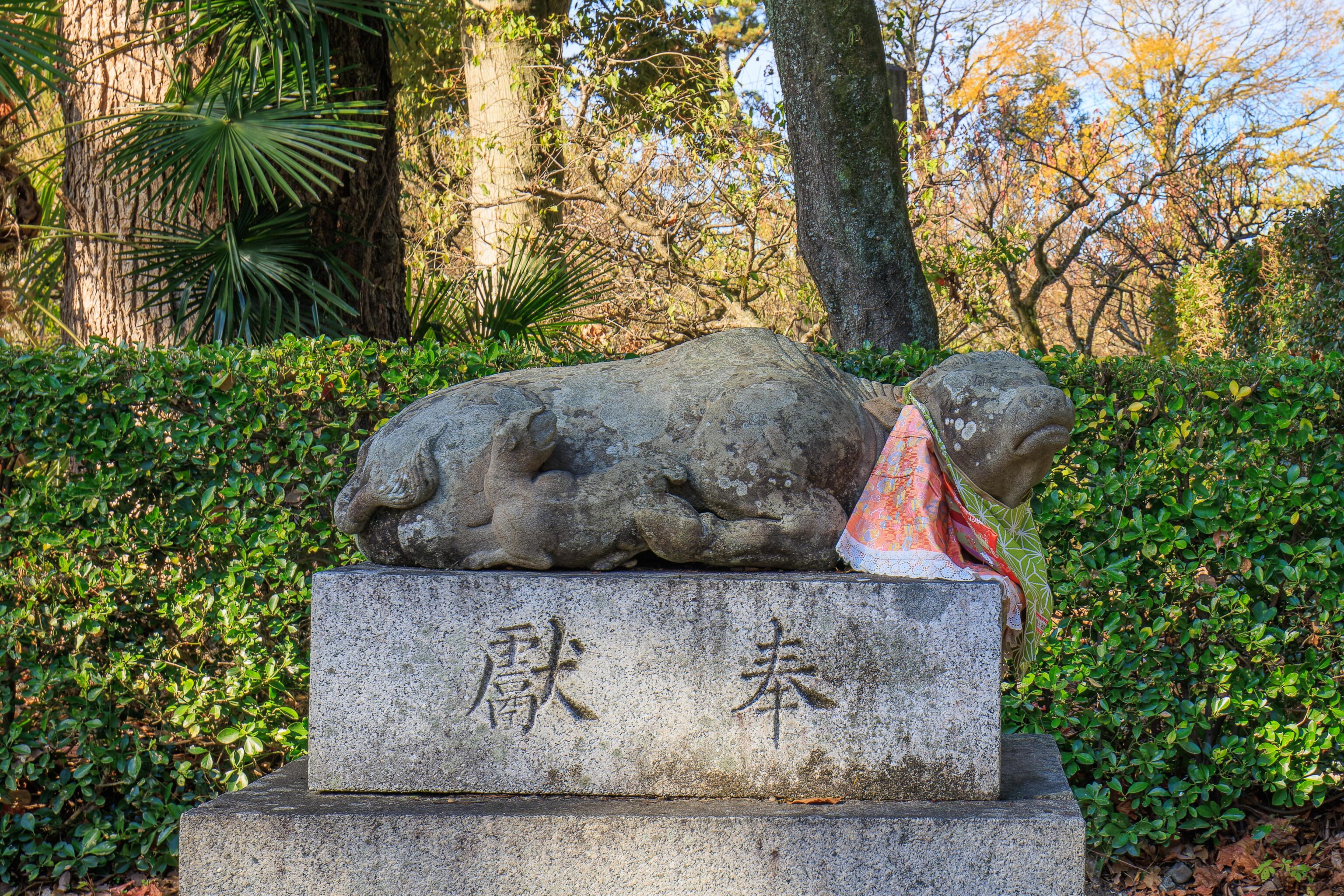
Kitano Tenmangu is dedicated to Tenjin, the god of learning who is served by oxen as his messengers. As a result, there are many ox sculptures here at the shrine1. It is similar to how Fushimi Inari Taisha has foxes everywhere.
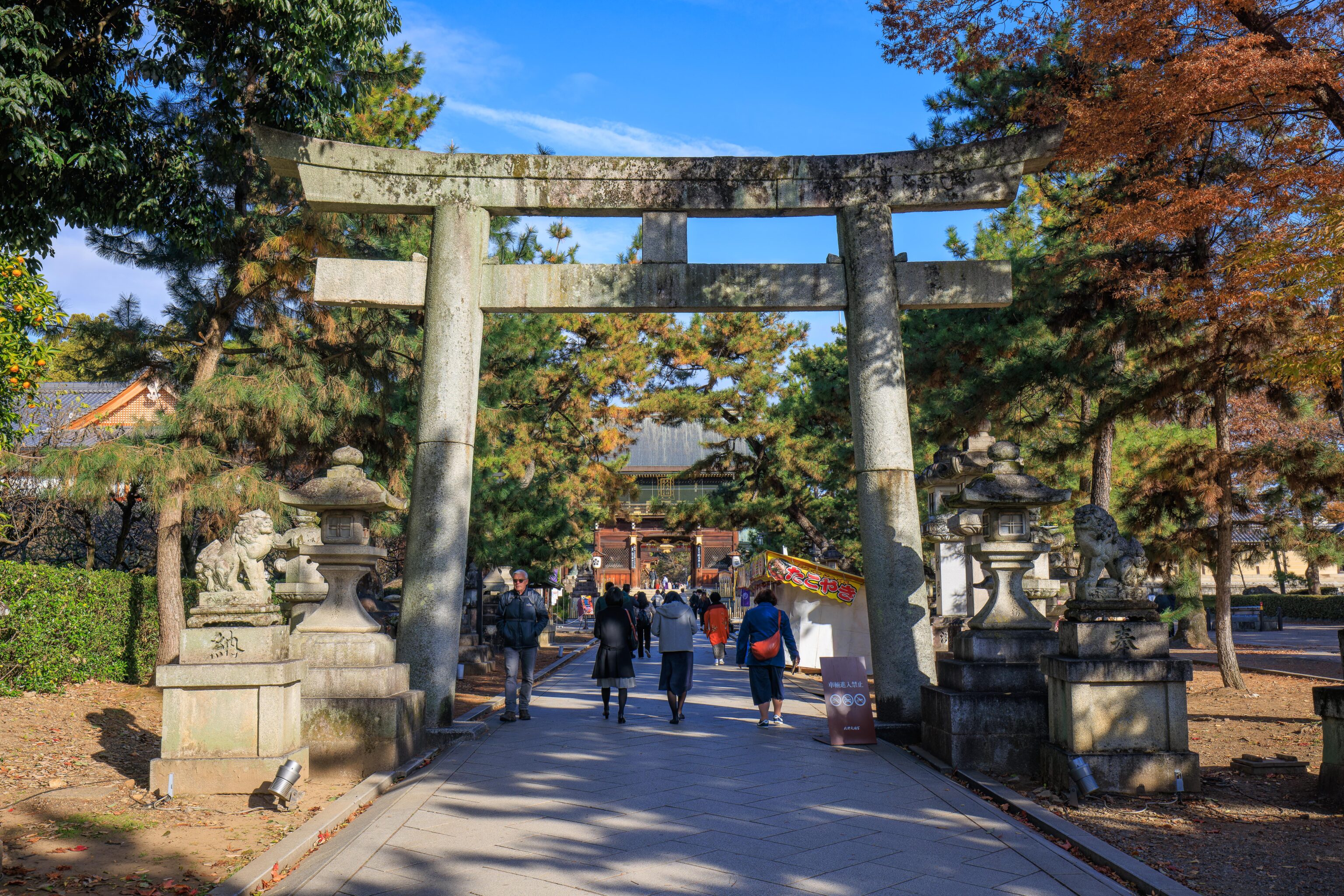
As we passed under another torii, we could see a large gate ahead as well as two more komainu, one on each side.
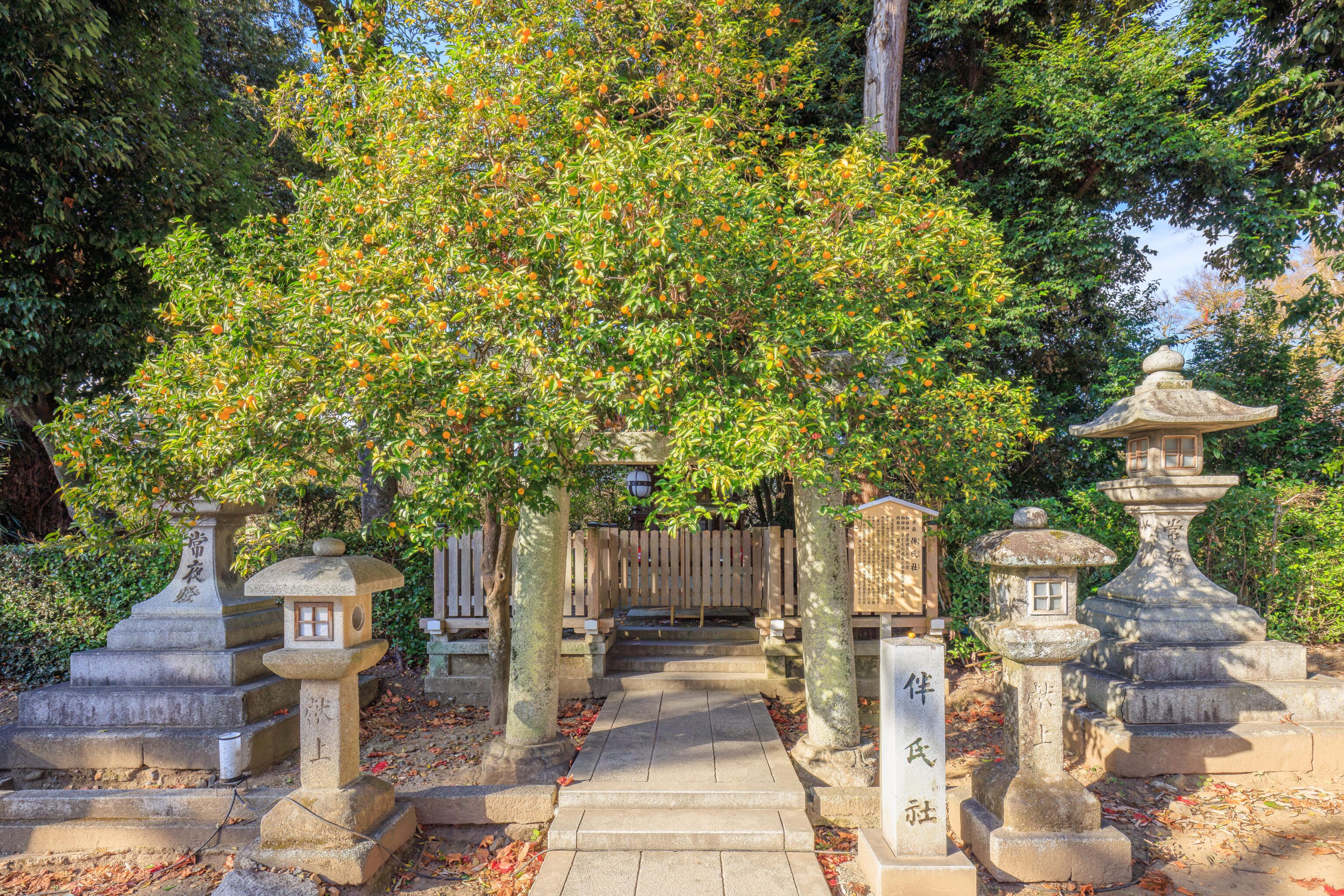
This appears to be a small shrine, maybe a hokora? It is closed off by a fence. We likely photographed this scene due to tree as it is filled with fruit!
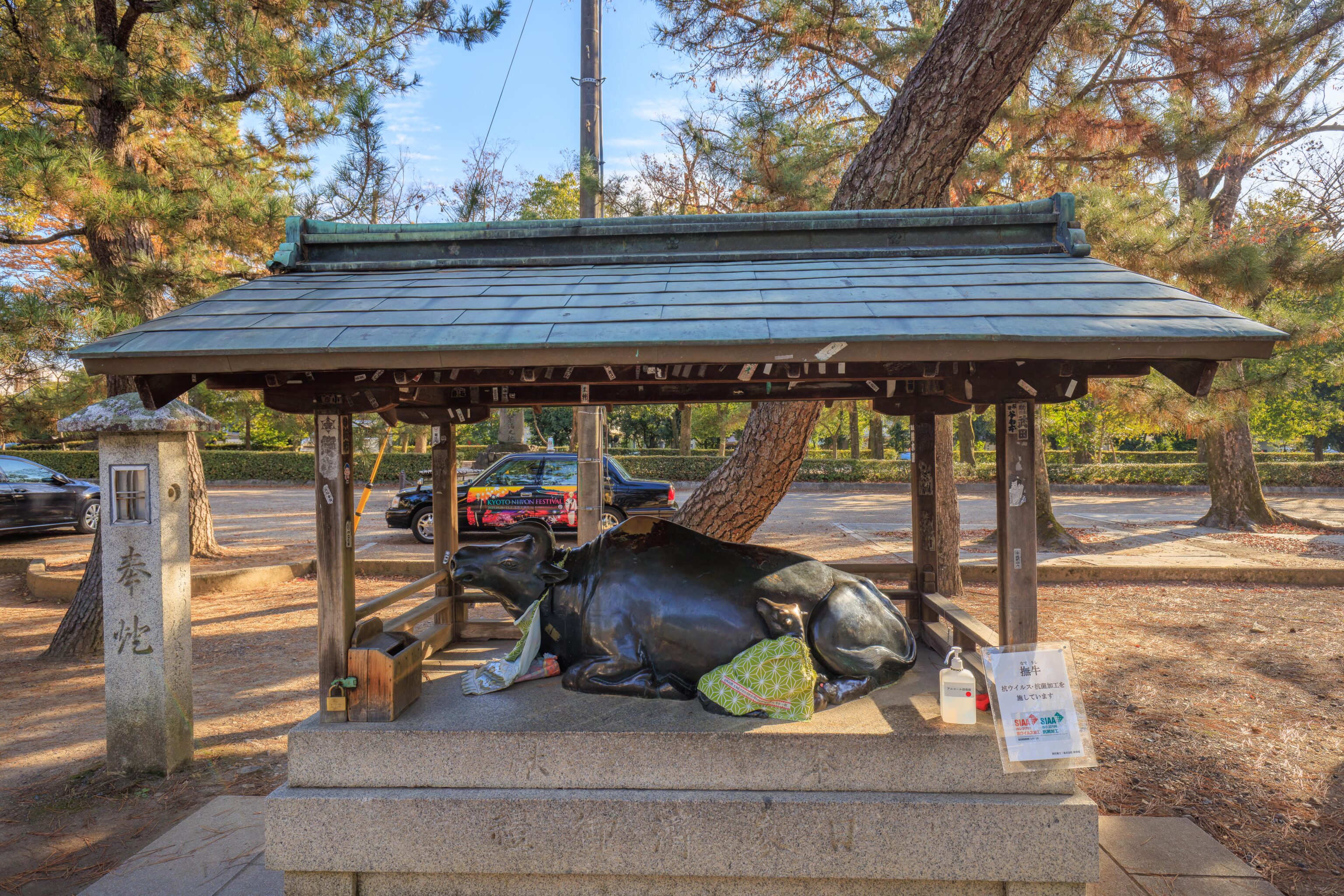
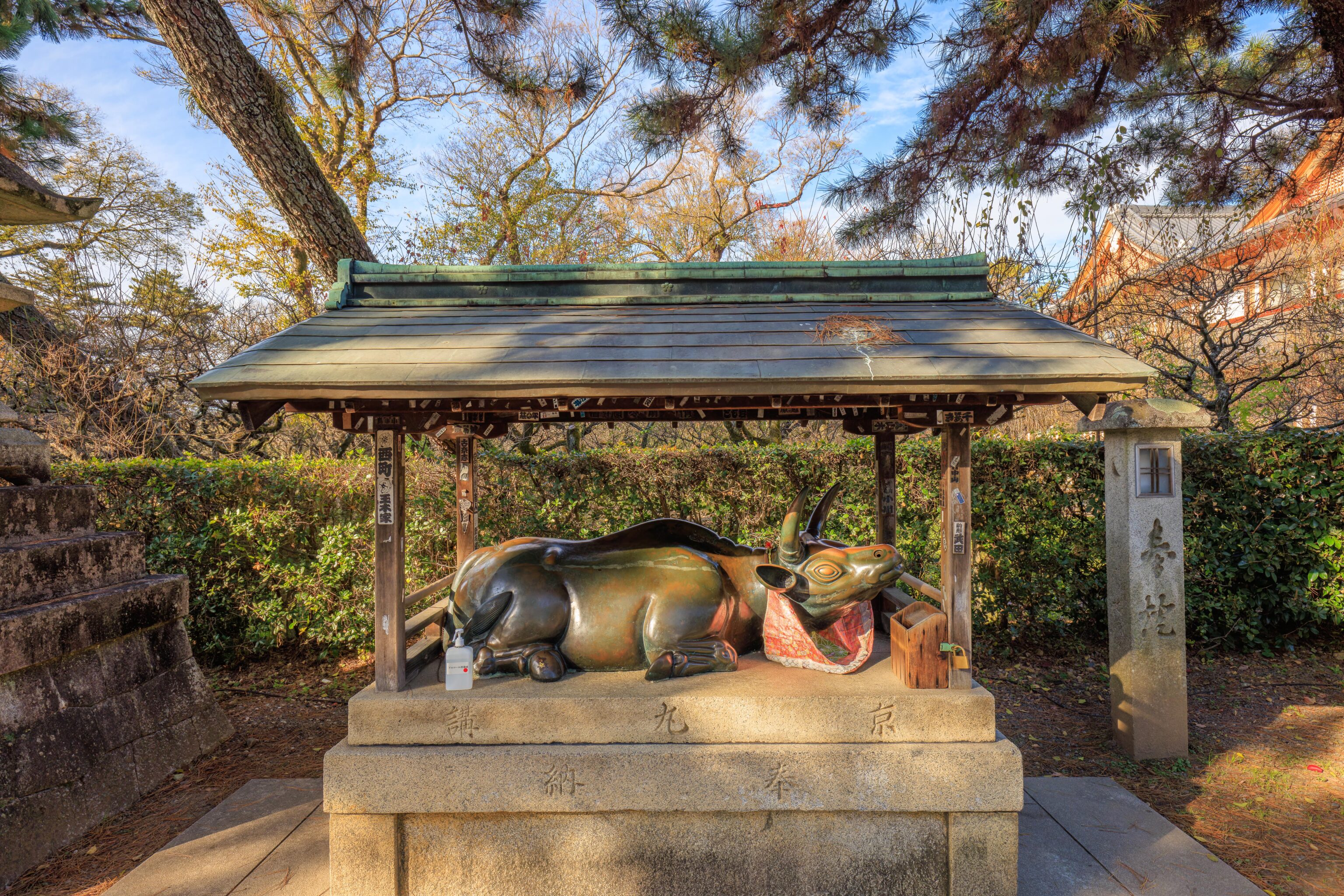
We passed two more ox. People rub them for good luck2, note the presence of hand sanitizer!
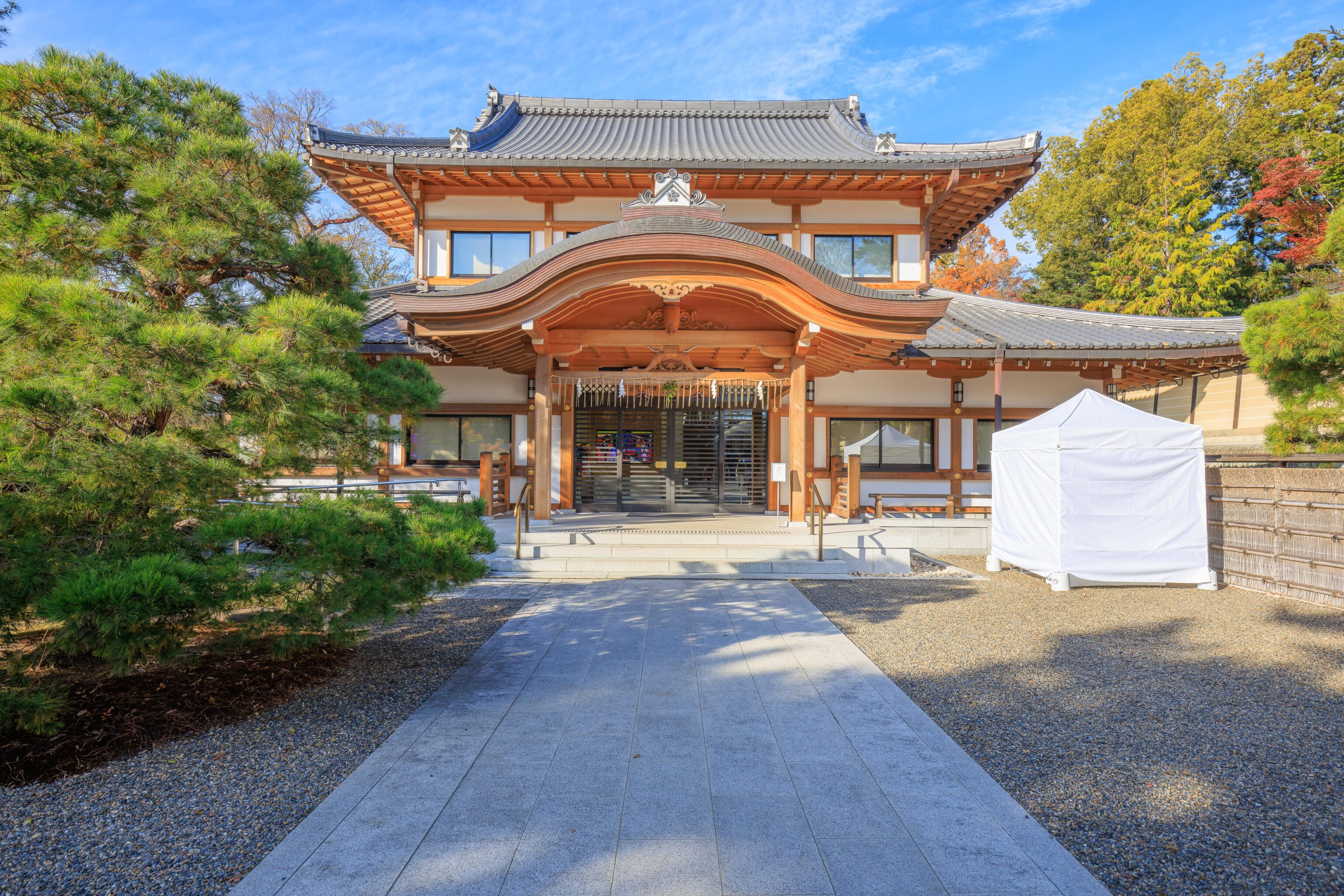
There was an event going on, the Kyoto Nippon Festival. It seems that having a ticket provides access to this building. We couldn’t really tell what the festival was about and didn’t really feel the need to investigate further!
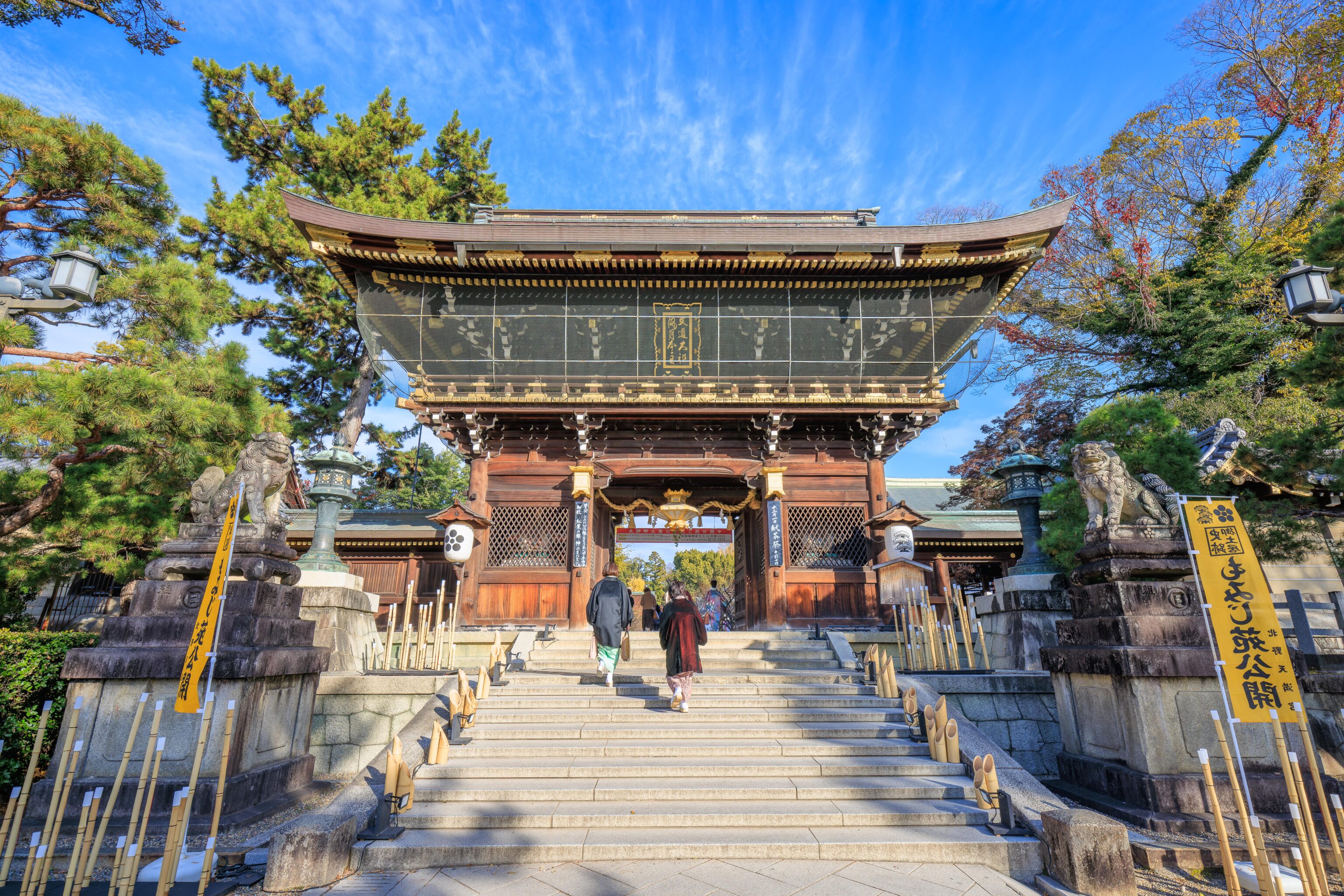
We walked through this large gate, the one we saw before from the second torii.
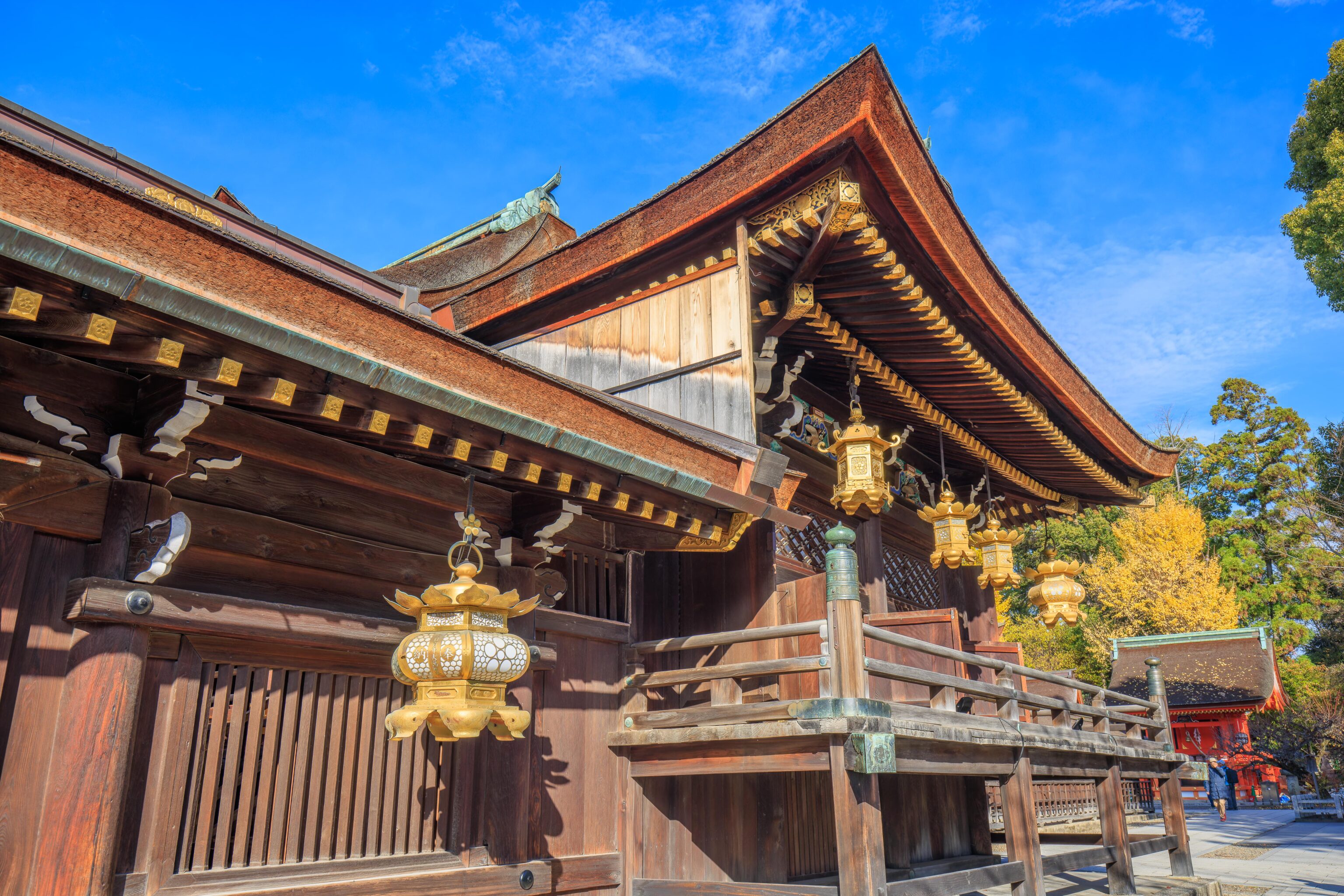
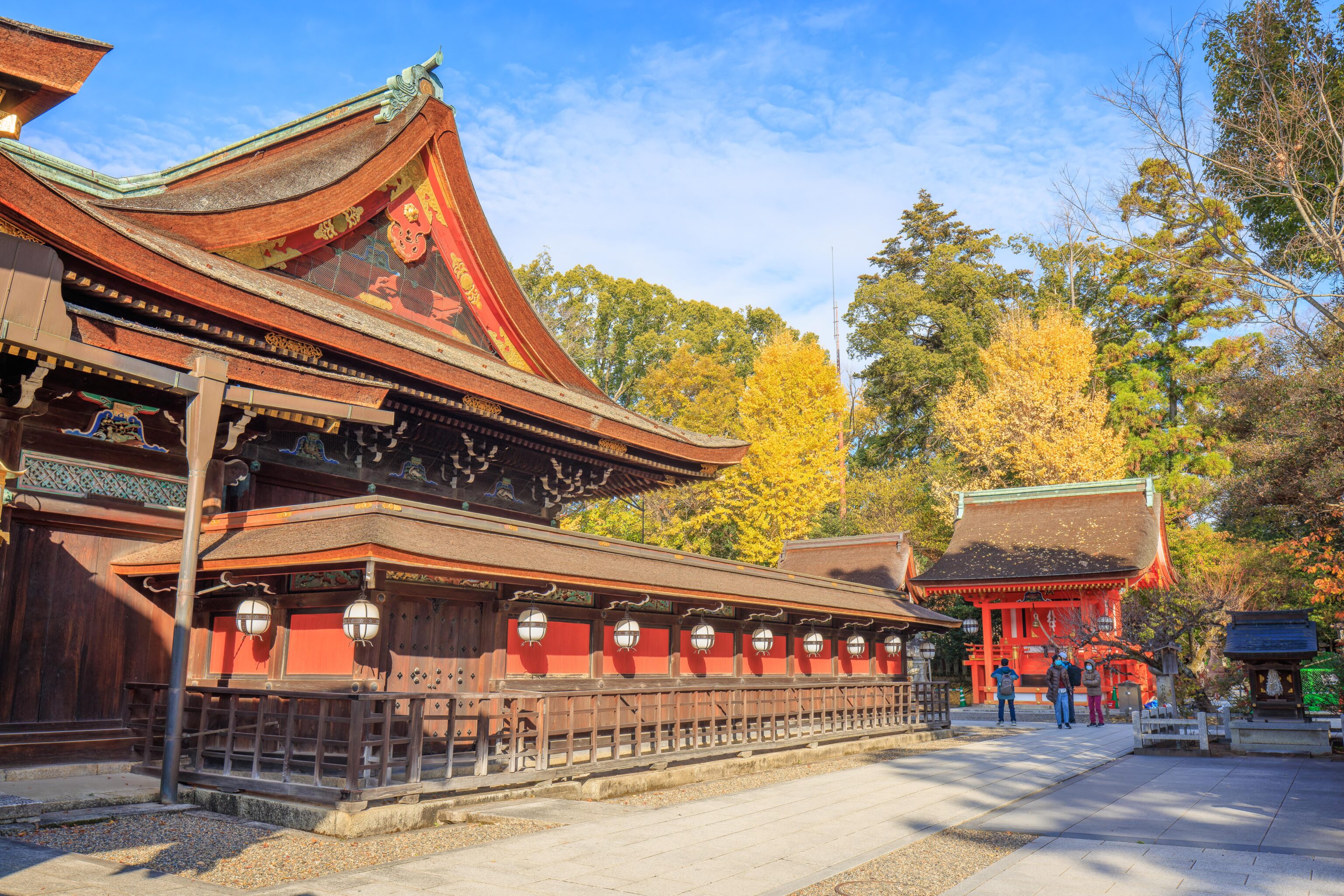
We walked around the outdoor areas of the shrine a bit. Other than the festival, there seemed to a snack food trade group convention going on. At least, that’s what it seemed like to us! It felt like it would be a bit weird to photograph them so we did not.
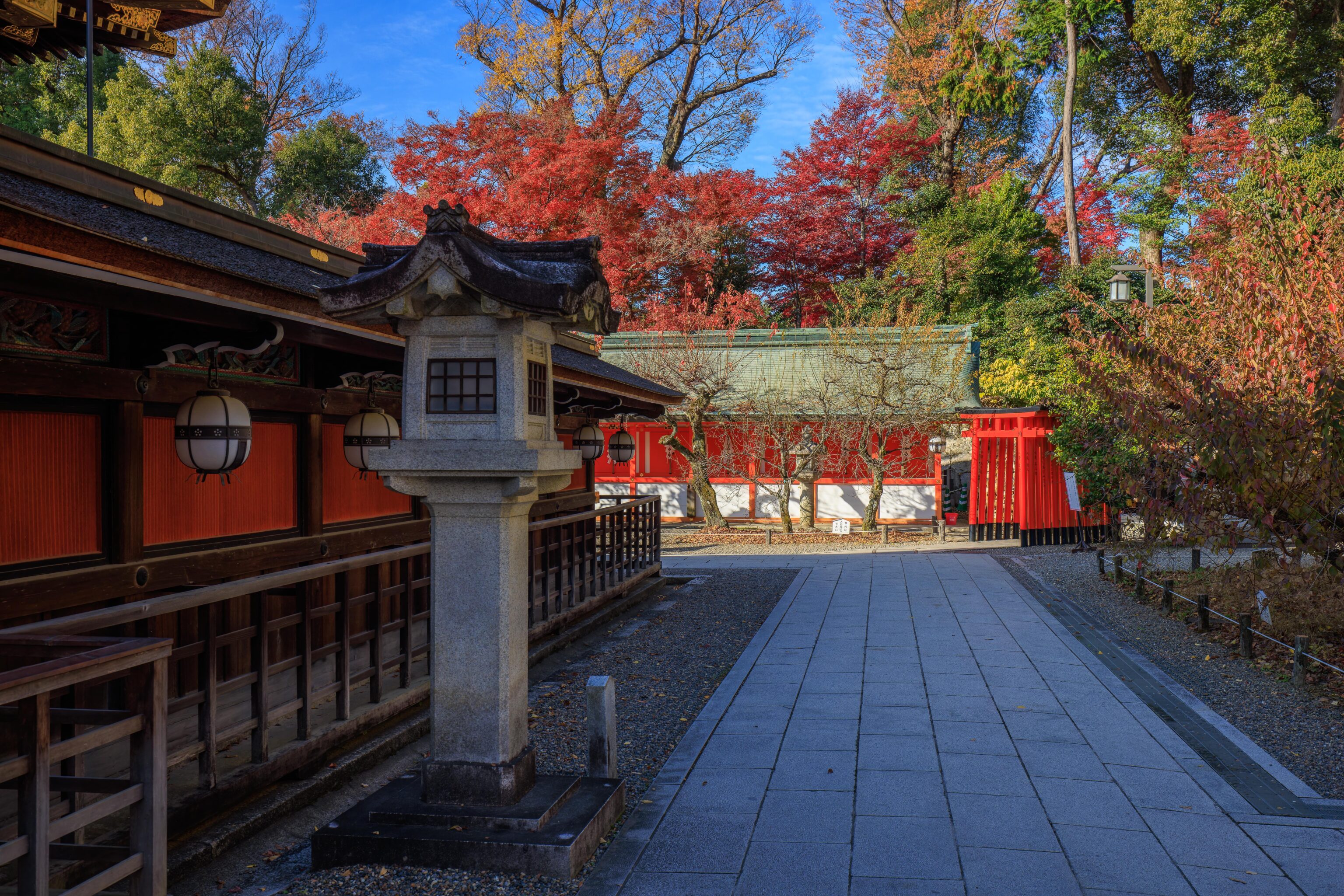
We circled around the main shrine building and saw some red torii ahead.
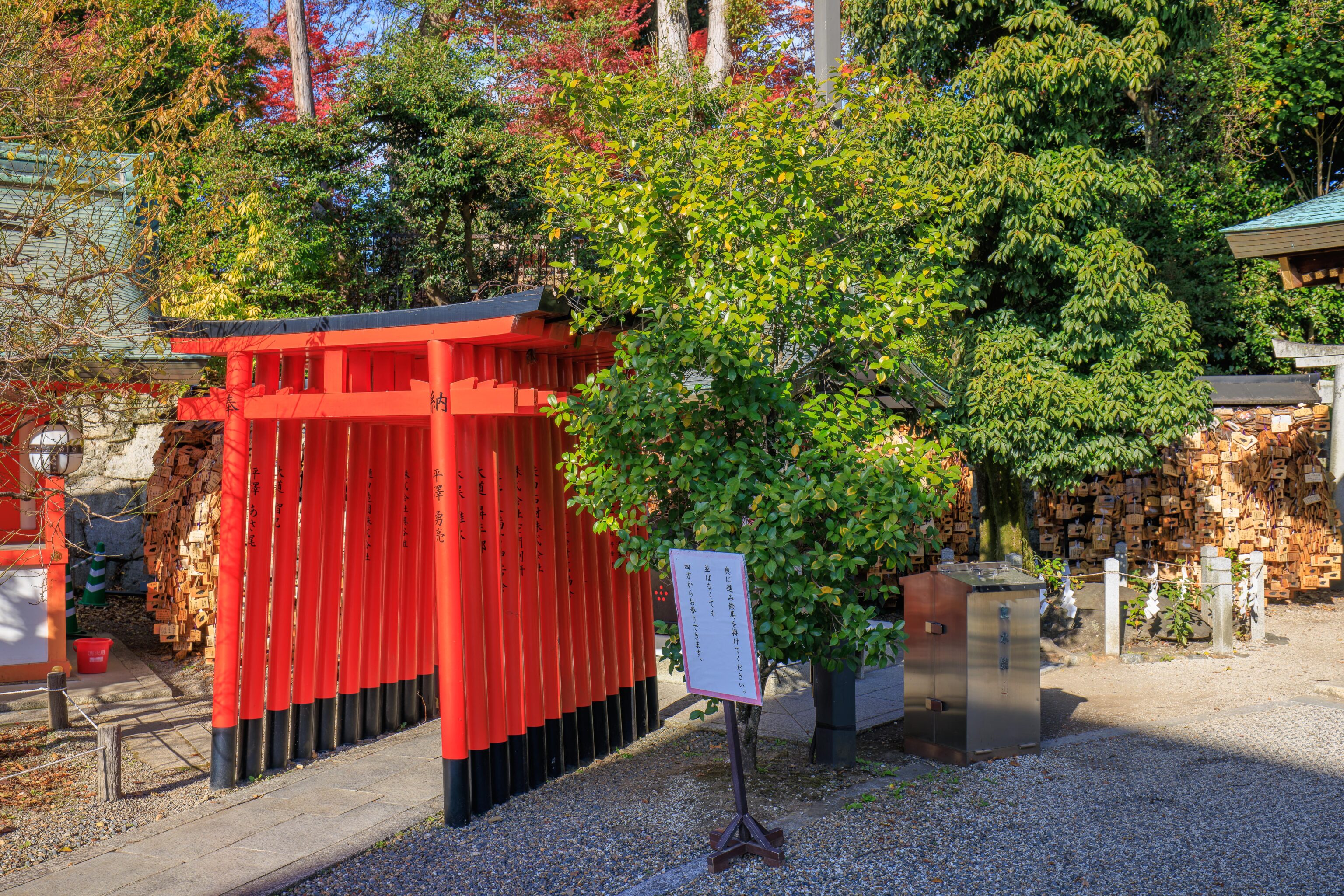
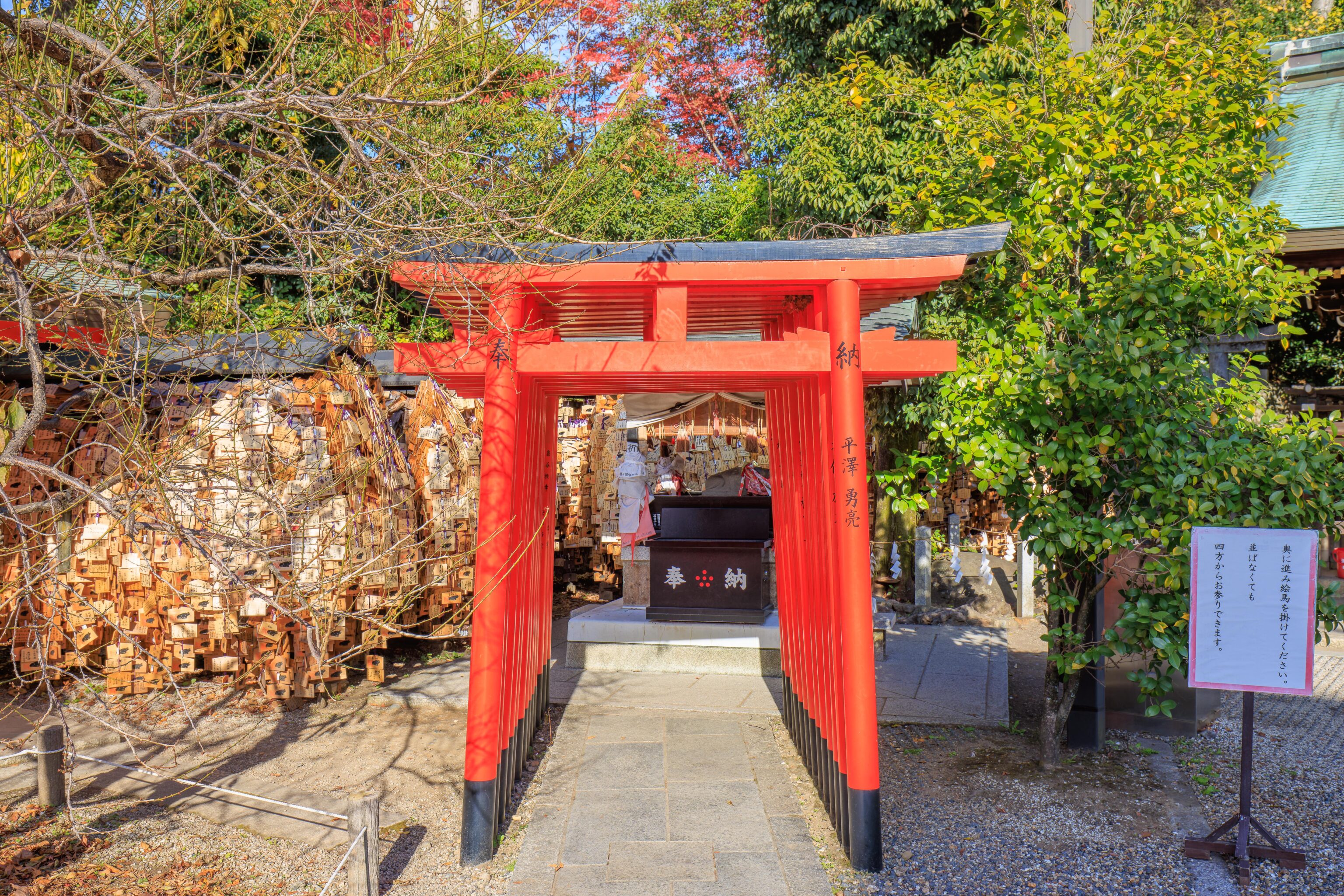
The row of red torii are reminiscent of Fushimi Inari Taisha, which we visited in 2019.
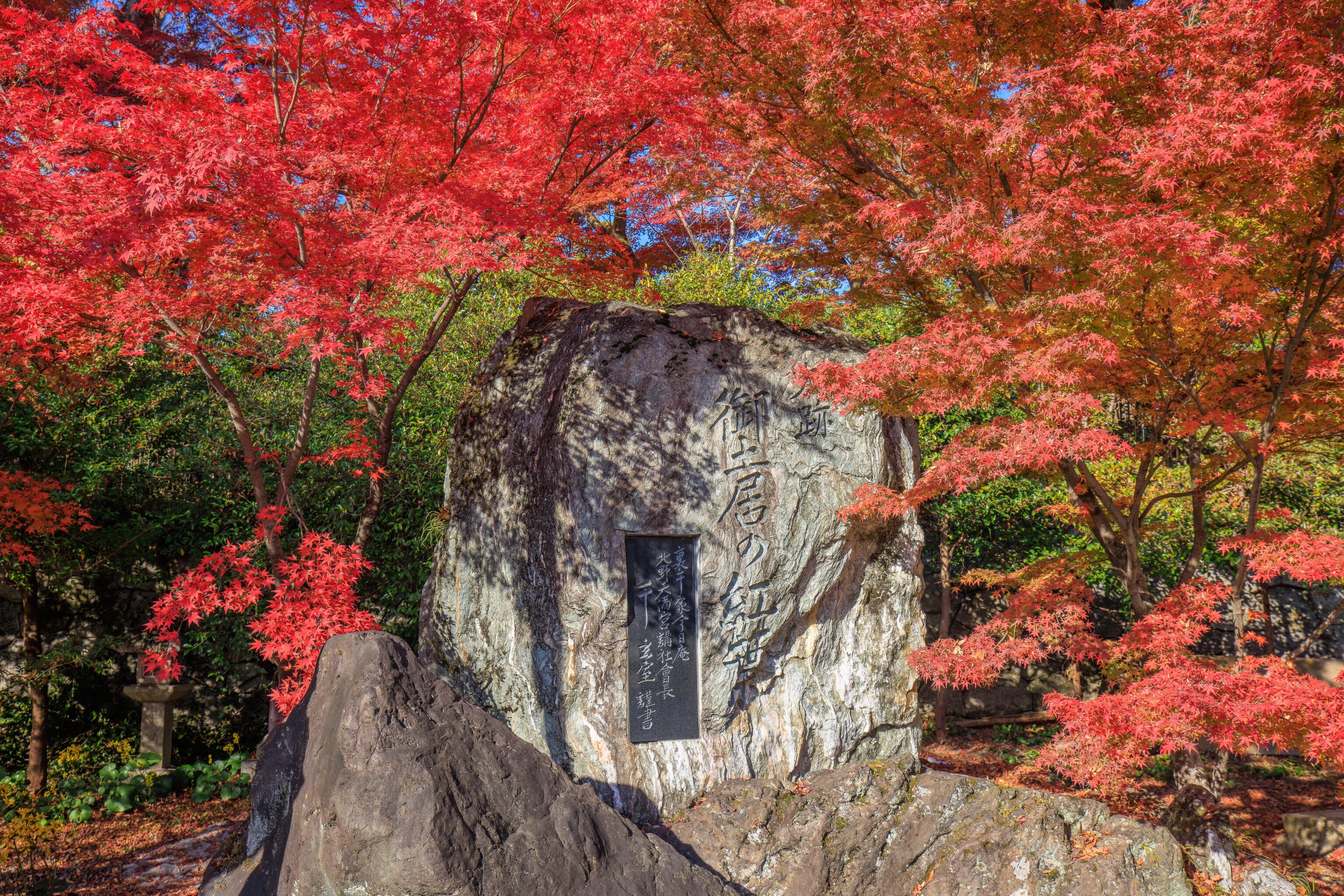
This stone was beautifully surrounded by Japanese maples!
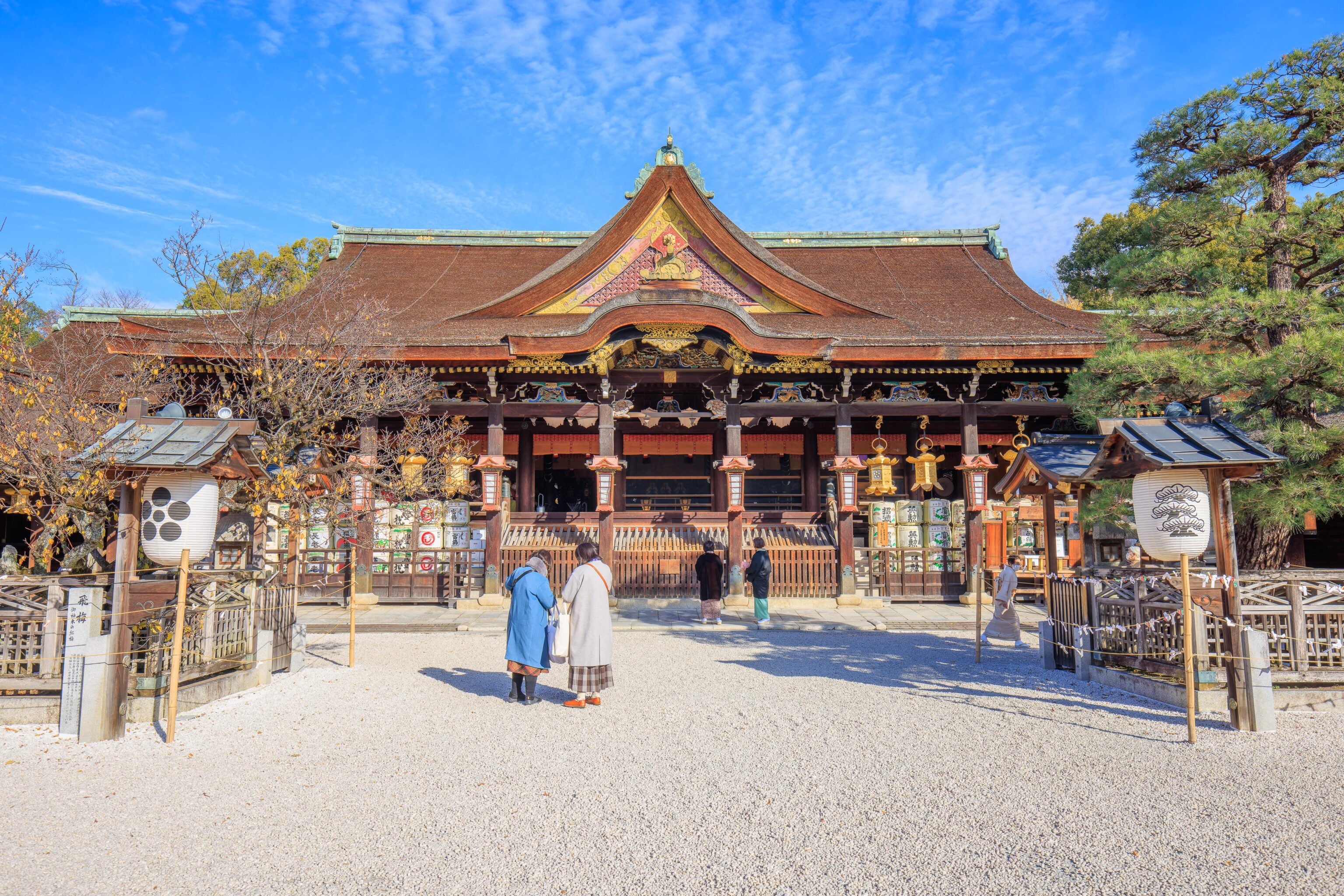
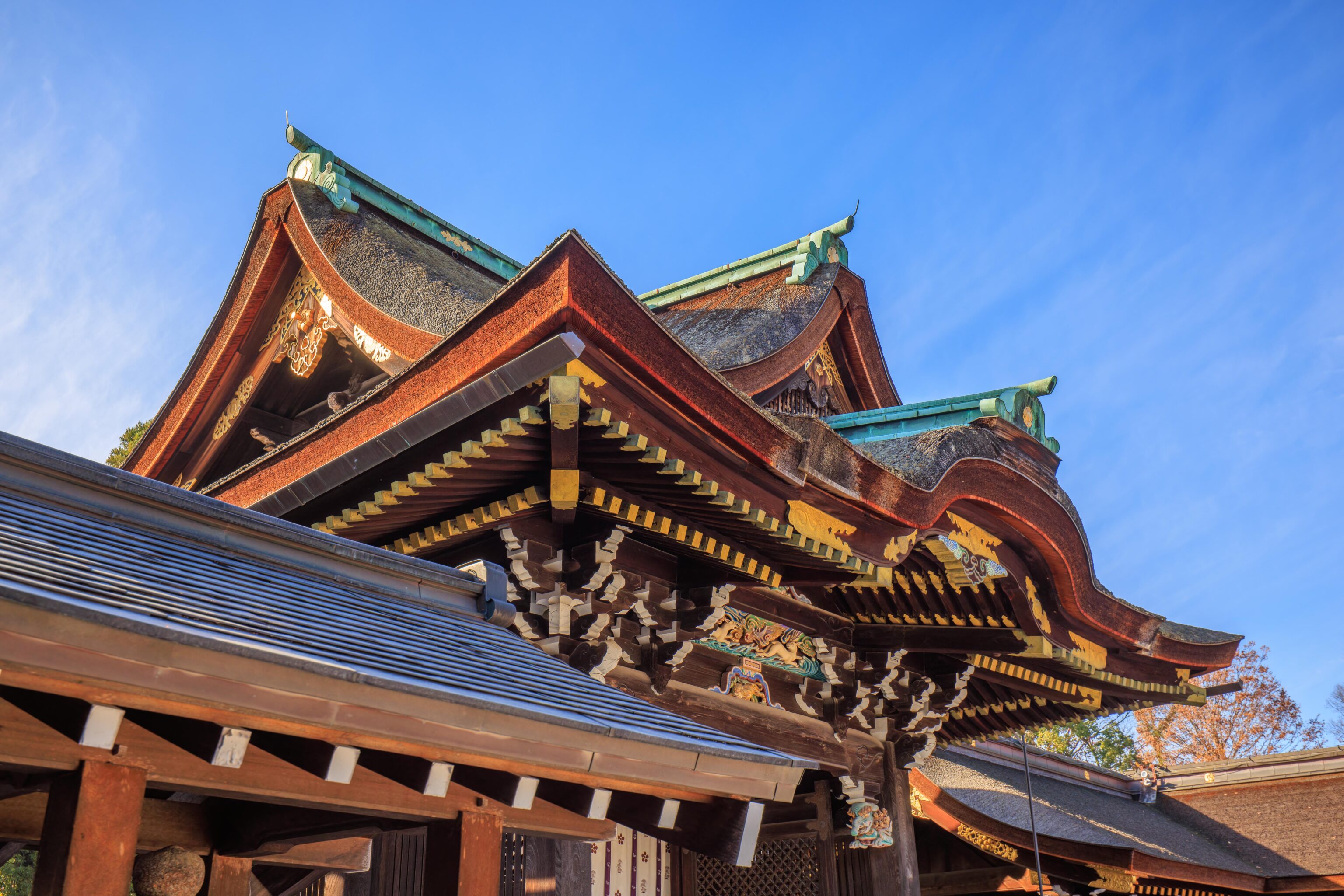
We walked into the walled off area of the main shrine building from the west. There seemed to be some sort of gathering going on near where we entered. We didn’t photograph them.
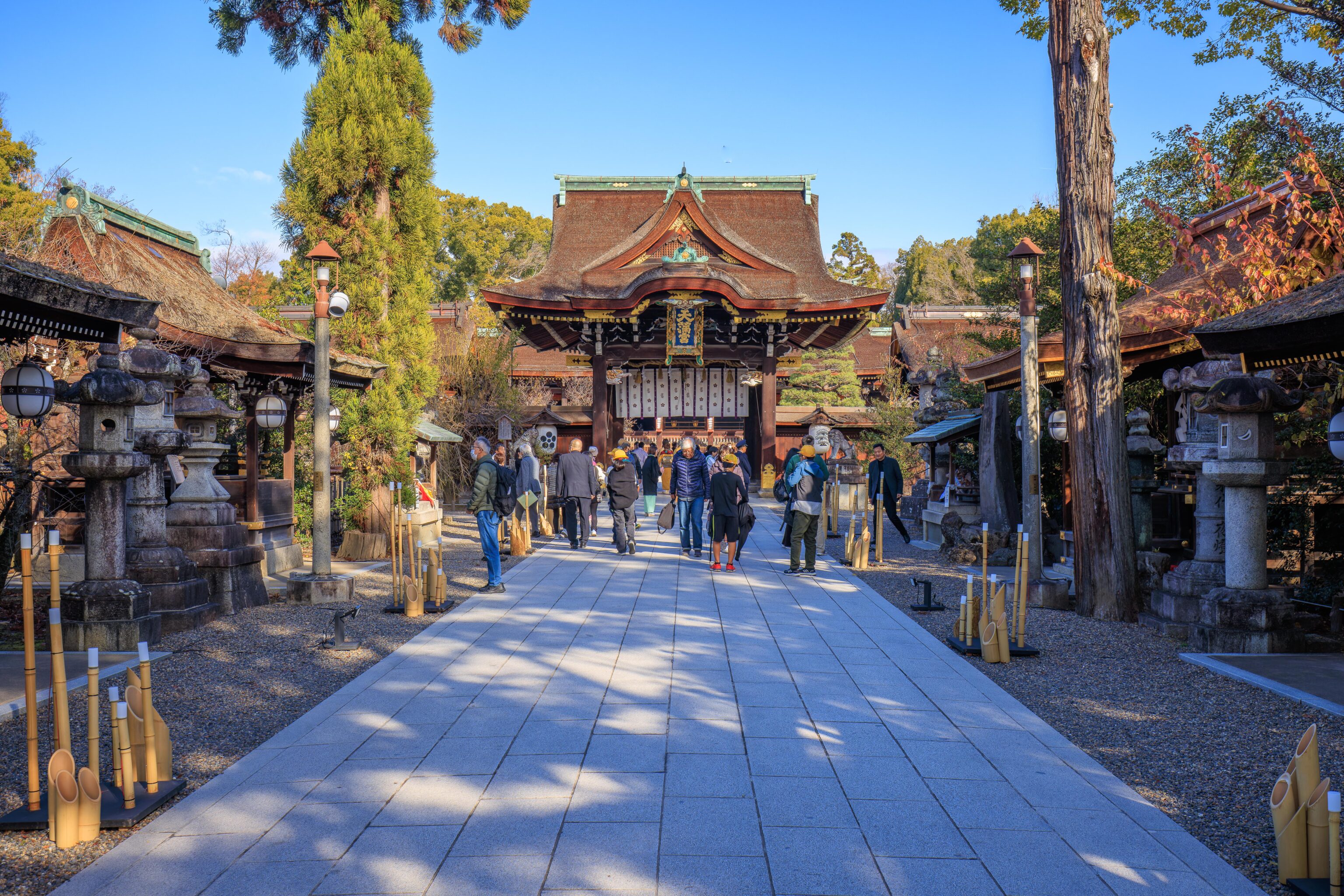
We exited the walled off area via the south and headed to the garden entrance.
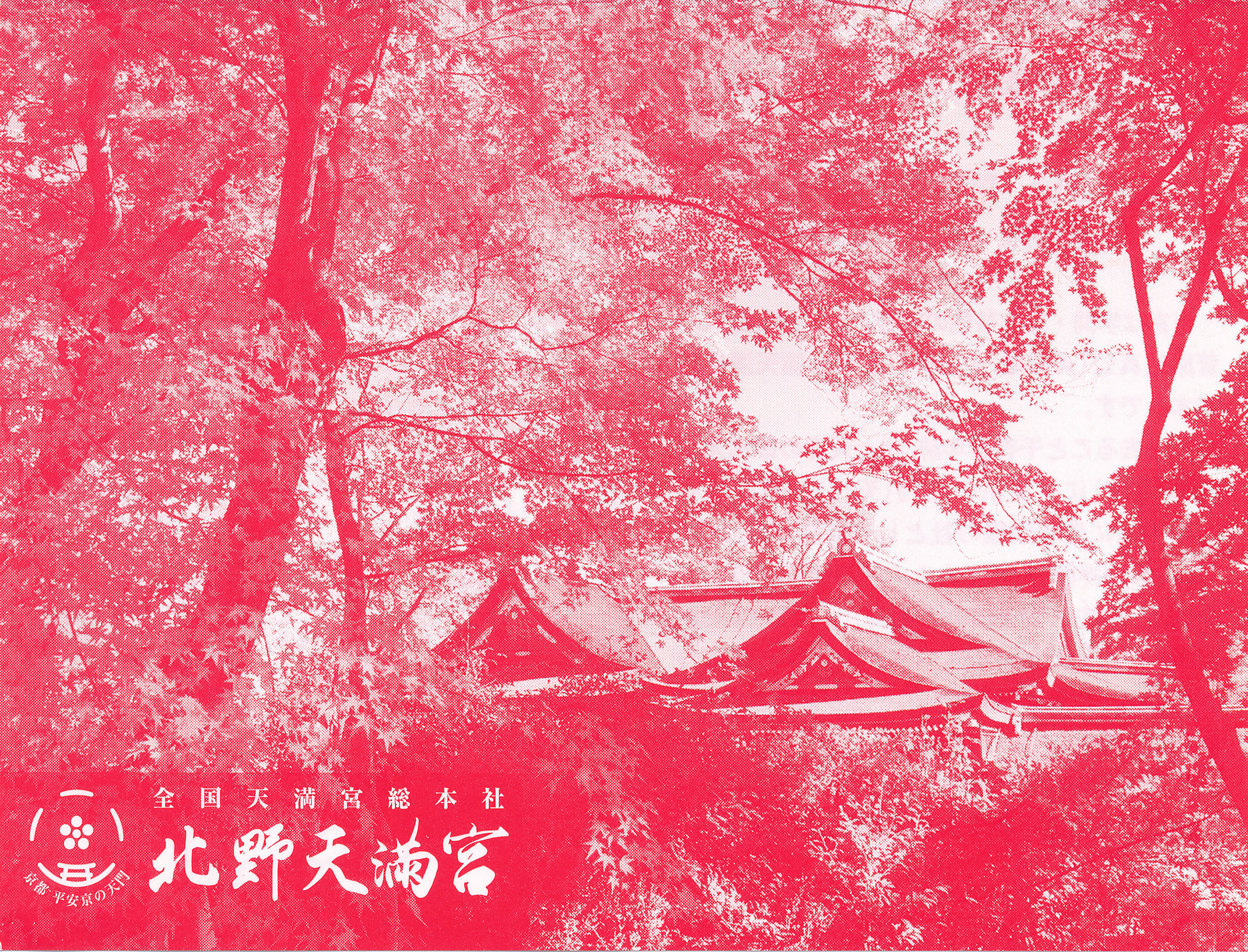
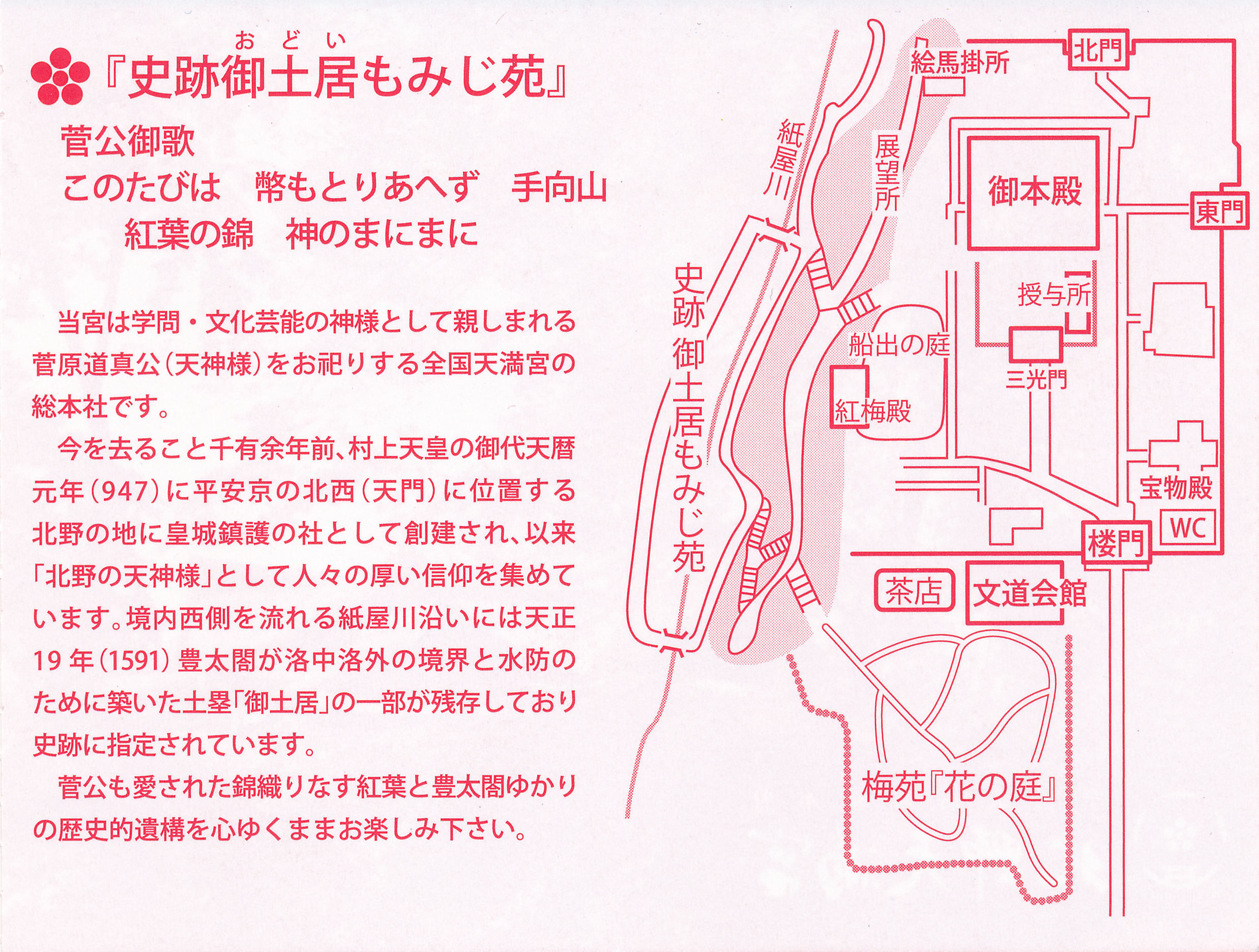
The entrance ticket included a small map and Japanese text on the reverse side. The text reads:
"Historic Site Odoi Momijien" Suga no Mika This time, Motori Ahezu, Mt. Tamukai, the brocade of autumn leaves, the spirit of God. This shrine is the head office of all Tenmangu shrines in Japan and is dedicated to Sugawara no Michizane (Tenjin), who is known as the god of learning, culture, and entertainment. More than a thousand years ago, in the first year of Emperor Murakami's reign (947), it was built in Kitano, northwest of Heiankyo (Tenmon), as a shrine to protect the imperial castle, and has since been known as the "Kitano Tenjin Shrine." It has gained a lot of people's faith. Along the Kamiyagawa River, which flows on the west side of the precincts, a portion of the earthworks known as "Odoi" built by Toyotakaku in 1591 to serve as a border between the inner and outer reaches of Kaku and for flood protection still remains, and is designated as a historic site. Please enjoy to your heart's content the autumn leaves created by brocade, which was loved by Lord Suga, and the historical remains related to Toyotakaku.
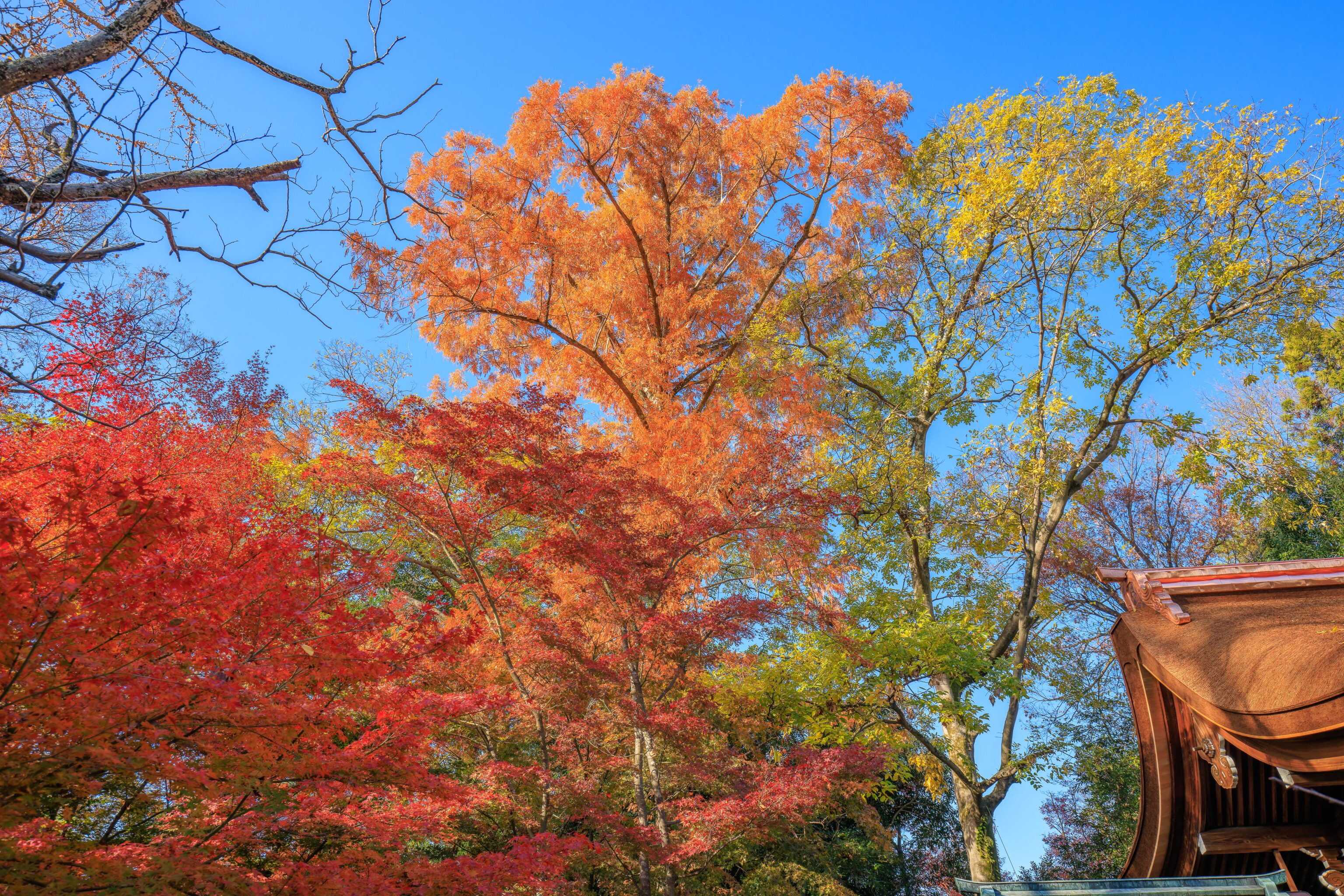
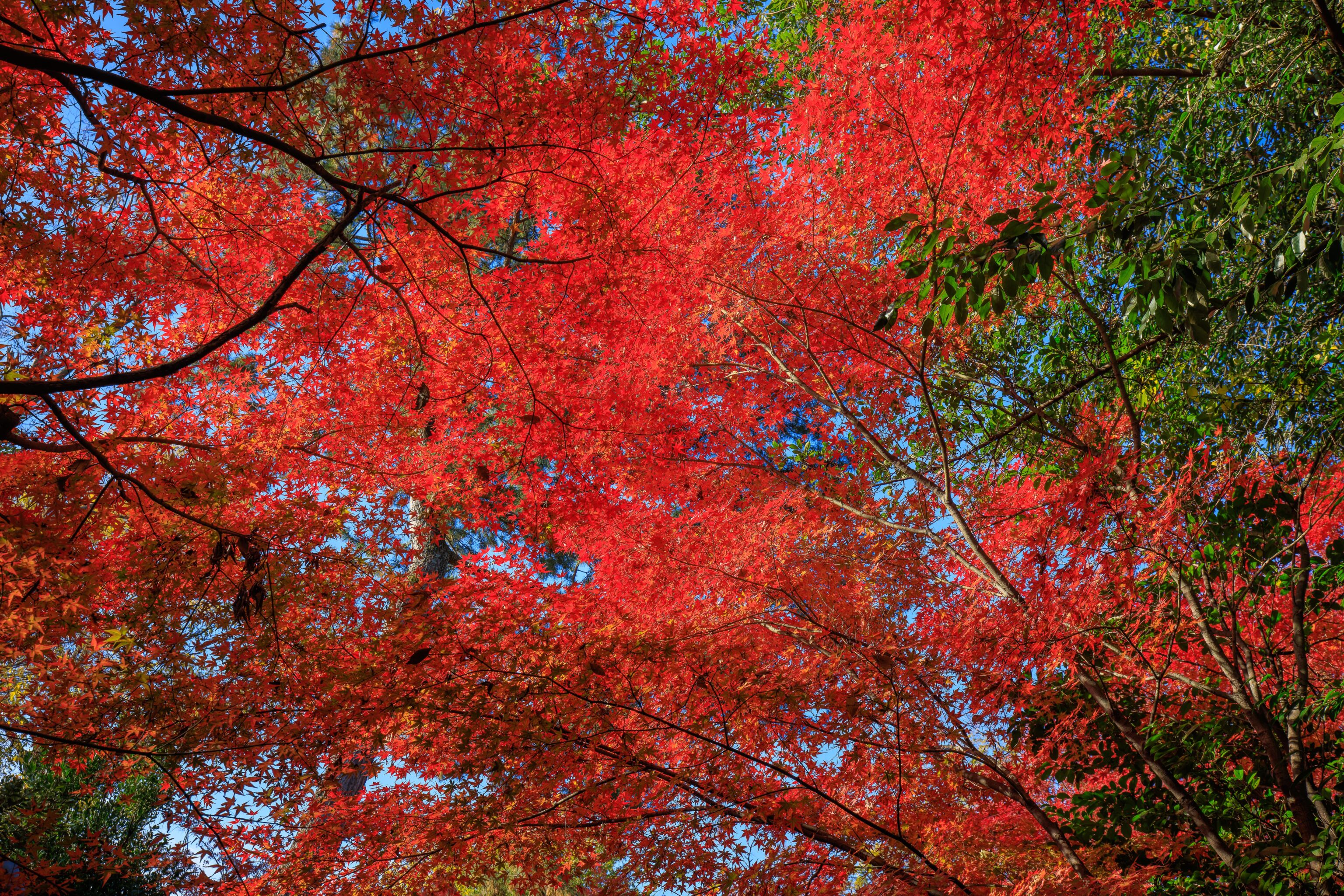
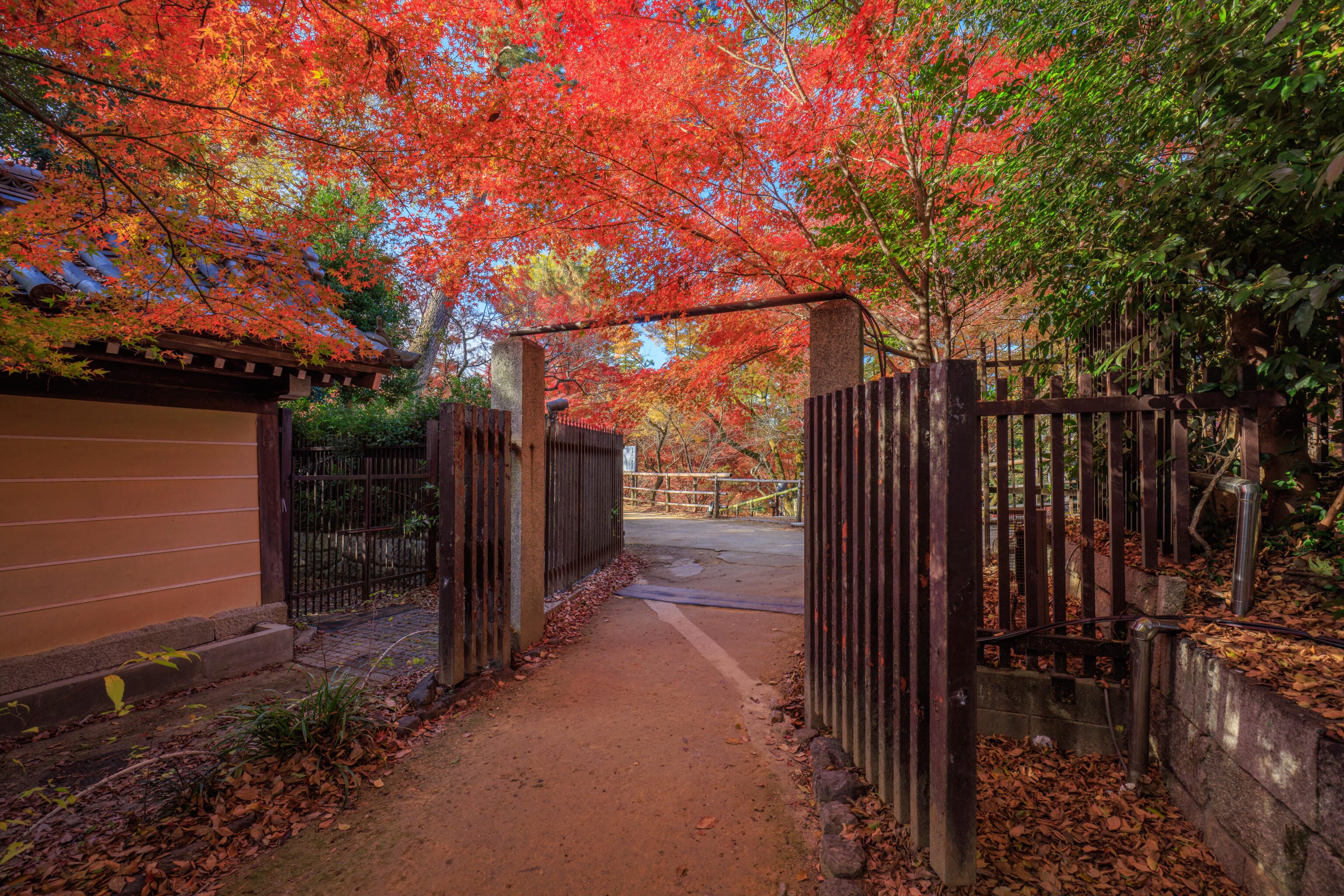
We saw some nice colors as we entered into the garden.
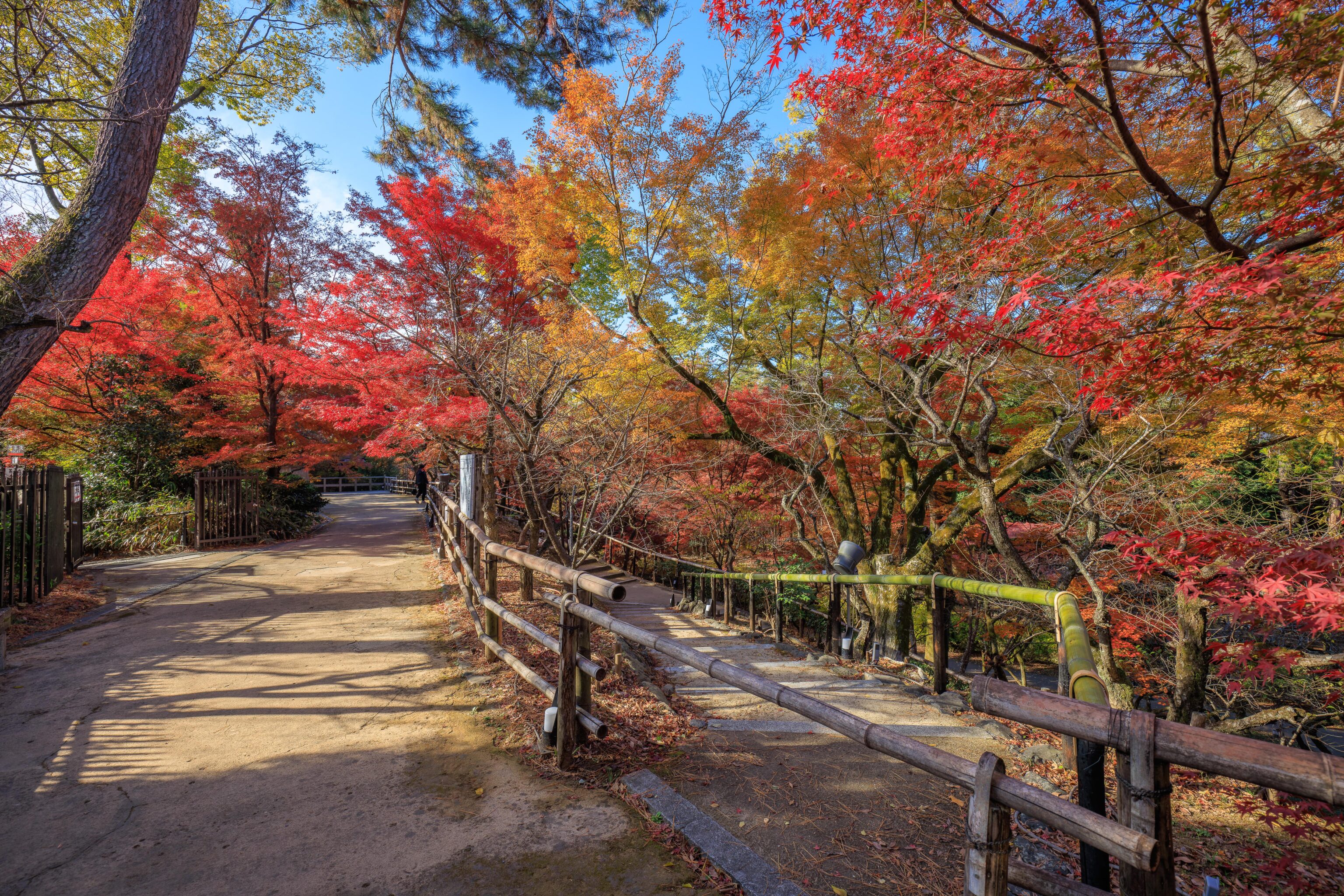
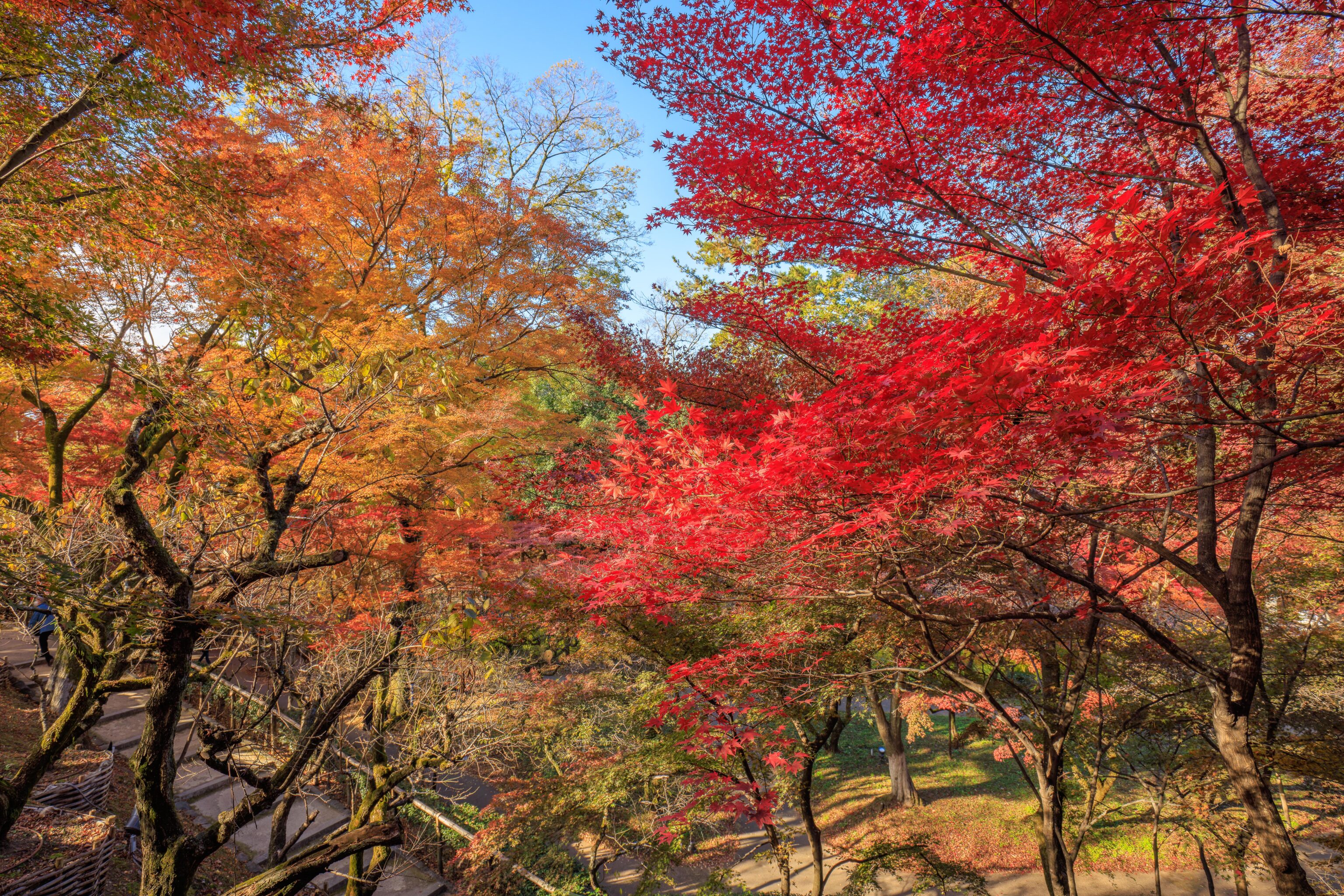
It looked like we could go left, right, or down. We decided to go to the right, or north.
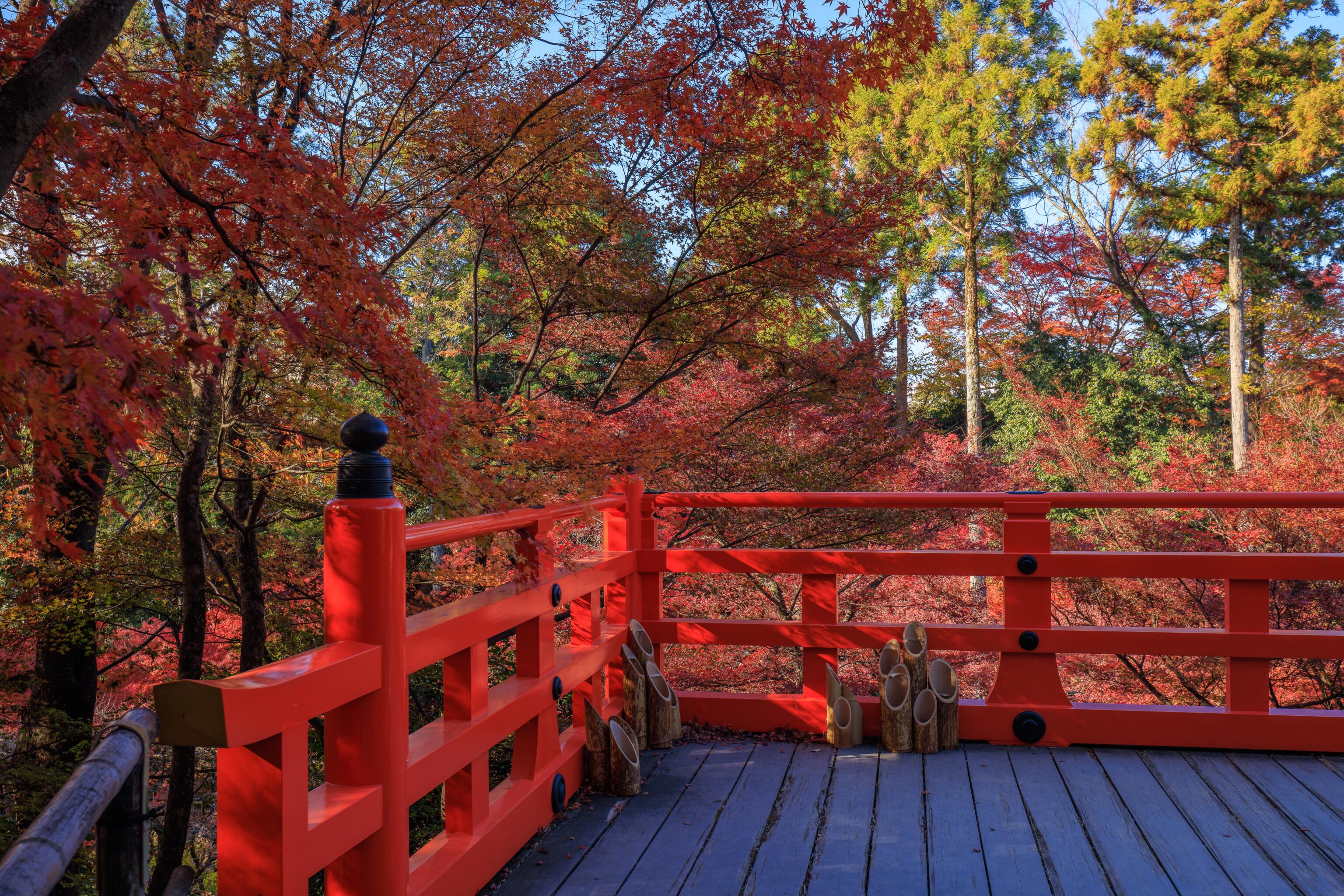
We soon ended up on this wooden deck.
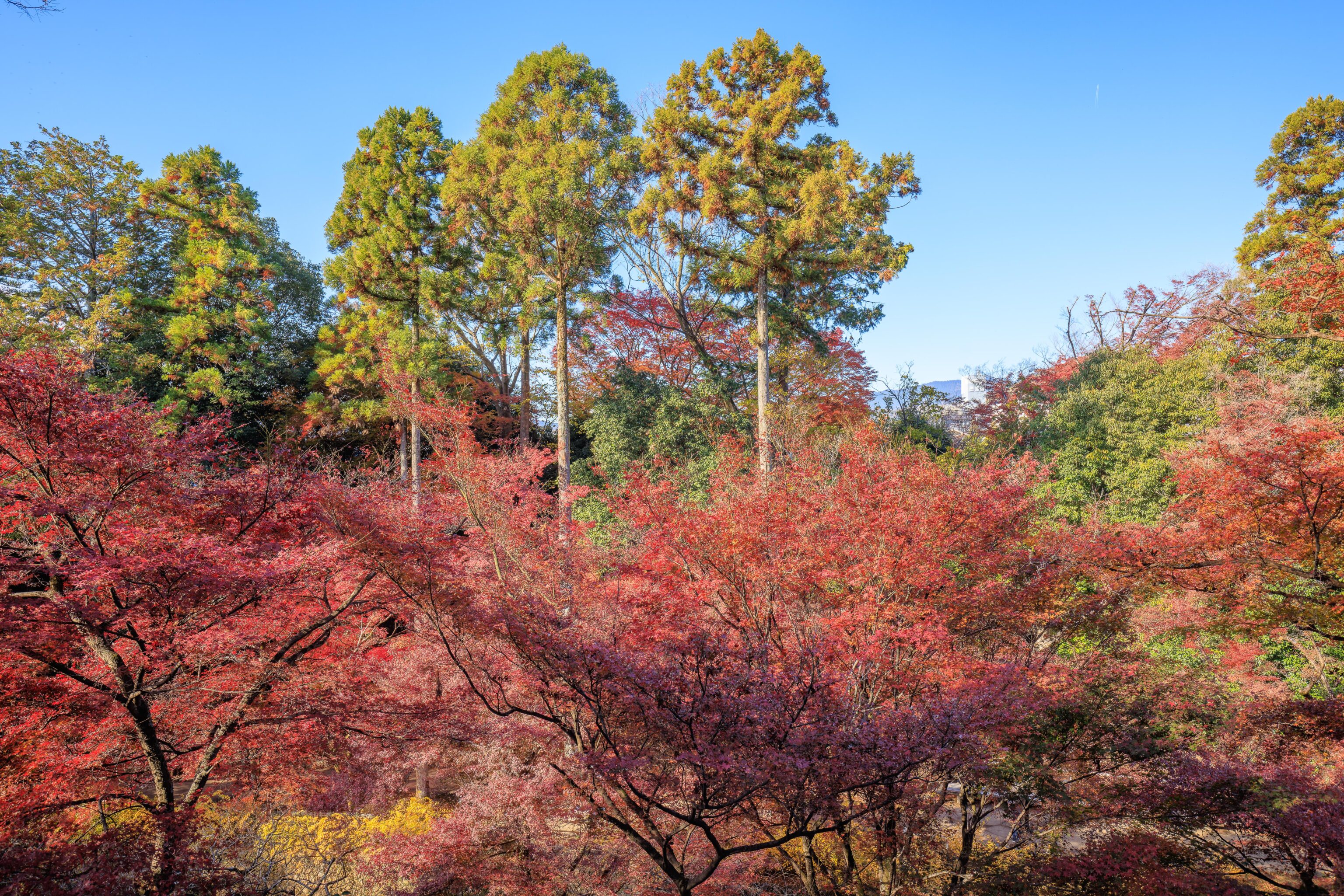
We could see a bit of the path below through the foliage. We could also see a few buildings in the distance but mostly we saw trees.
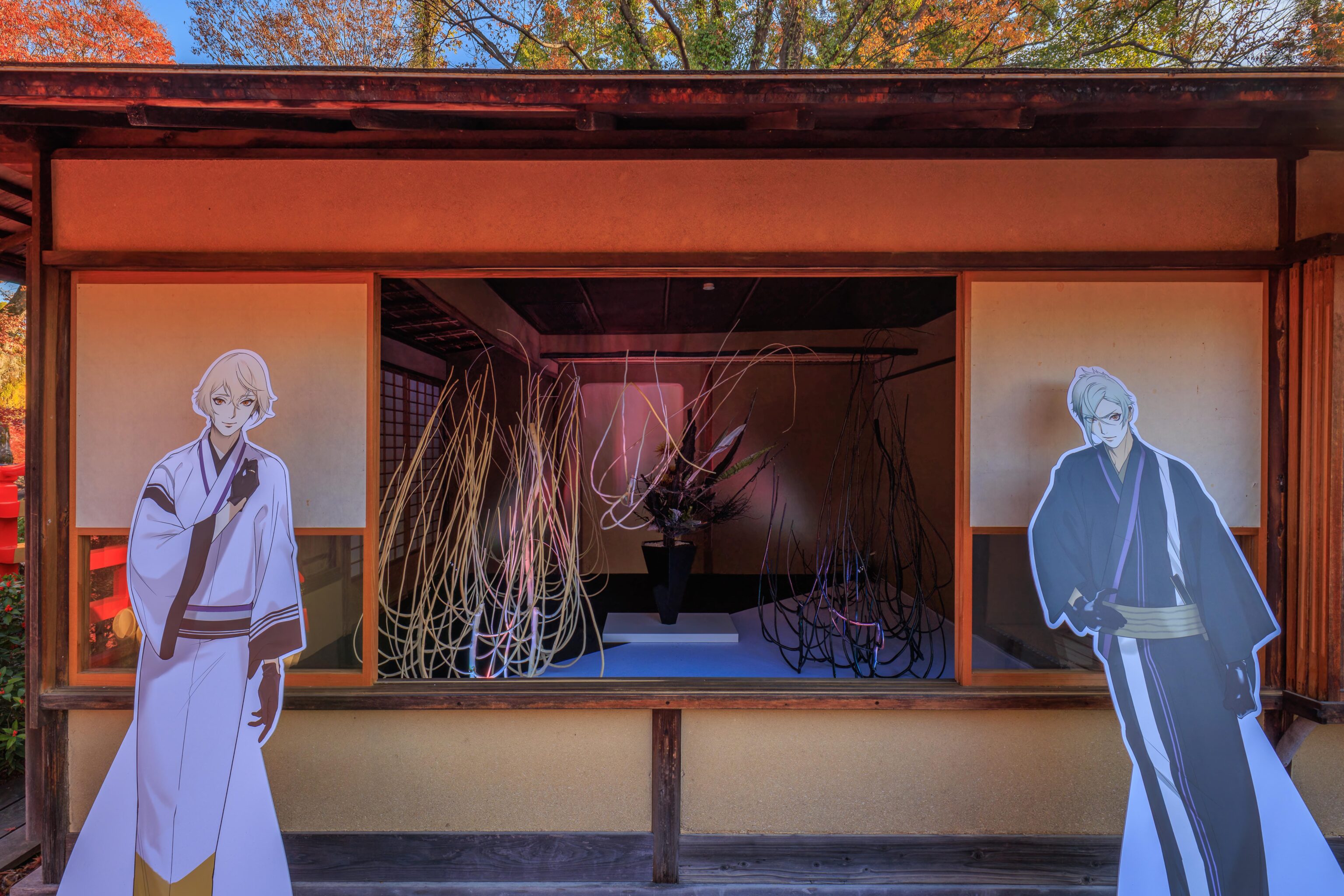
There was a display set up for Kyoto Nippon Festival. The festival seems to include promotions for a game, Touken Ranbu.
The text translates to:
KYOTO NIPPON FESTIVAL2023 will be held for the first time in 4 years! This event will be sent from Kyoto to the world as an event that combines Japanese traditional culture and entertainment. This year's theme is Swords dyed in autumn leaves. A collaboration with #ToukenRanbu ONLINE has also been decided to commemorate the exhibition project of the important cultural property "Tachi Onikirimaru (Higekiri)".
As an international visitor, it didn’t seem very compelling.
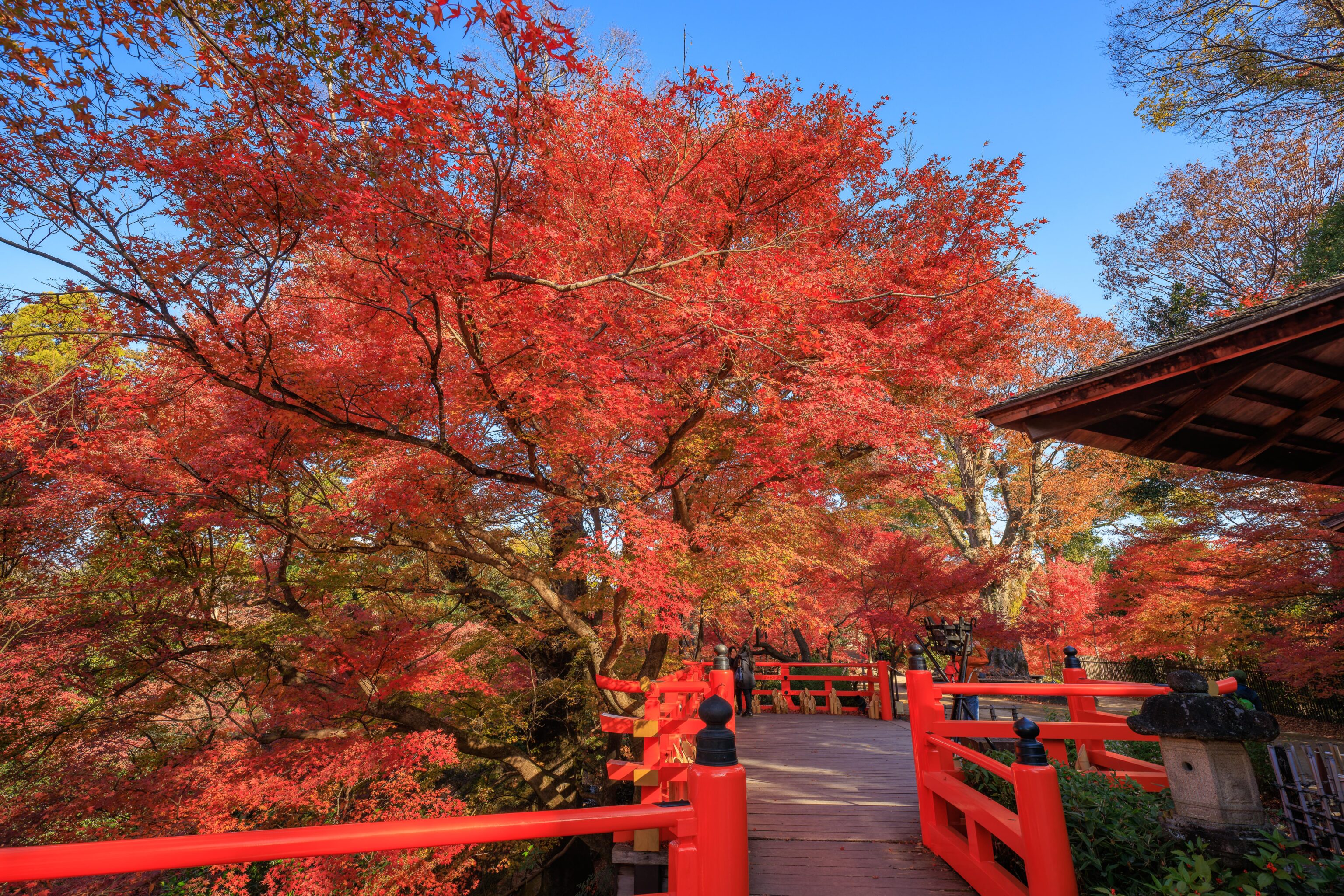
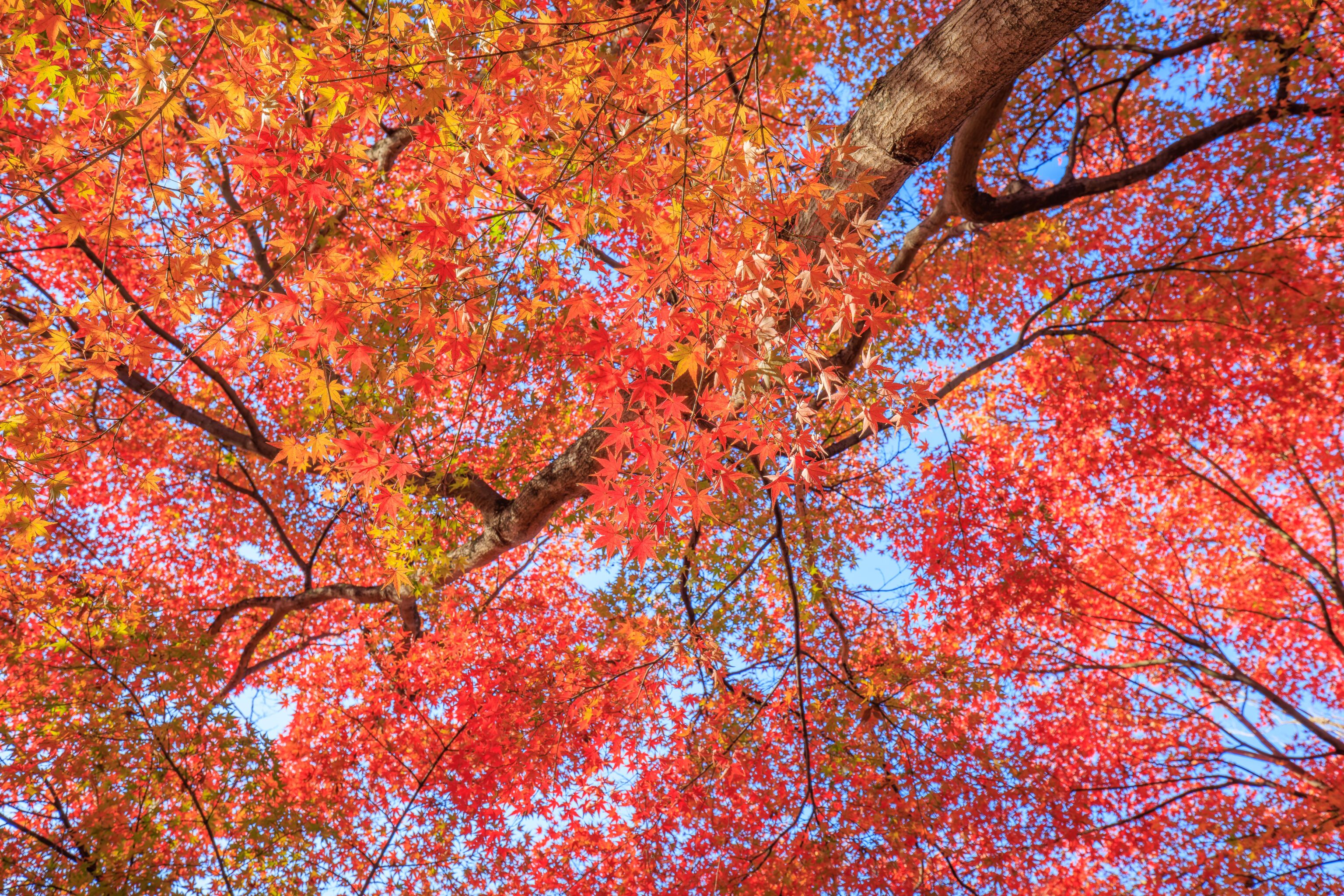
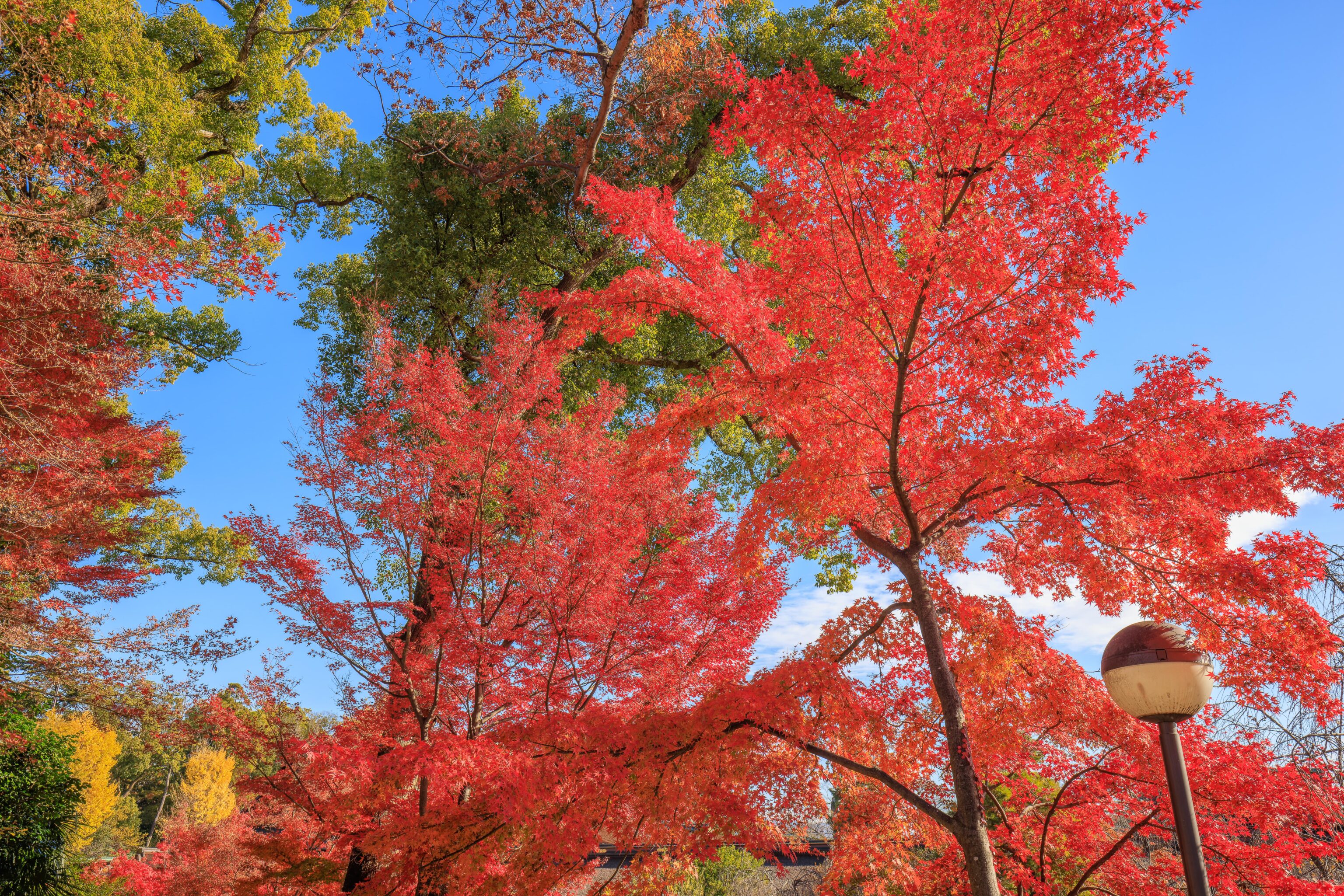
We continued walking on the path, passing by some more pretty fall colors.
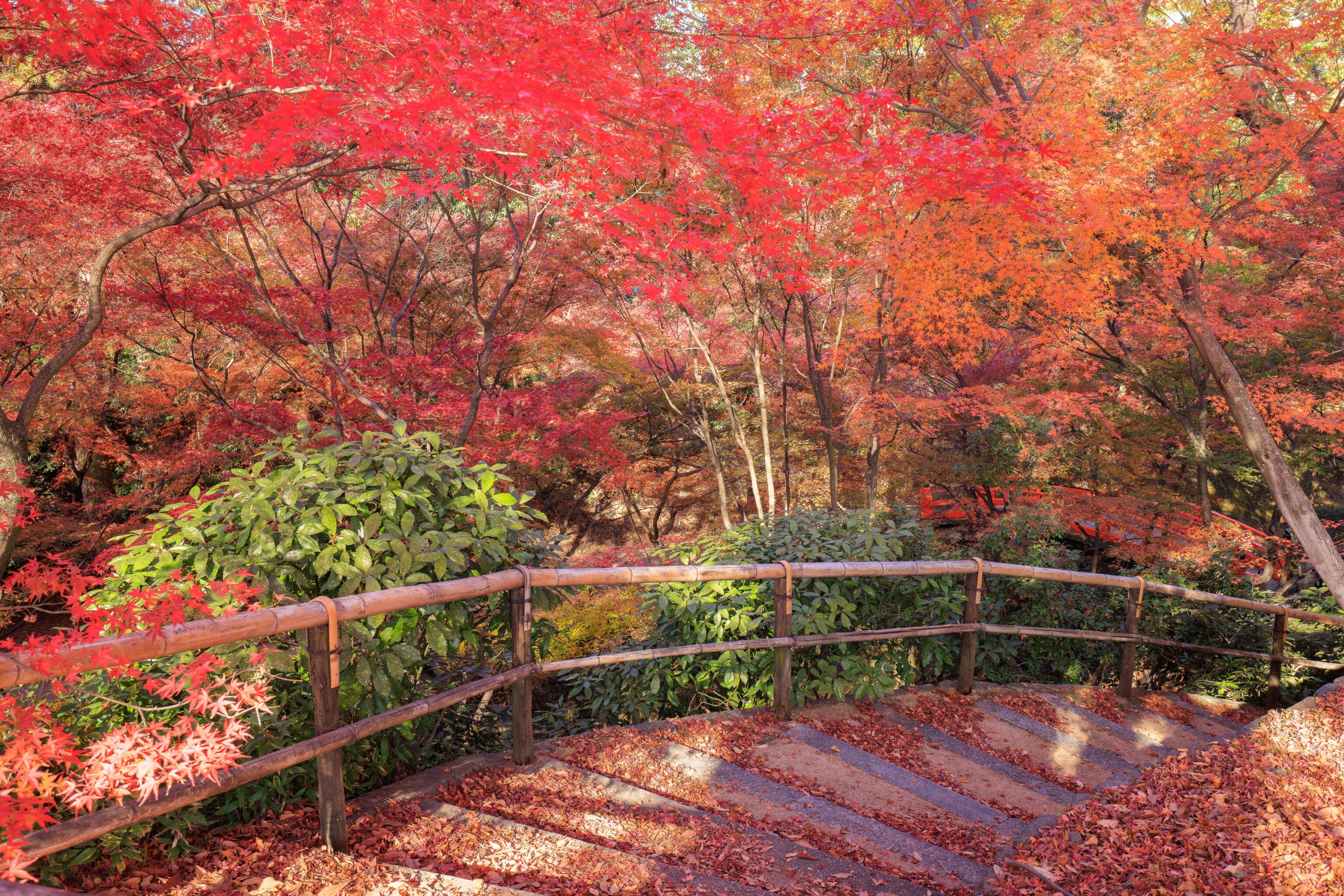
We passed by another path leading down.
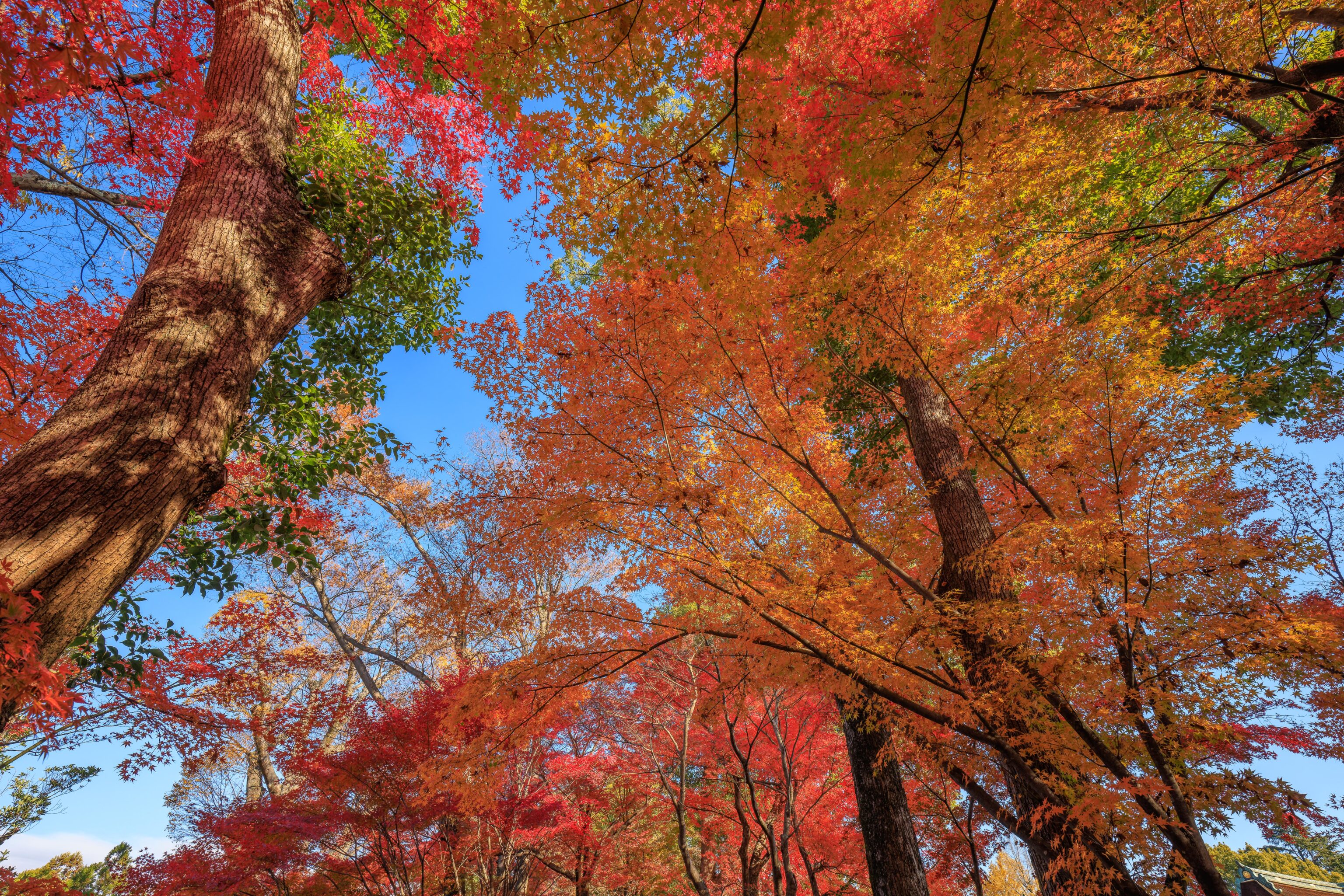
We continued walking to the north.
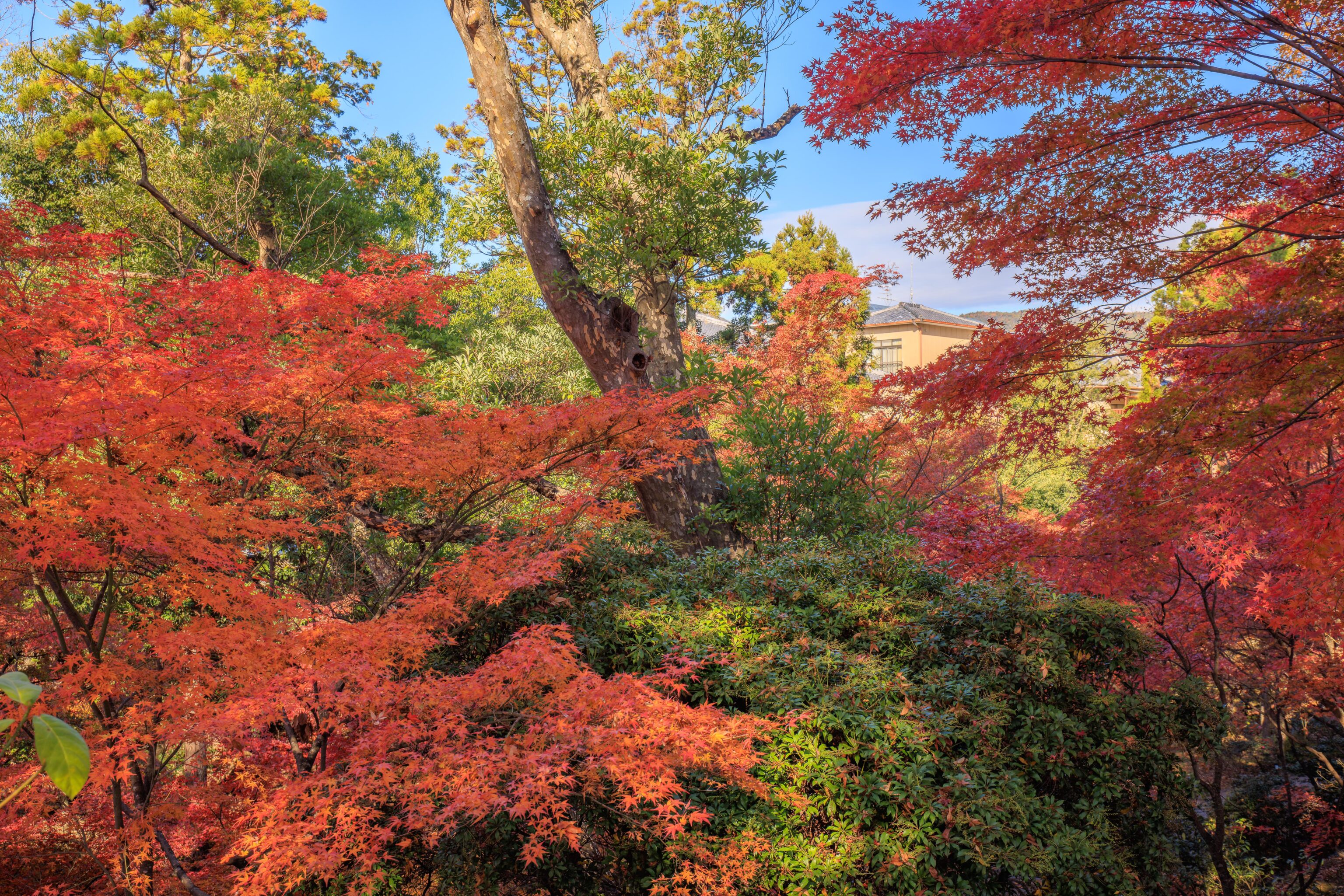
Some houses were visible through the foliage to the west.
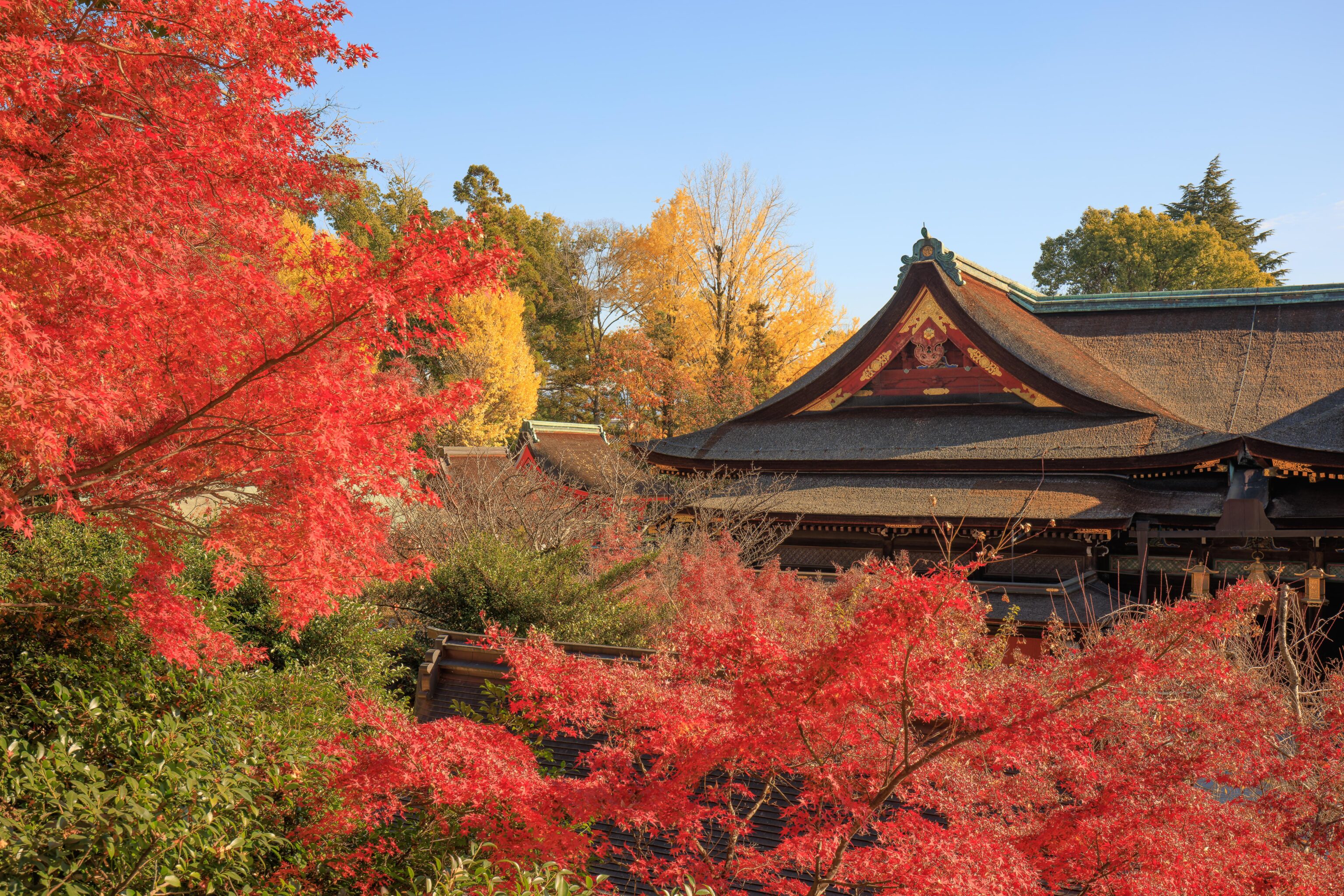
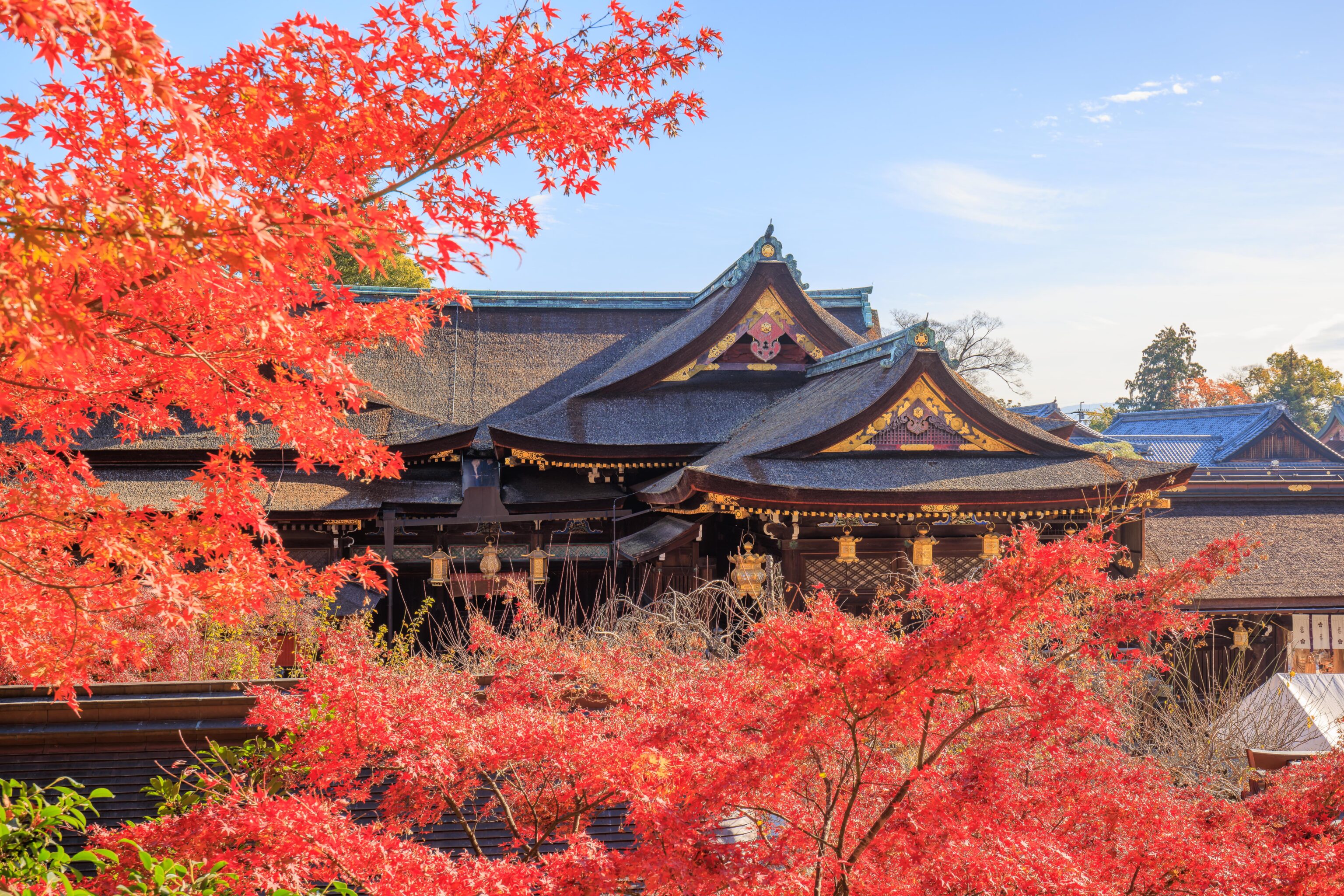
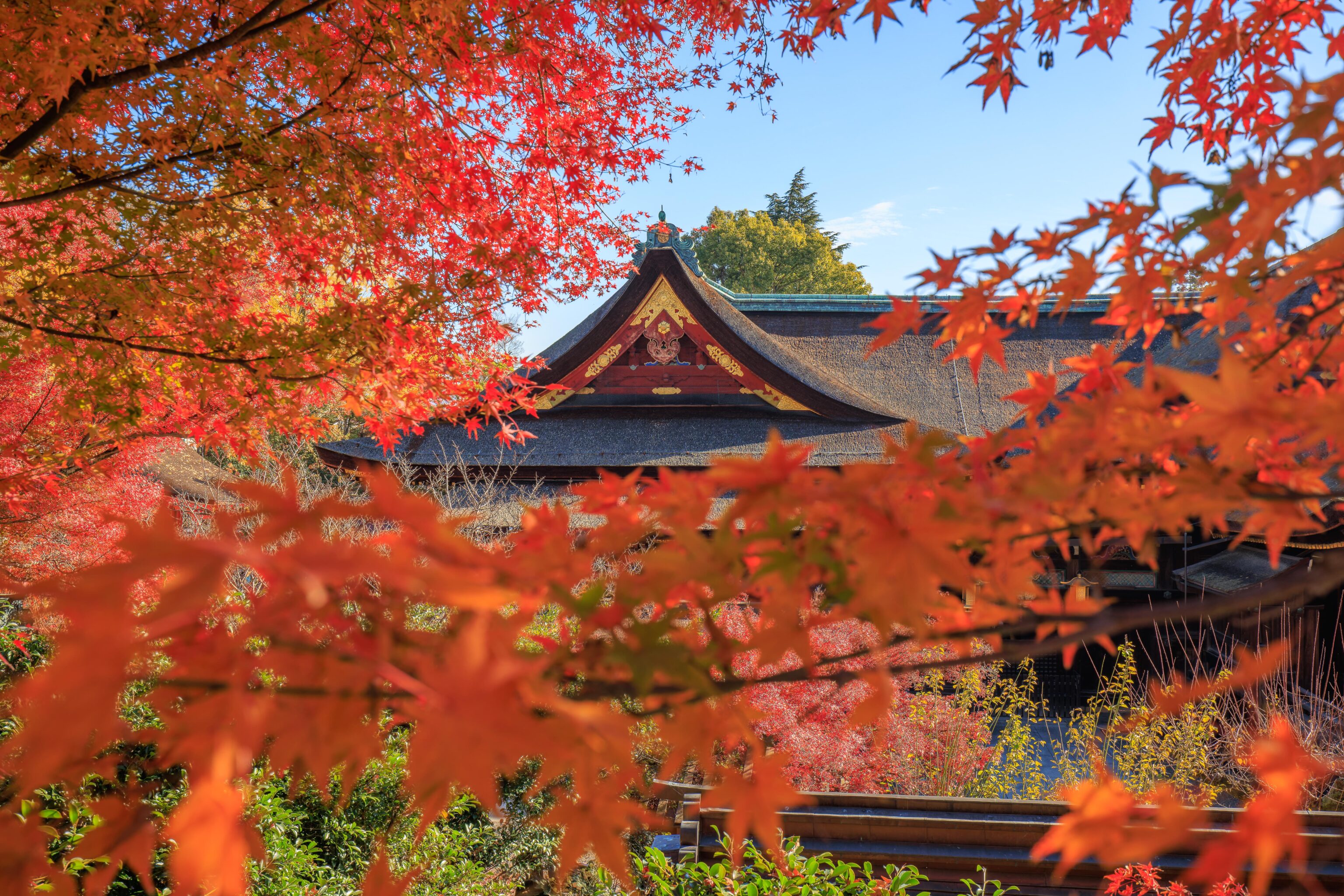
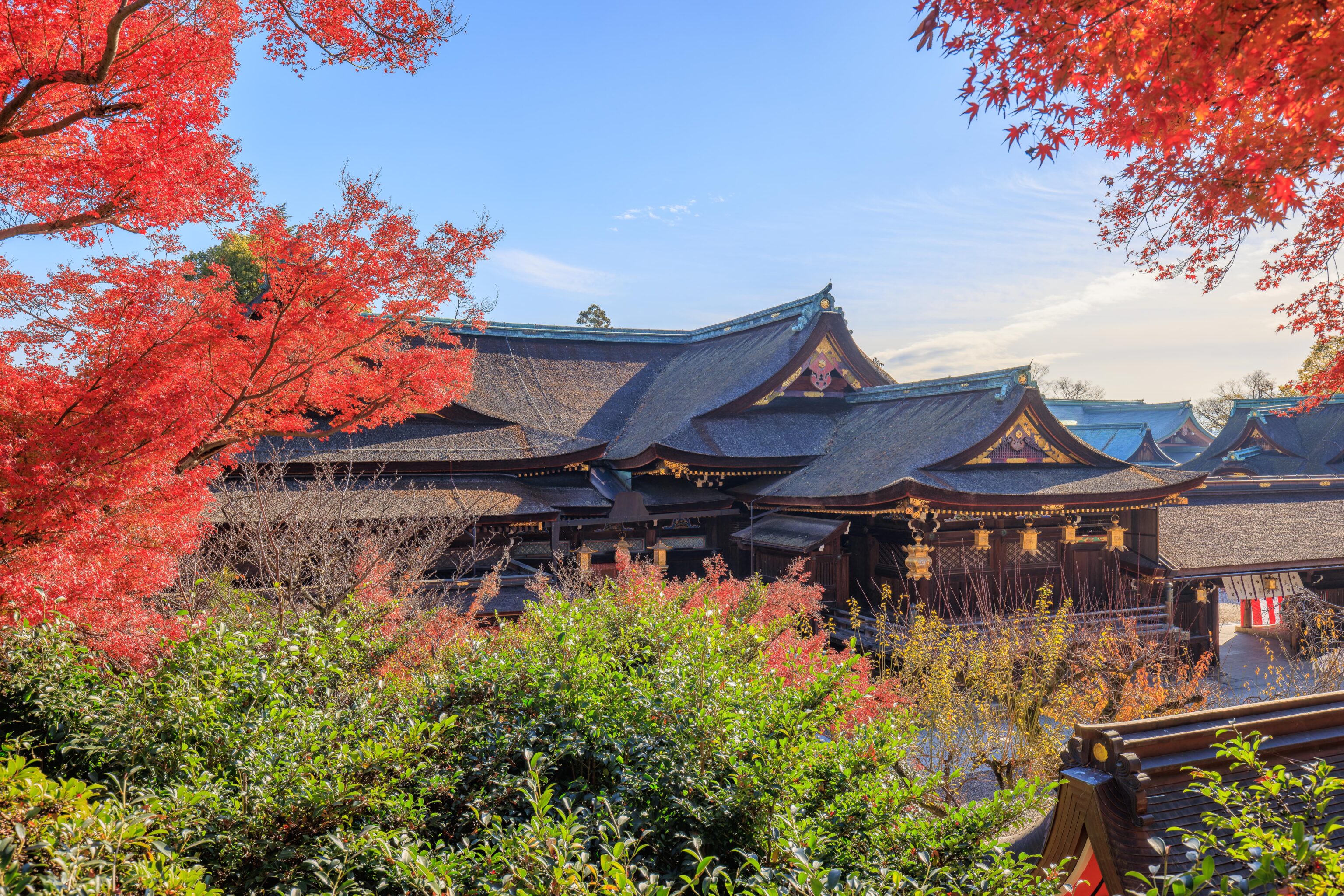
To the east, we could see the large main shrine building. Sometimes, we saw it clearly through gaps in the leaves. There is a small entrance into the shrine visible from here. That may be where we entered the walled off shrine area earlier.
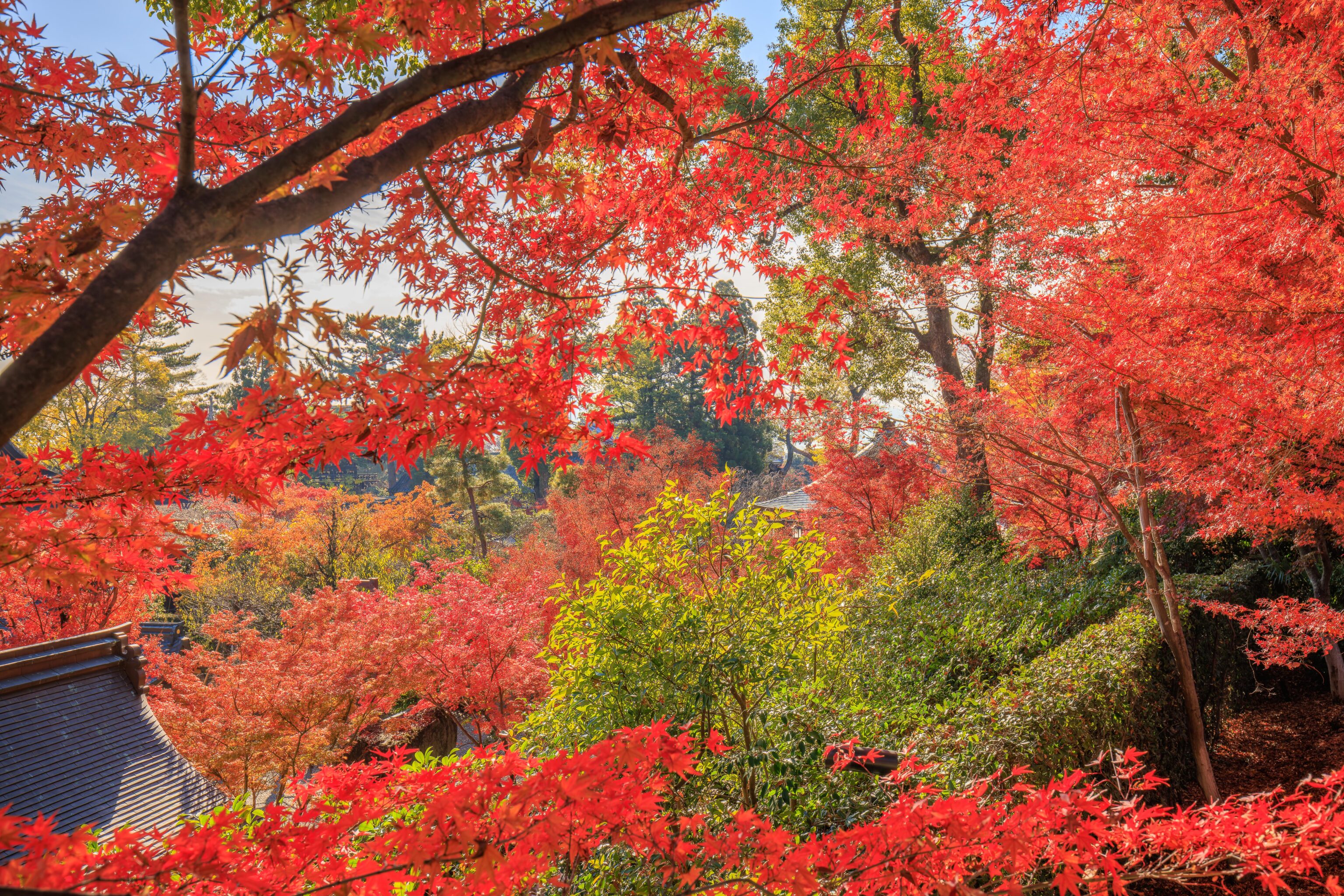
A mostly obscured view here!
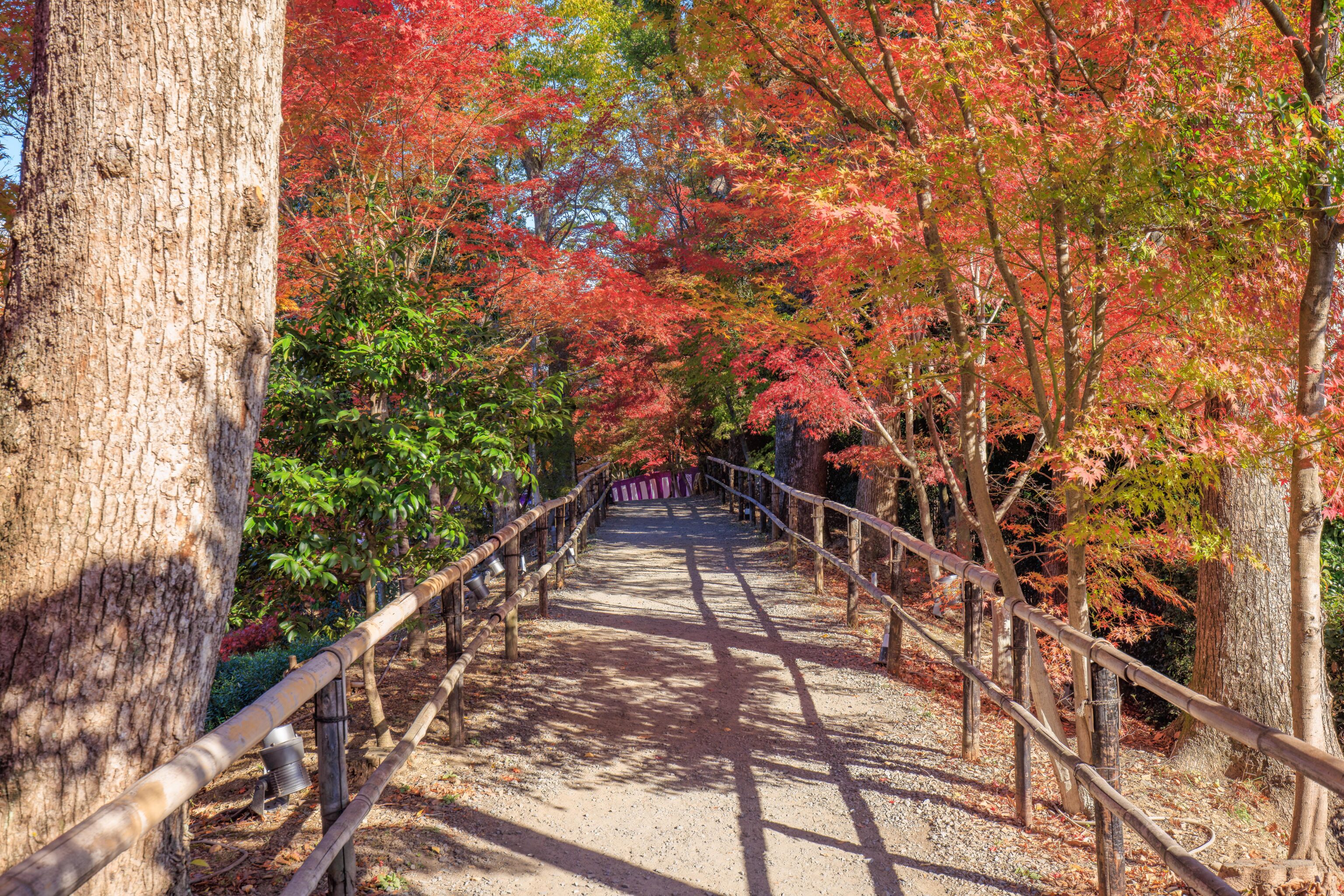
We continued on to the north where the path seemed to curve and descend up ahead.
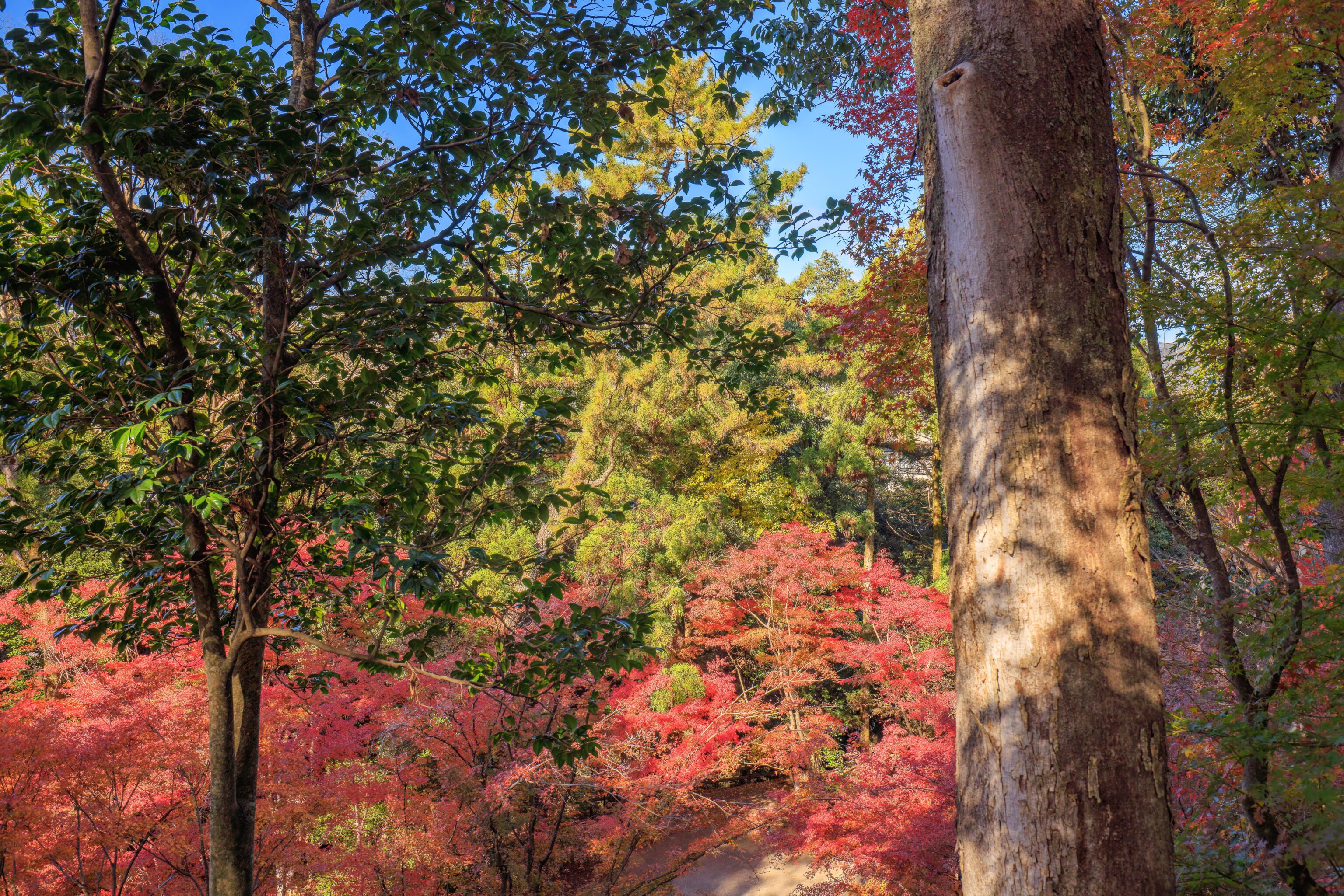
Looking to the left, we could see lots of foliage as well as a path below and a tiny bit of the houses to the west.
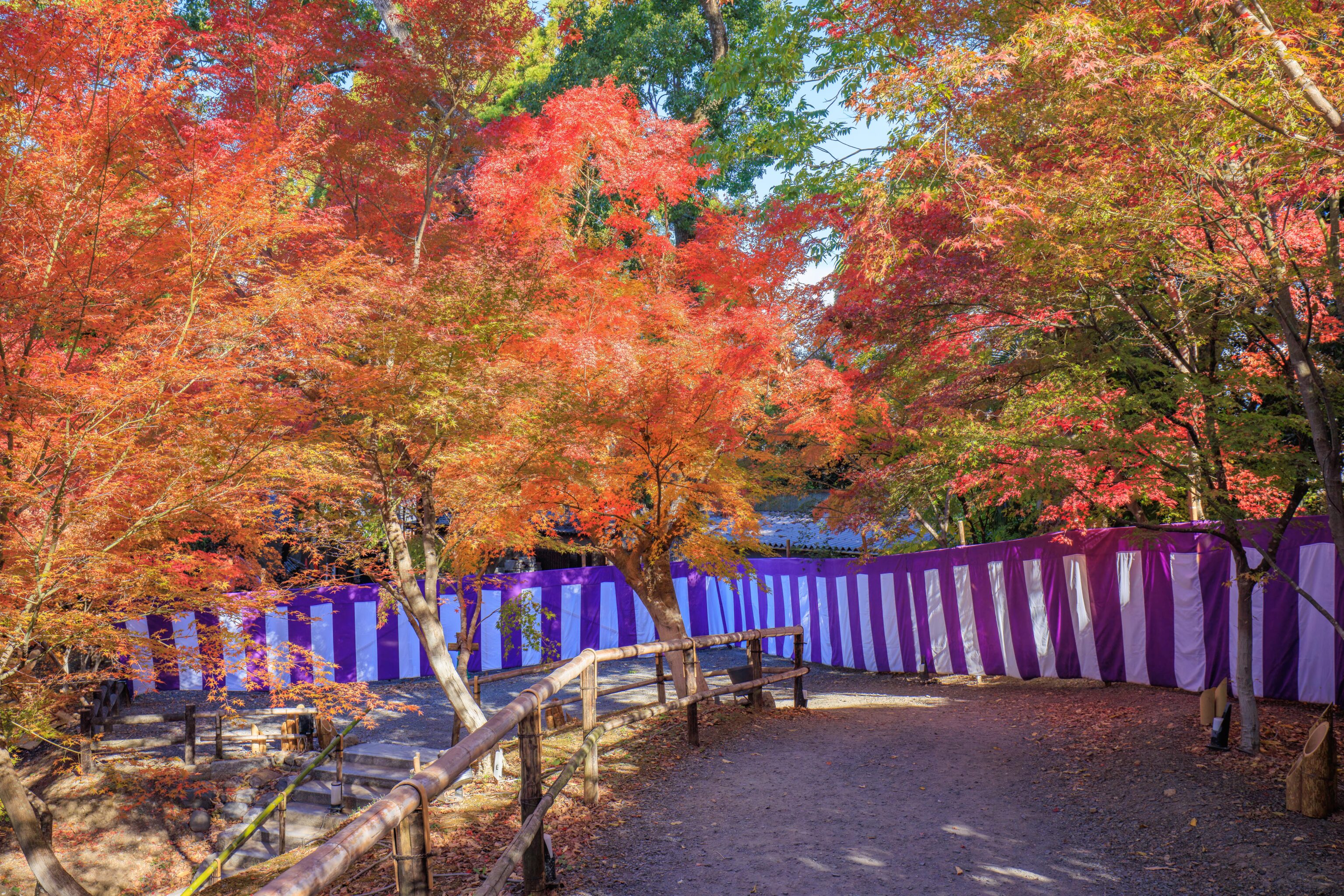
We continued along the path as it curved and descended.
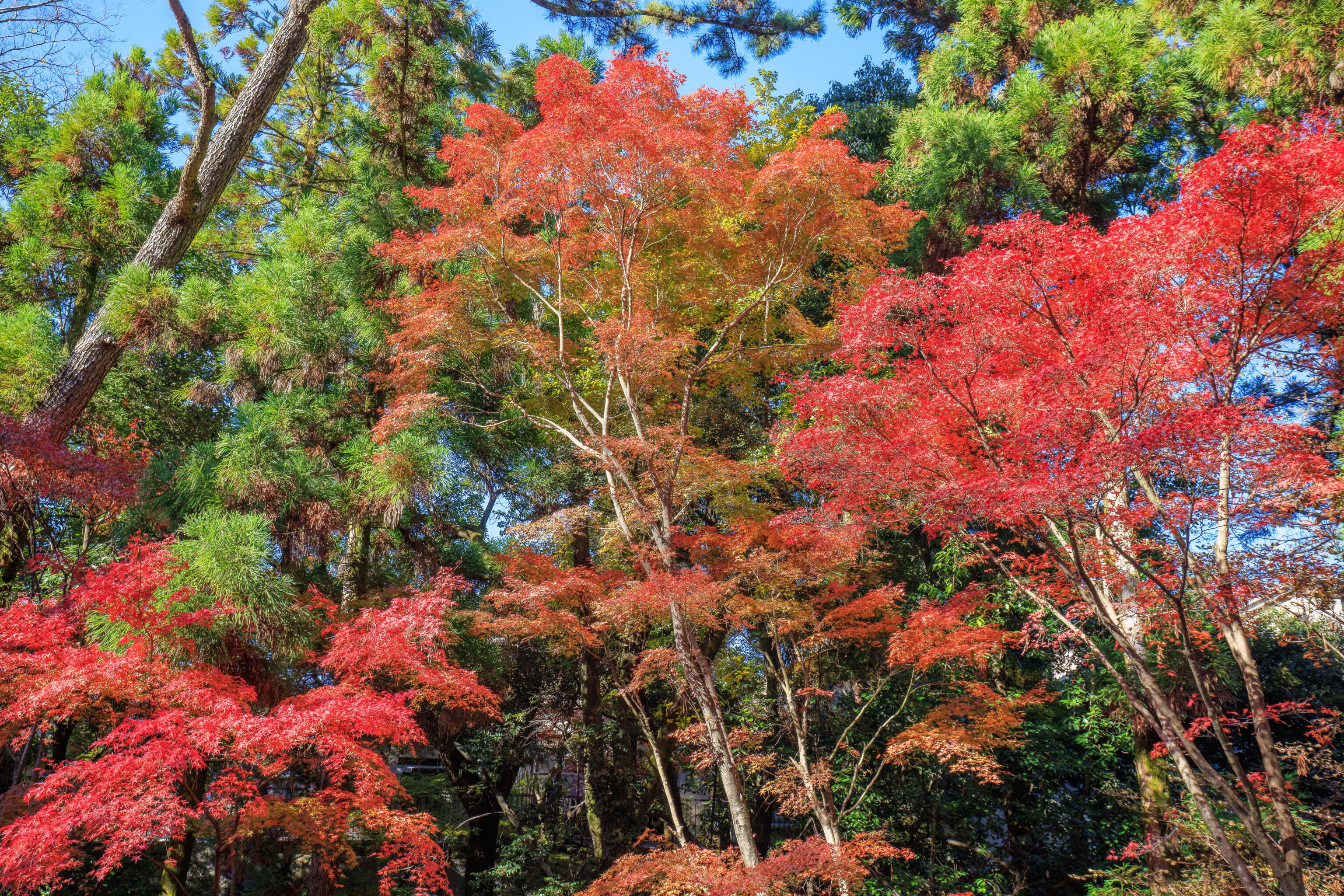
The tall maple seems to have recently started to change color, while the ones around it are at, or perhaps a bit past, peak.
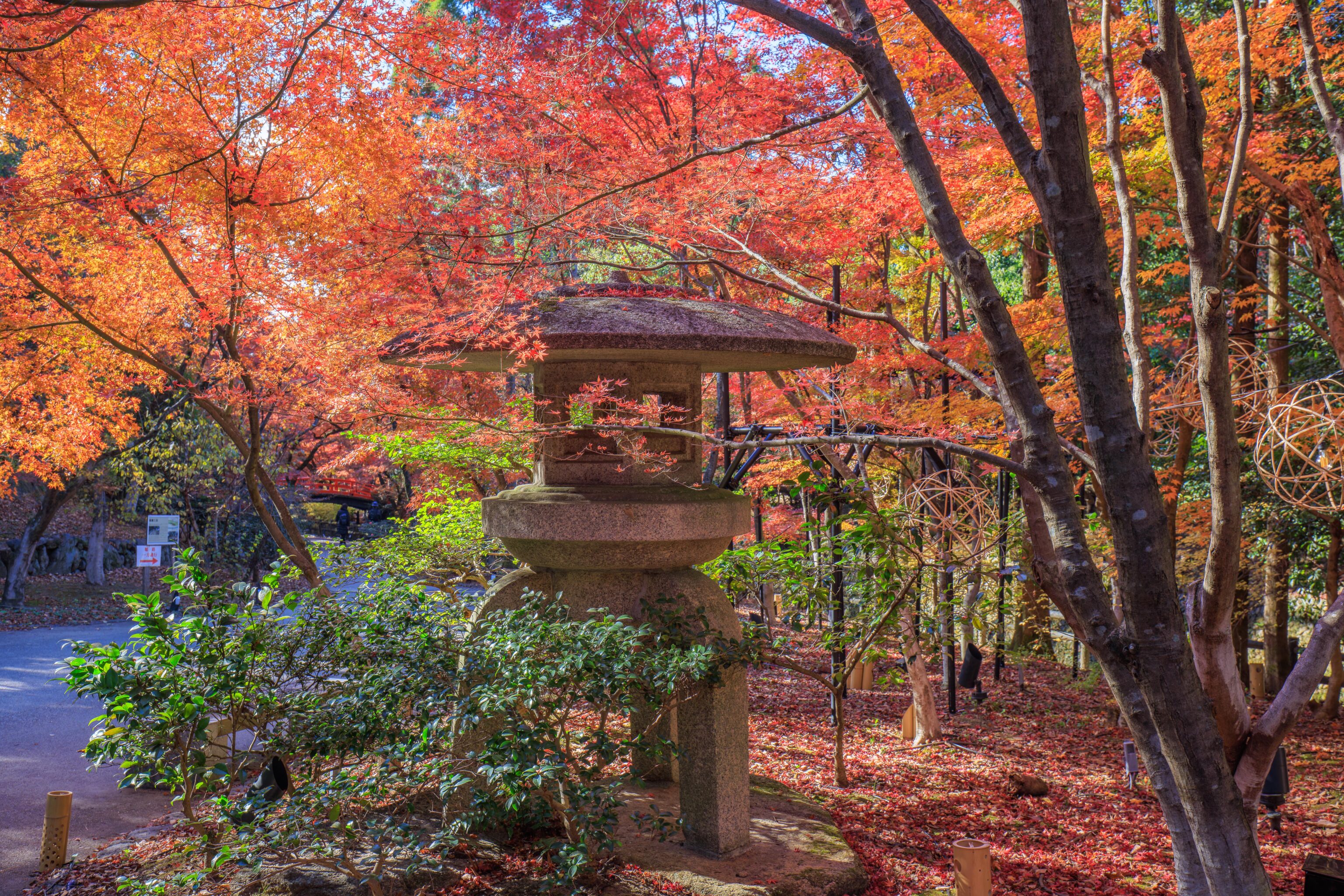
After reaching what can be best described as the valley floor, we passed by this stone lantern. There were some black metal structures set up around it that seemed to be supporting wooden spheres. Presumably, this is for the evening illumination event?
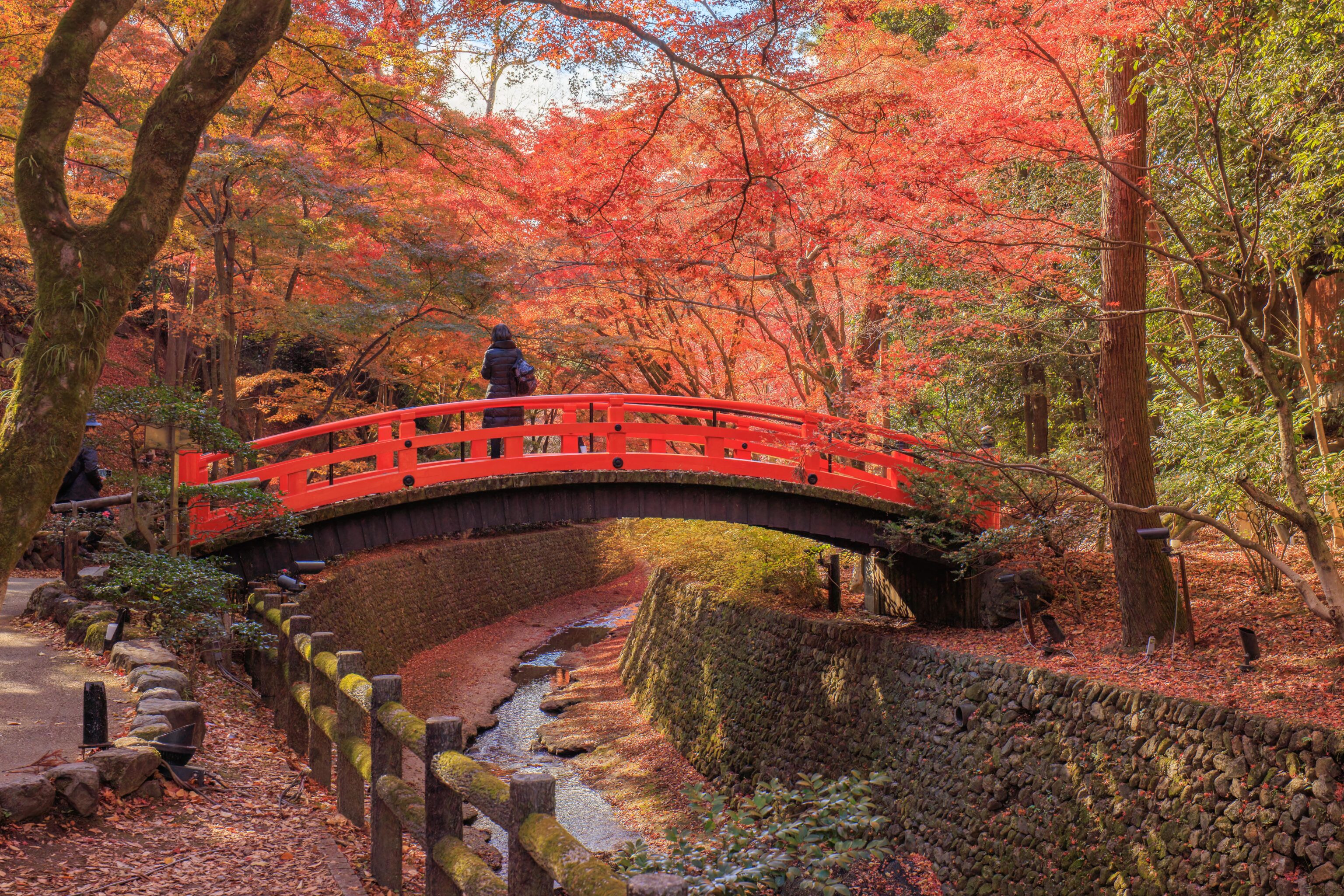
We continued walking to the south along the path which ran parallel to a small stream. We reached a nice looking bridge, a popular photo spot for the few other visitors that we saw.
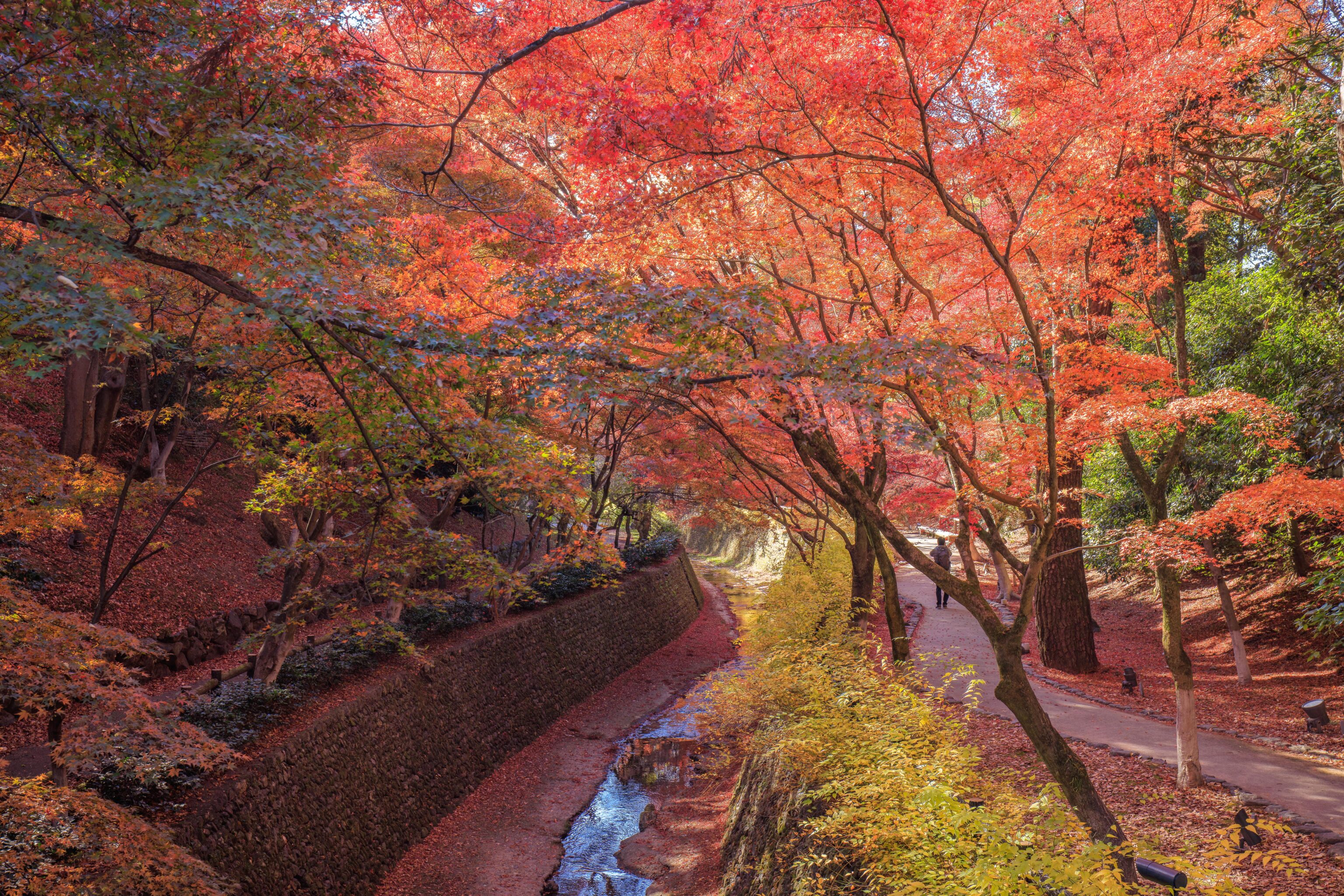
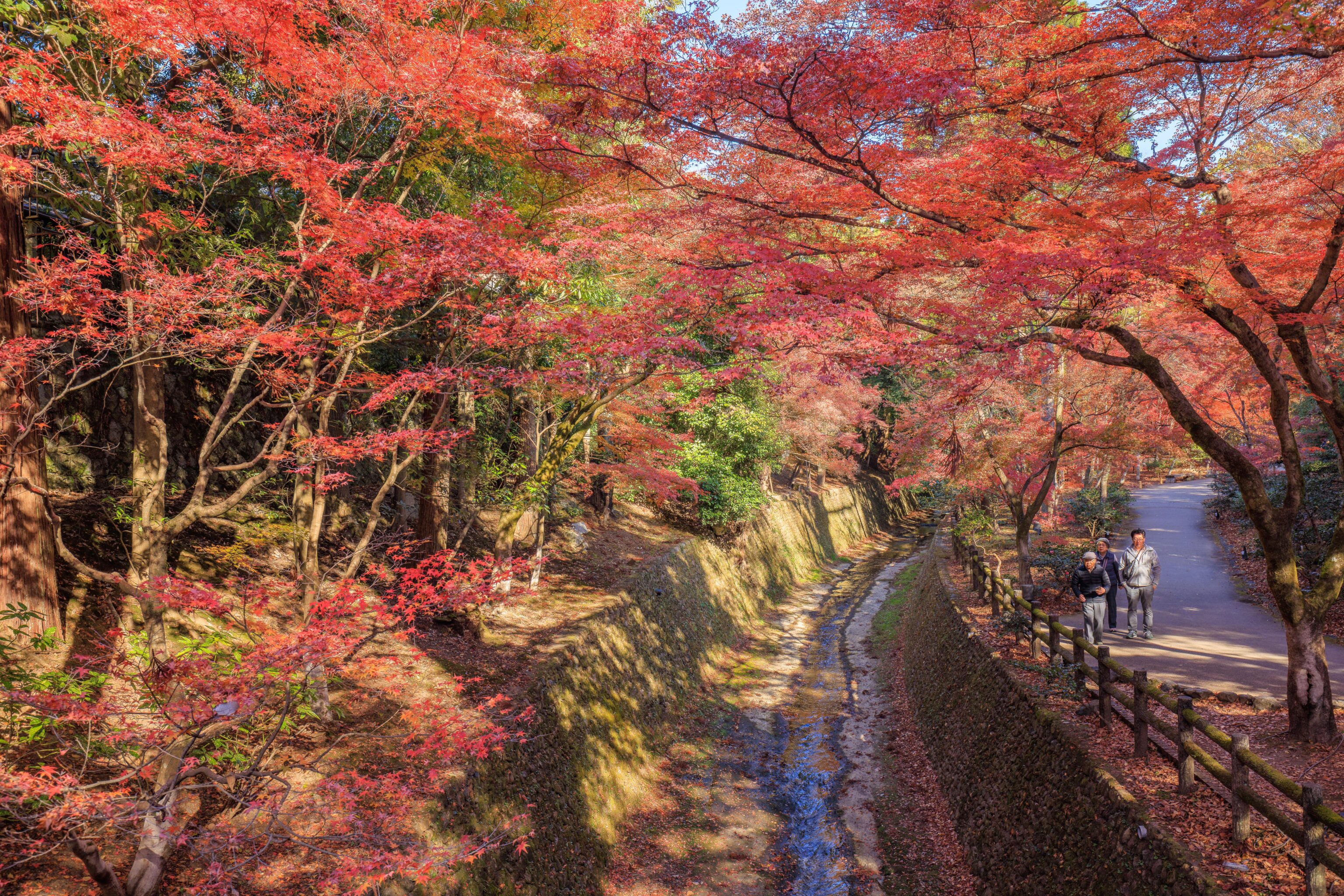
The view up and down the stream from the middle of the bridge, more or less.
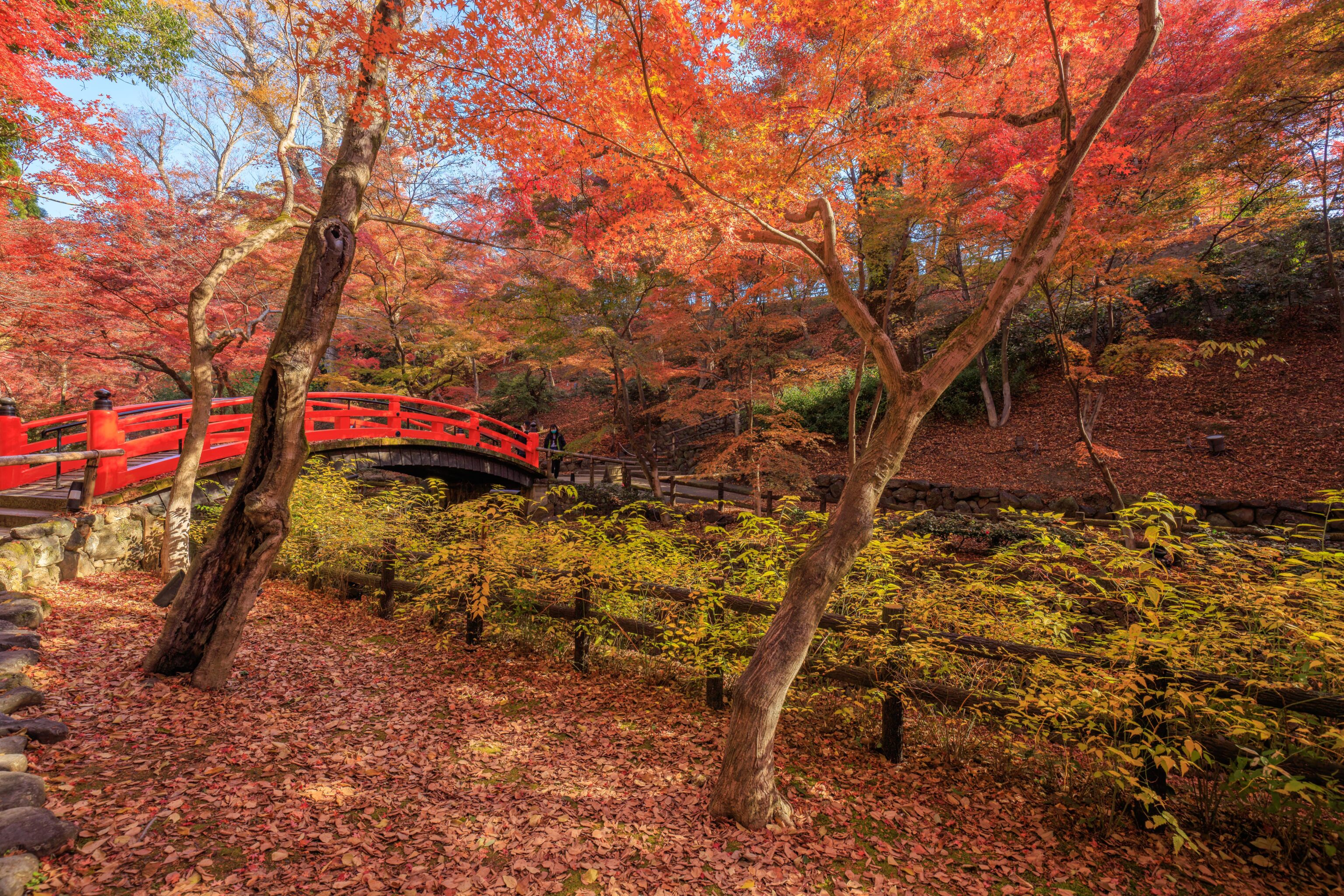
The bridge from the opposite, or west, side after crossing.
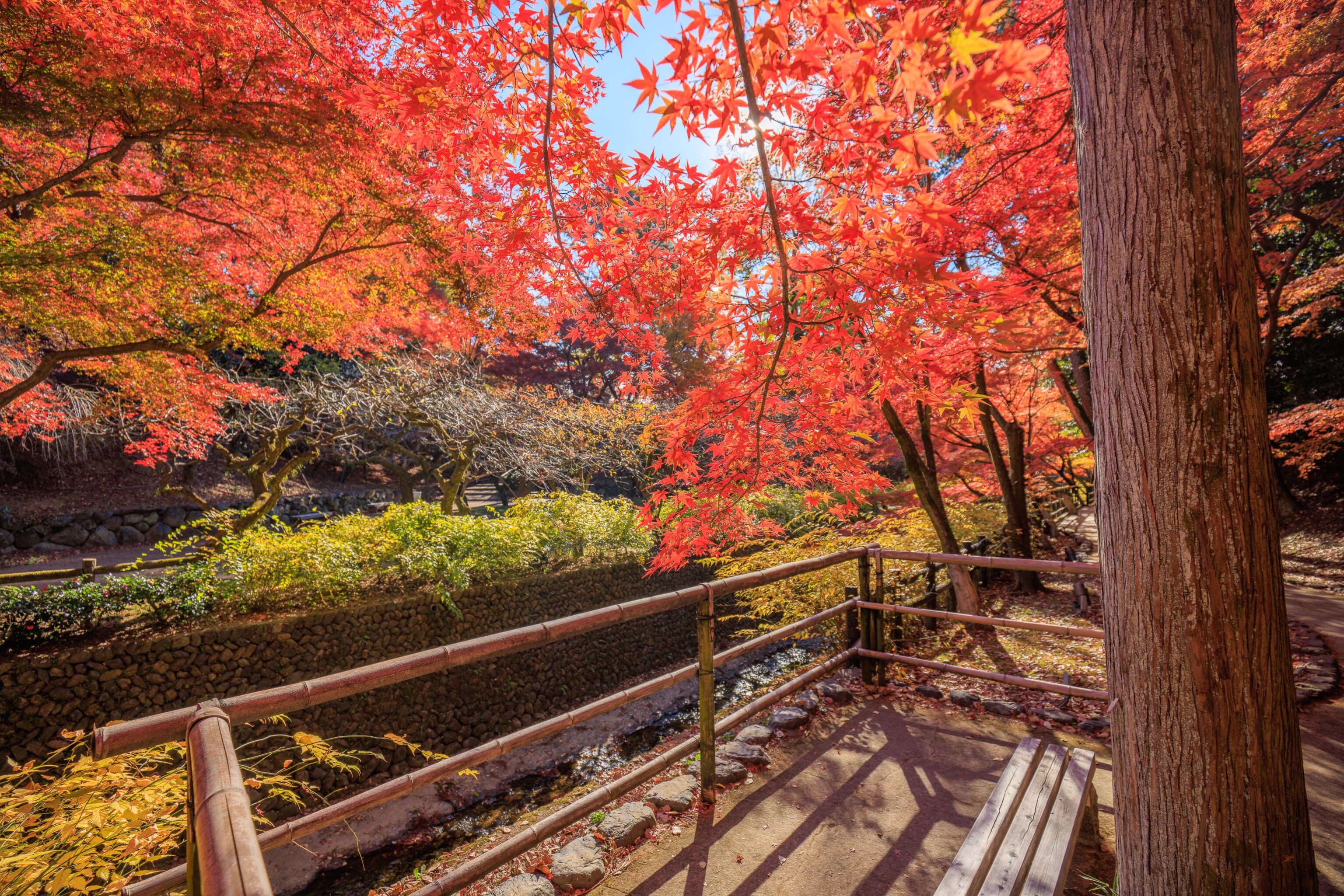
A nice area to rest and enjoy the view!
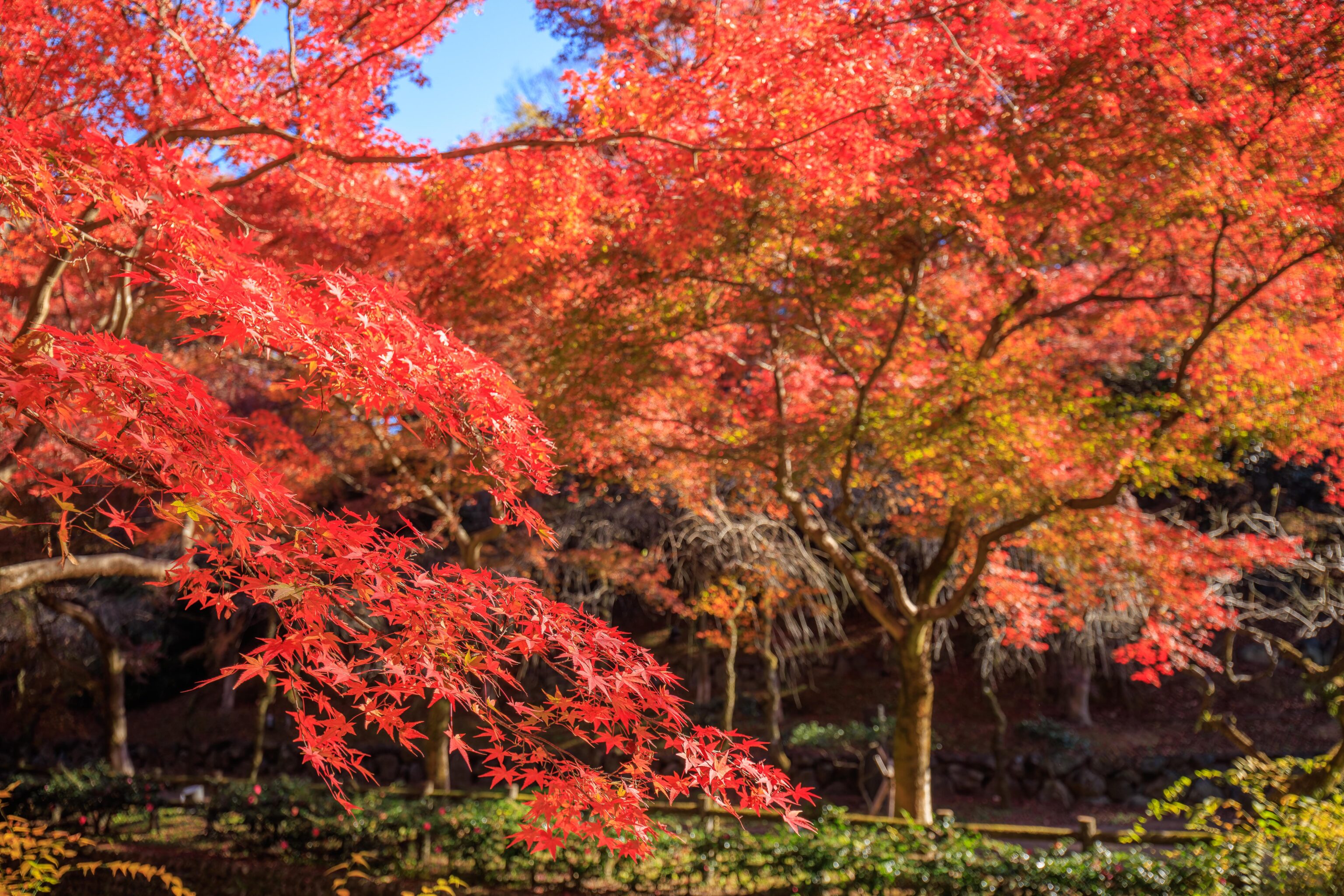
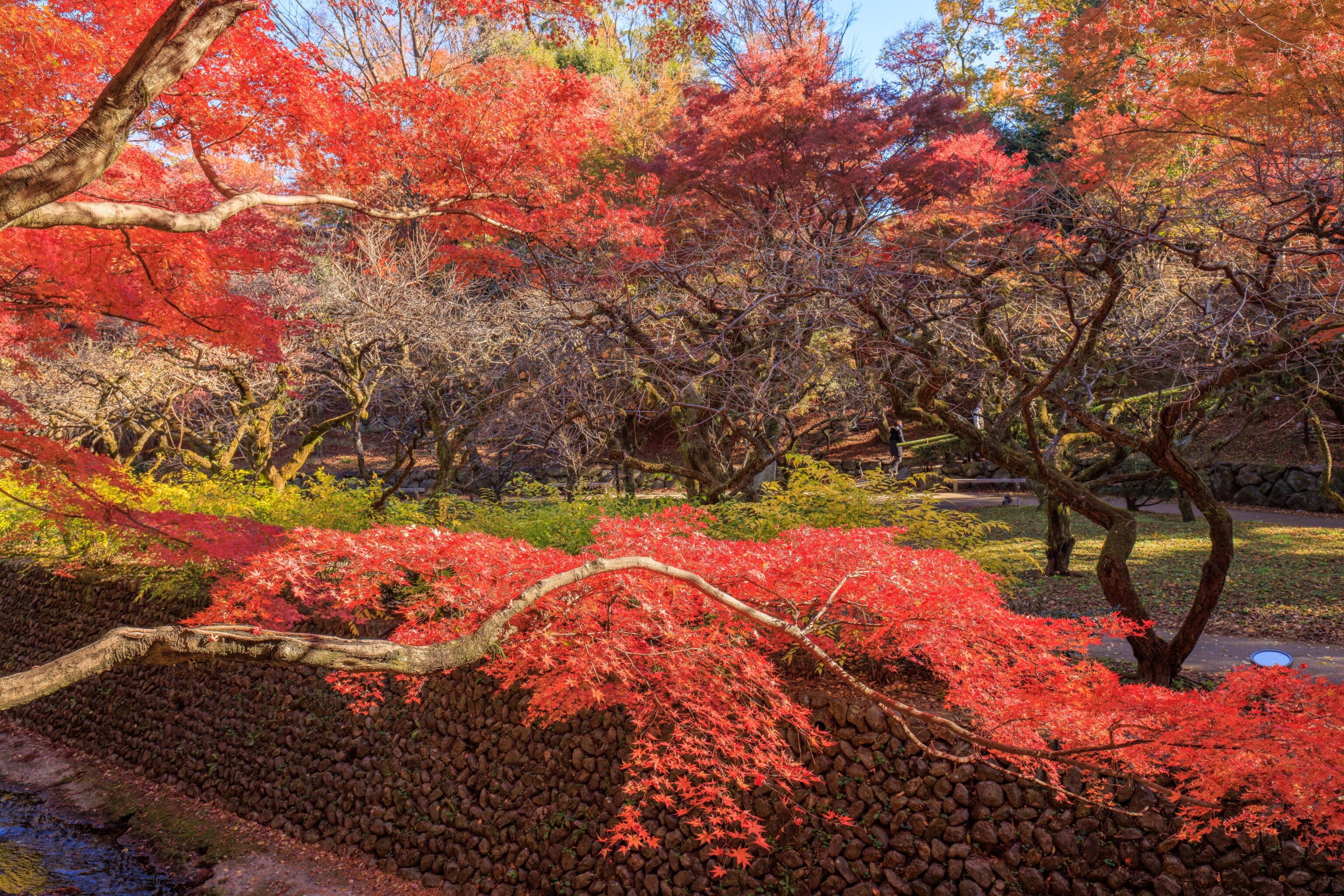
The maples here were quite beautiful! There was a small grove of some other tree species on the other side of the stream. They had already all dropped their leaves.
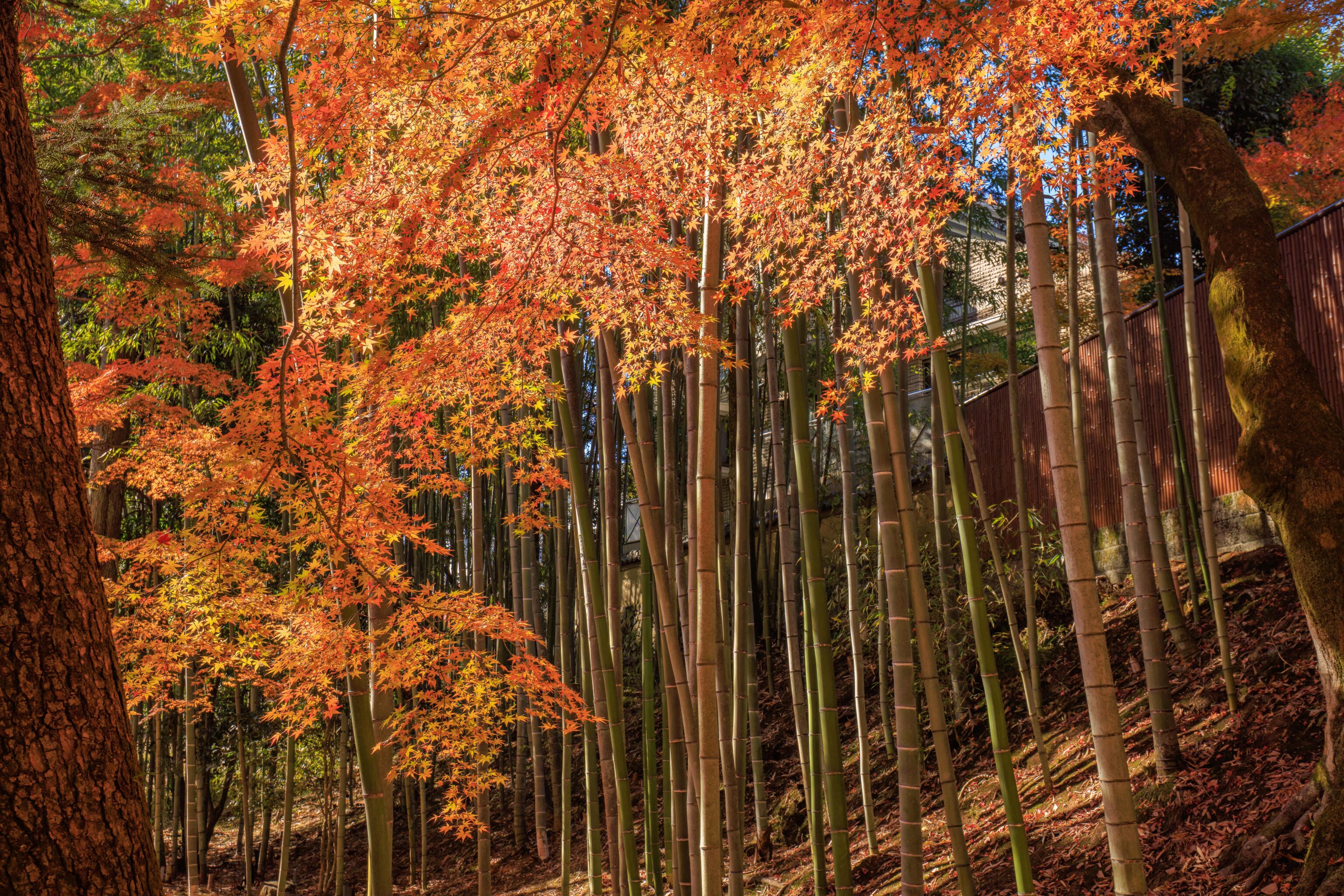
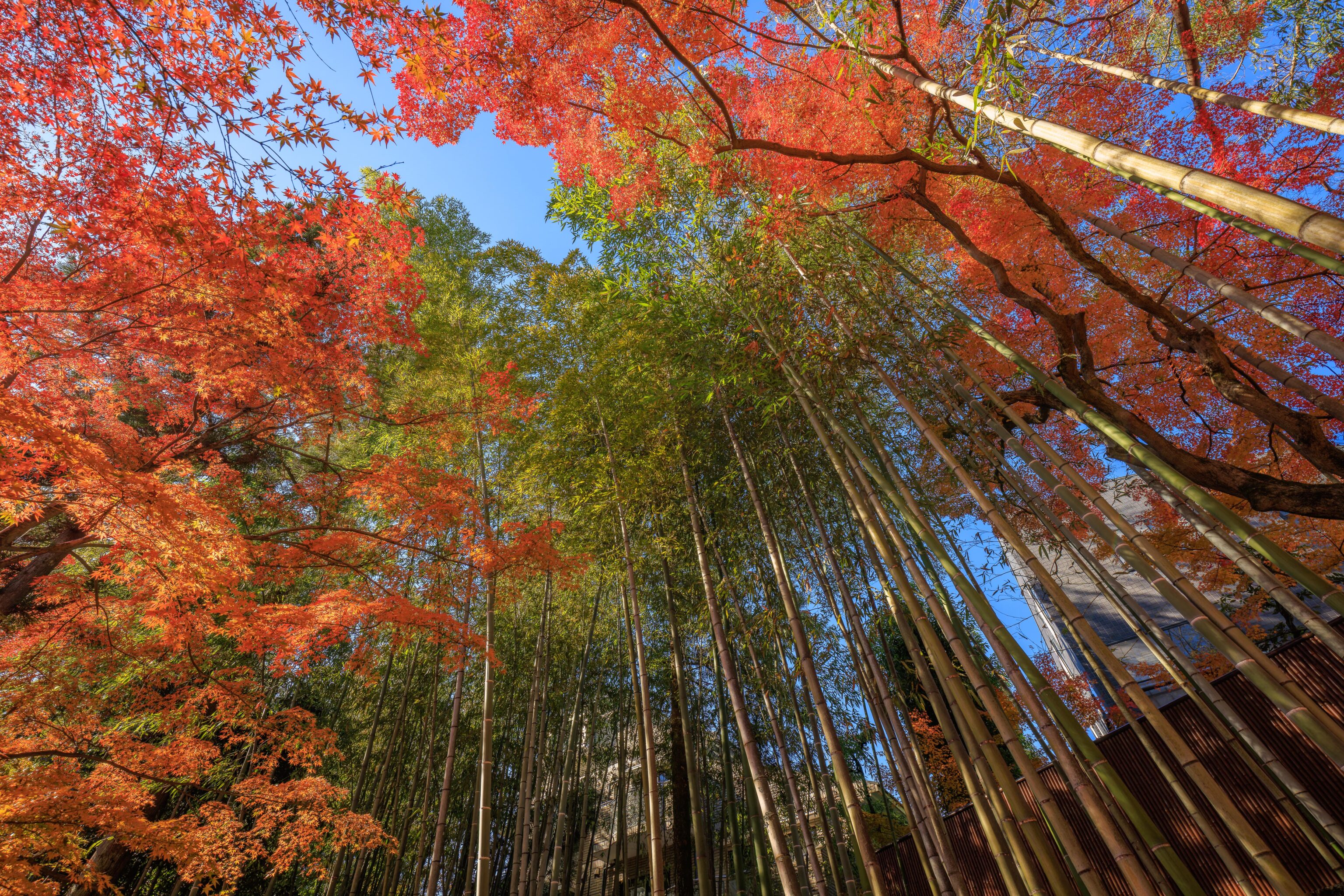
There was a small bamboo grove at the southern end of the garden.
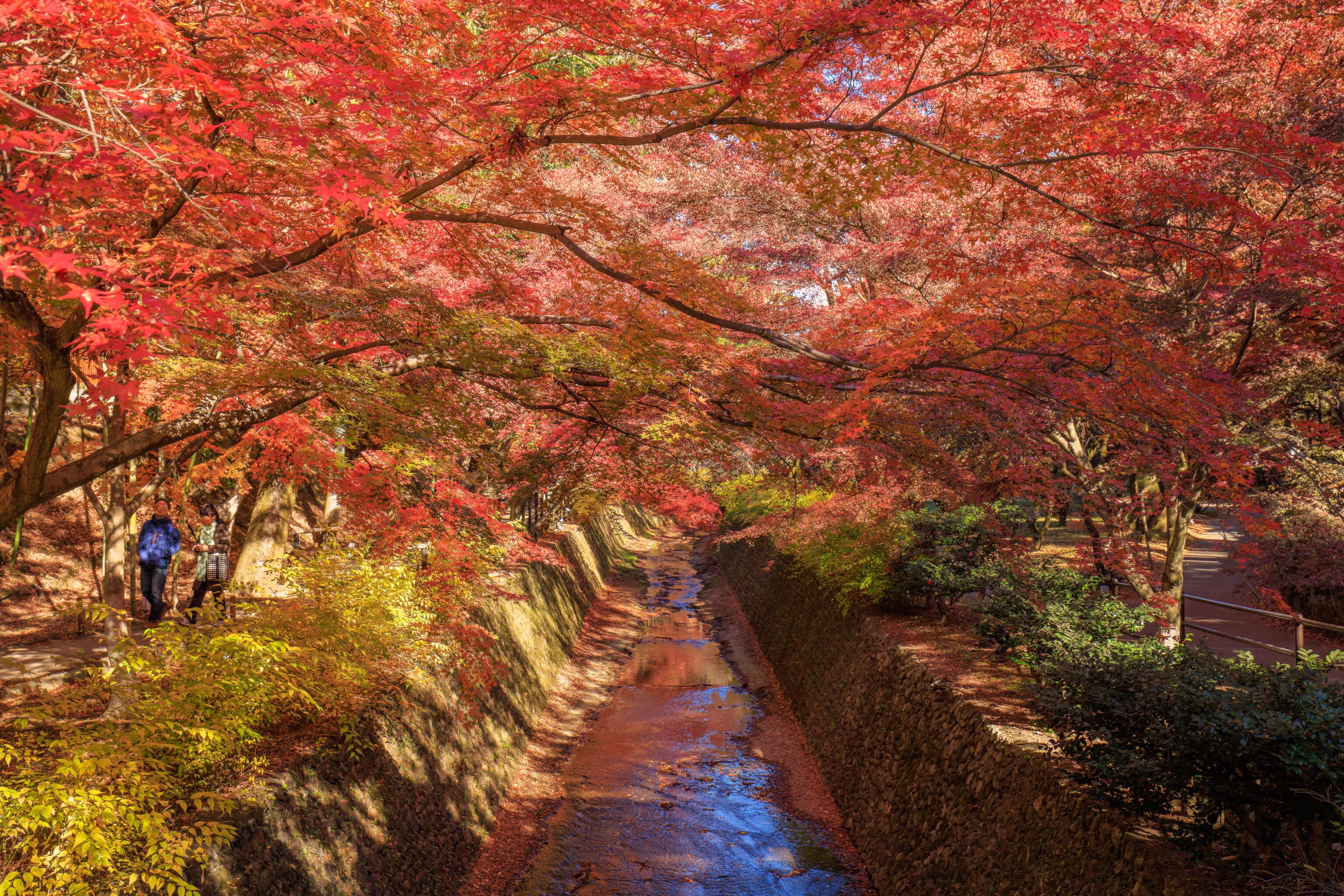
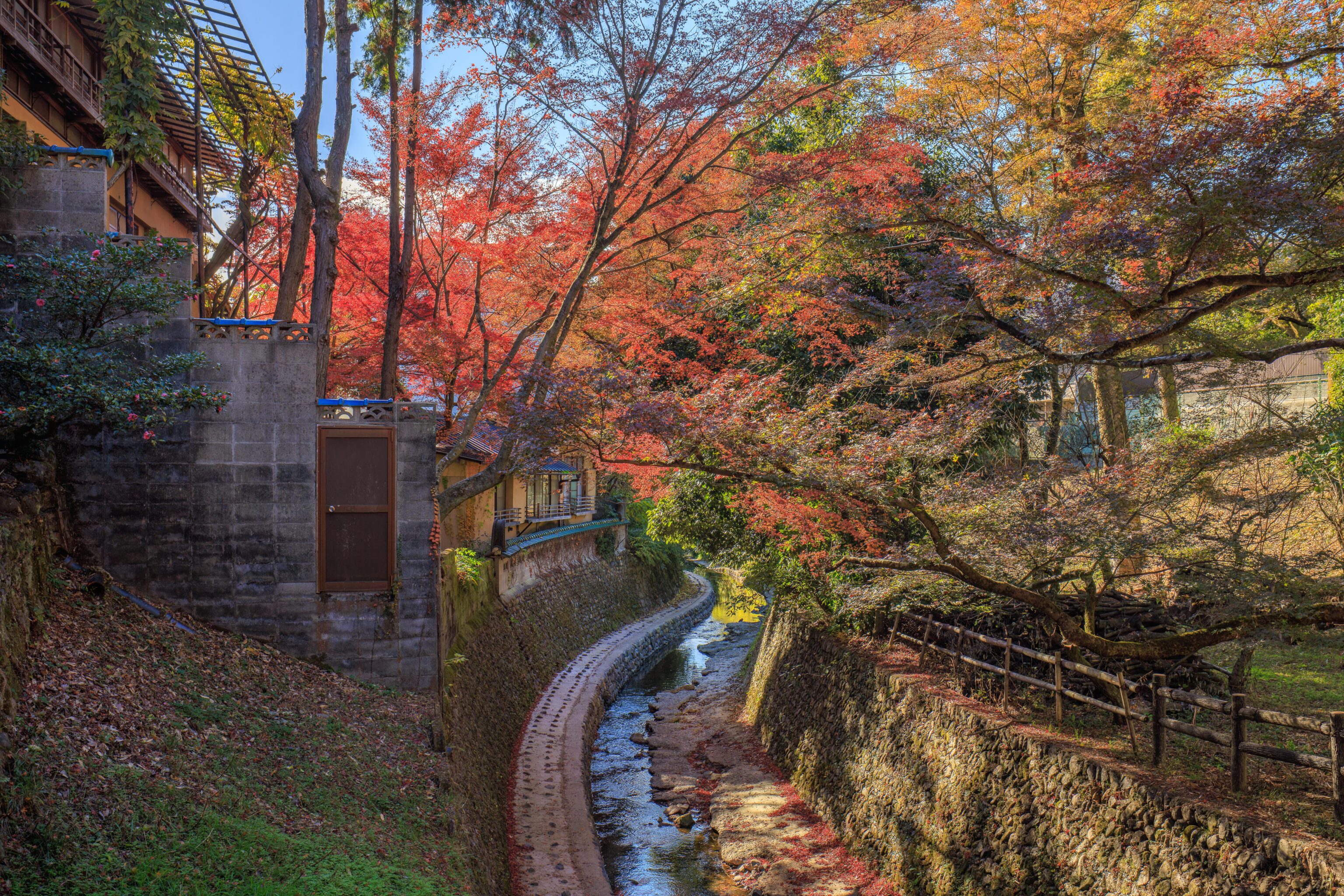
We crossed the river again as the path ended here. We followed the path as it went uphill.
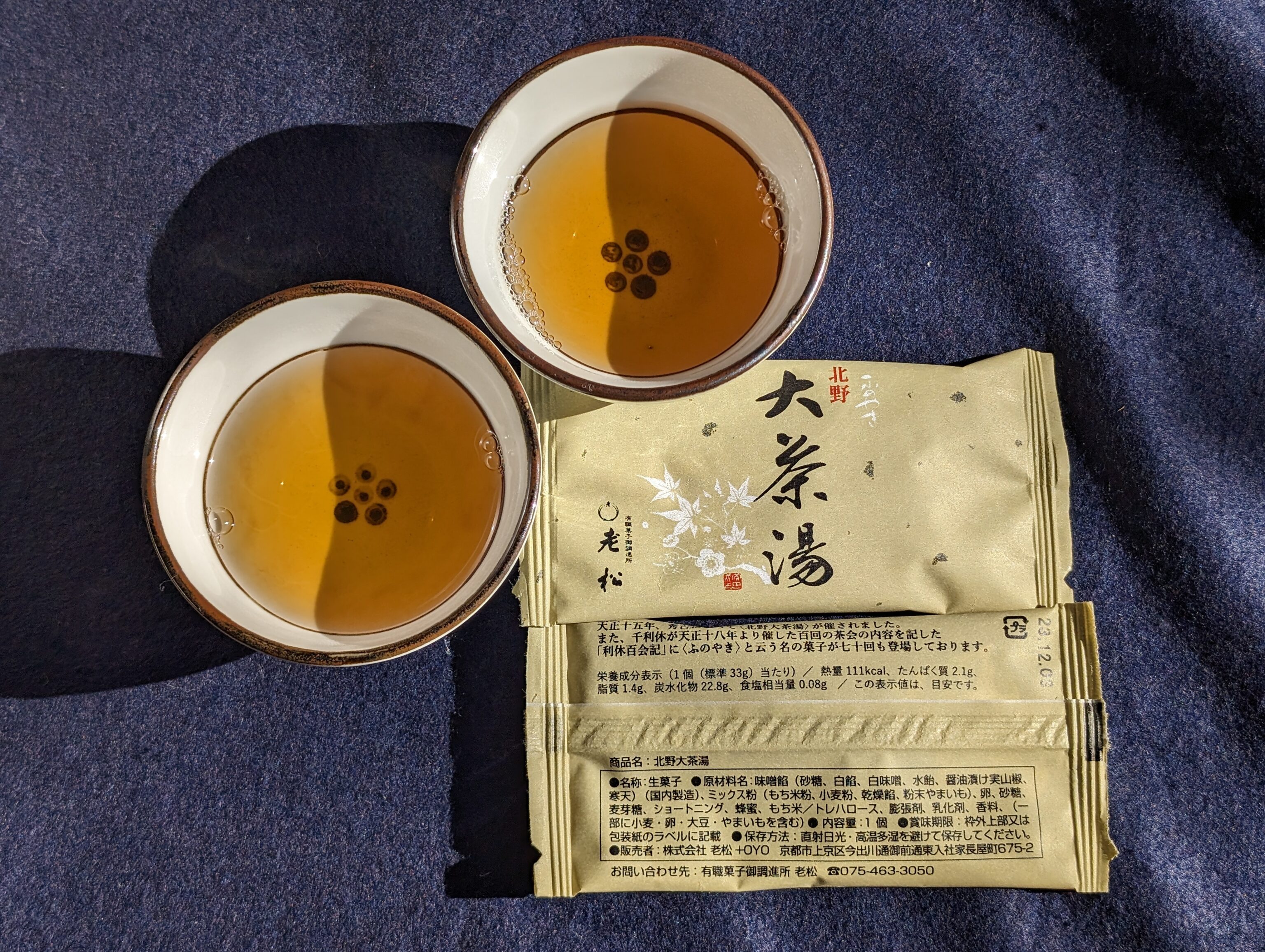
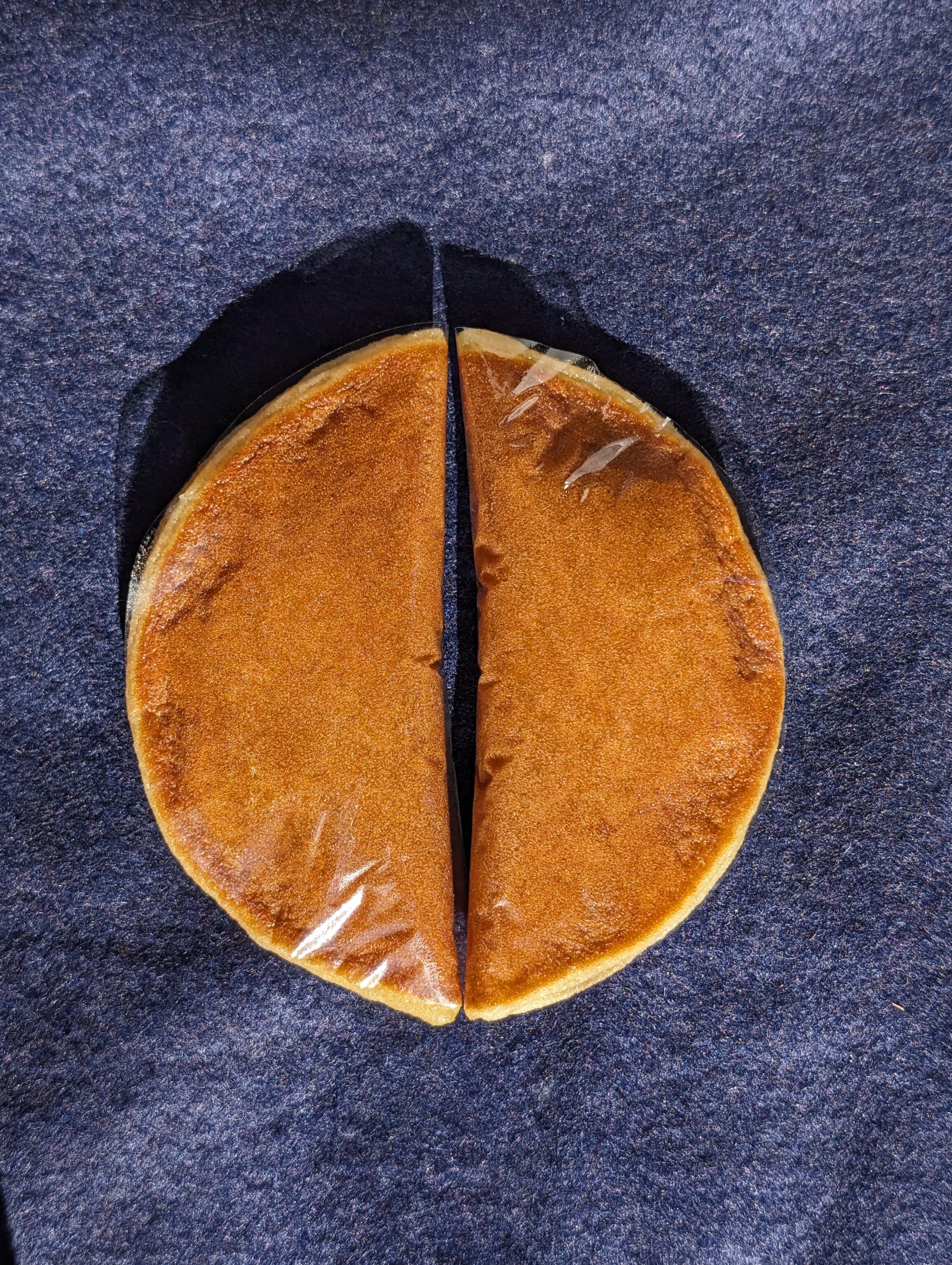
The garden tickets included unlimited tea and a snack. It was served an outdoor but covered cafe area.
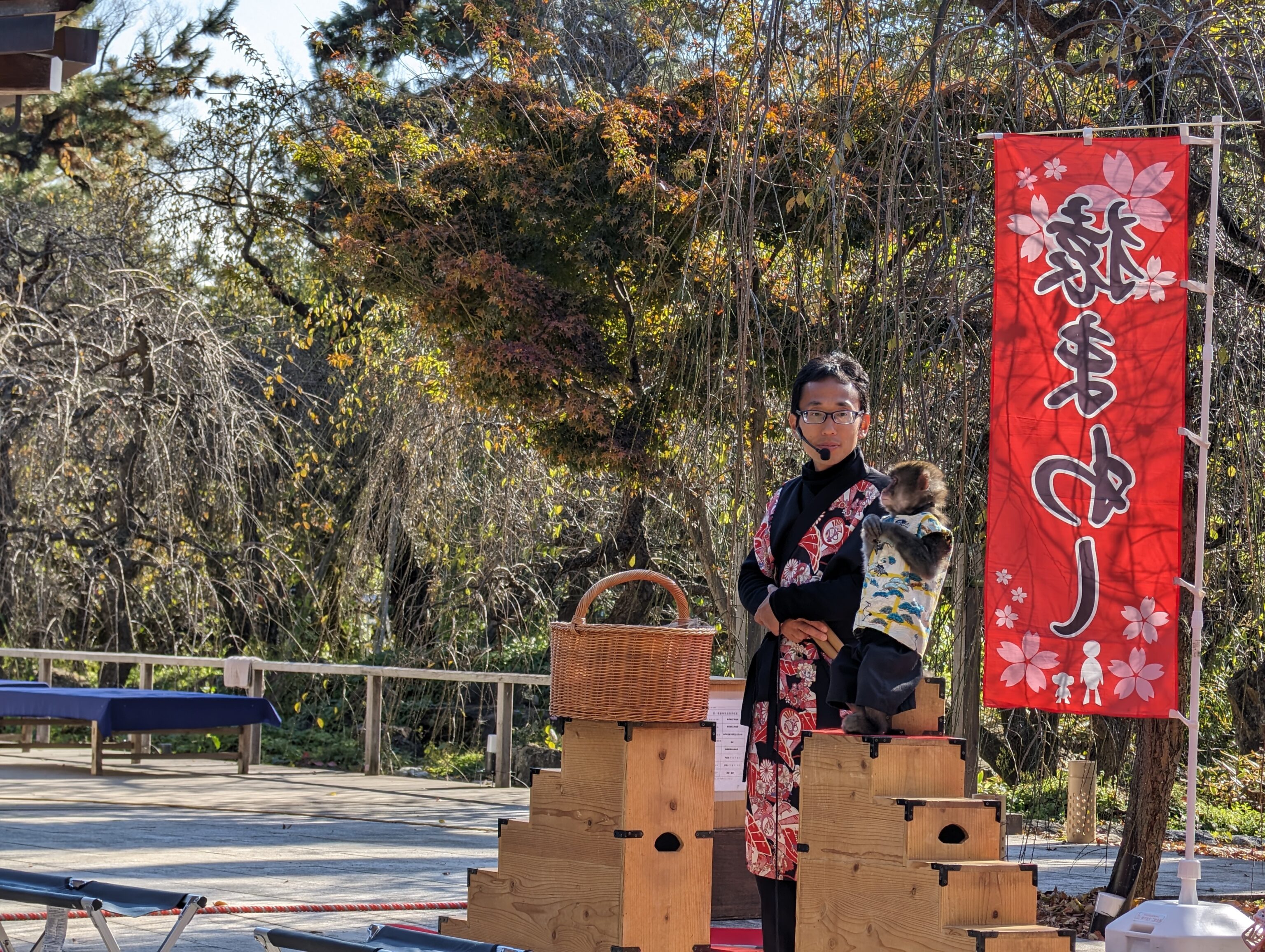
Oddly, there was a monkey show. We arrived just as it was ending. It was quite odd as this isn’t something we’ve seen at other temples or shrines in Japan.
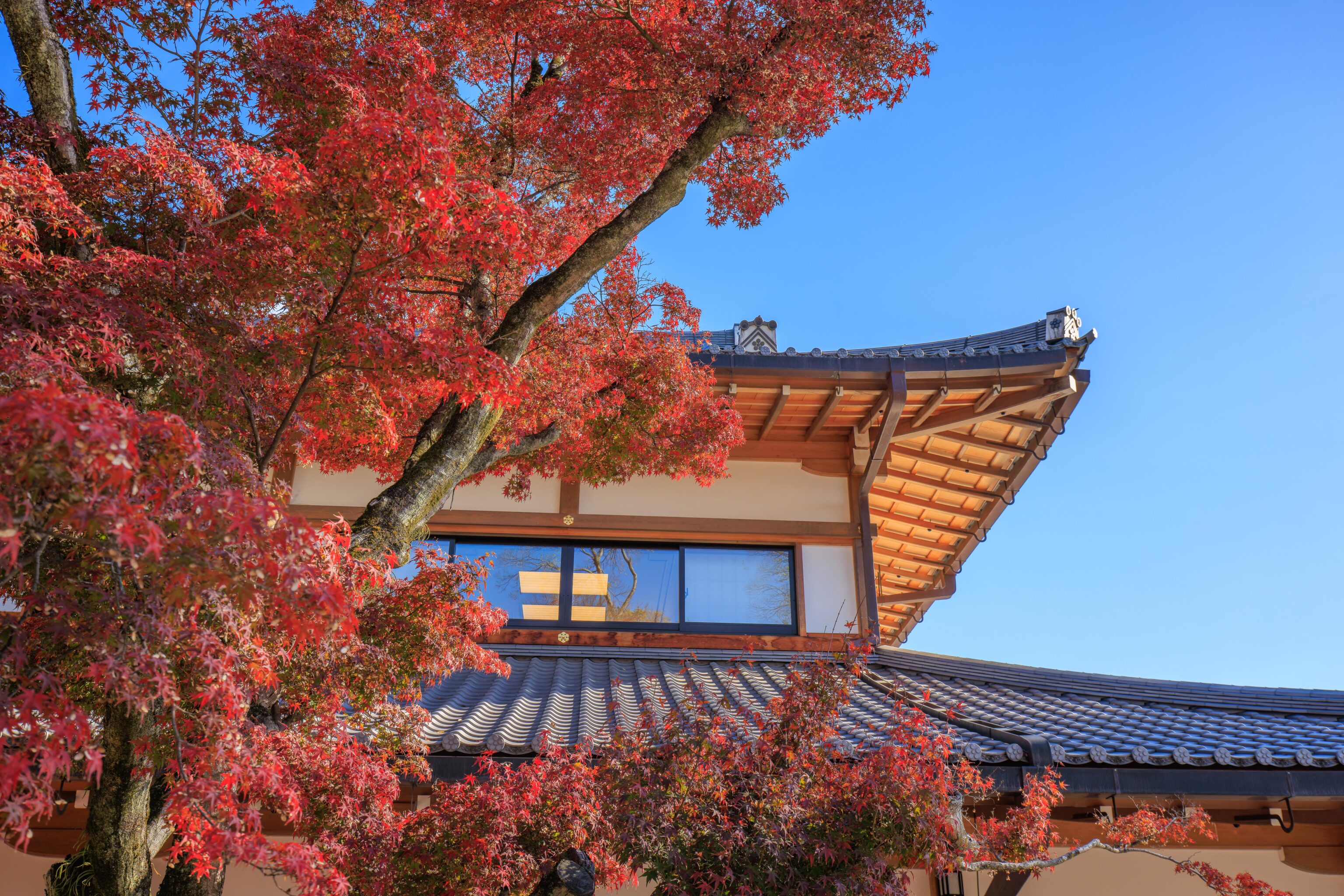
Just a random temple building as we exited the garden.
Lunch
It was around 11am when we left Kitano Tenmangu, lunch time! We had failed earlier this trip getting sushi at our favorite kaiten sushi restaurant in Tokyo and we found out that Chojiro across the river from Gion had permanently closed. However, there happened to be another Chojiro location at the Avanti mall next to Kyoto Station. So, we decided to head there for lunch.
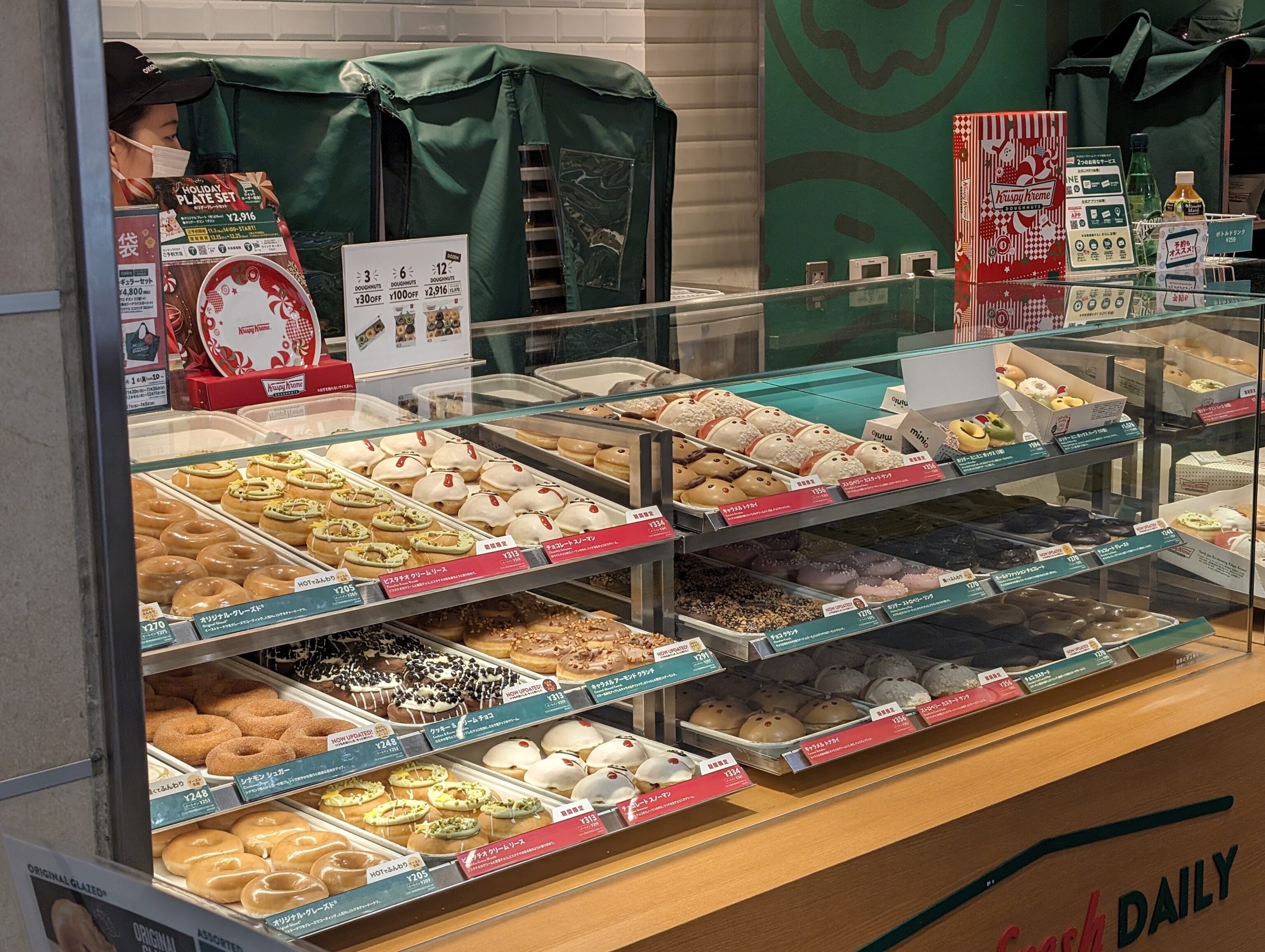
We passed by this Krispy Kreme on the way. They have items that we assume aren’t available in the US. We’re not really fans of this chain in the US but were a bit curious about the Japanese version. But not curious enough to actually buy anything!
After finding the restaurant via Kyoto Station’s underground passageways, we were seated and ordered via tablet. A very convenient feature that Chojiro offers.
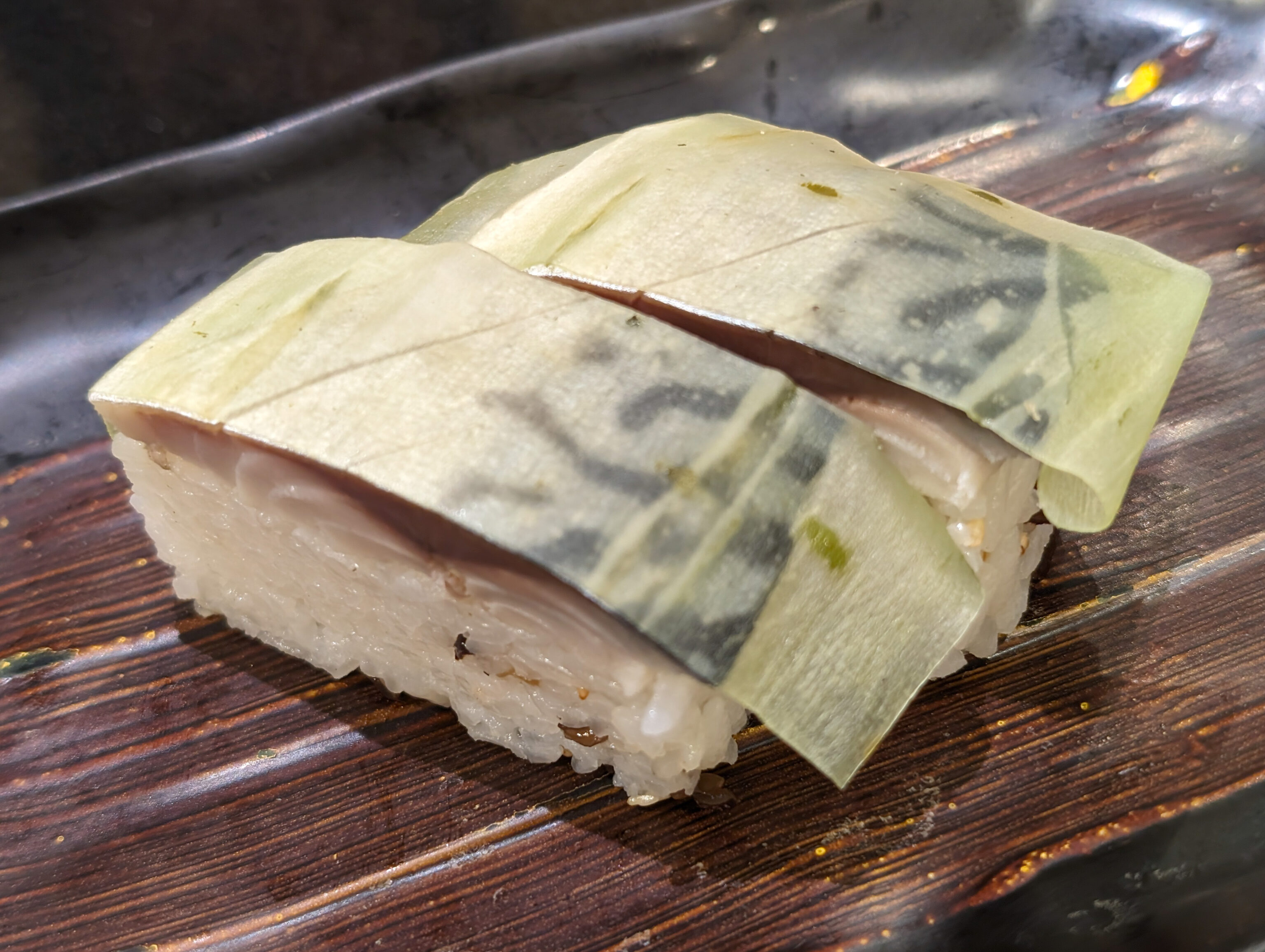
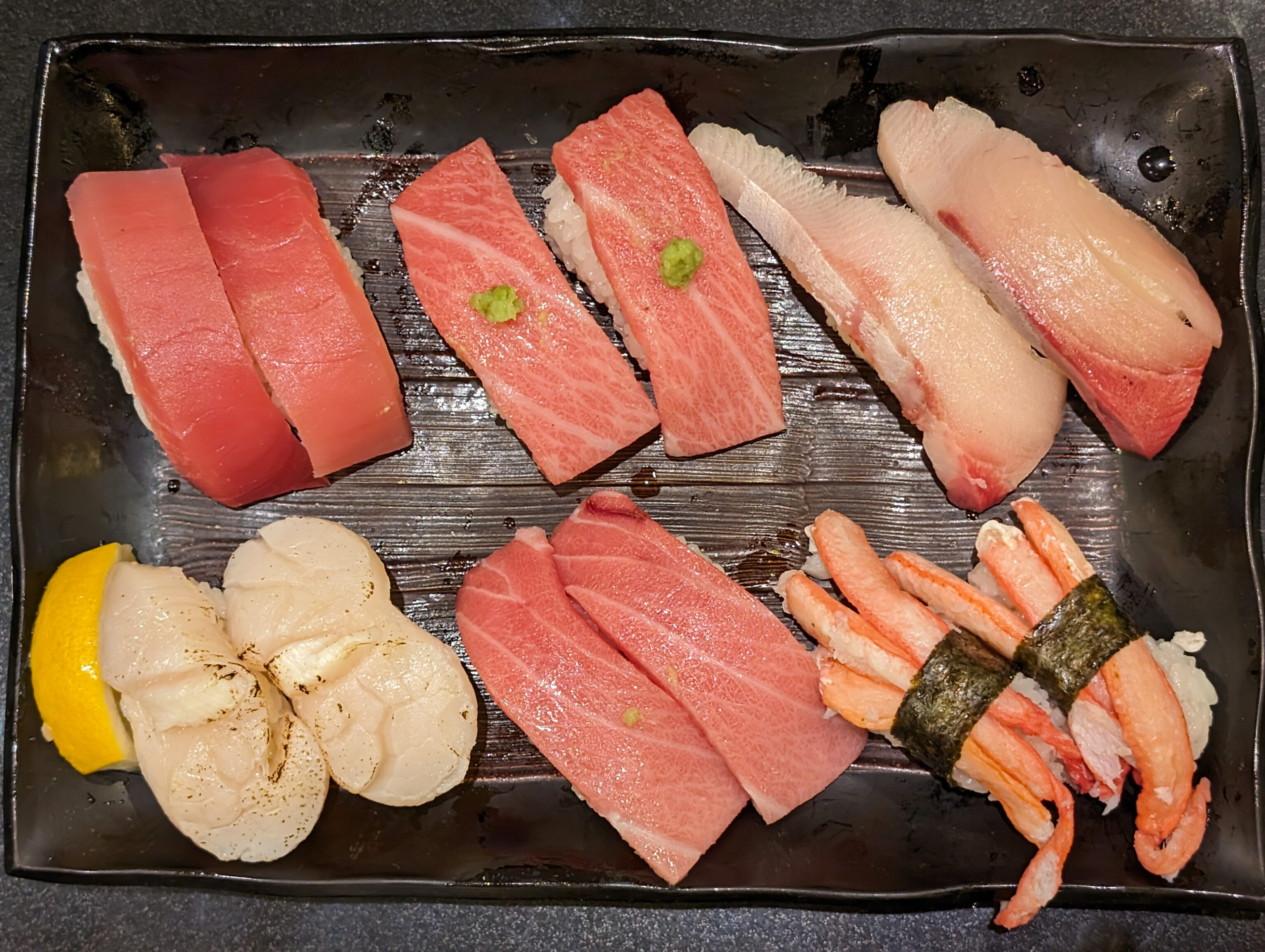
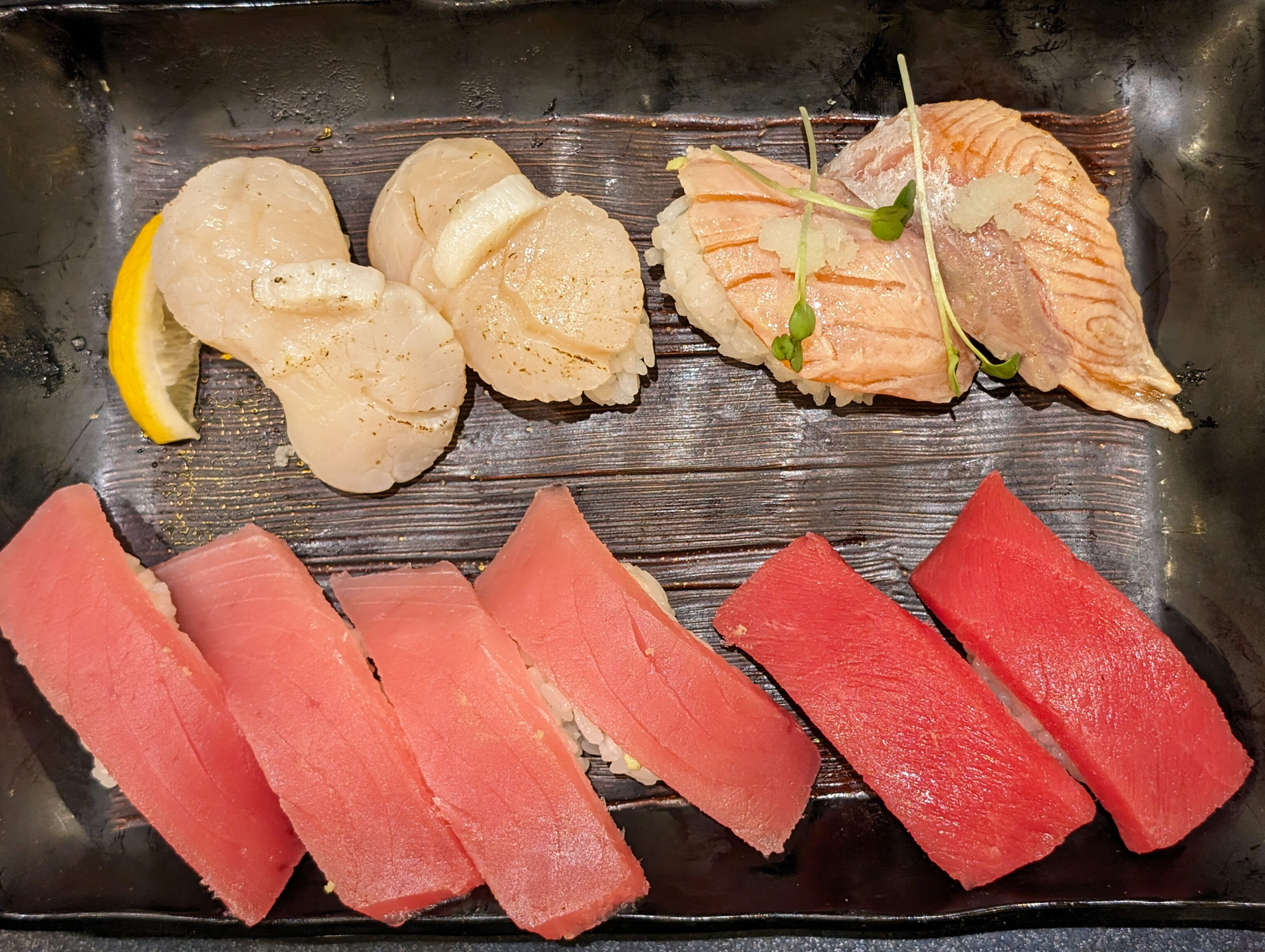
Our first sushi of the trip! It was good, particularly the tuna. We got various different types. Even the cheapest is better than the typical tuna that is available in the US!
To-ji
After lunch, we decided to walk over to To-ji as it was just one train stop away. It ended up being a relatively long walk.
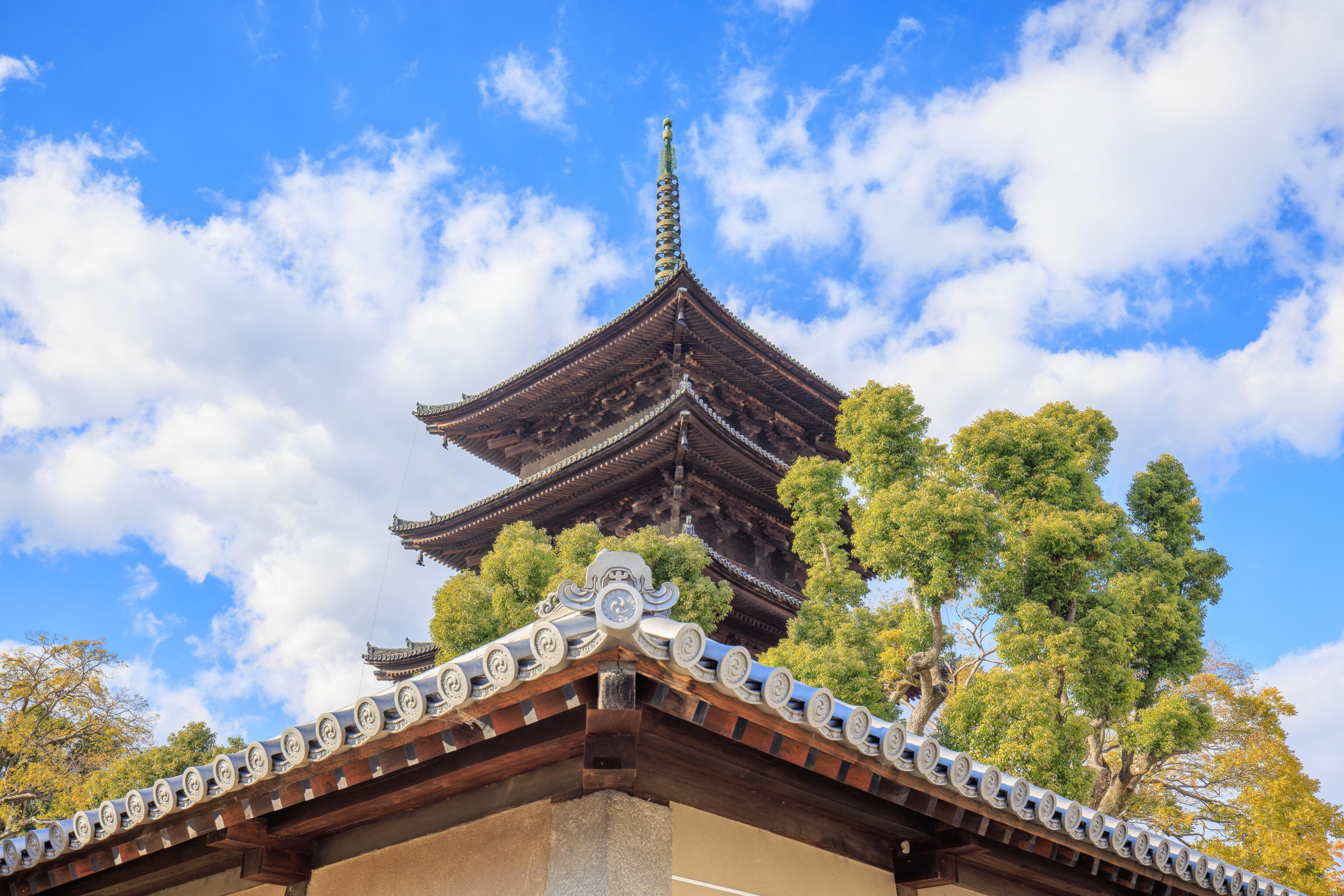
As we approached, we saw the temple’s five story pagoda at the southeast corner.
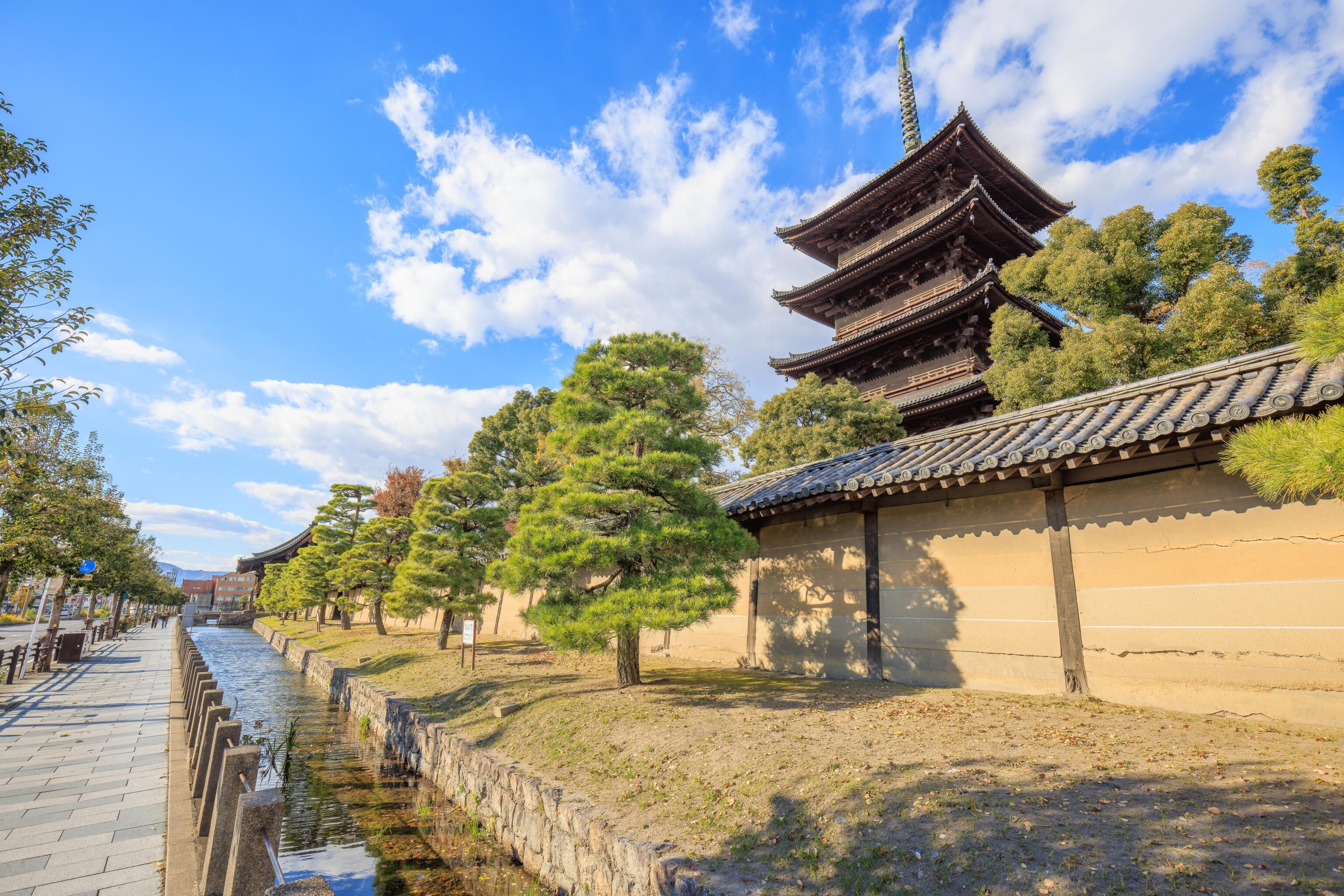
There are multiple entrances to the temple. We decided to keep walking to the west to enter via what seemed to be the main entrance.
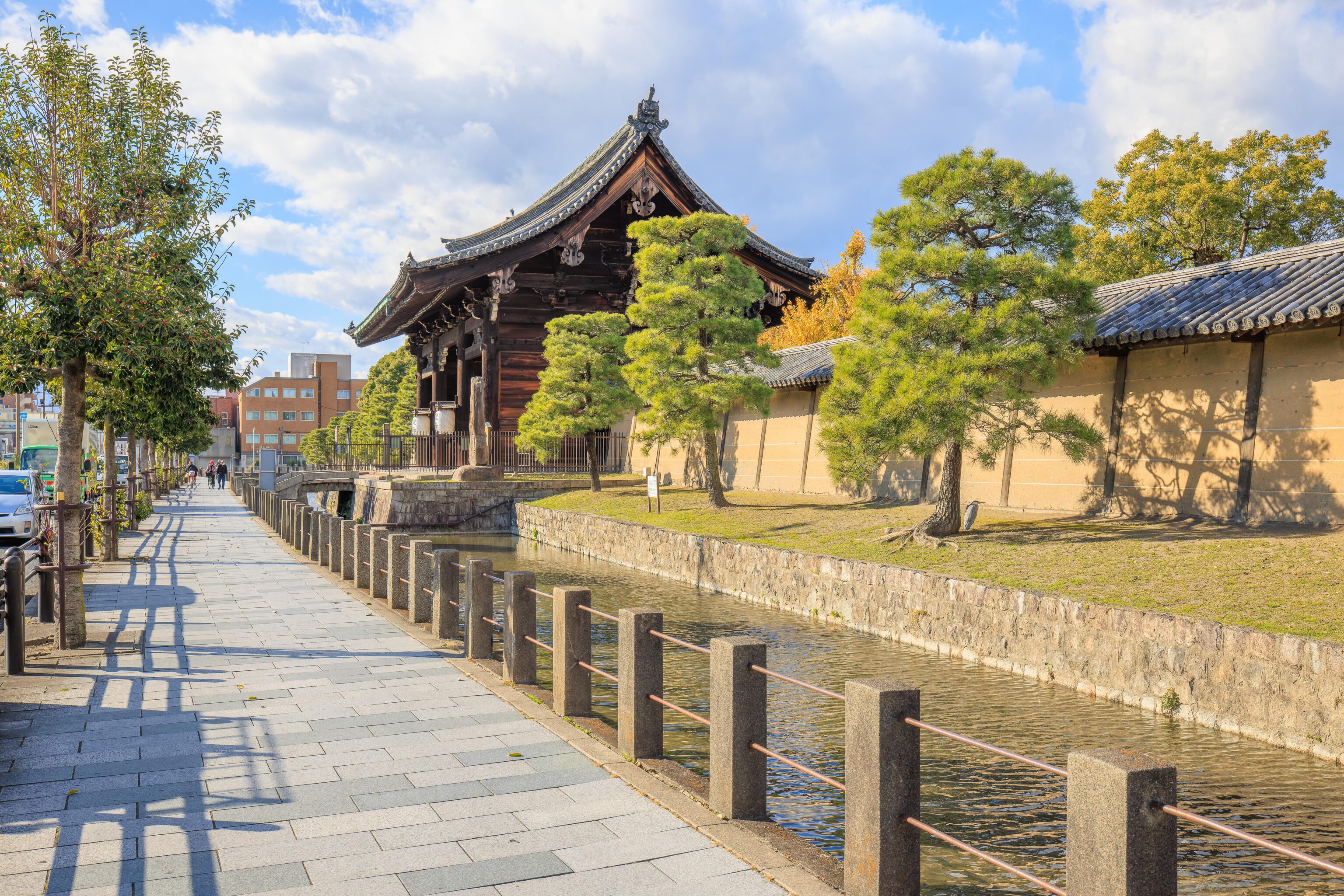
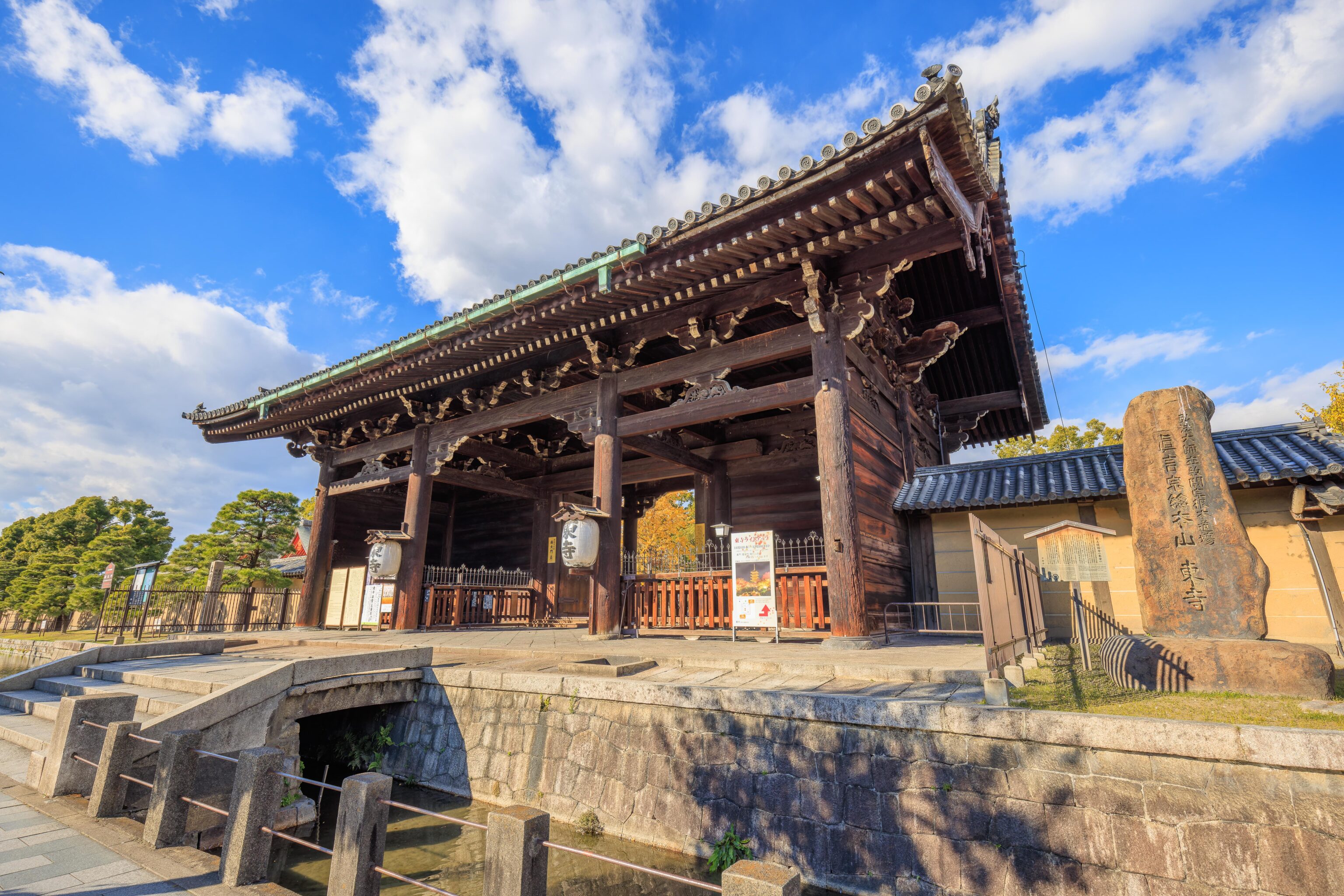
This relatively large gate at the south end of the temple seemed to be oddly not busy at all.
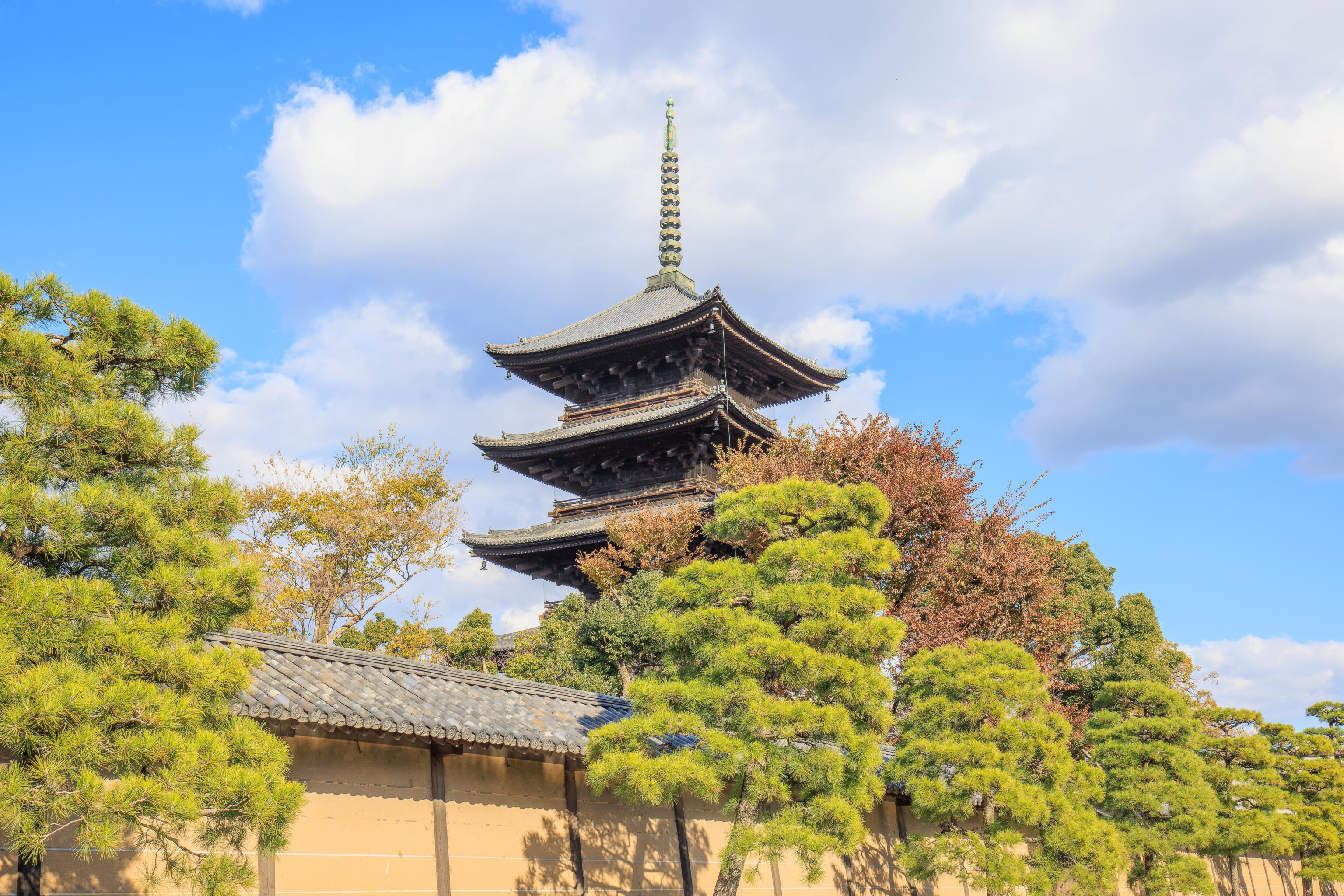
As before, we could only see the upper floors of the pagoda.
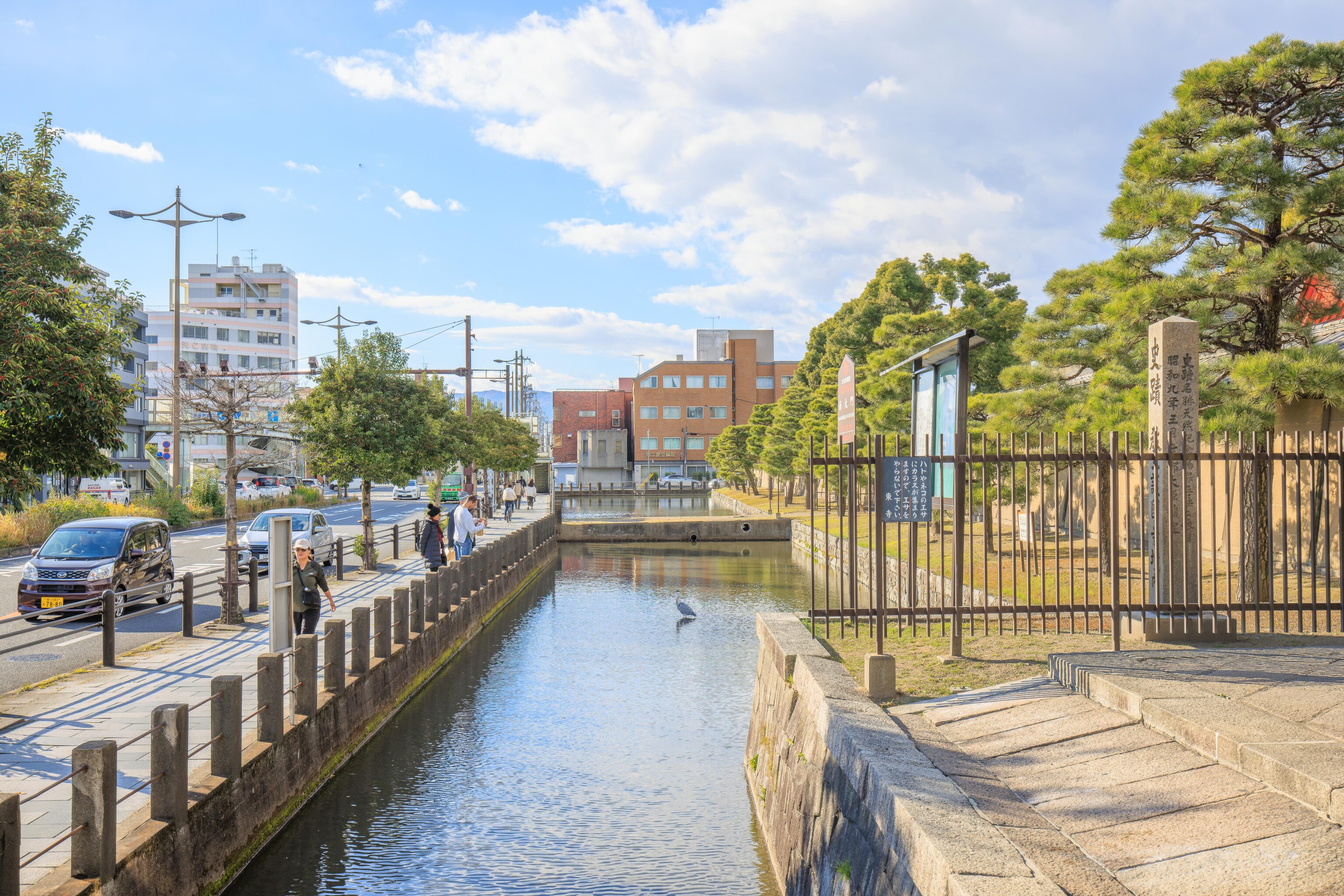
There was something like a moat along the southern edge of the temple property, separating it from the road and sidewalk. It must not have been very deep as there was a Gray Heron standing in it just to the west of the gate.
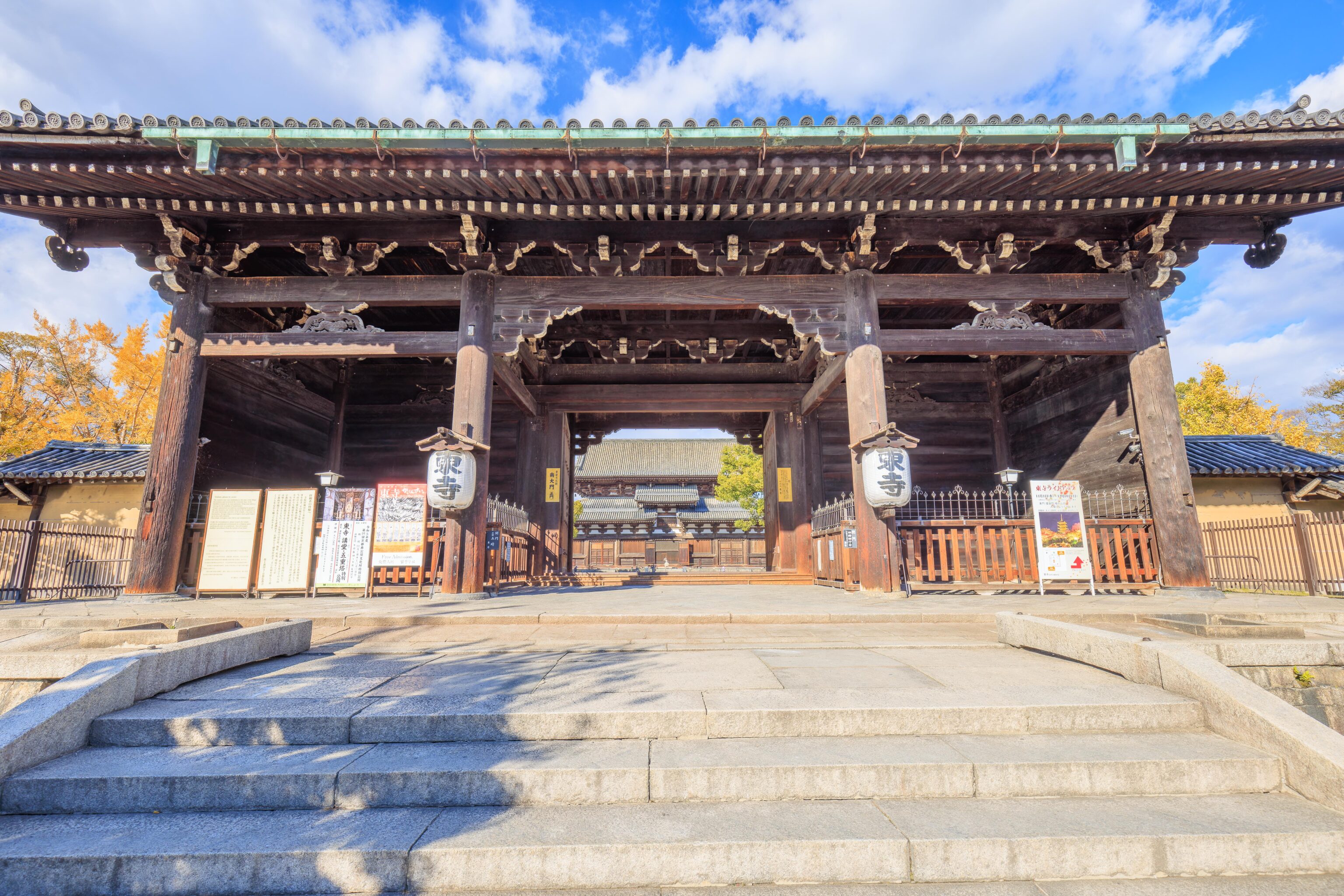
We walked through the gate to enter the temple grounds.
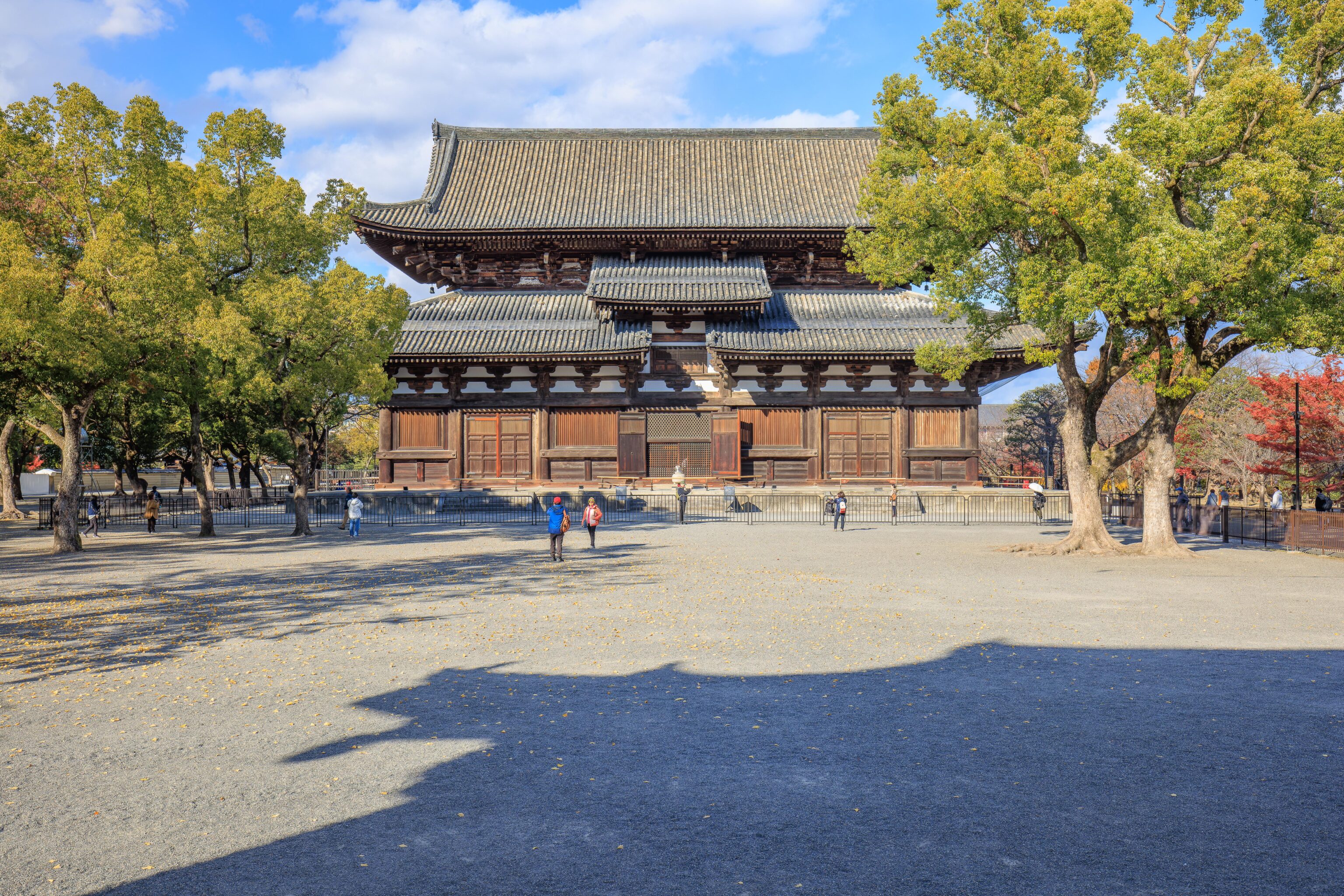
A few things became quickly apparent. There weren’t very many people around and we seemed to be on the wrong side of a fence!
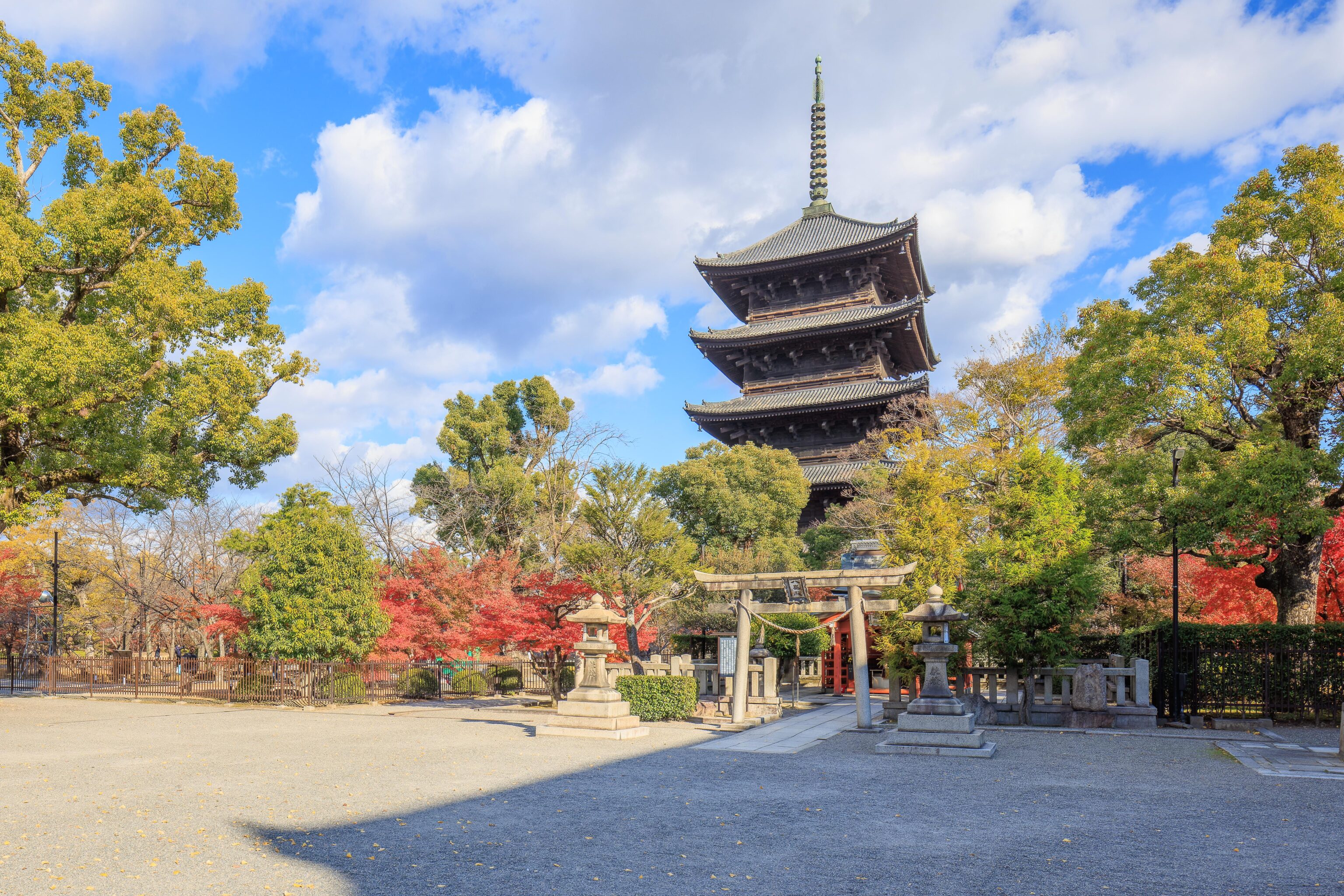
Looking to the east, we could see the five story pagoda on the other side of the fence.
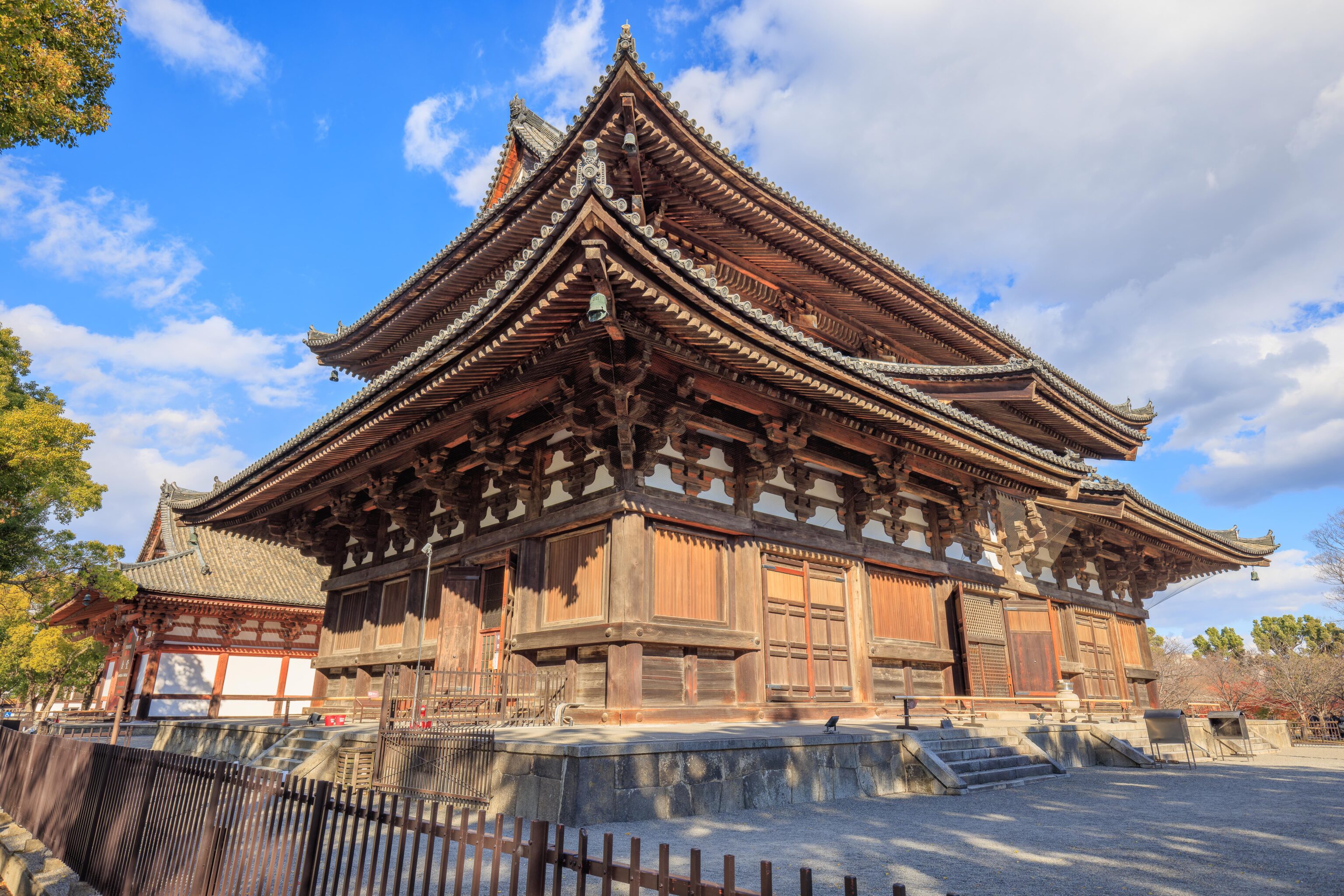
This was about as close as we could get to this large temple building.
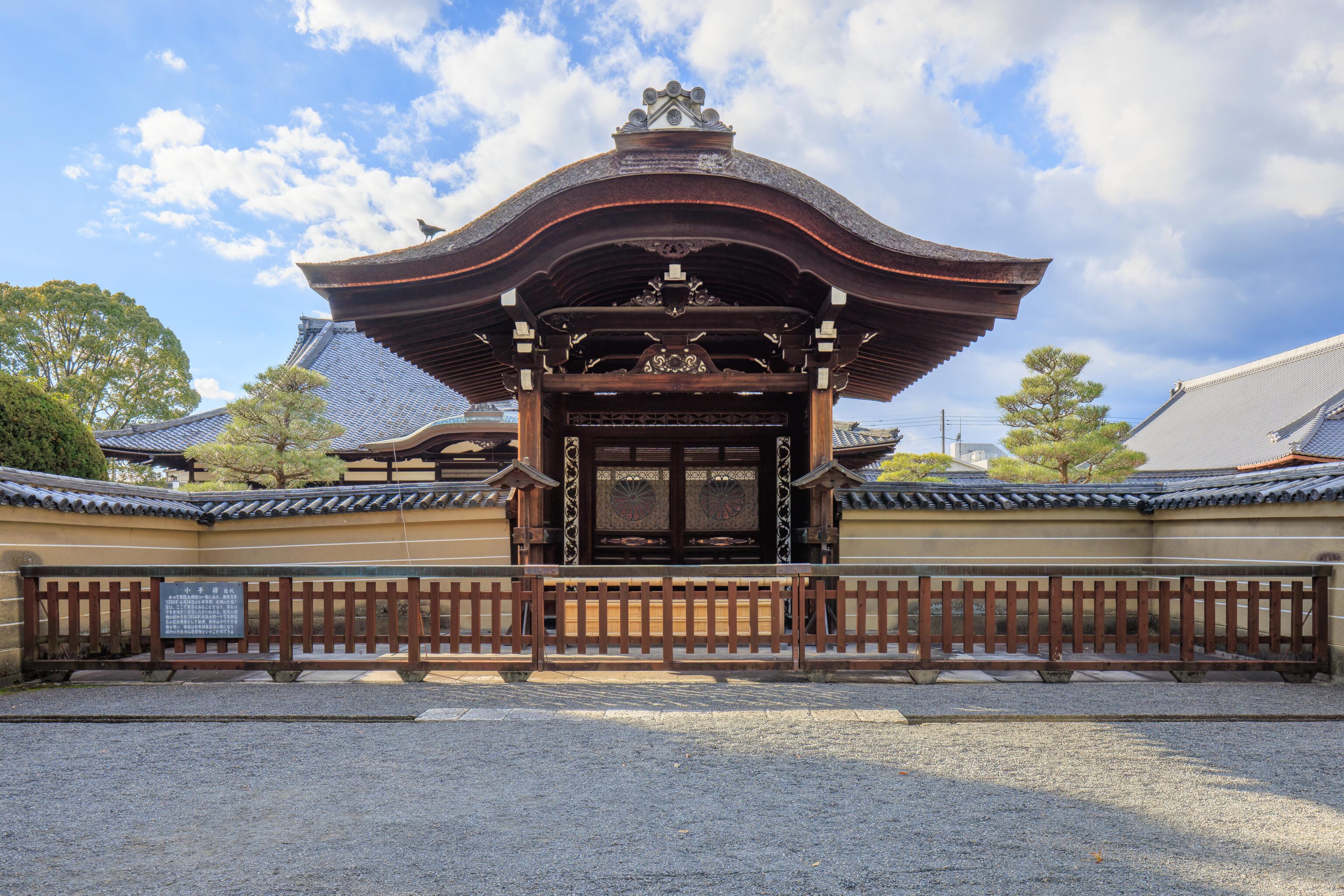
We decided to walk to the north, passing by this fenced off gate to the west.
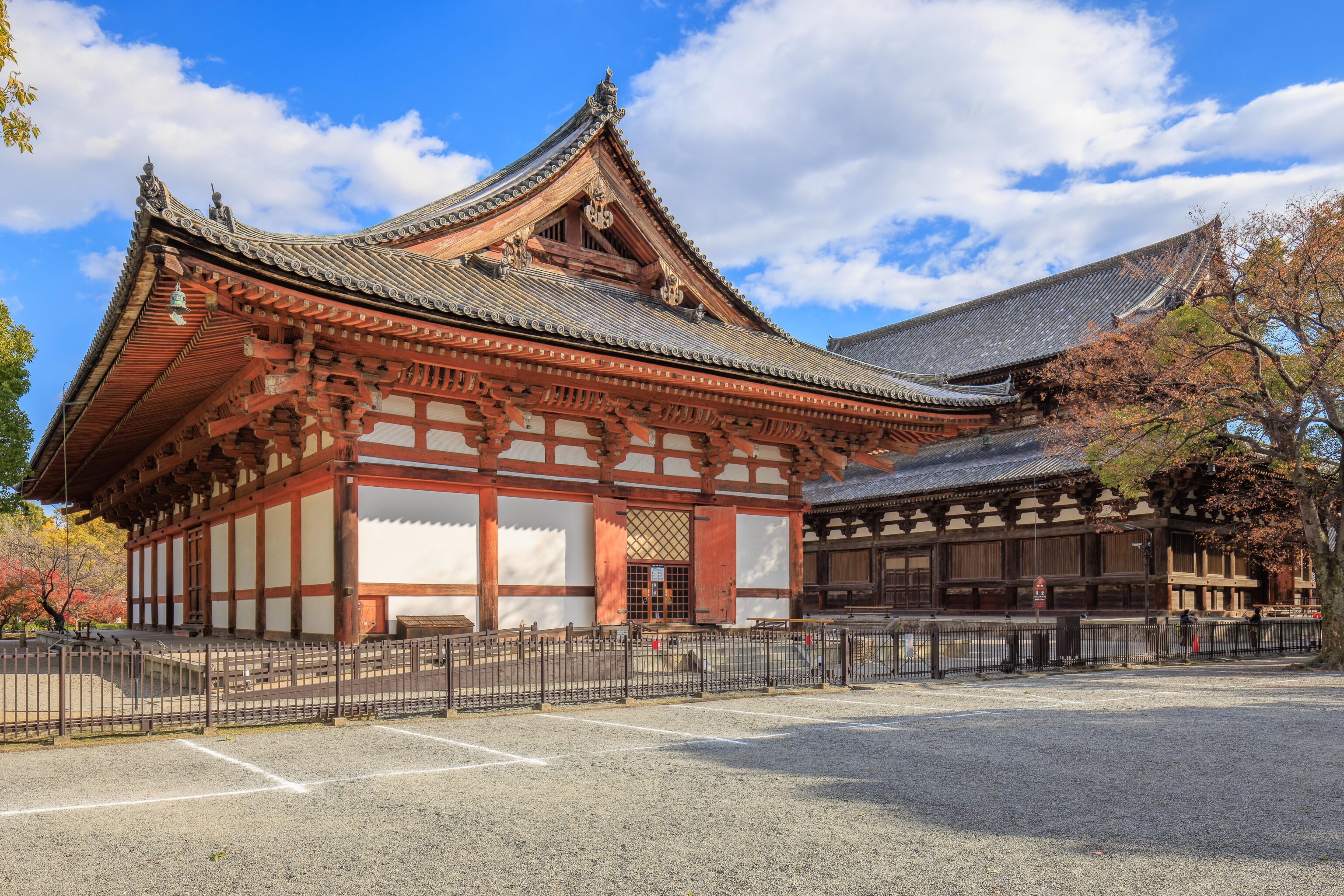
We passed by another large building that was inaccessible to us due to the fence. Interestingly, the ground had chalk parking spots marked, though we didn’t see any cars at all here.
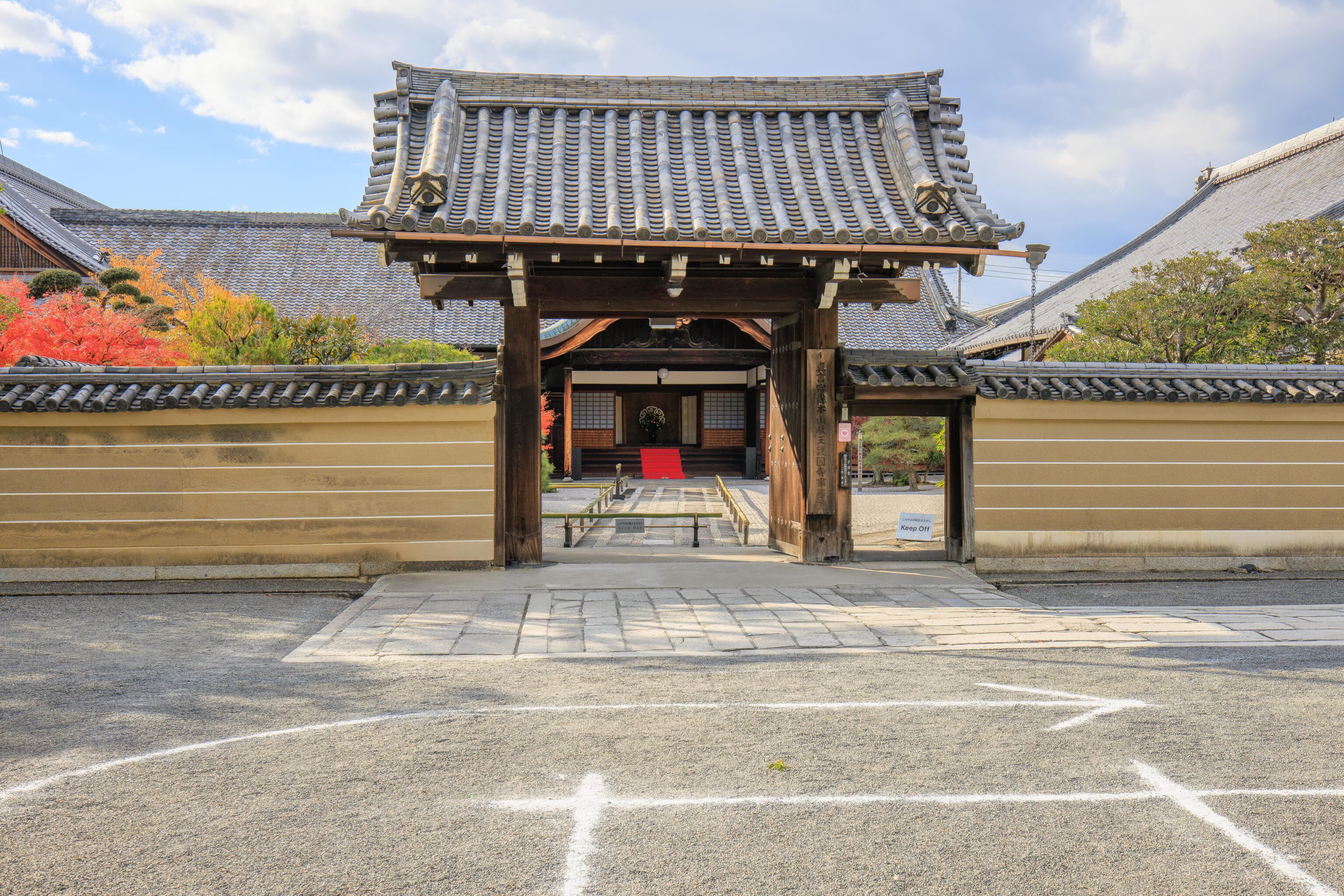
We passed by another gate that was blocked.
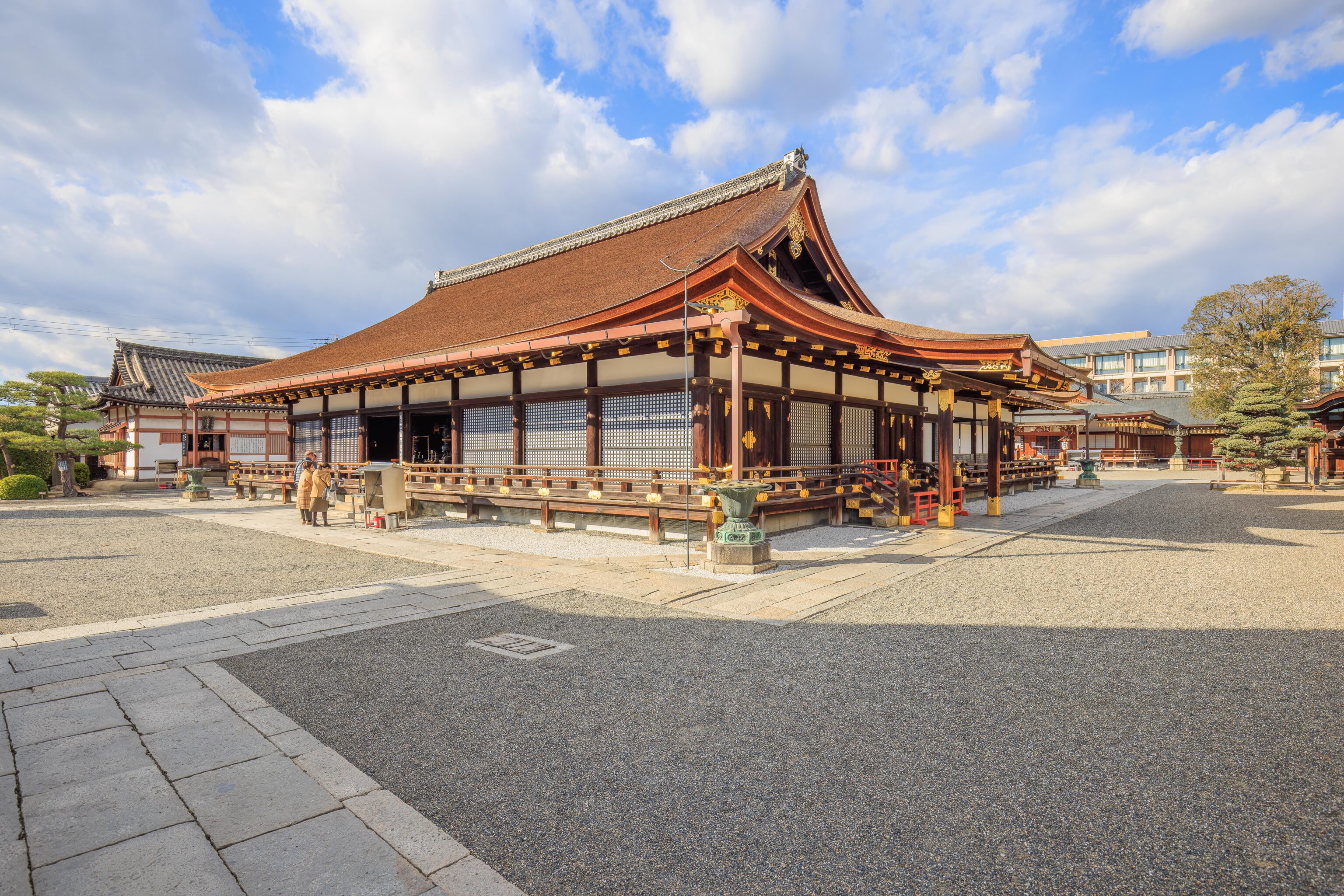
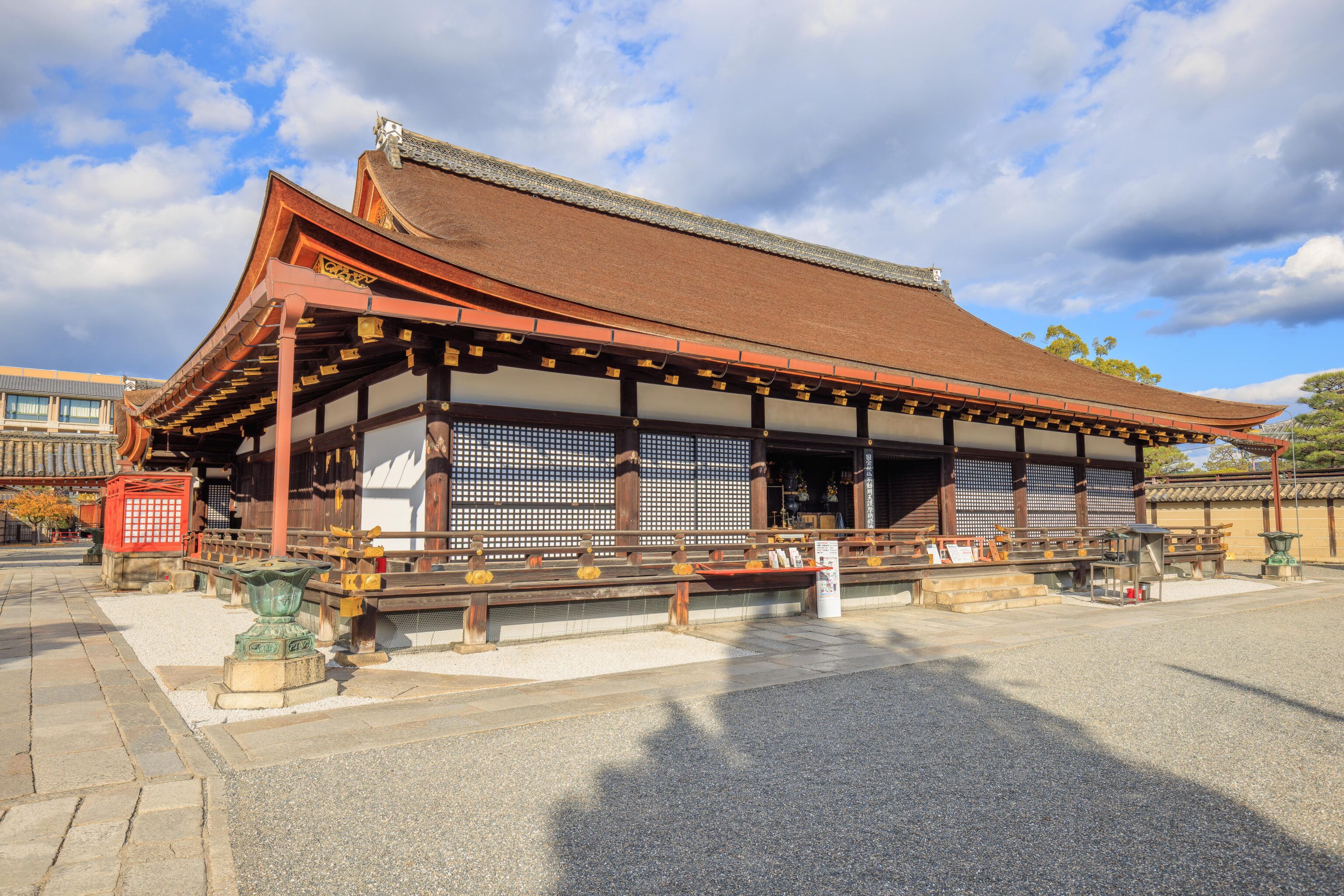
We came across another gate to the west which was open. We walked in around this temple building, the Mieido.
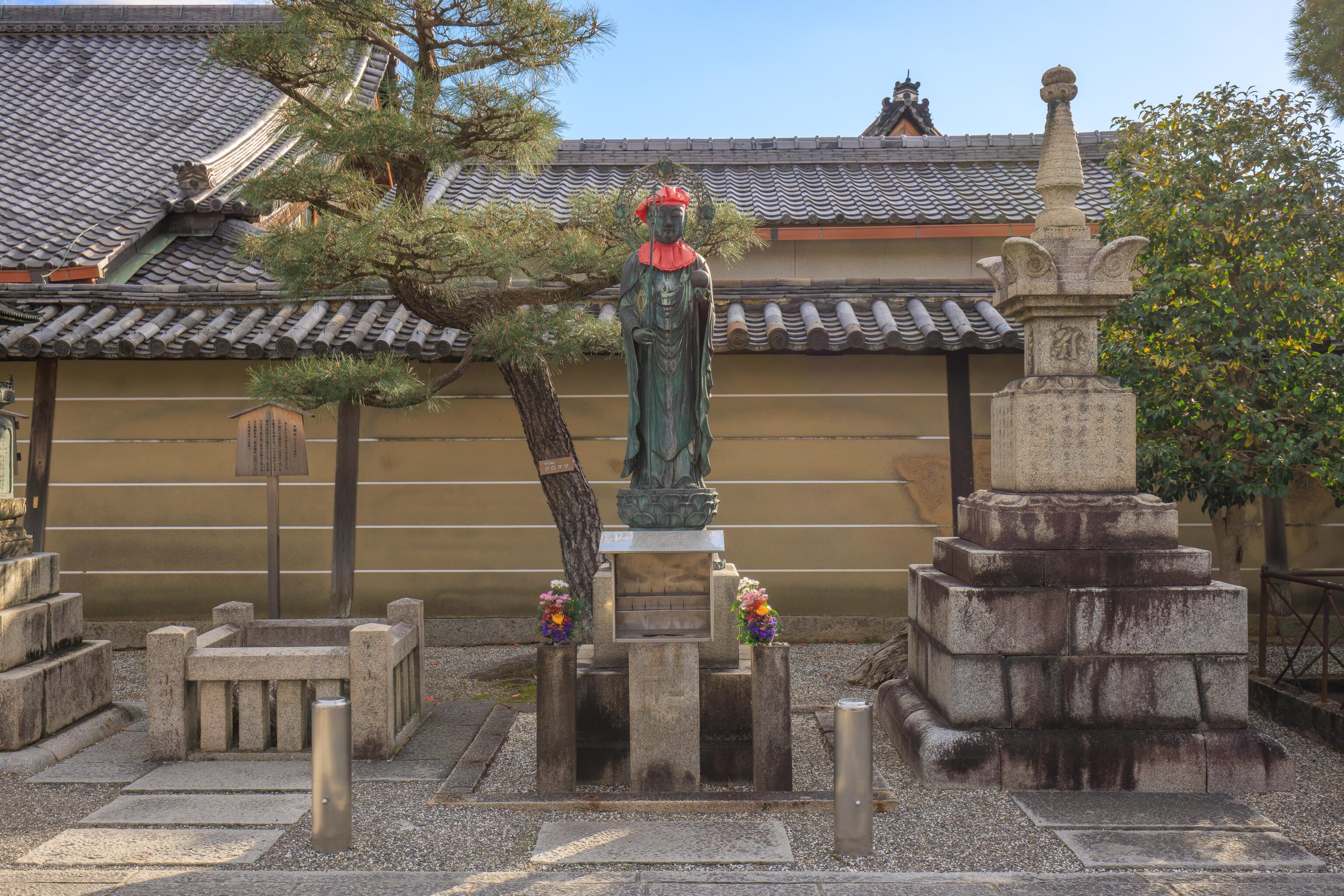
This statue stood nearby.
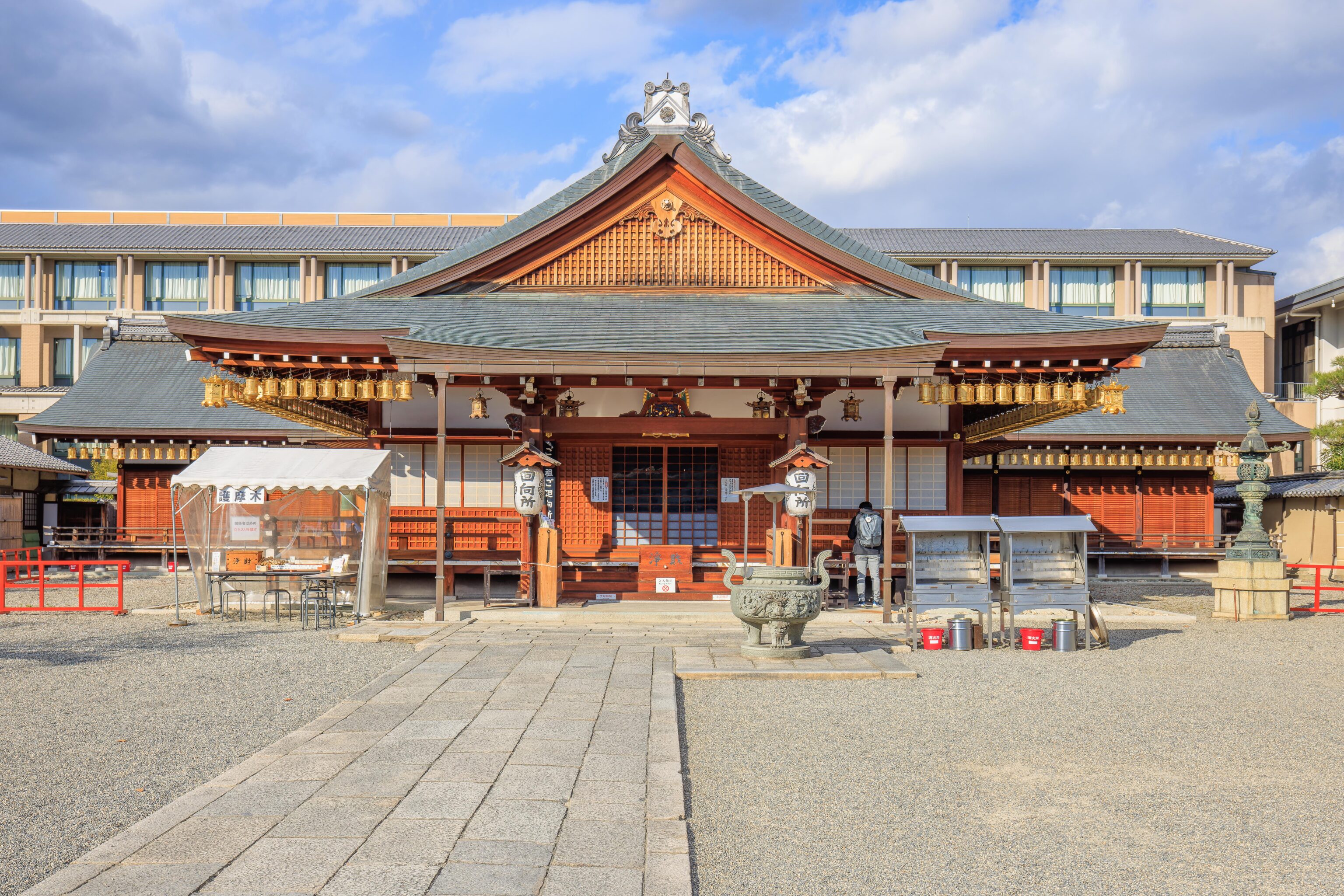
We continued on, passing by this building.
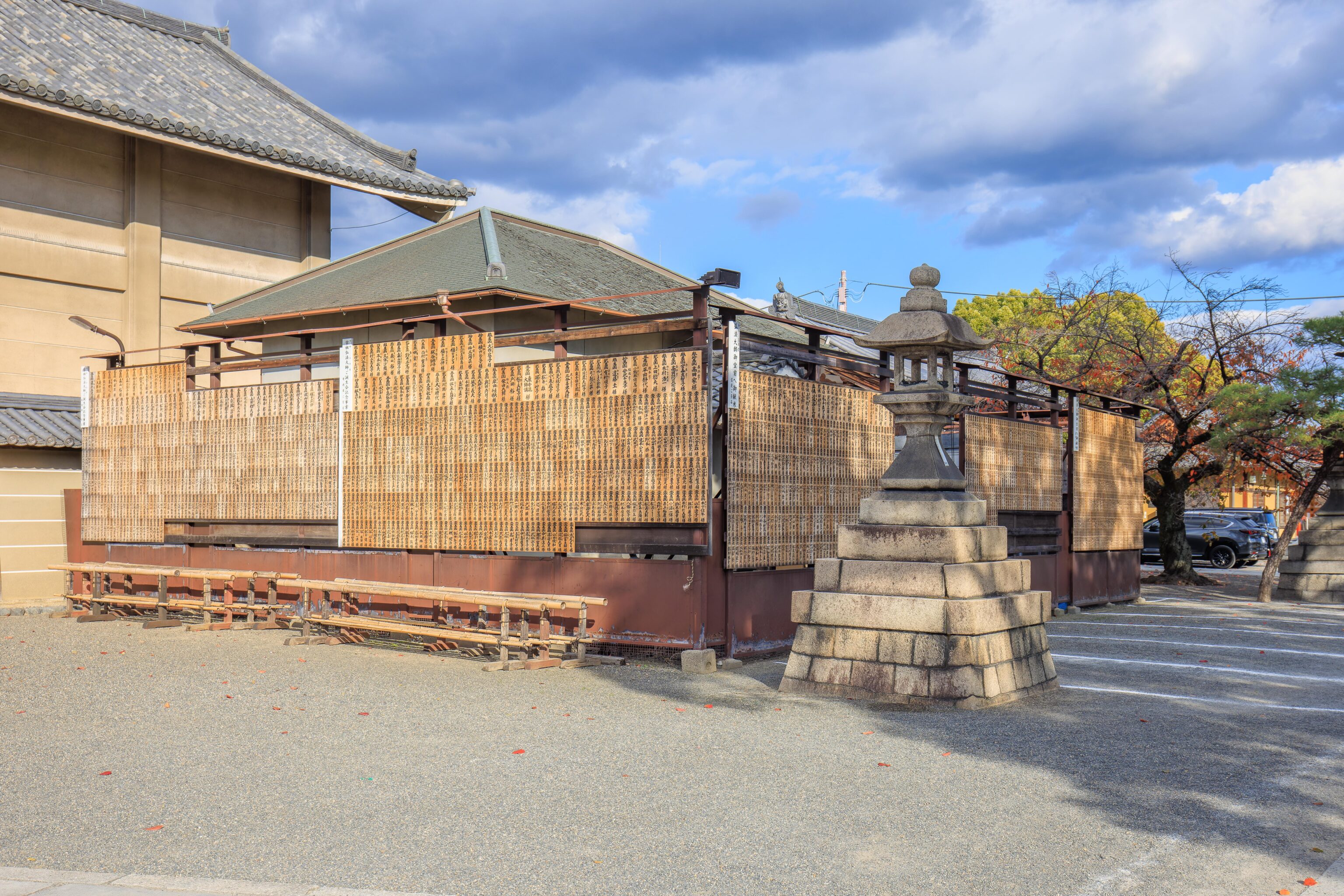
These small wooden planks are often seen at temples. They identify donors. There were many of them here!
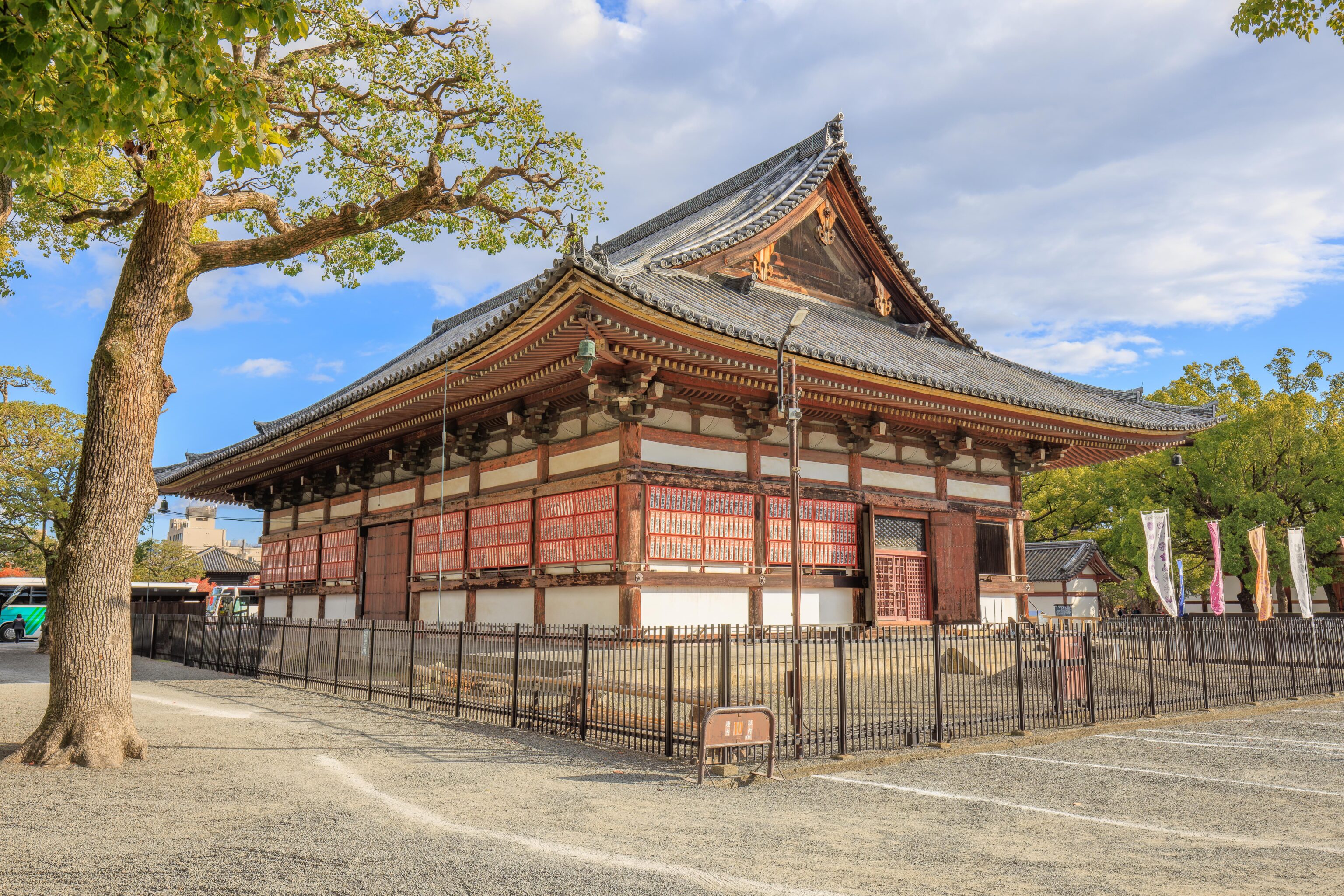
We passed by another building that was on the far side of the fence.
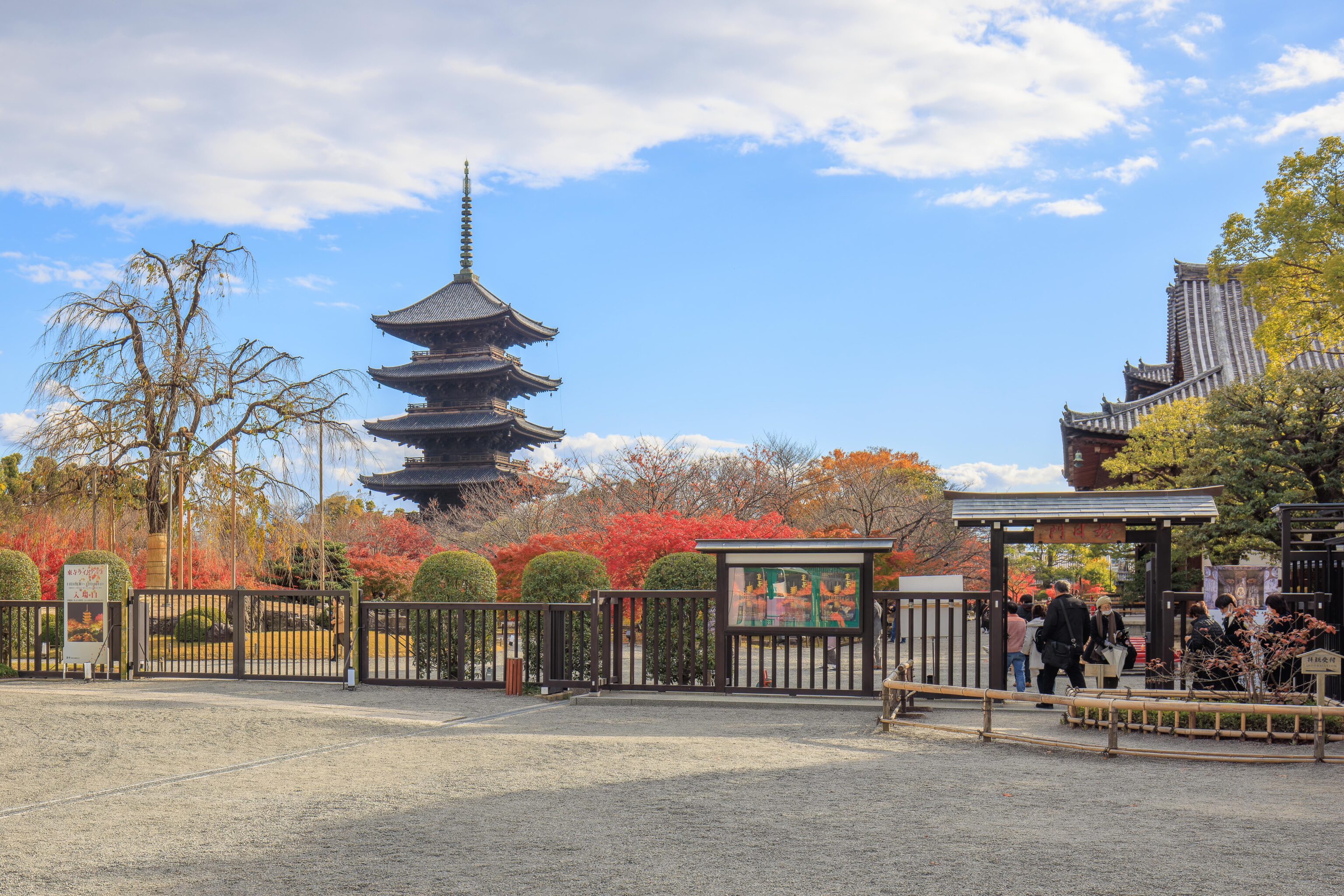
We soon found the entrance to the fenced in part of the temple! We bought tickets to enter, which provides access to the garden as well as two large buildings.
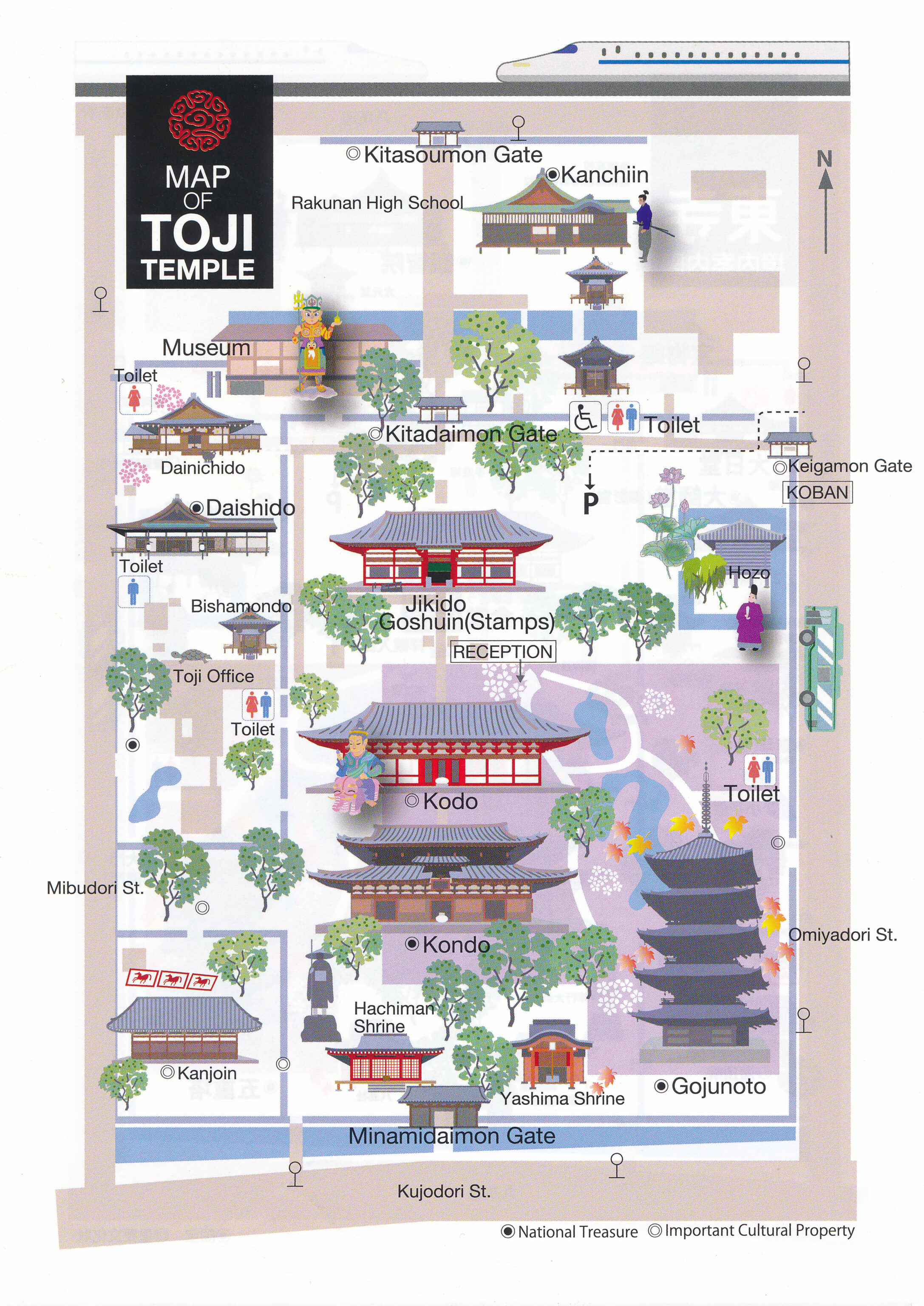
This map would have been useful!
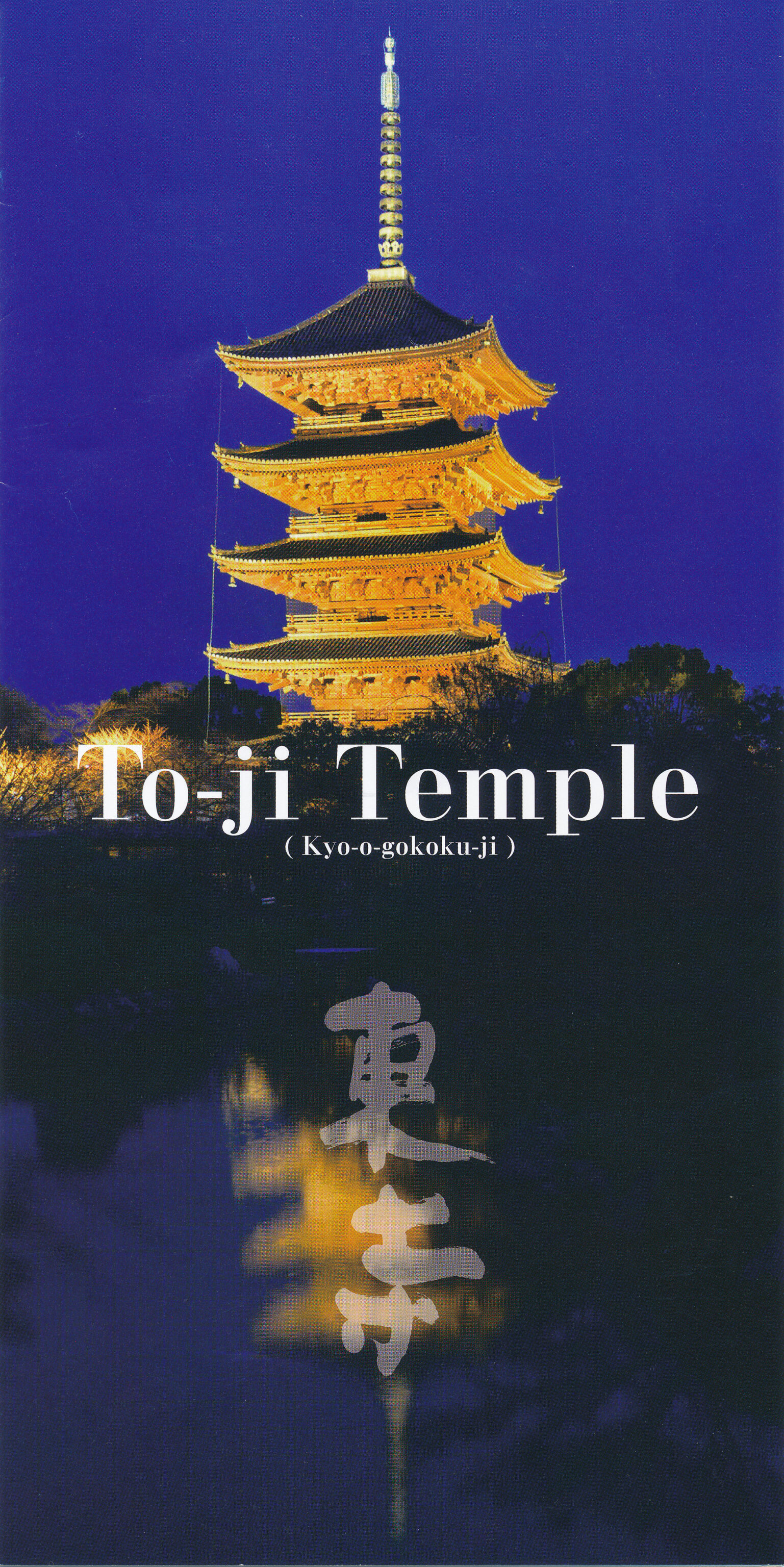
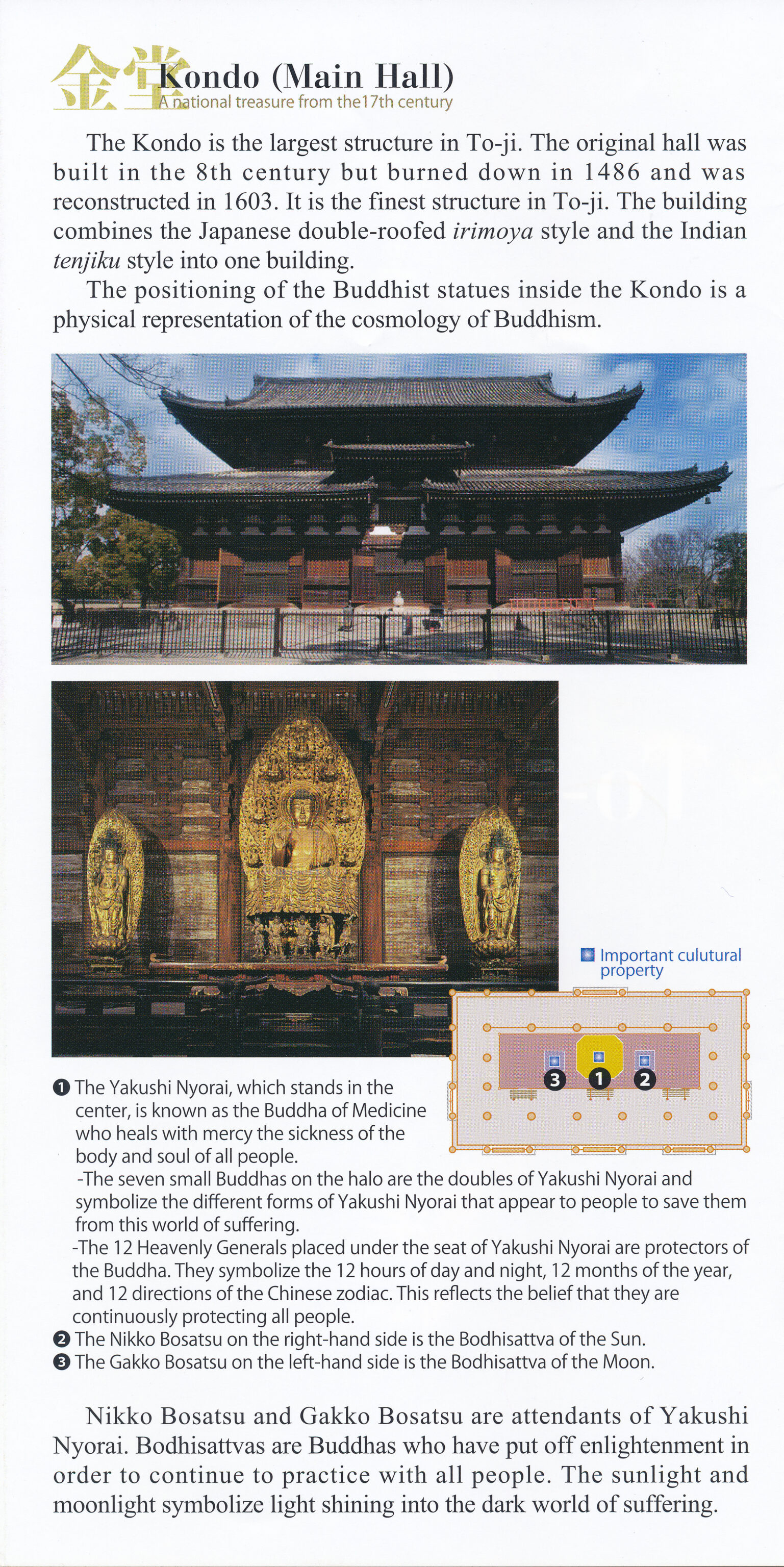
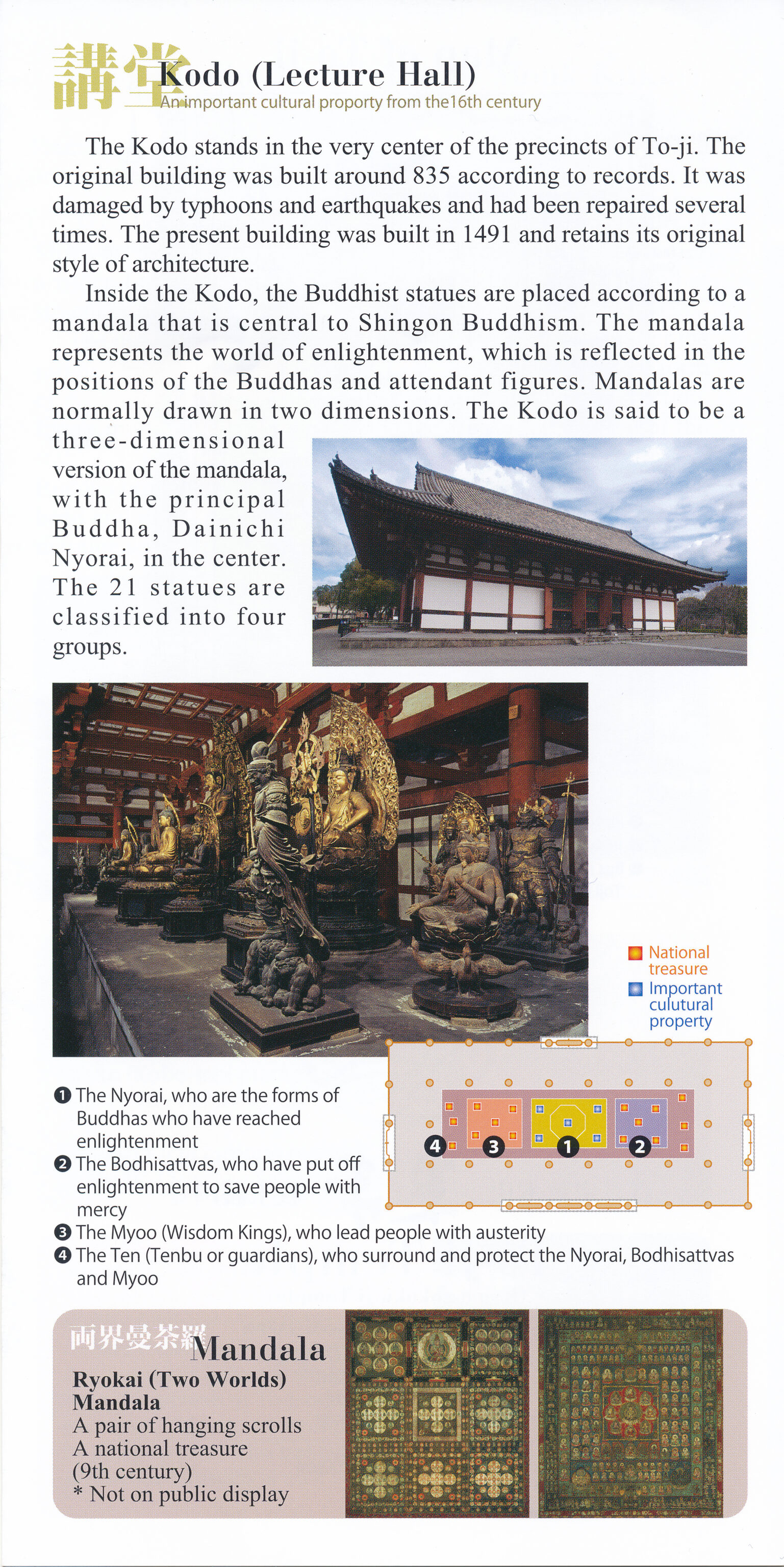
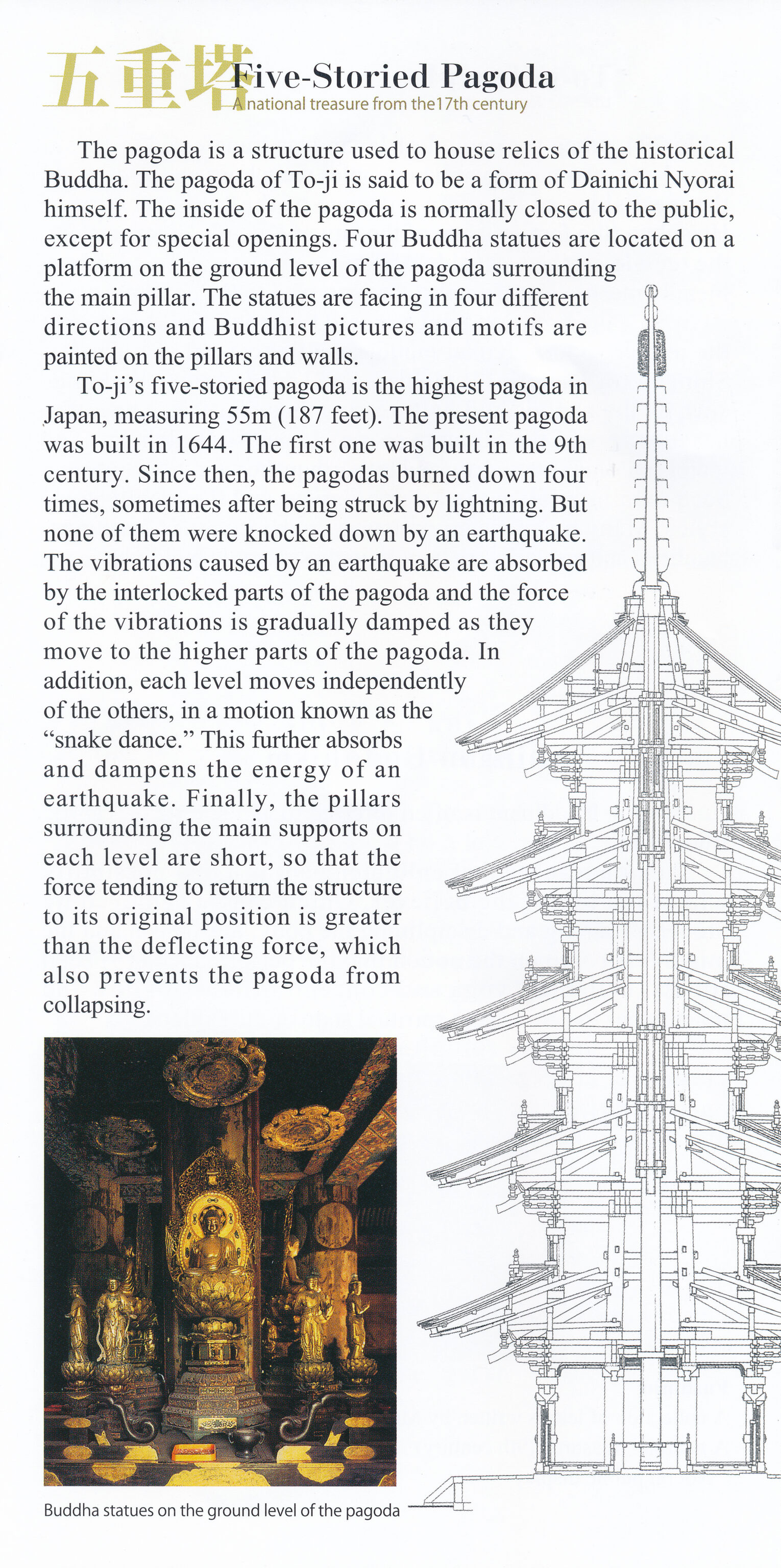
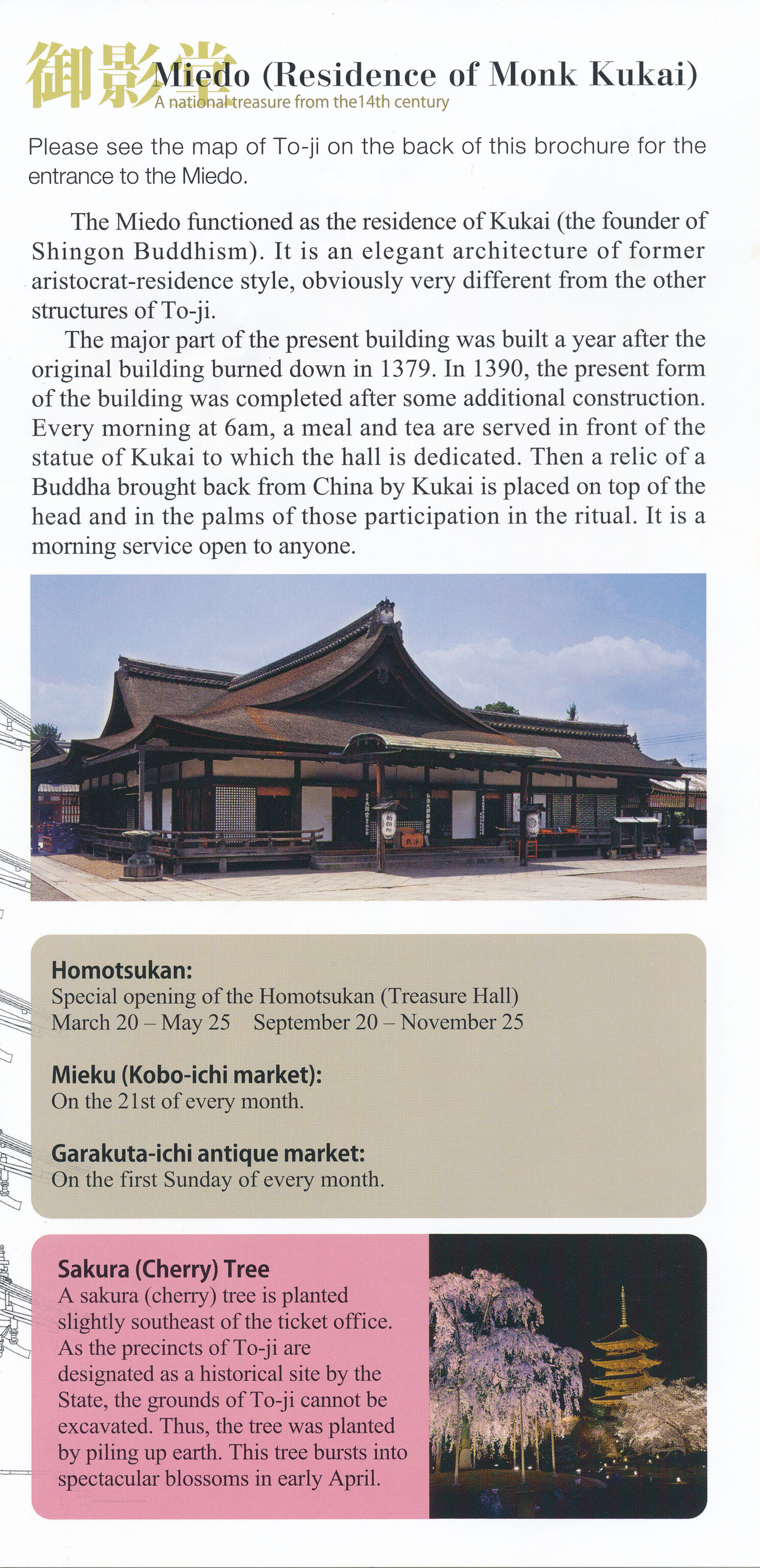
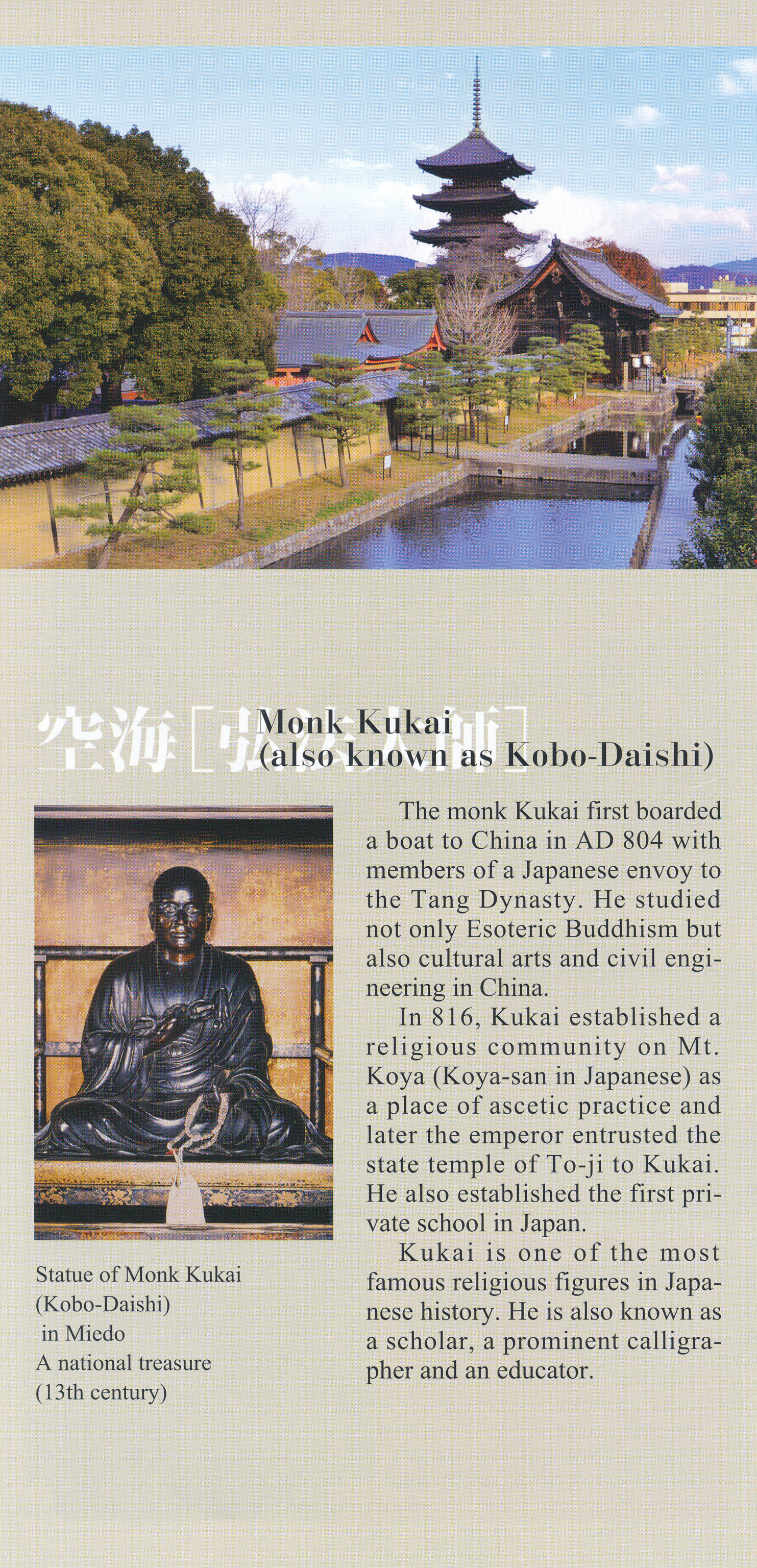
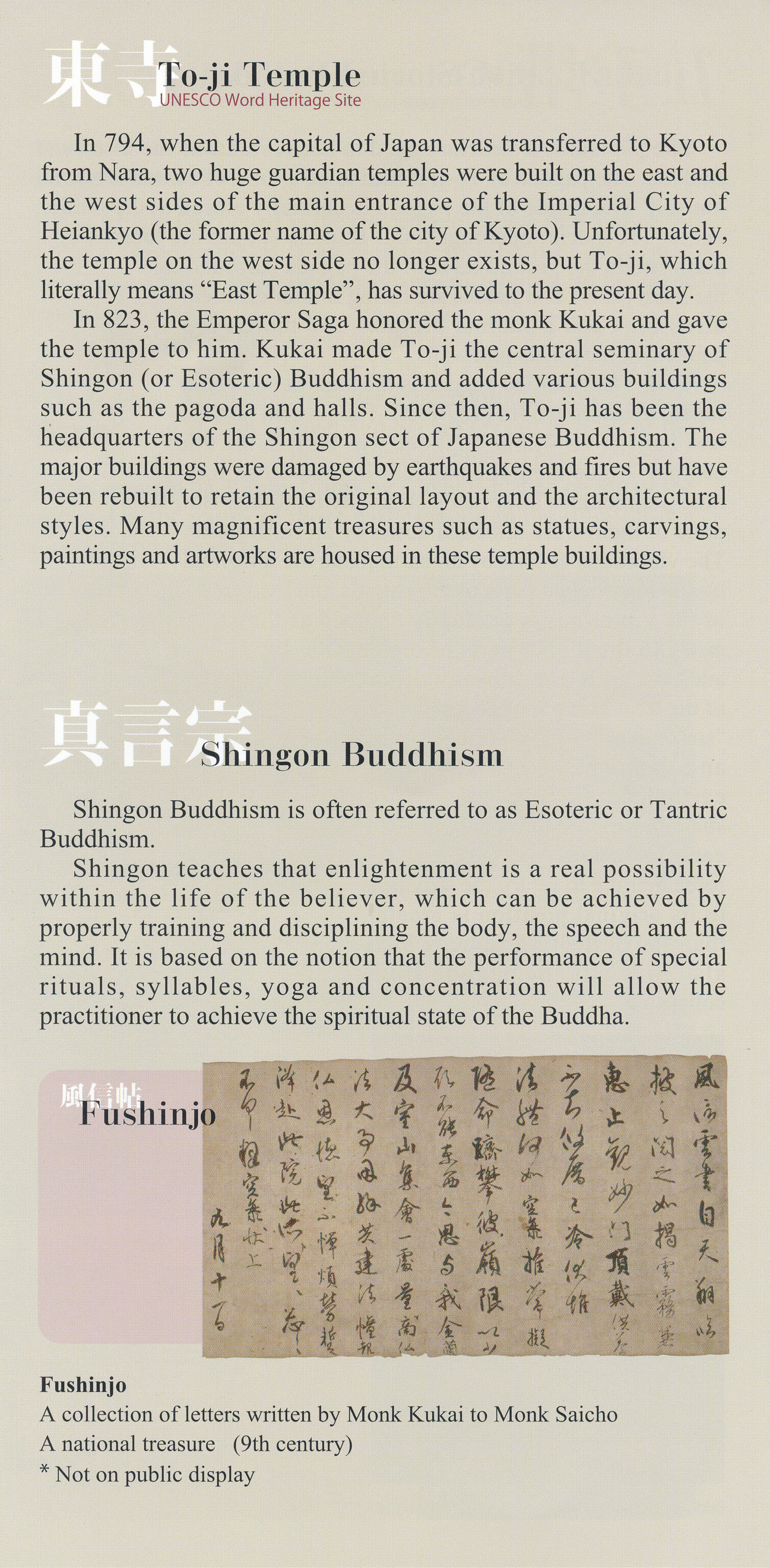
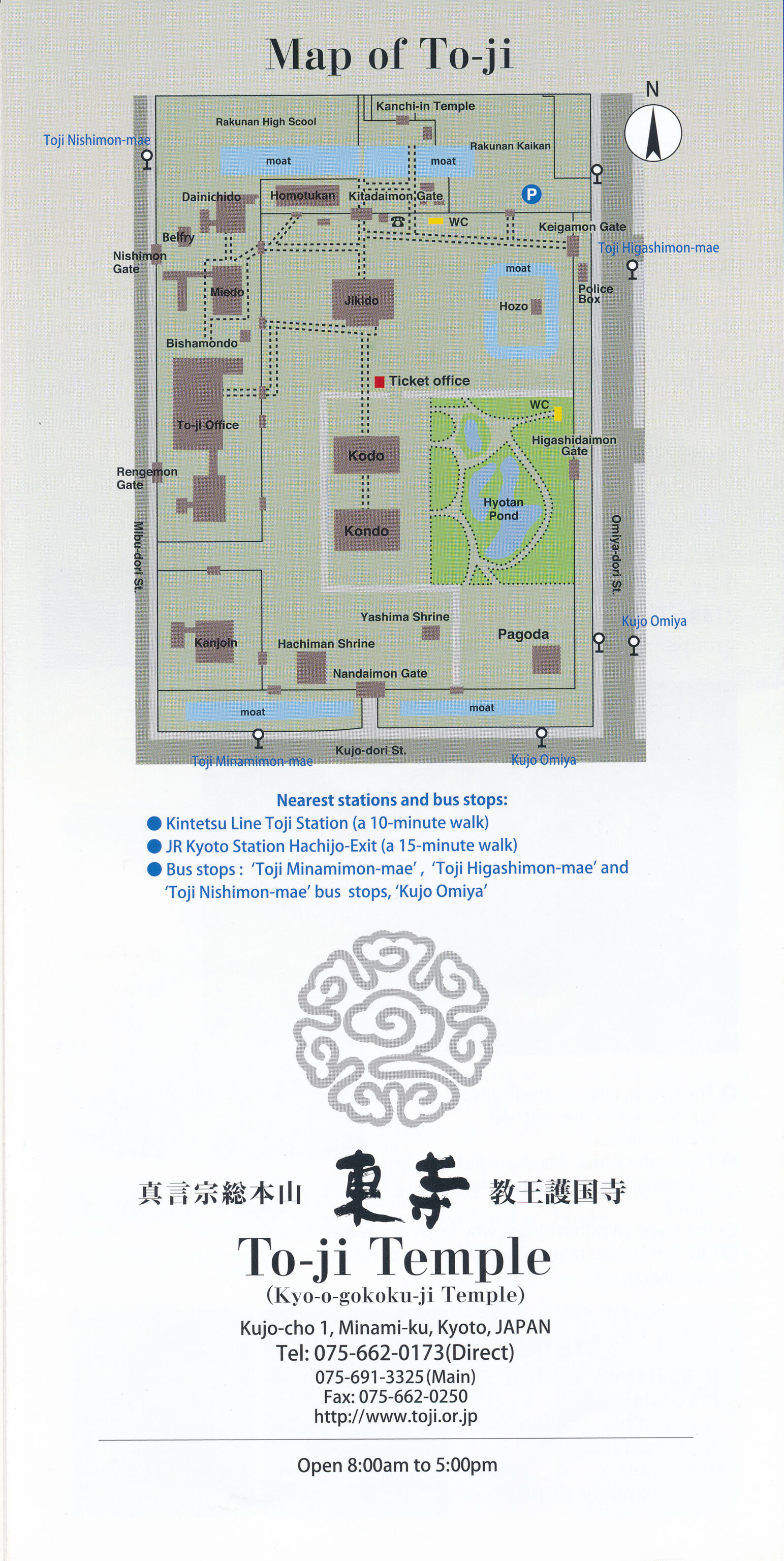
An informational pamphlet was also provided in English.
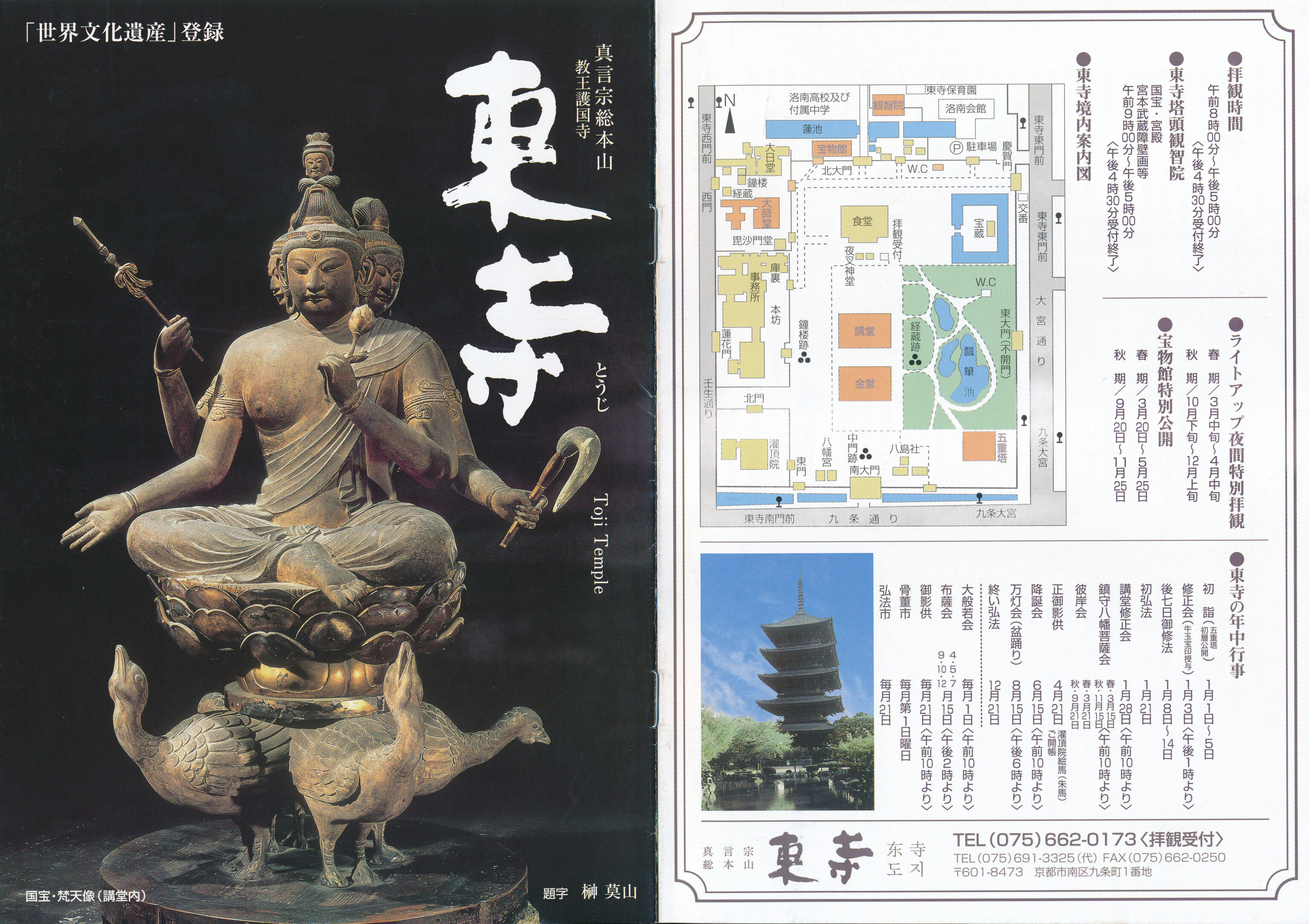
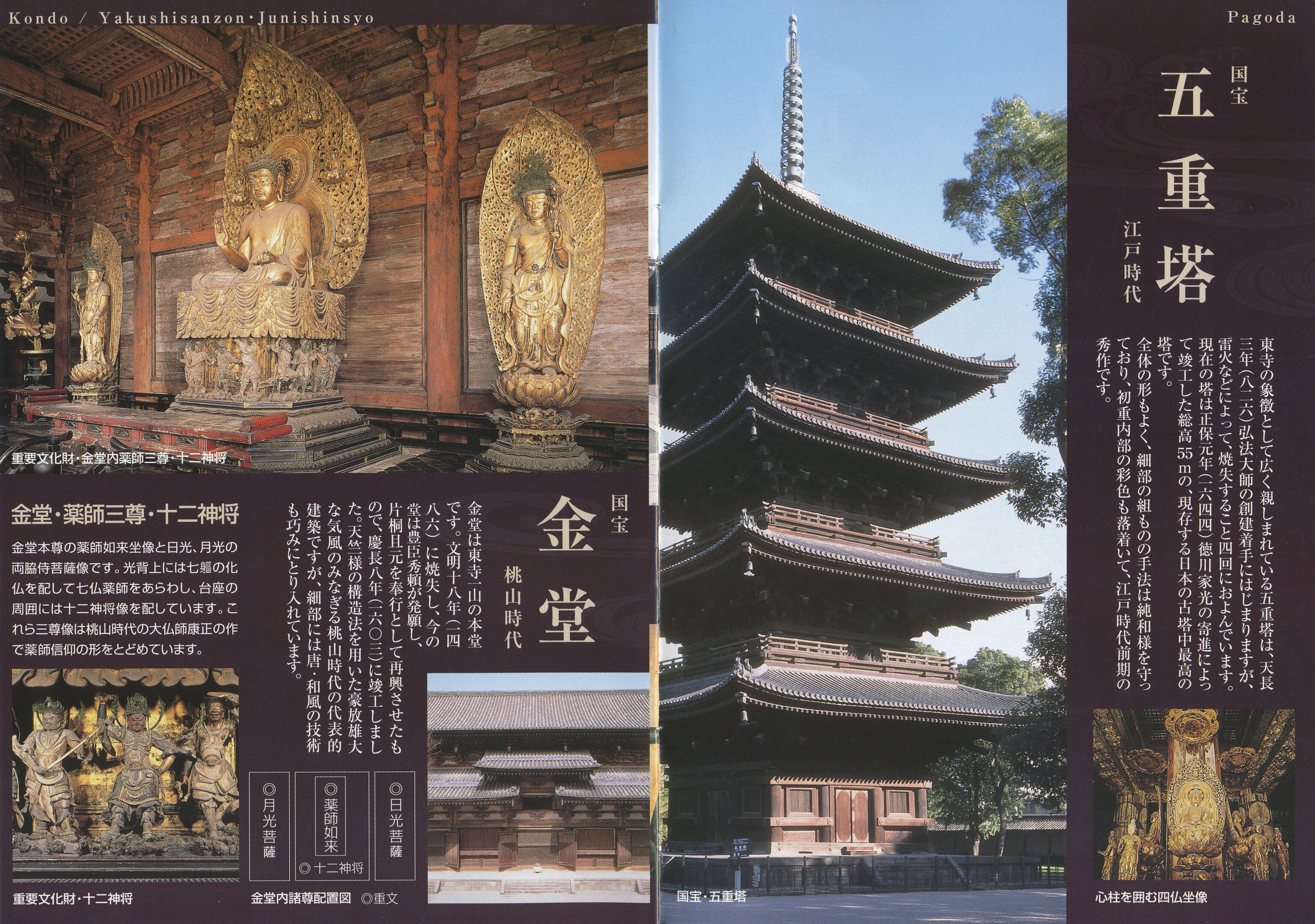
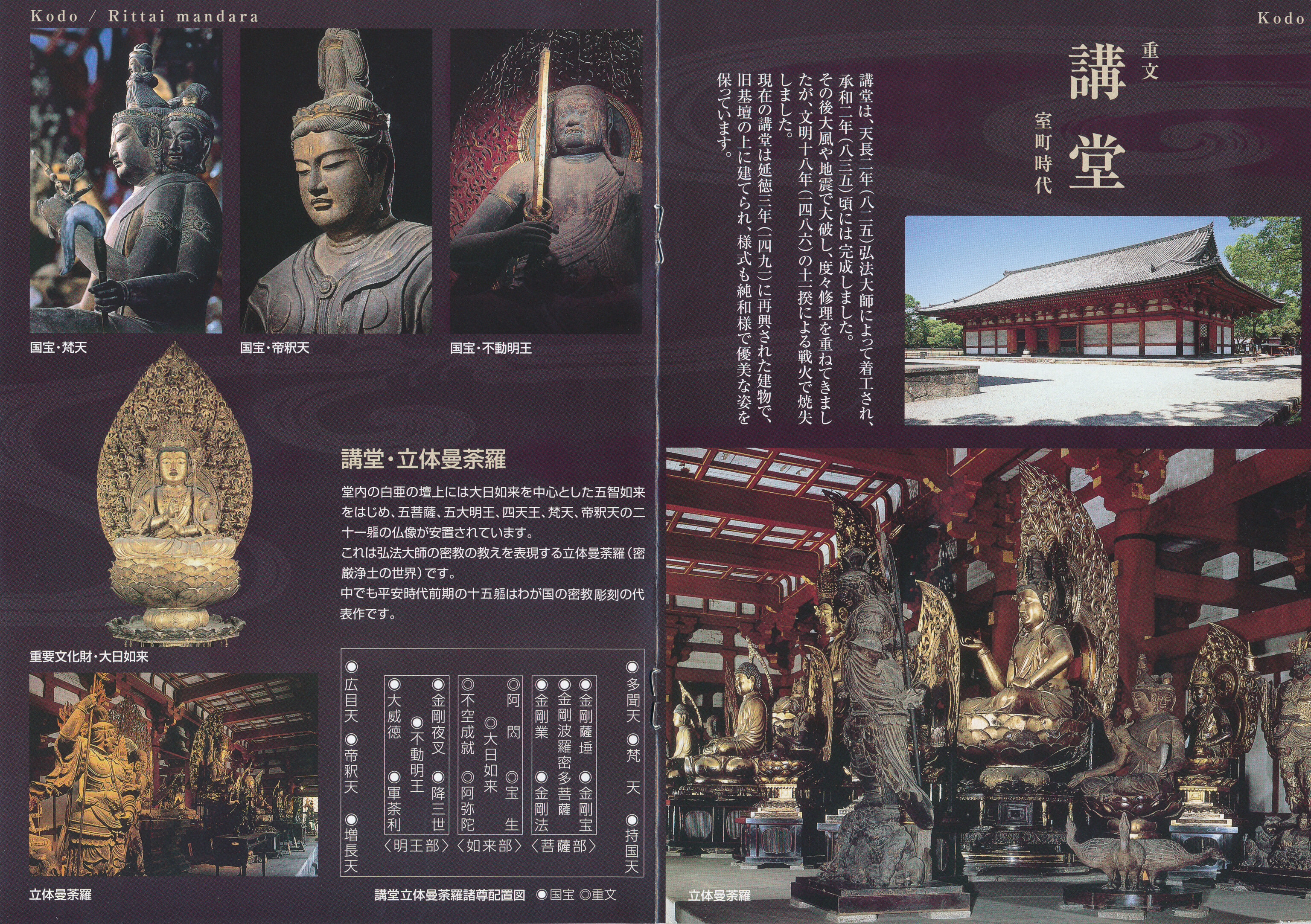
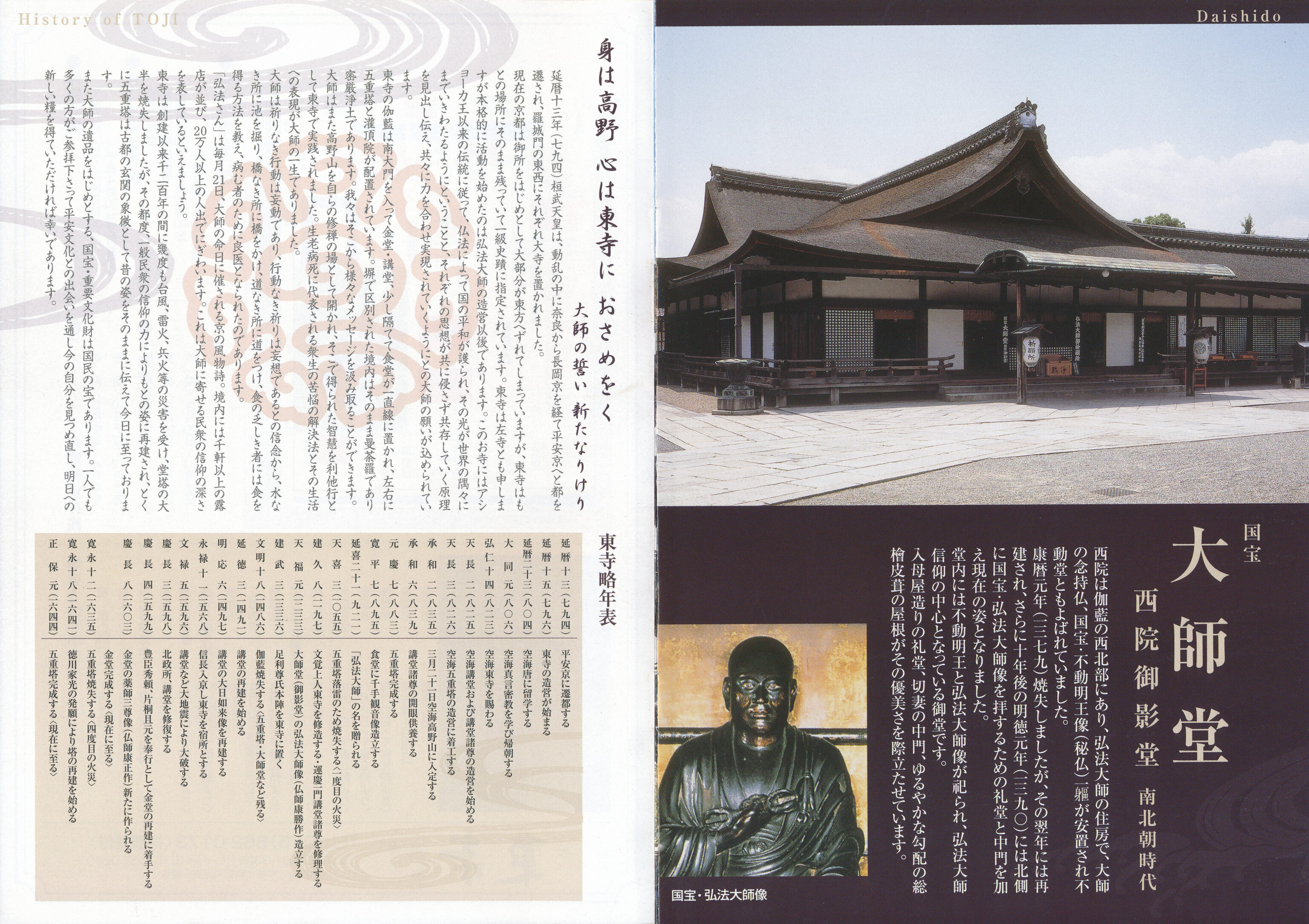
Different information was provided in Japanese.
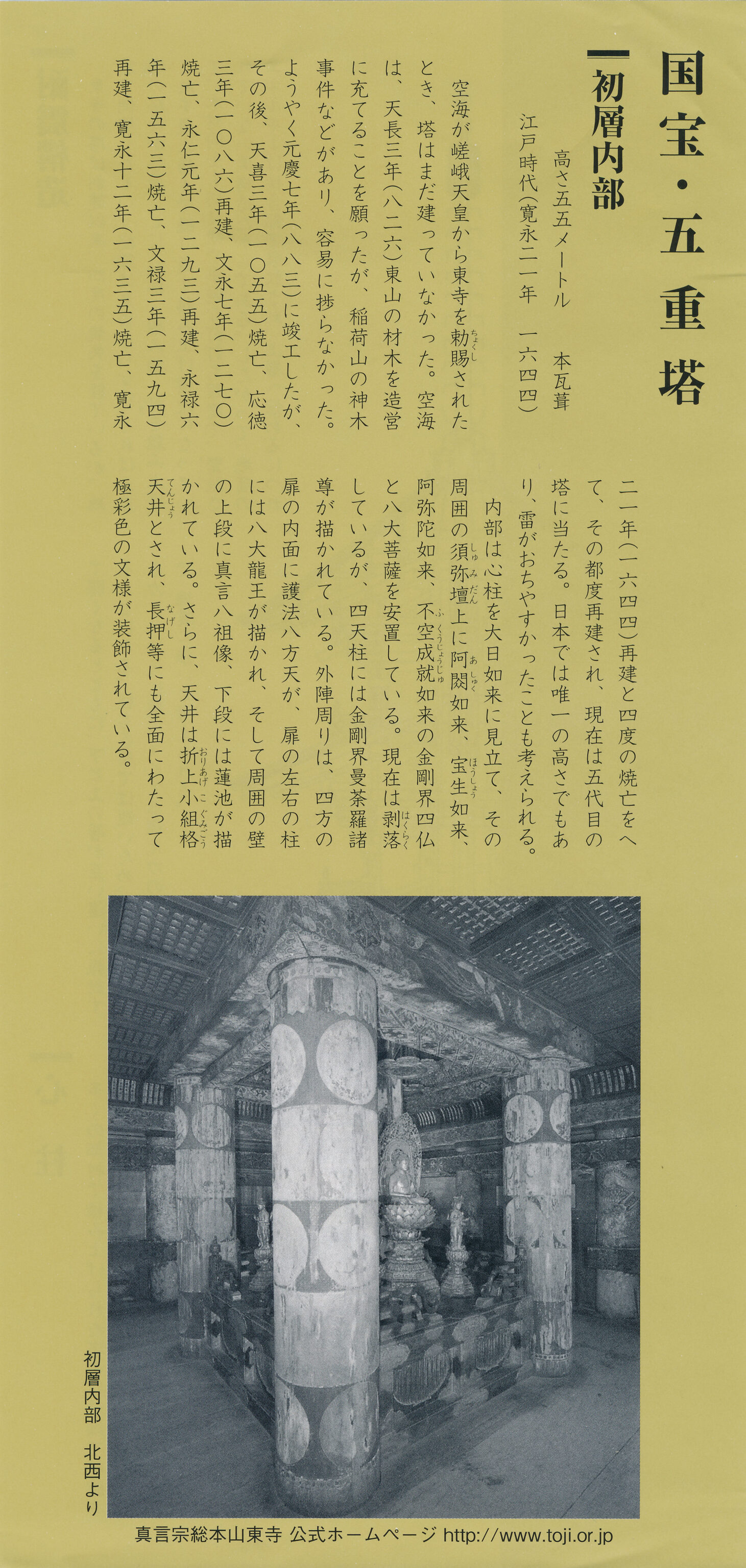
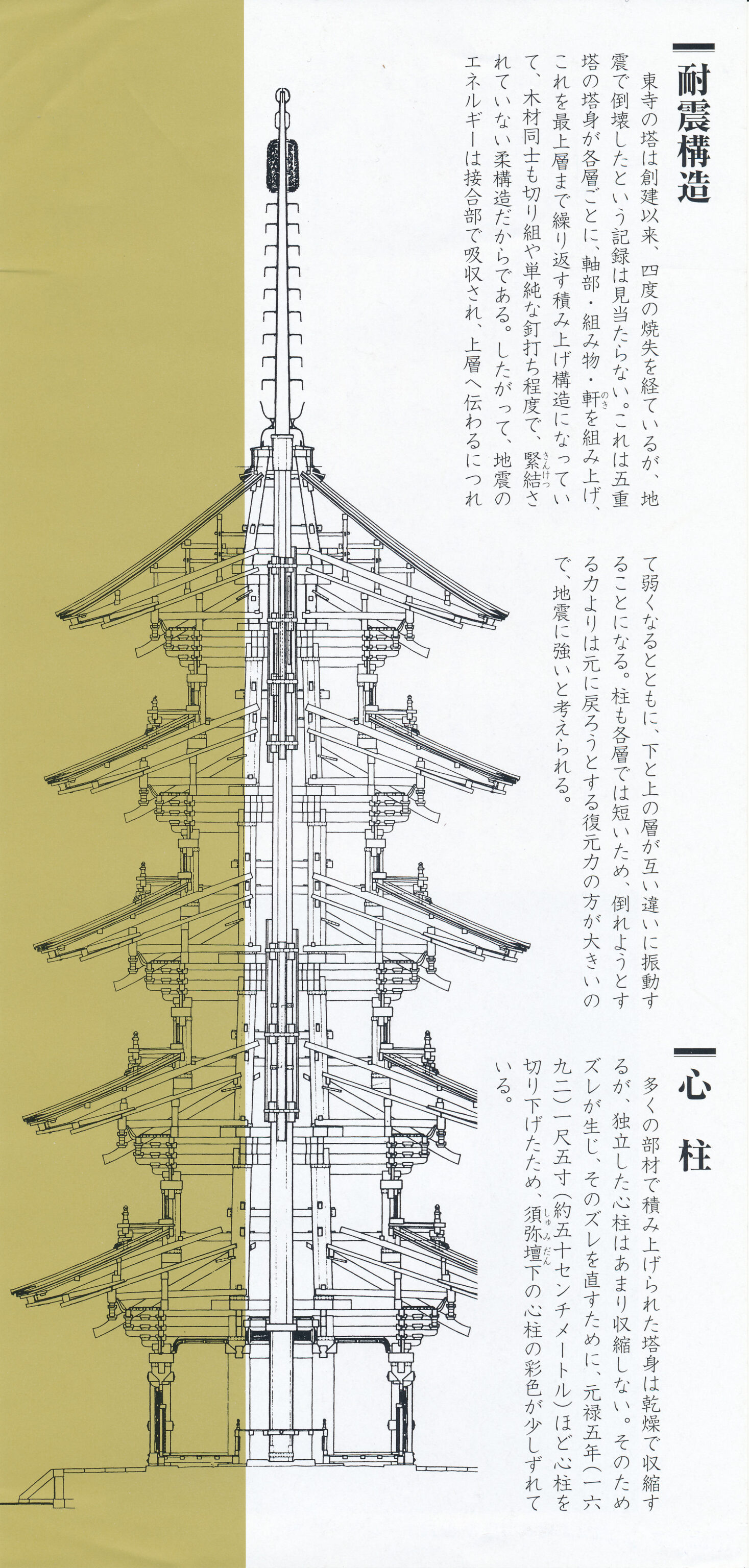
As well as some information specifically about the five story pagoda.
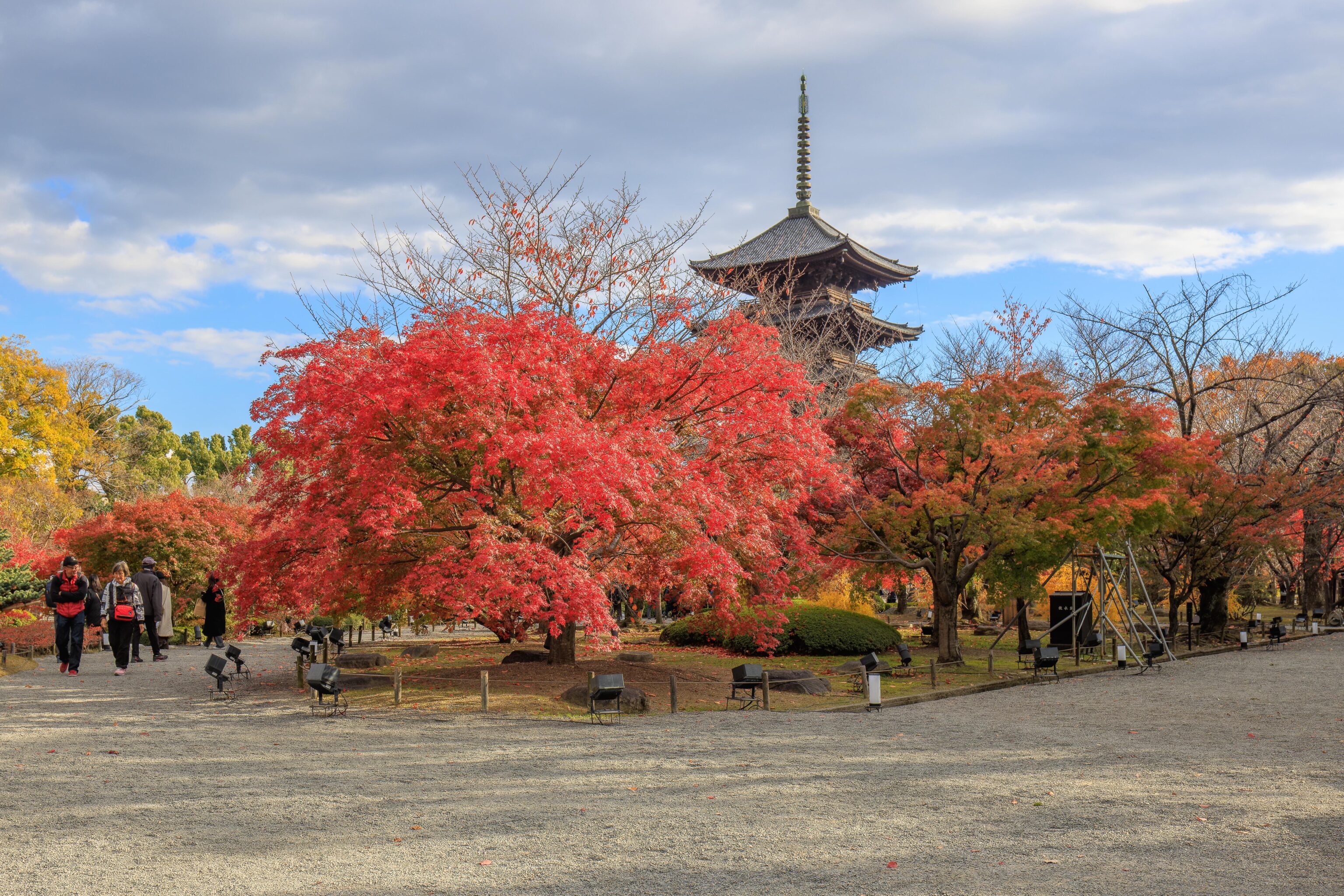
Although there were some Japanese maples, there were also many other trees which were done for the season.
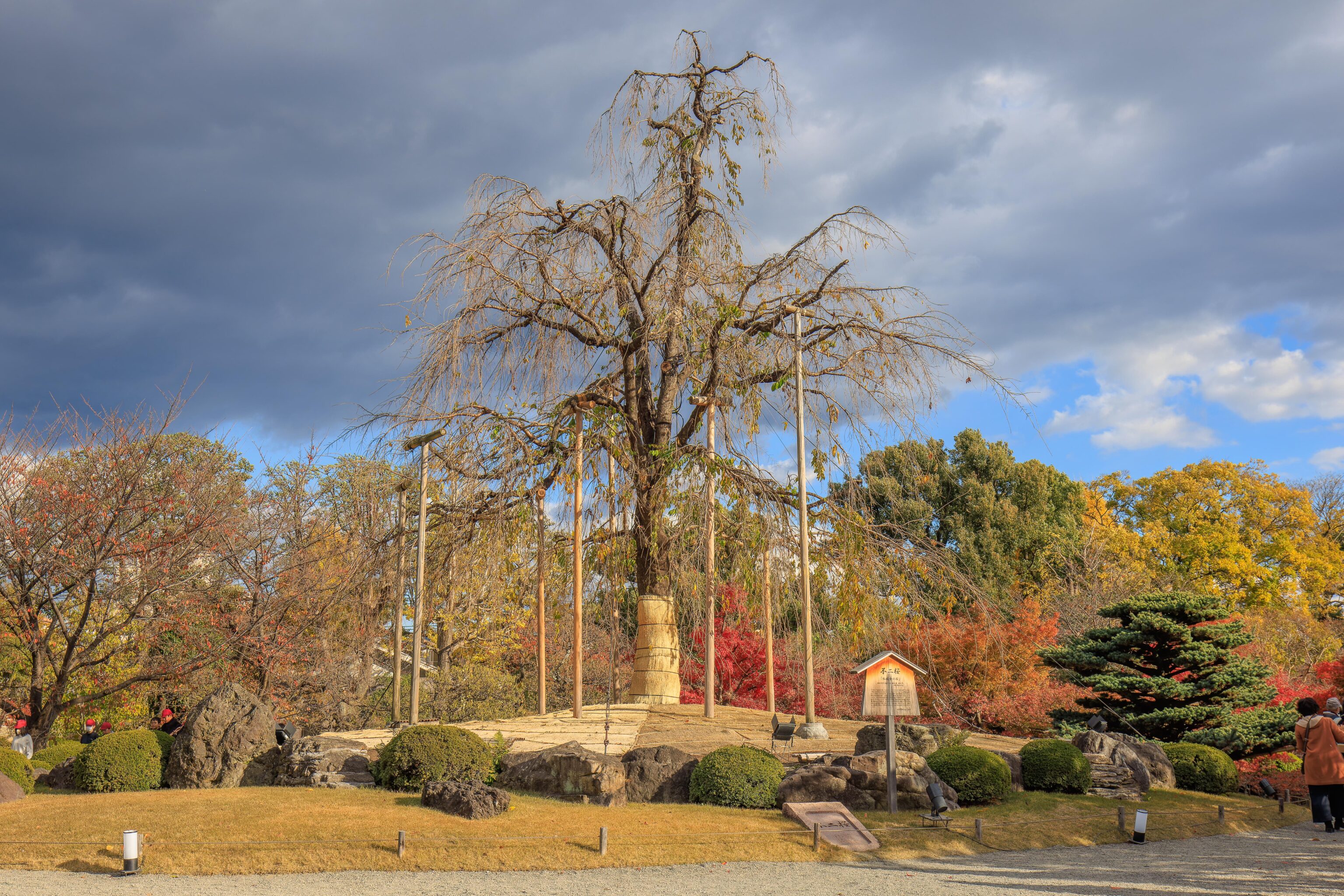
This very large cherry blossom tree was without leaves as well.
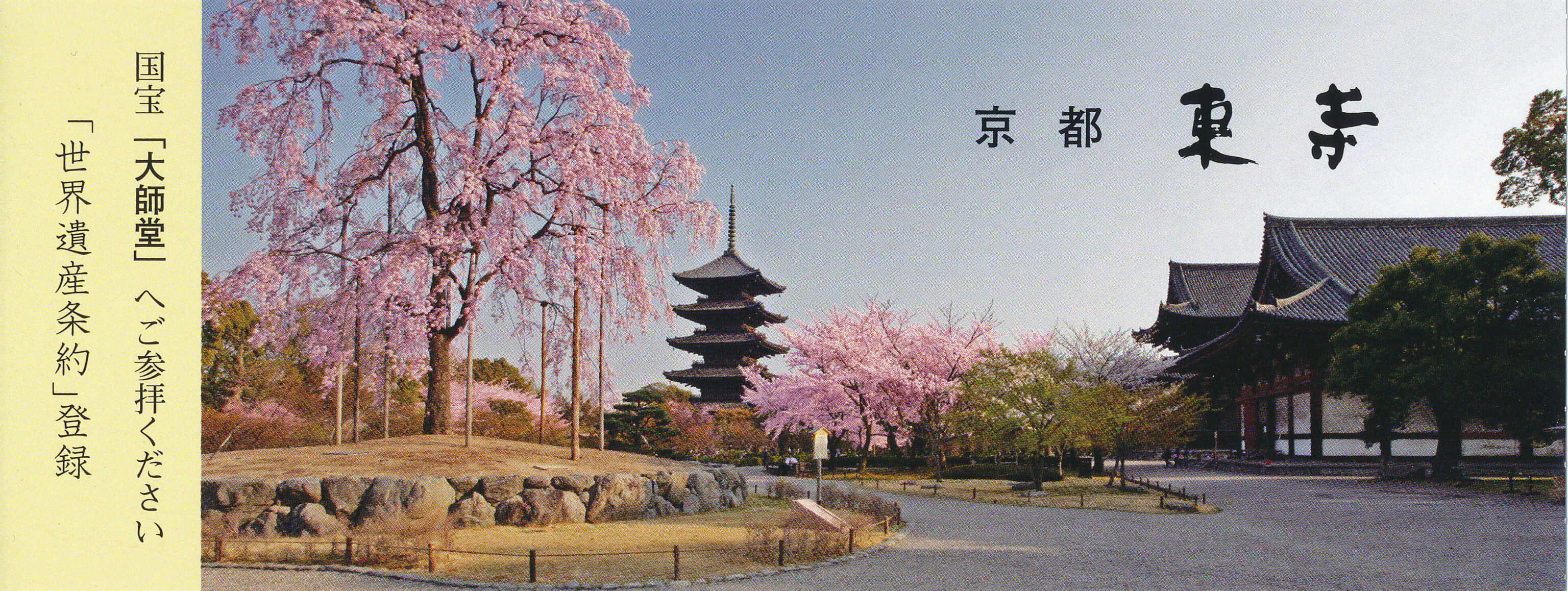
The ticket shows how it looks during the spring. Very pretty!
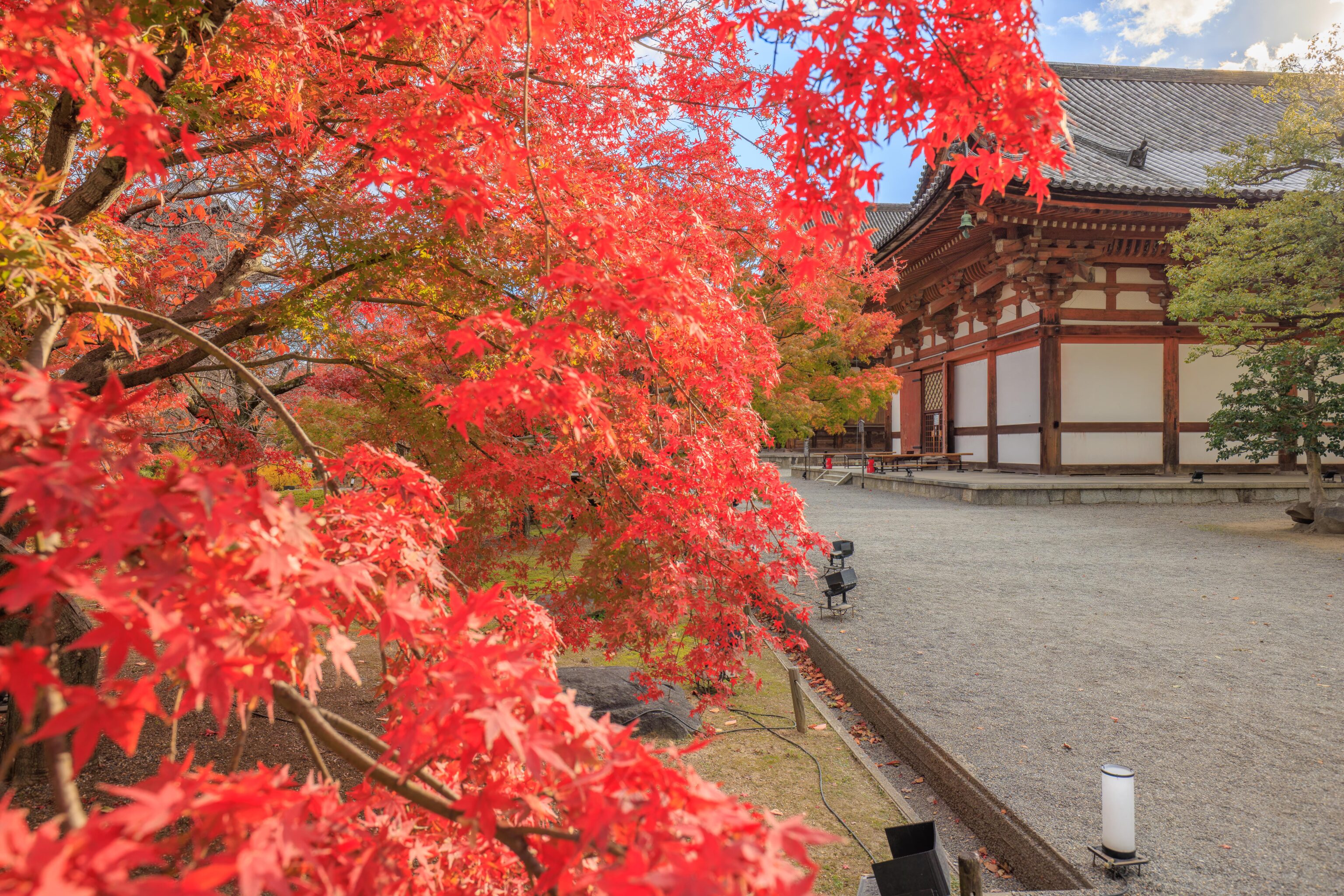
A closer look at some of the nearby maple leaves.
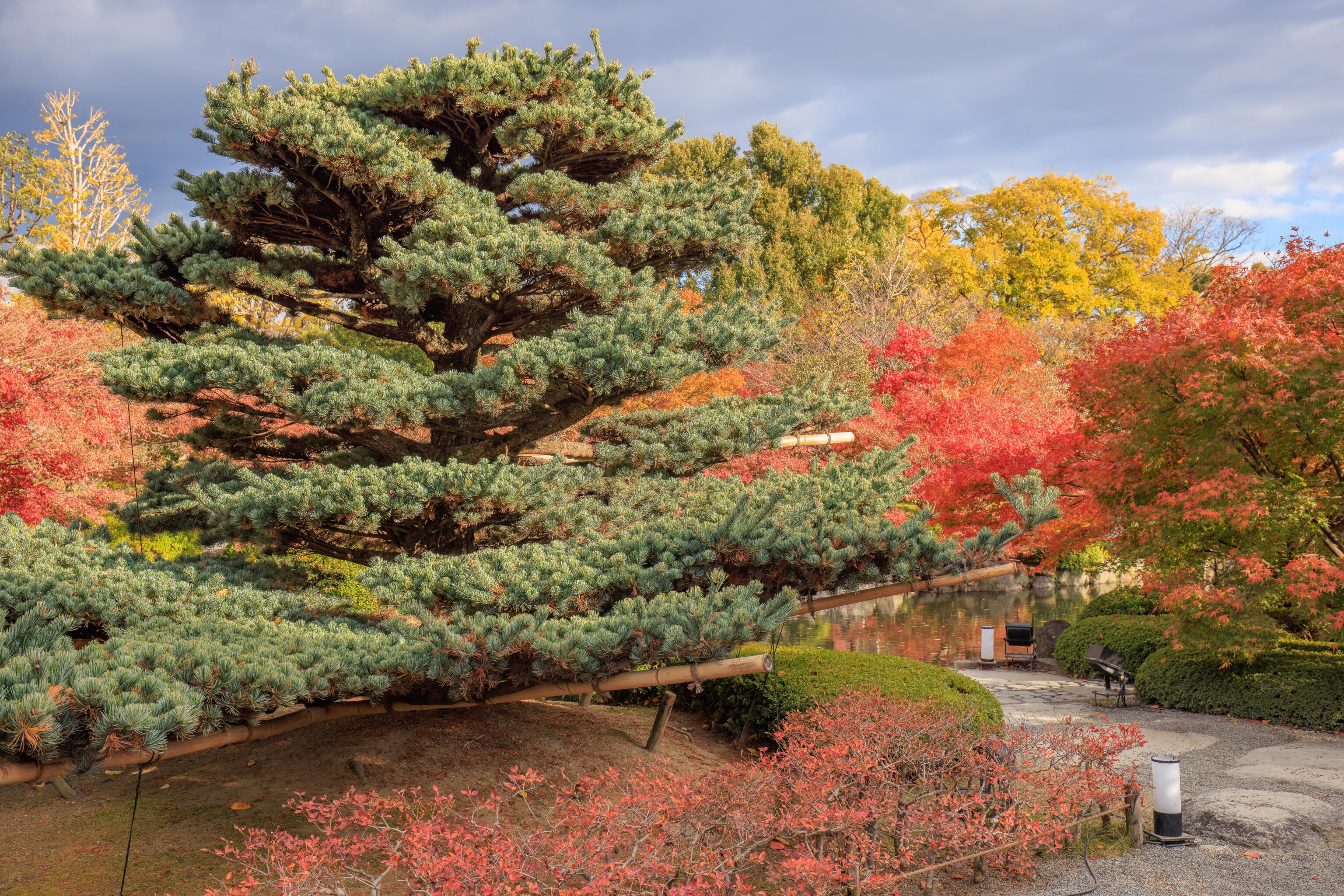
These bamboo sections seem to be holding down the this tree’s branches so that it forms the desired shape?
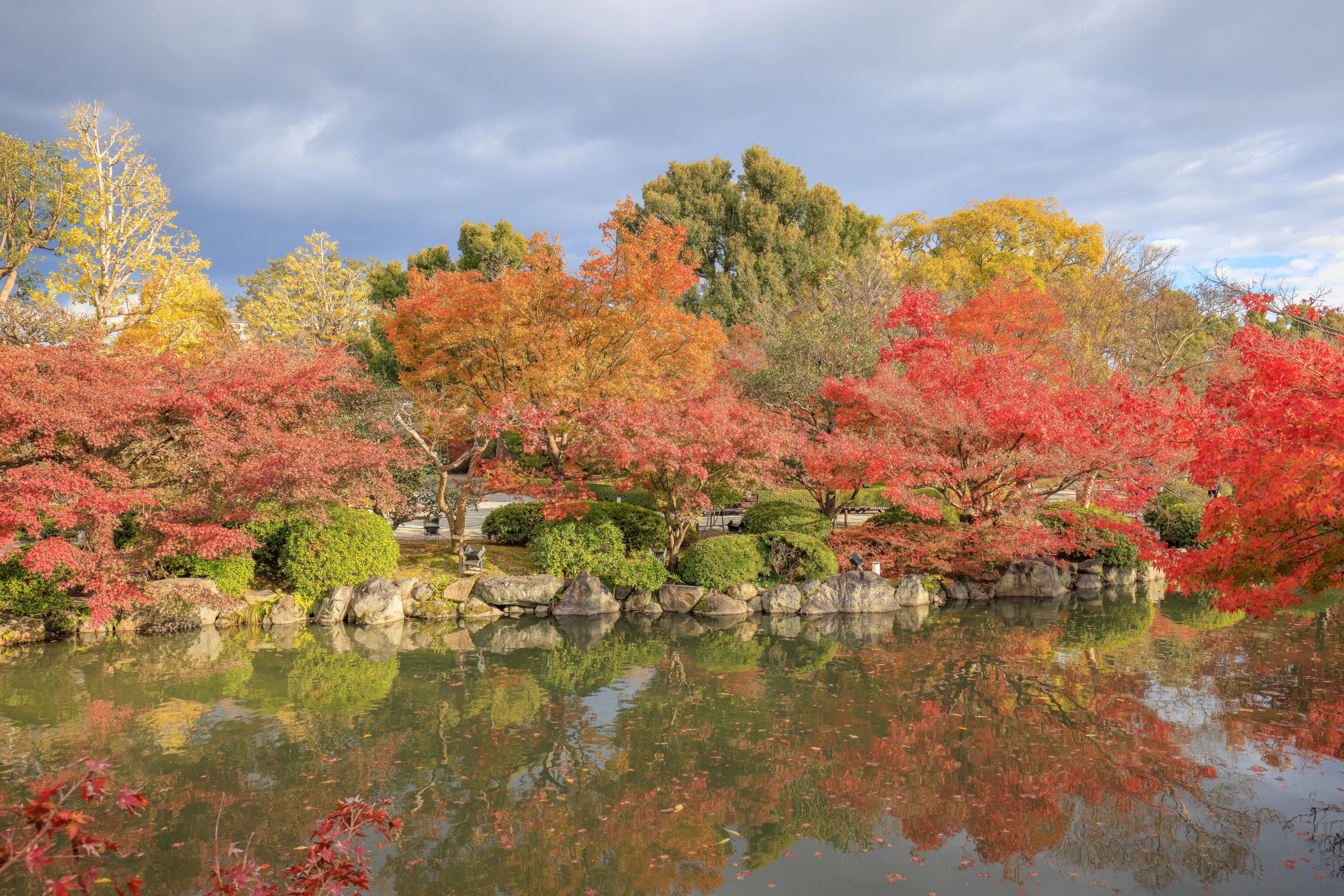
The surface of the garden’s pond was pretty still, though its beauty was marred a bit by floating leaves.
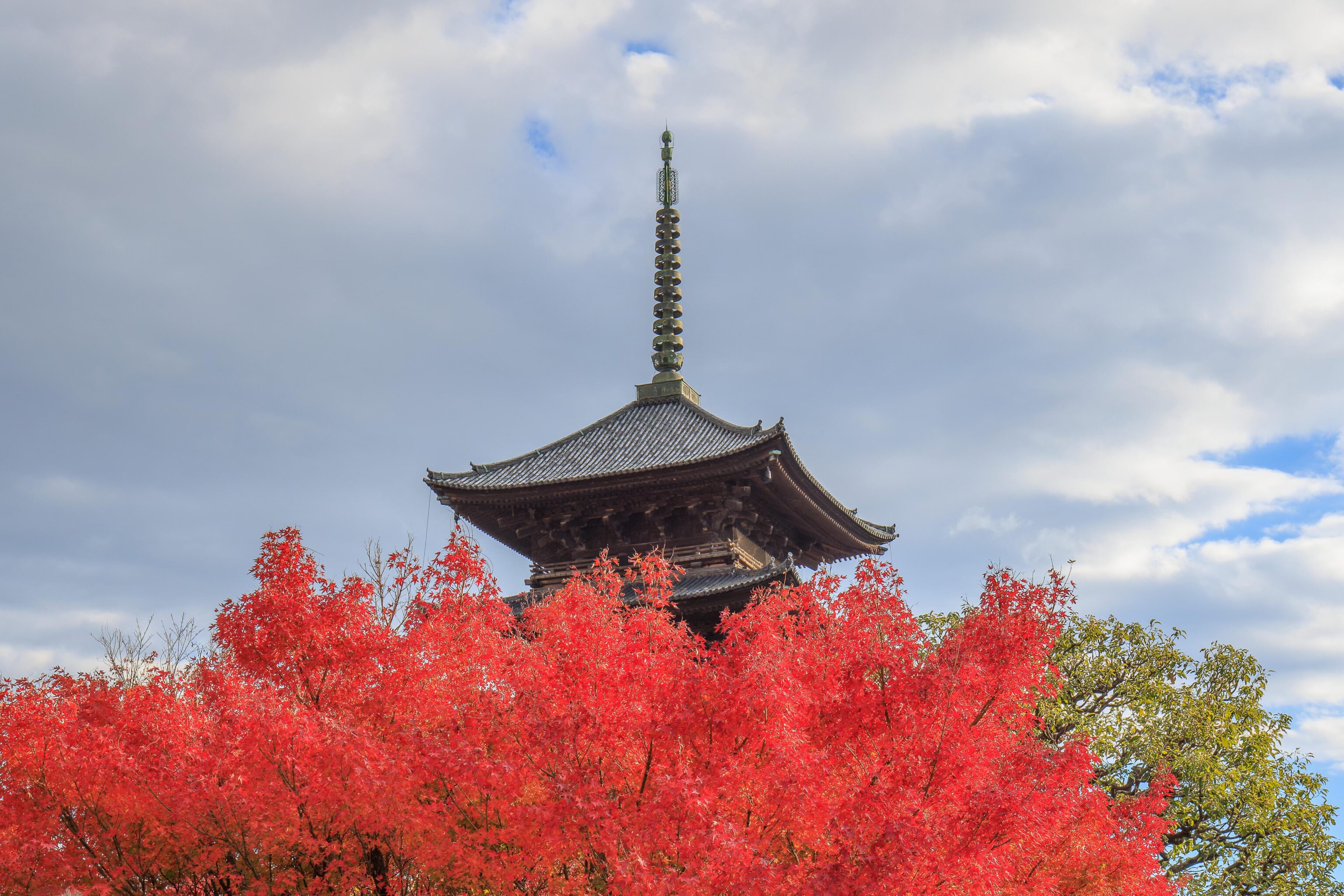
The five story pagoda popping out from behind a maple tree.
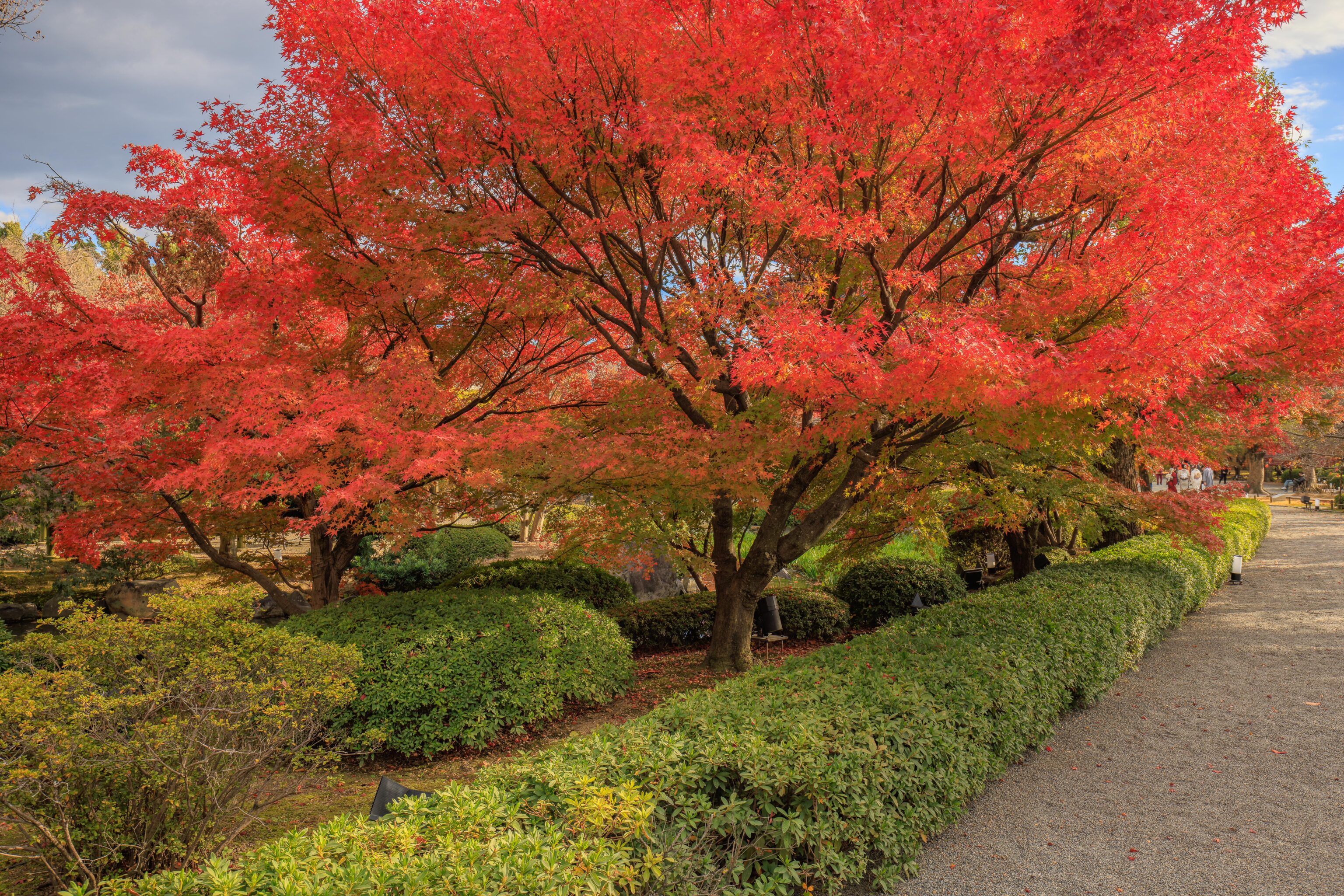
Another nice maple tree view as we approached the entrance to the Kodo. Photography was not permitted in any of the indoor spaces.
After walking through the Kodo, we walked though the adjacent Kondo.
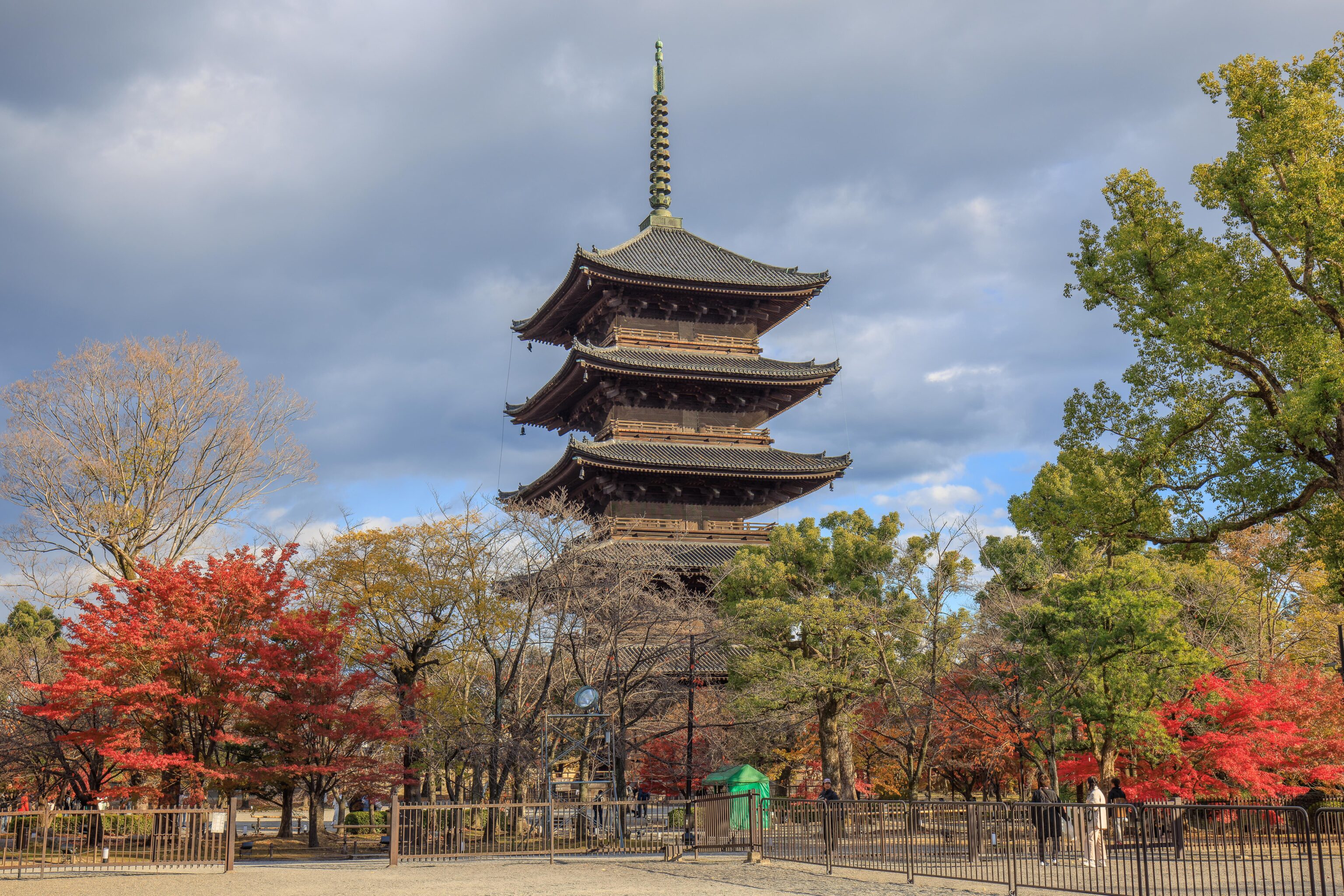
The five story pagoda from the Kondo. We originally entered the temple grounds around here, to the right of the fence.
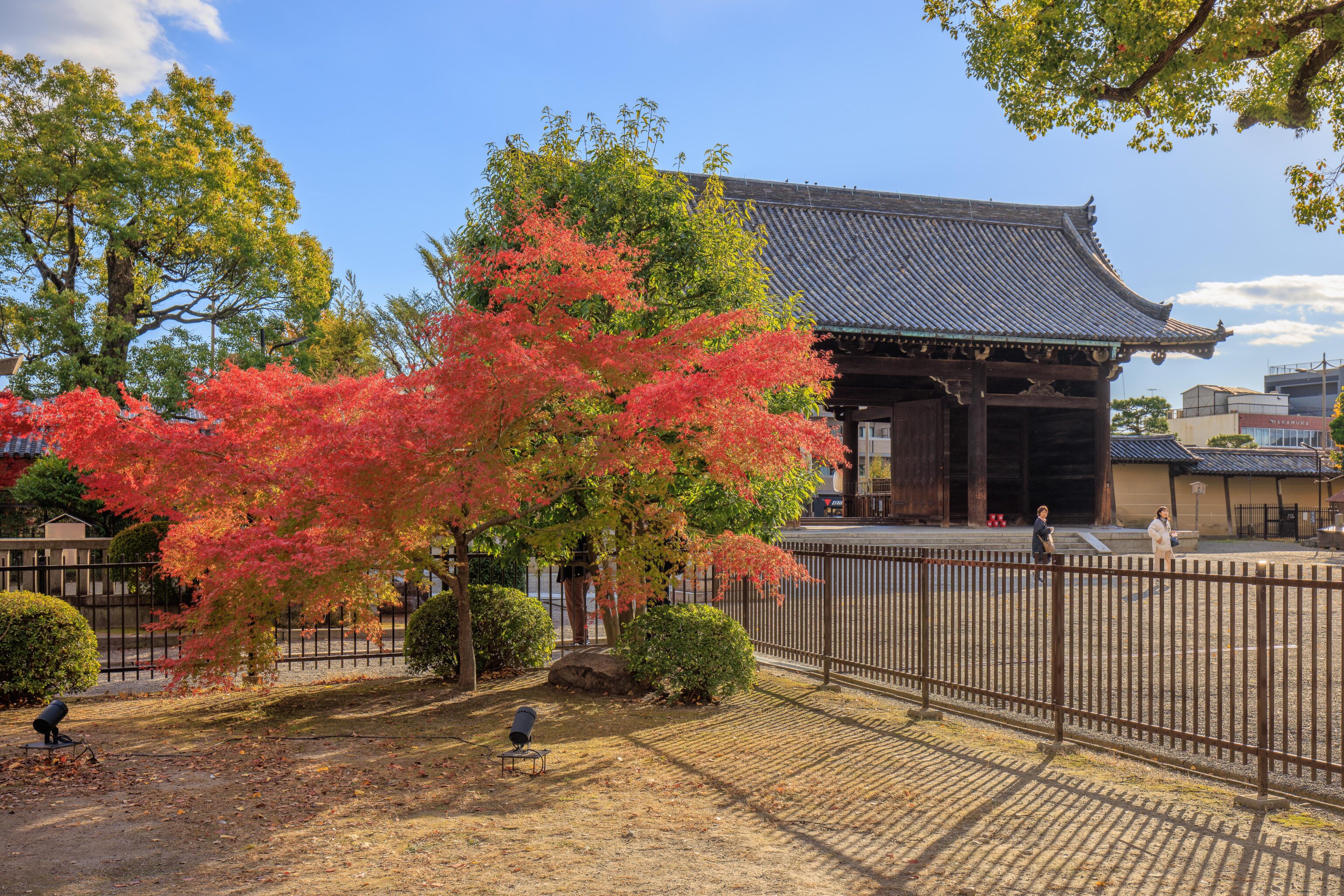
The gate that we entered through, along with a few people on the opposite side of the fence.
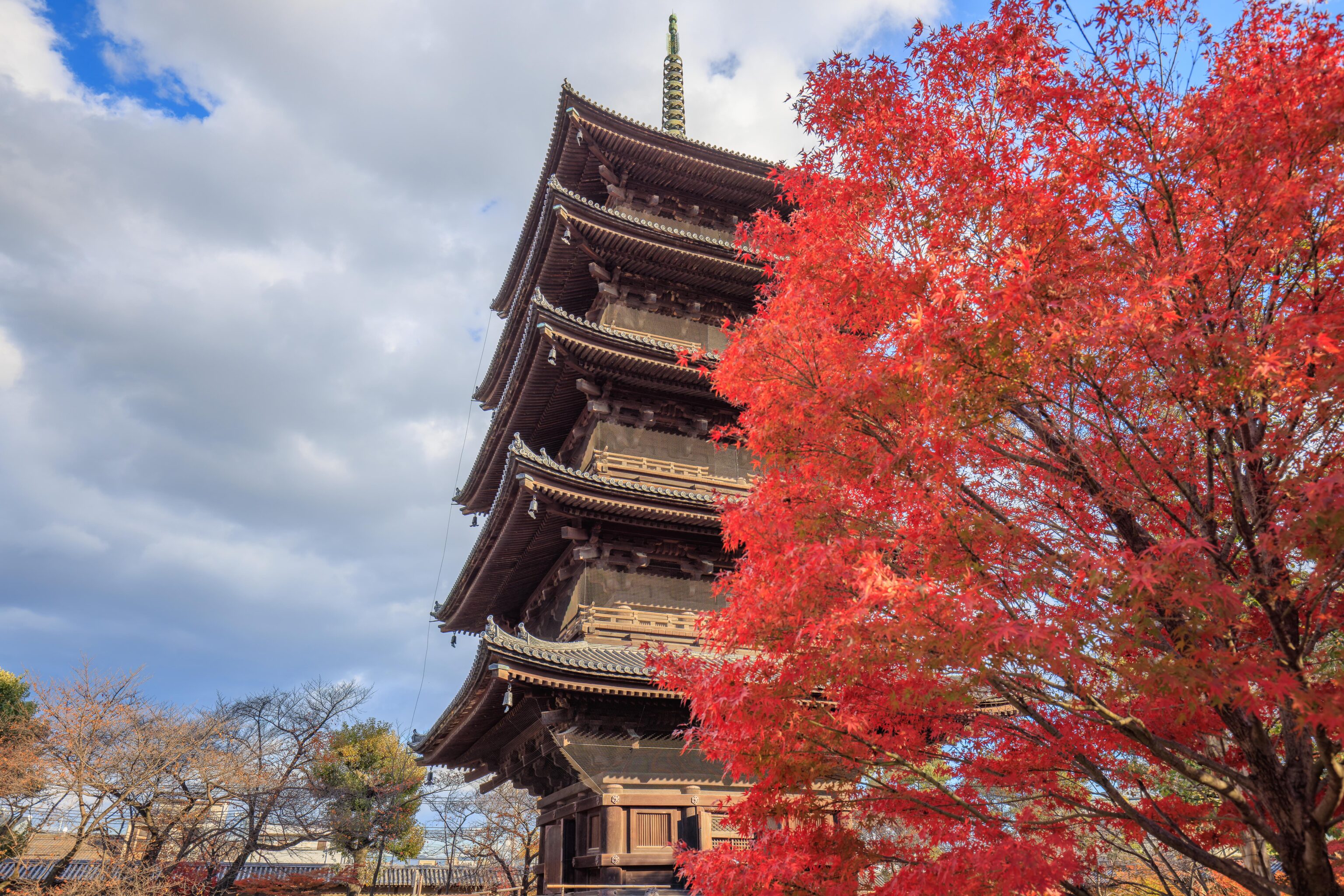
We headed towards the five story pagoda. The ground floor is open for visitors but again photography was not permitted. The upper floors are inaccessible.
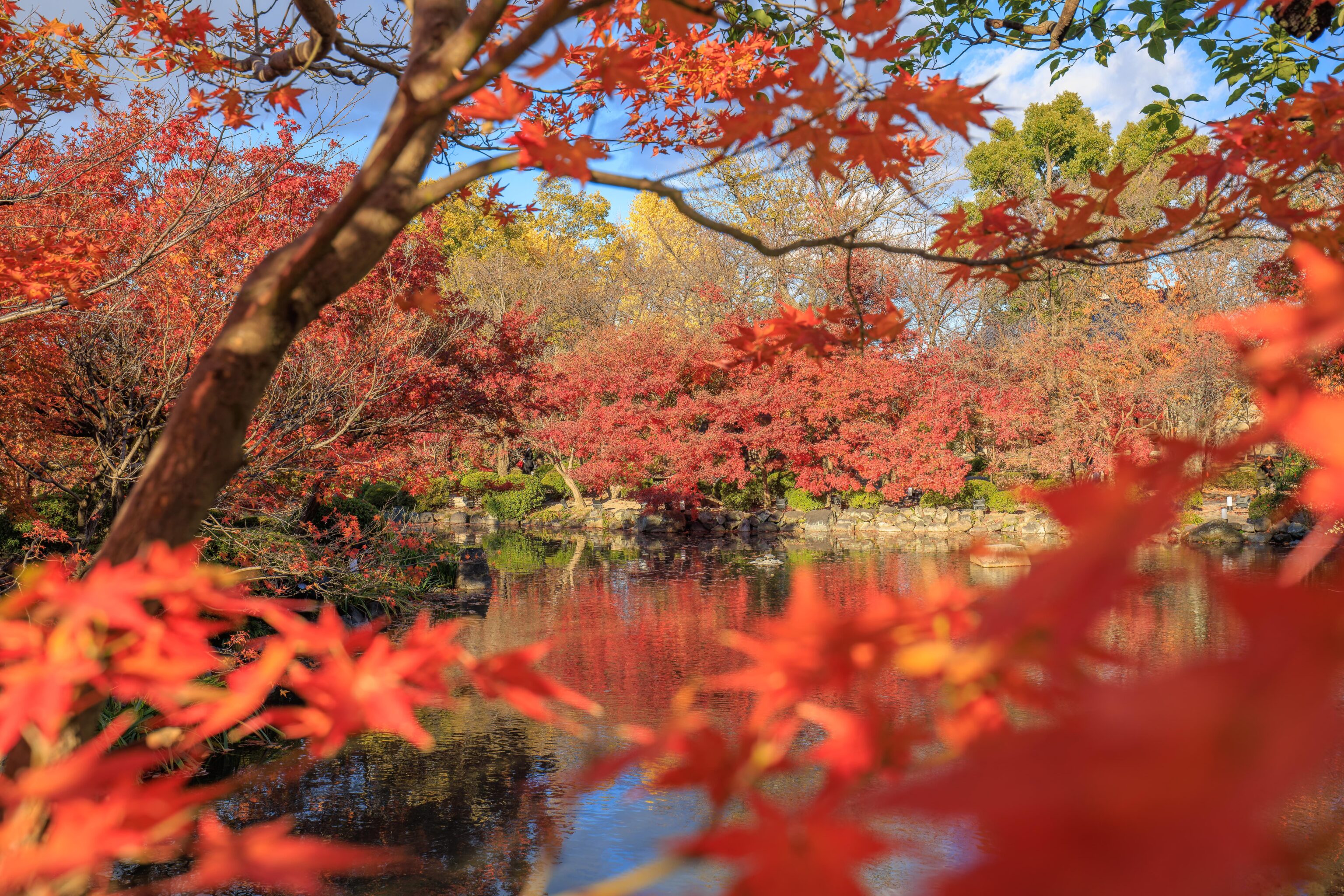
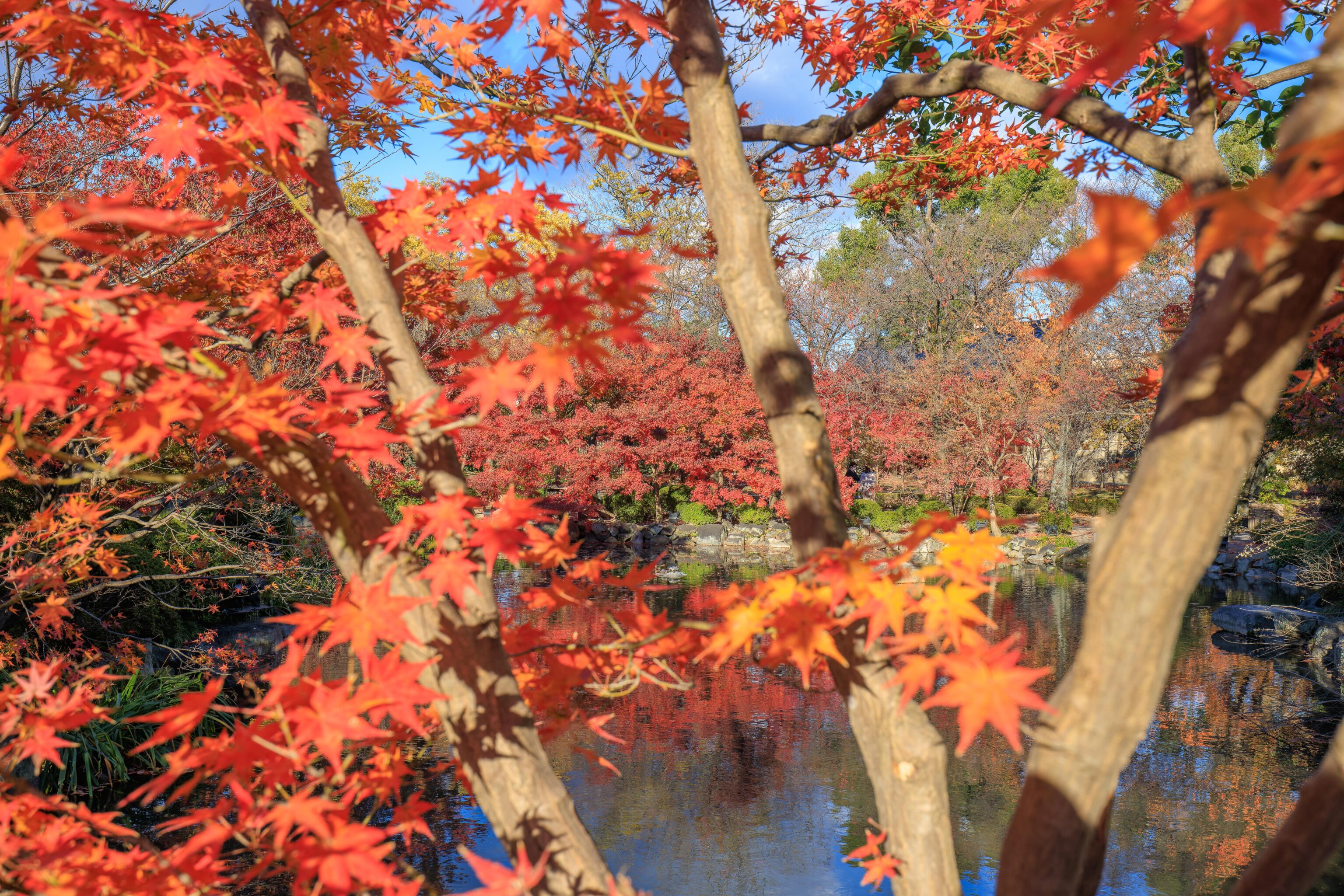
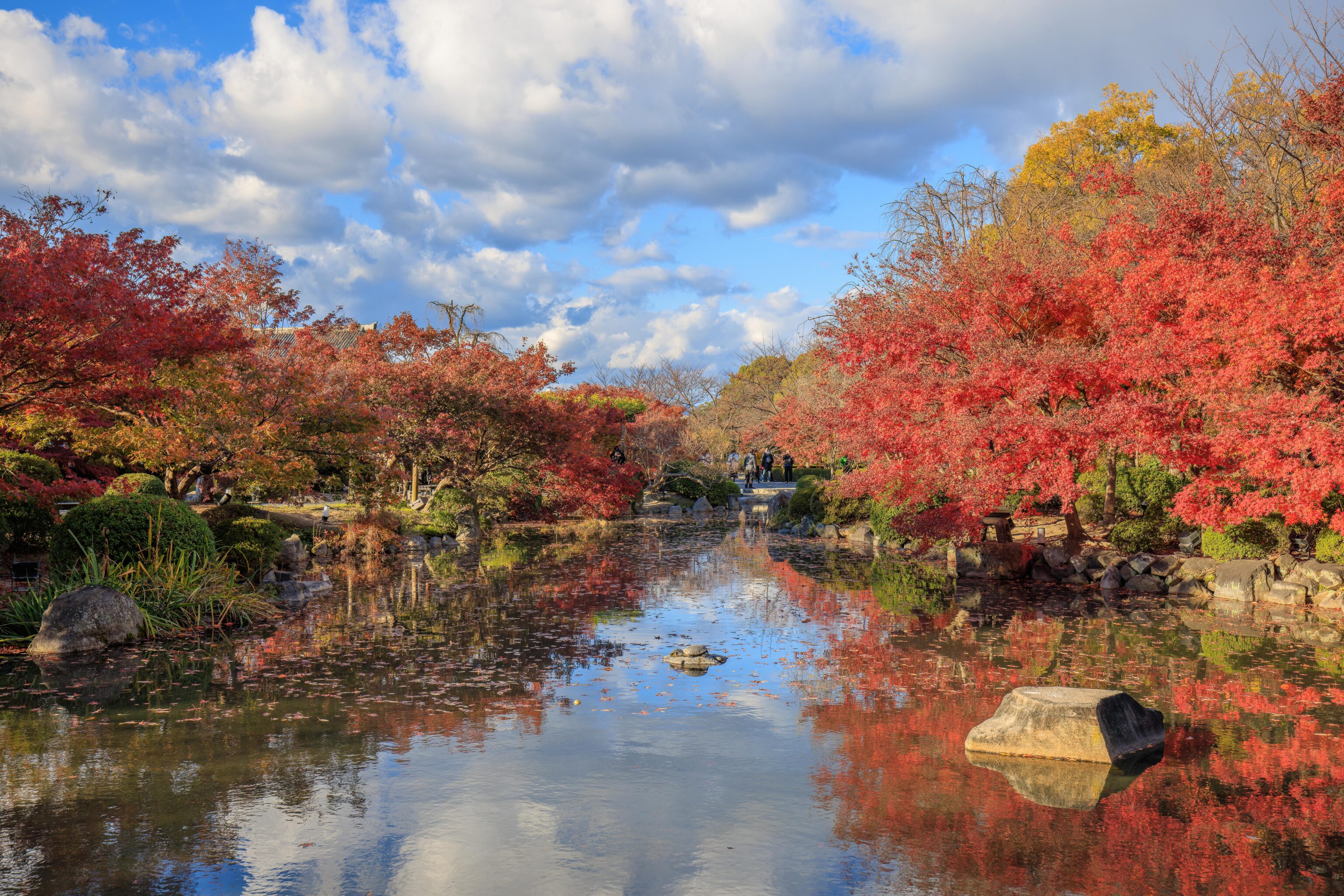
After visiting the pagoda, we walked around the east side of the pond.
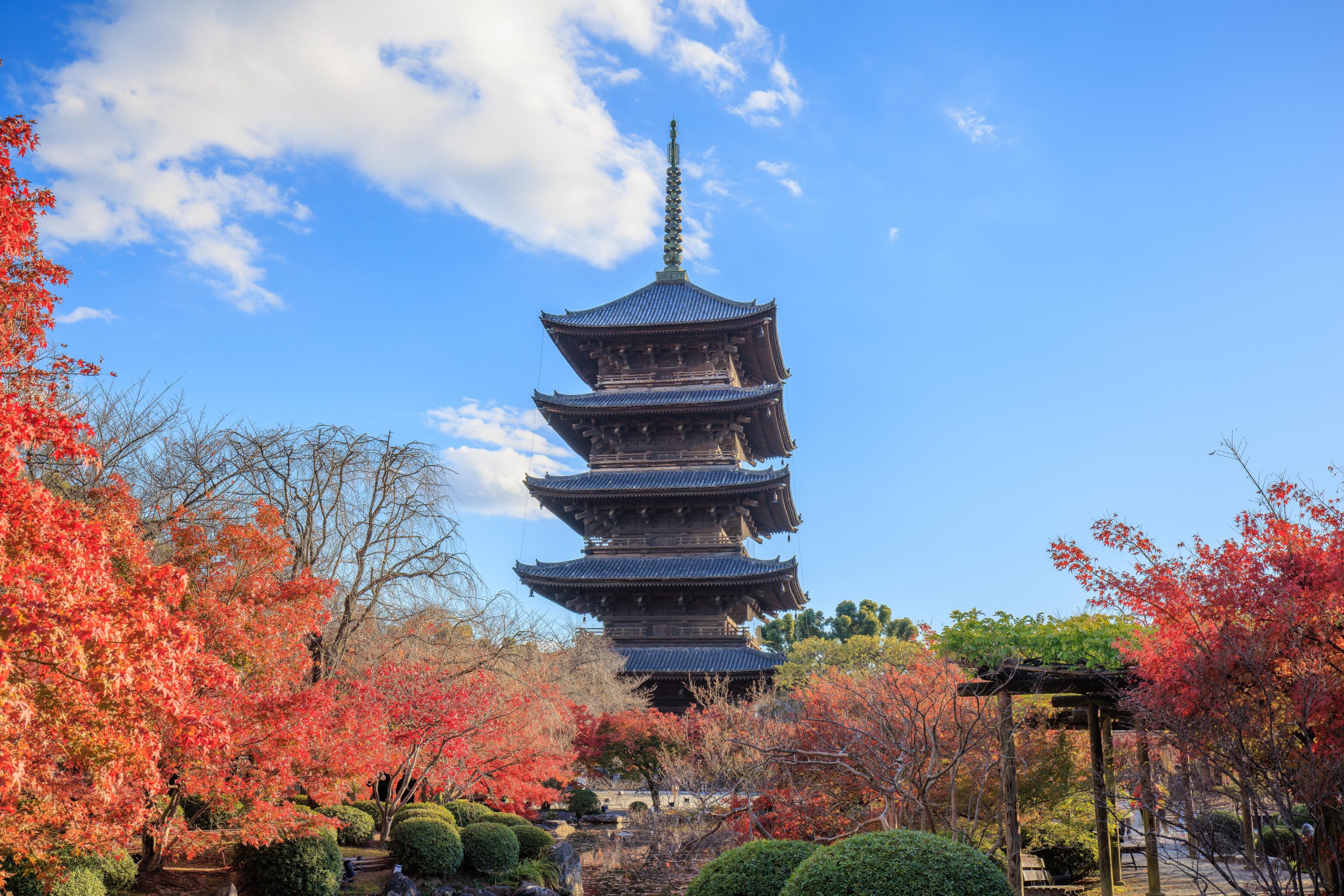
There was a nice view of the pagoda from the edge of the pond.
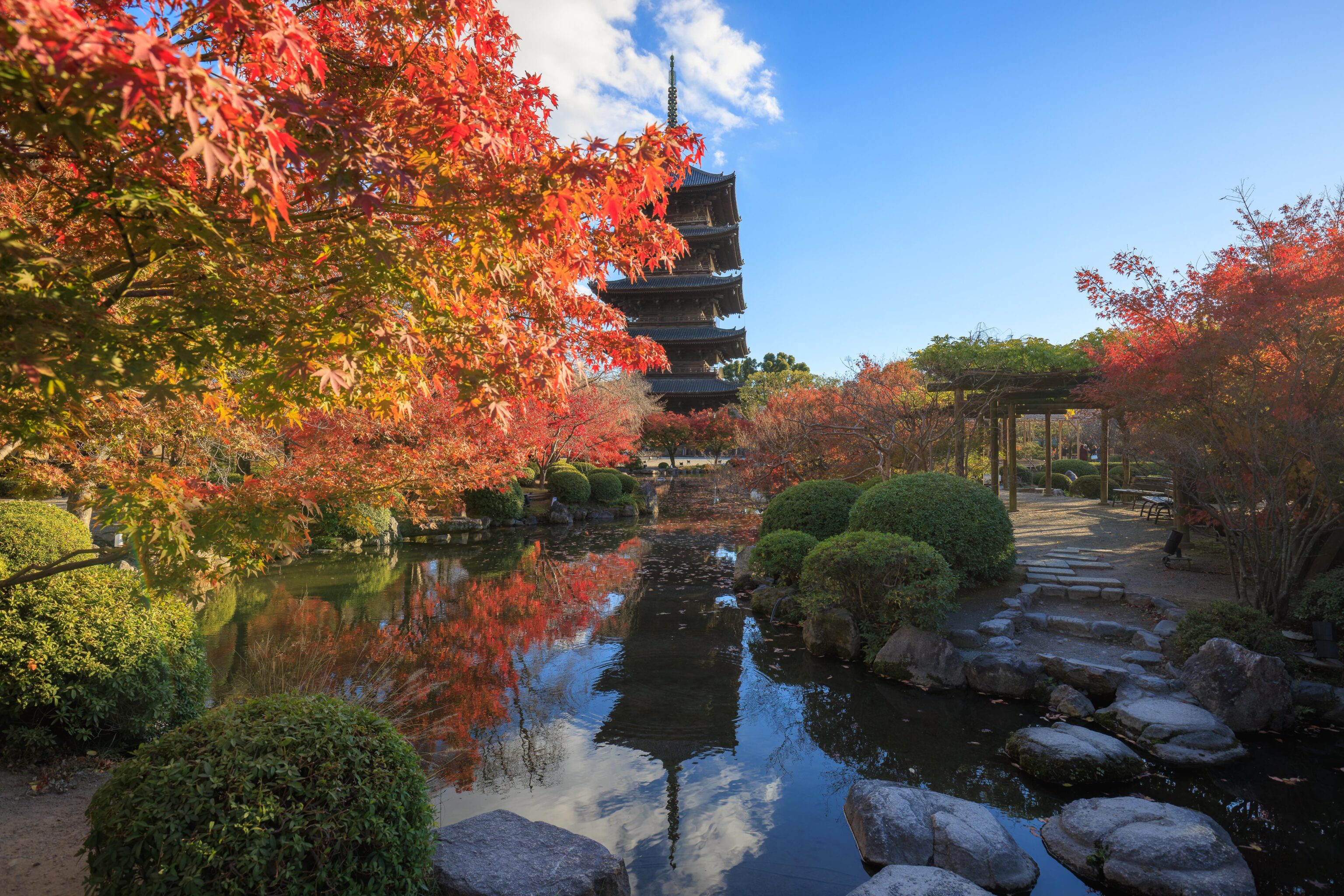
And a nicer view from the northern end of the pond, near the large weeping cherry blossom tree by the garden entrance.
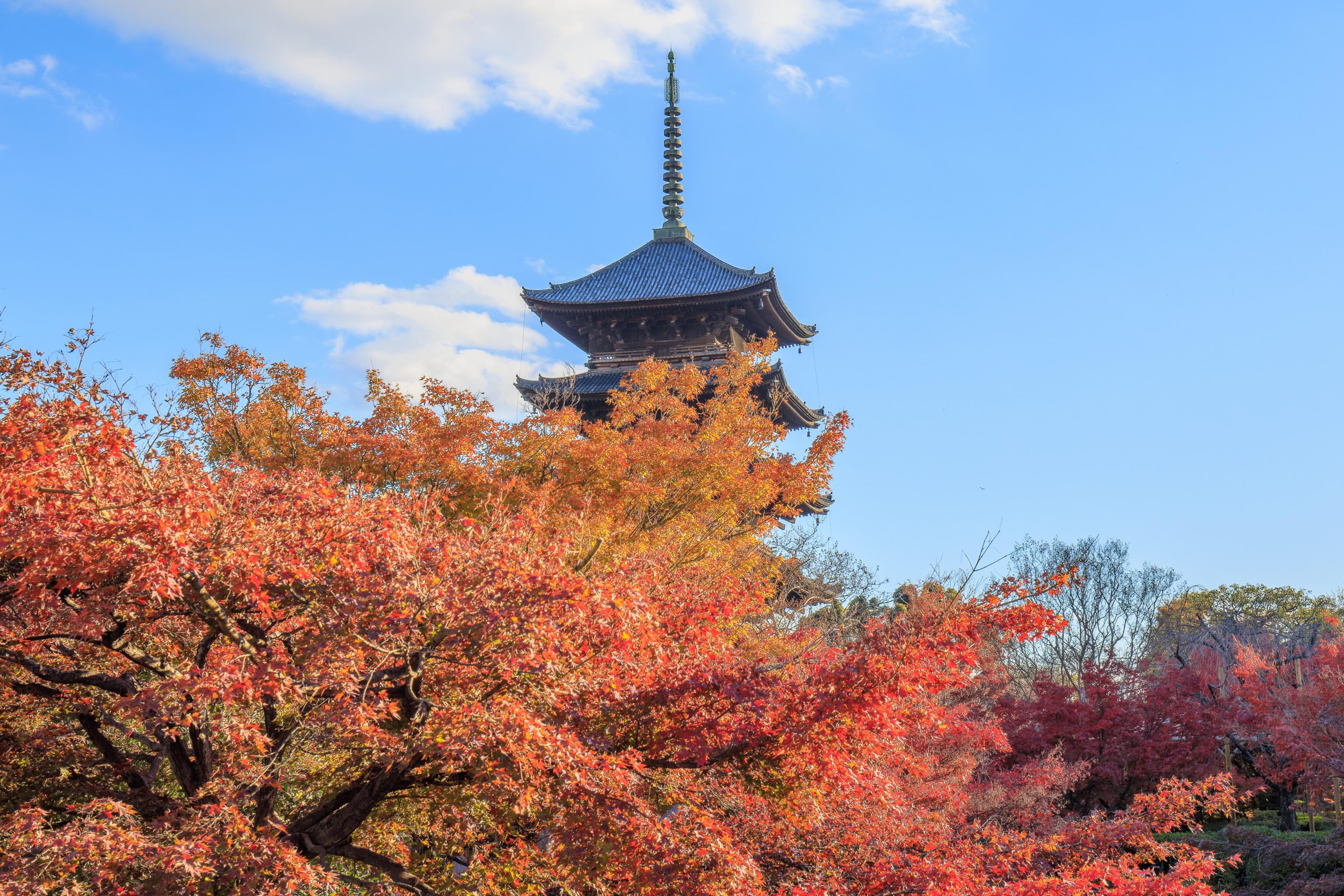
The pagoda peeking out from behind some maple trees as we headed to the exit.
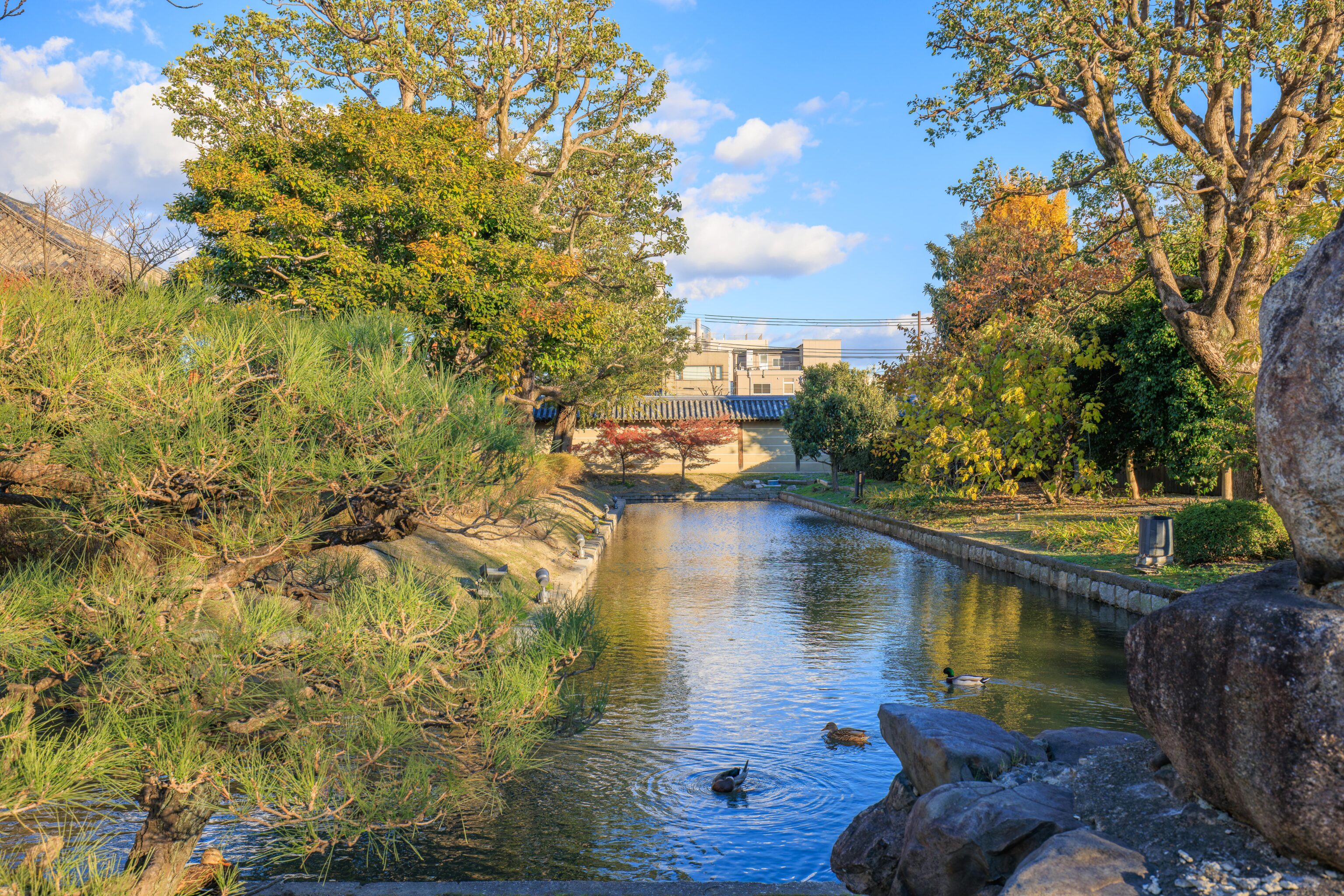
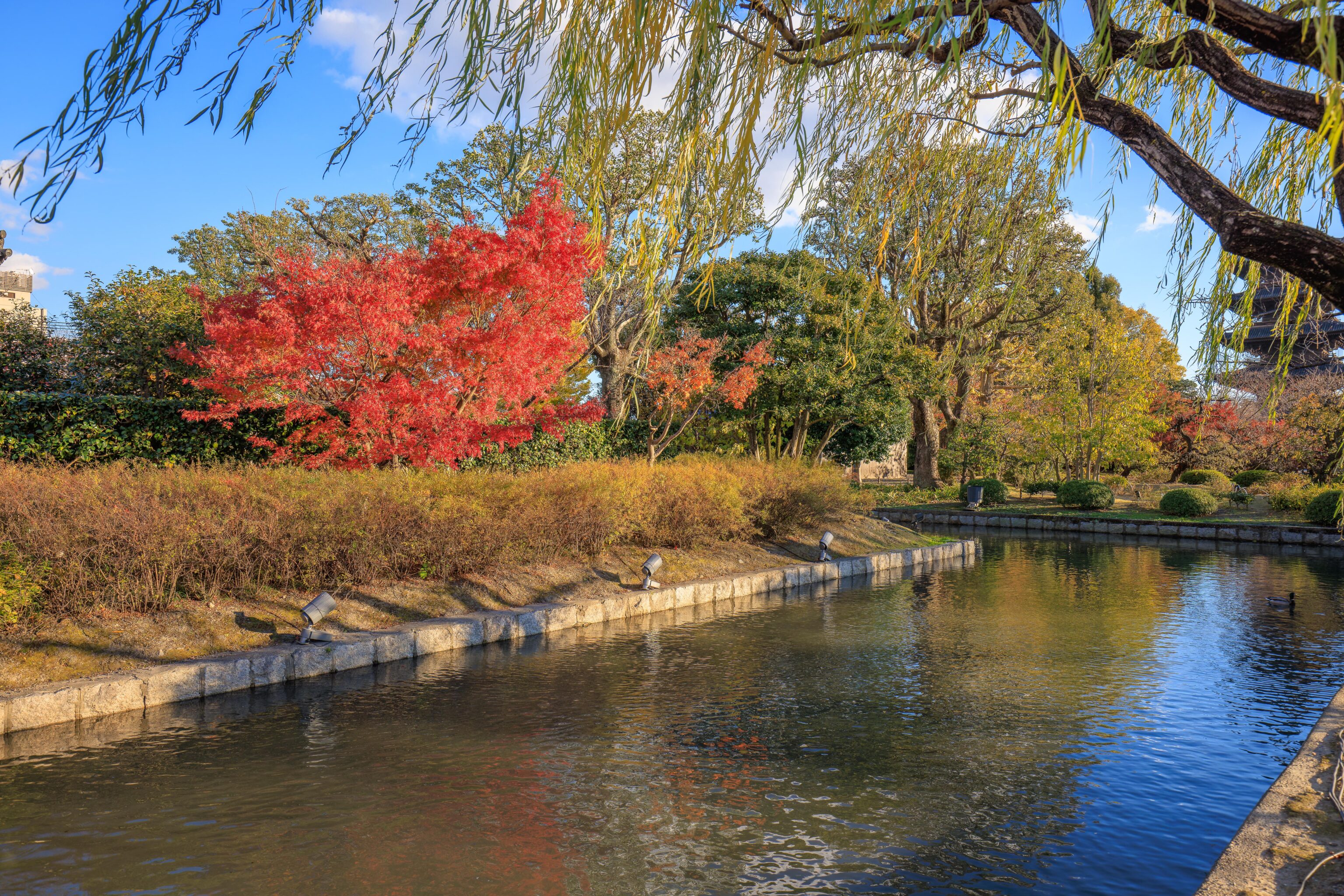
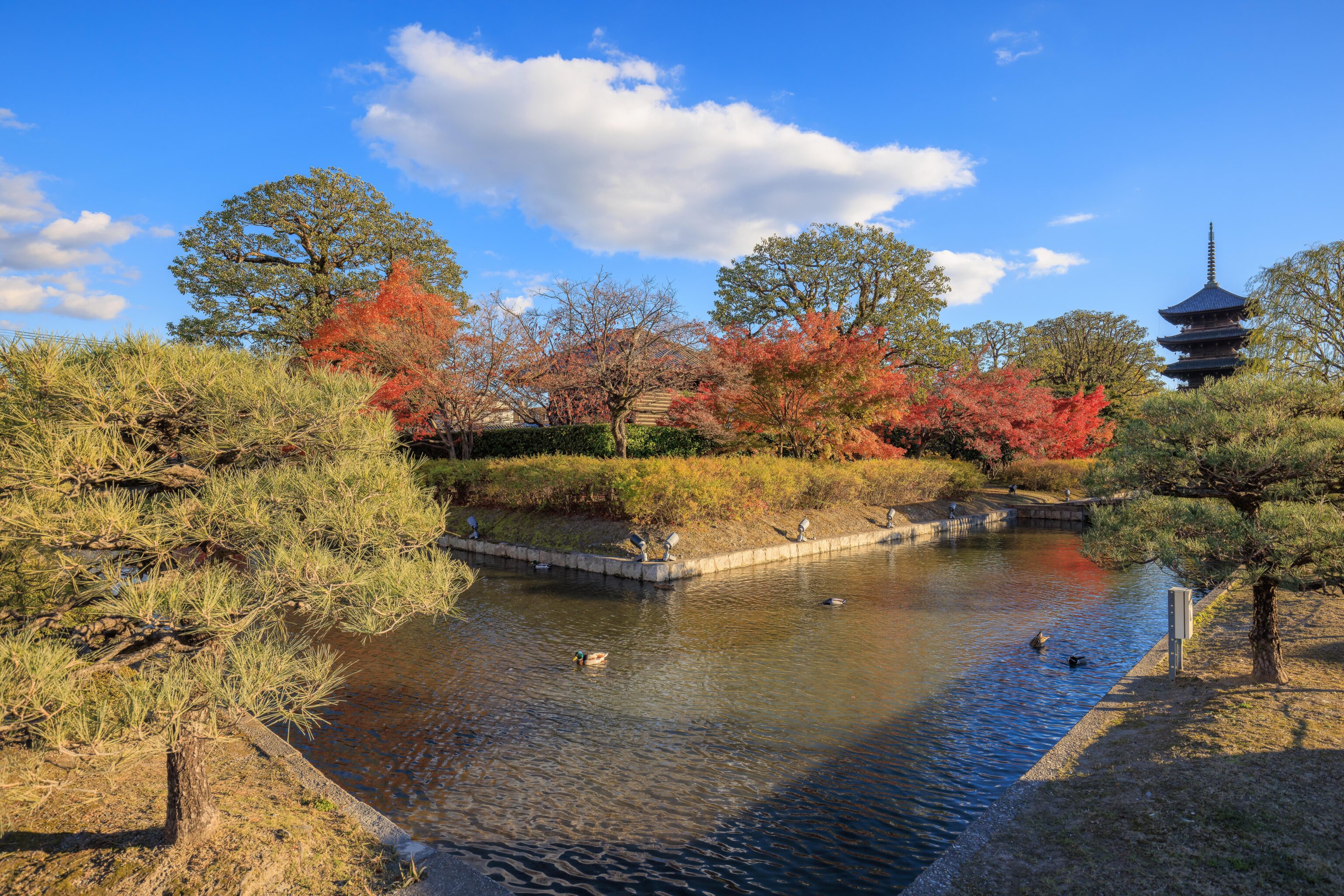
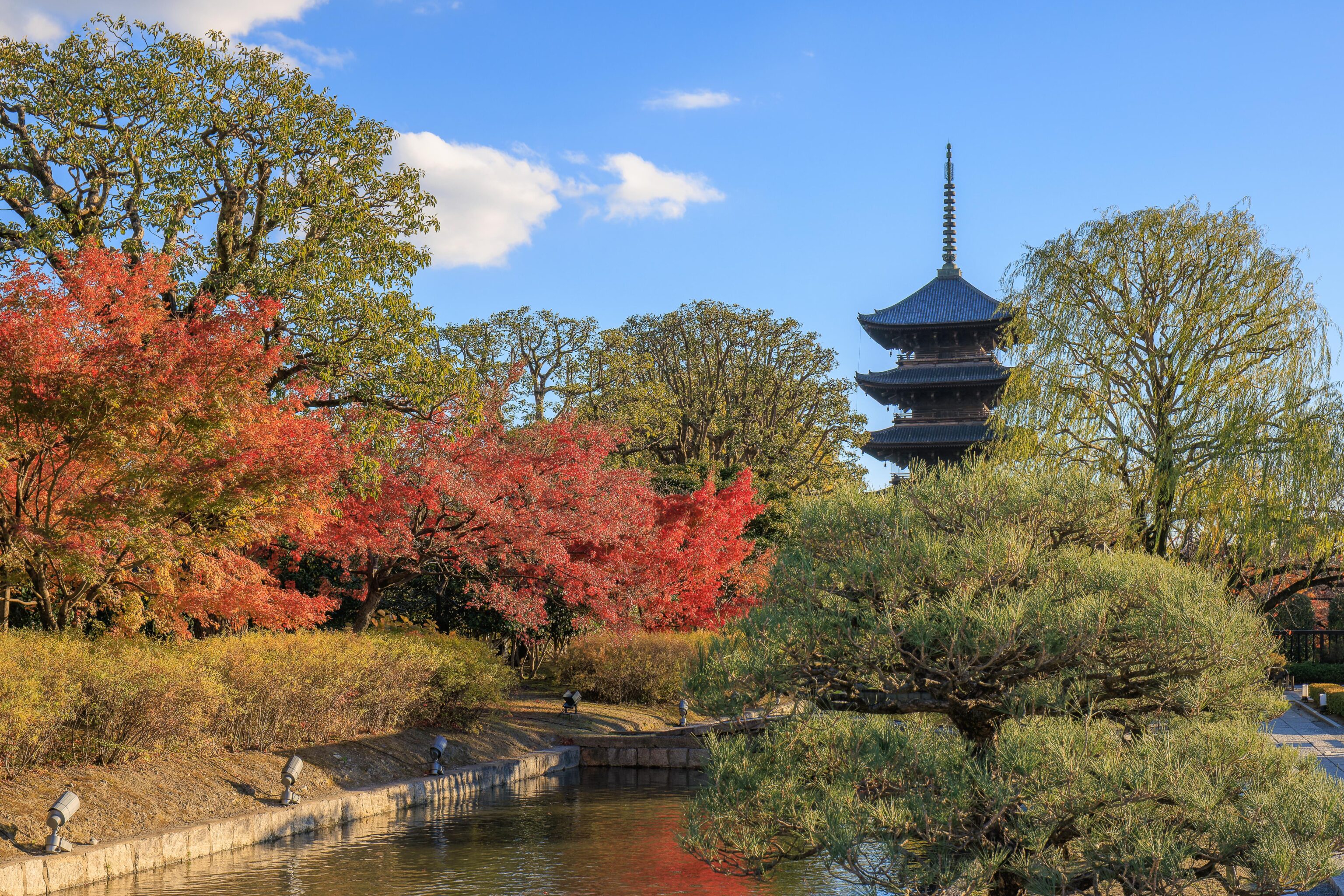
Rather than backtrack, we exited via the temple’s eastern gate. We walked one block to the east where we waited for the next bus, #42. It ended up being a fairly long wait. It probably would have made more sense to simply take the train.
Kyoto Station
We briefly visited Yodobashi Camera, a large electronics store, to the north of Kyoto Station before returning to the station.
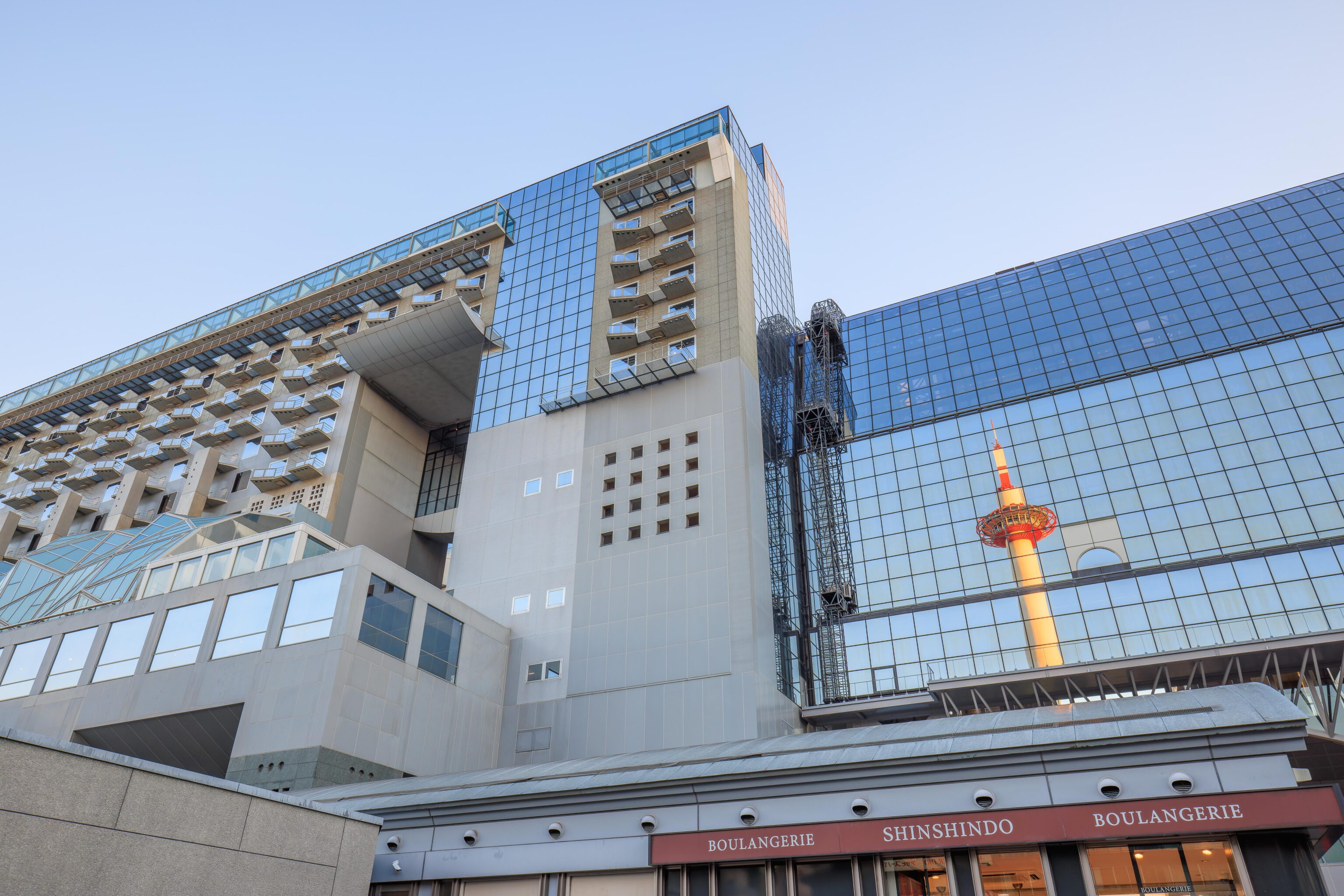
There was a nice view of the Kyoto Tower reflecting on the side of the station building.
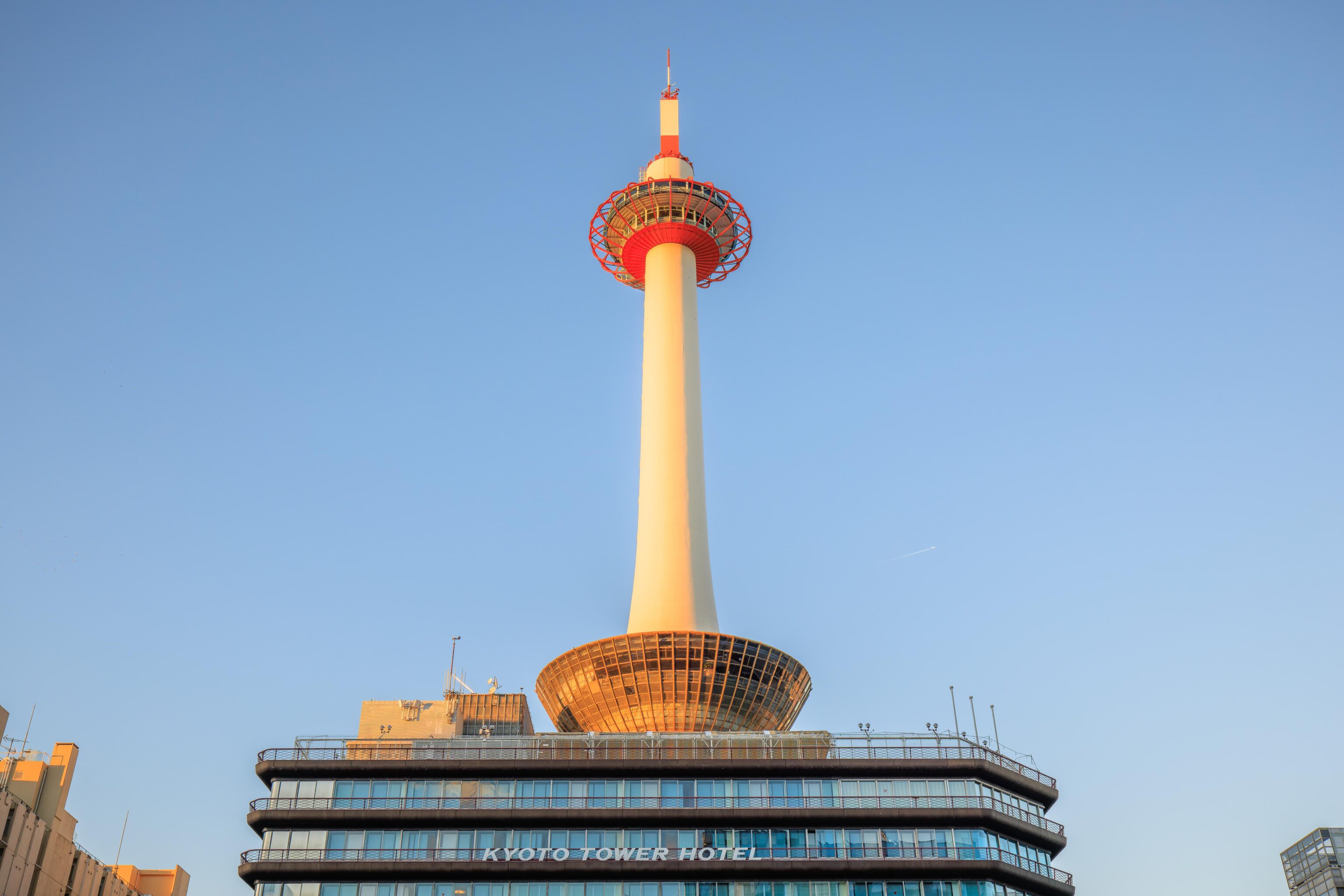
And a nice view of the tower itself. I visited once back in 2016. While the views from the top are nice, most of the buildings in Kyoto are rather undistinctive and the visible mountains are not particularly tall.
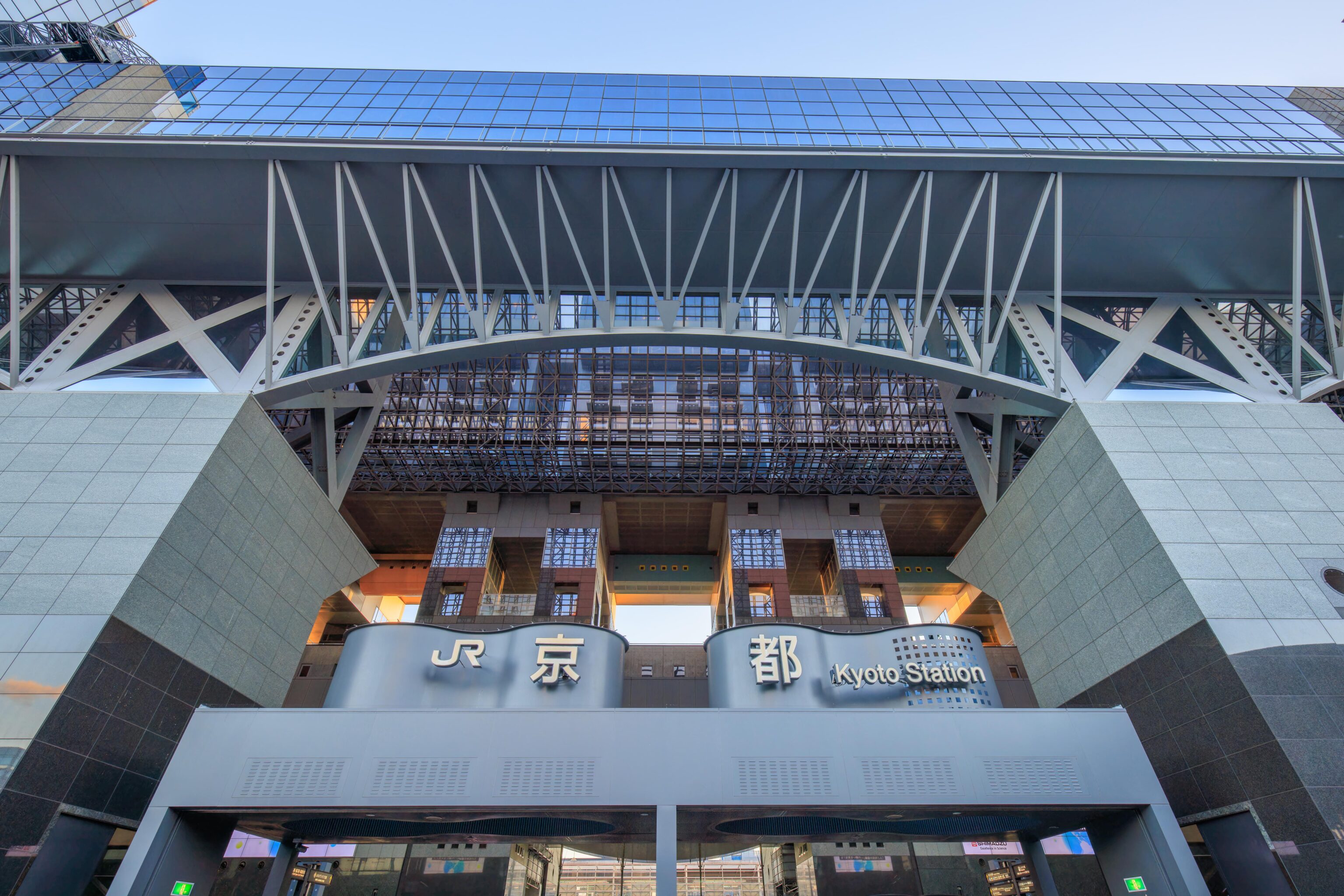
The station’s northern entrance has a nice modern looking facade.
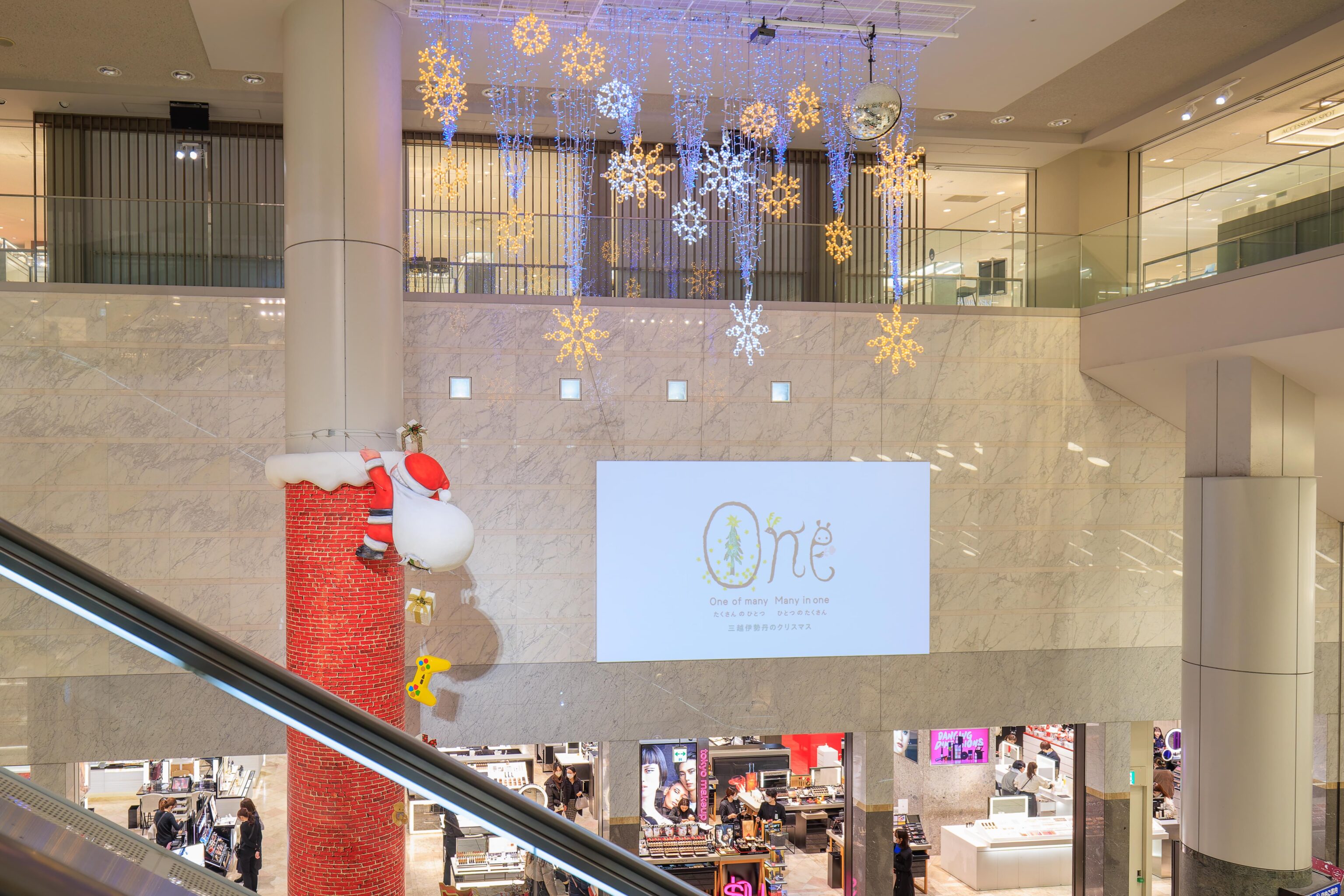
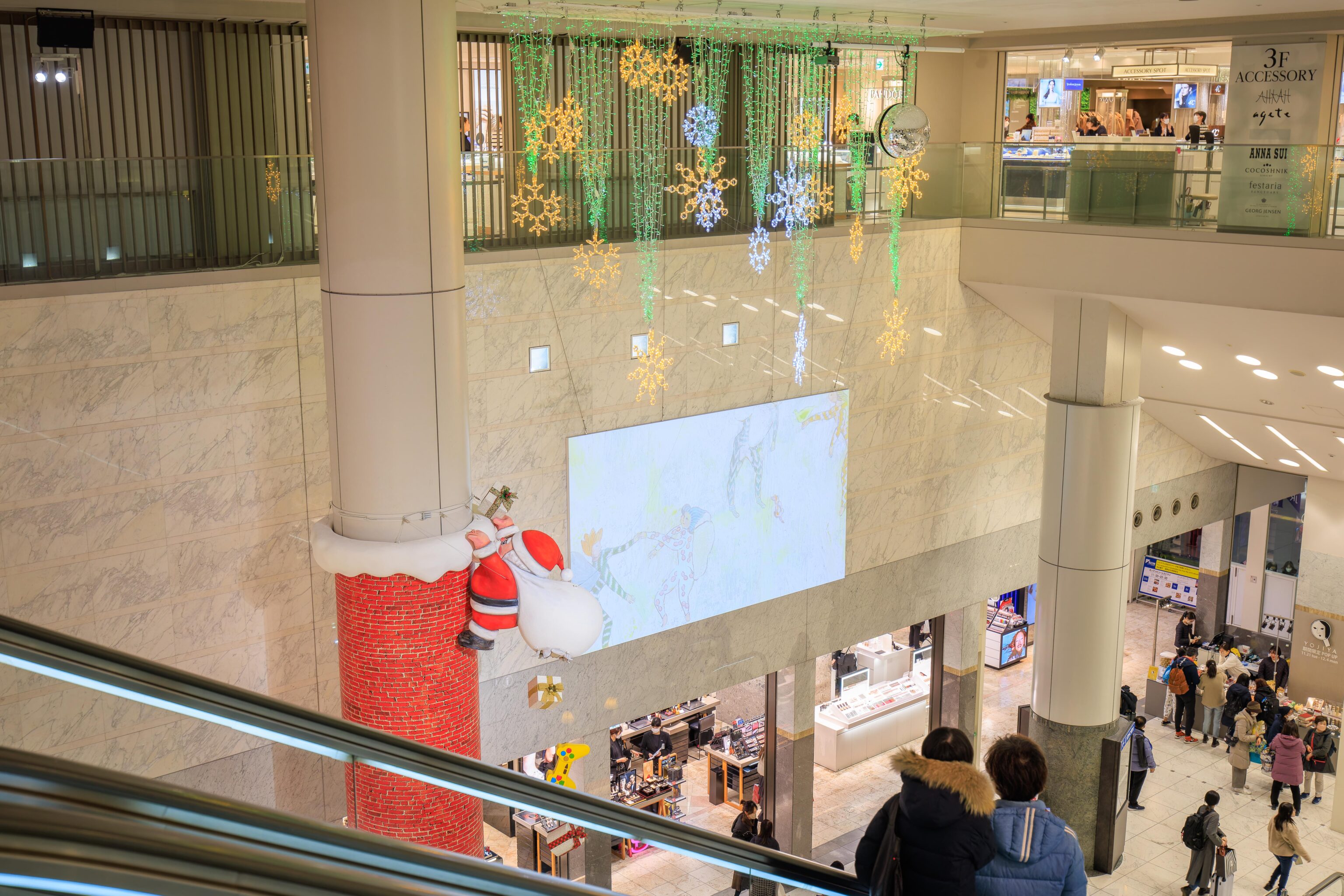
We didn’t enter the station though, we actually entered the connected Isetan department store. We saw Santa Claus inside!
From here, we ascended to the 10th floor to eat at Kyoto Ramen Koji (京都拉麺小路), an indoor ramen street with multiple restaurants, each specializing in ramen from a specific region in Japan.
We visited Ramen Todai, from Tokushima, on the island of Shikoku to the south of Kyoto.
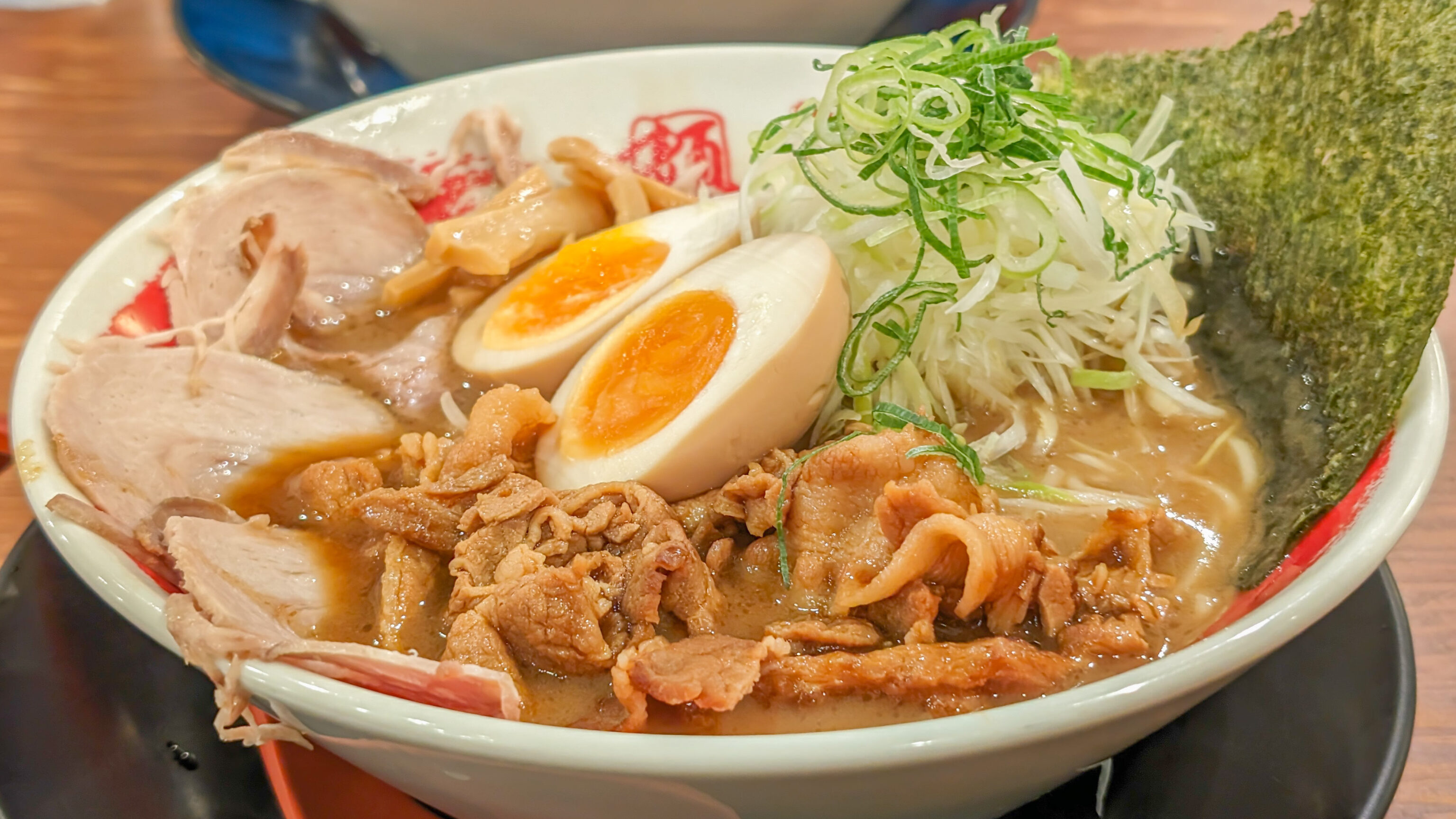
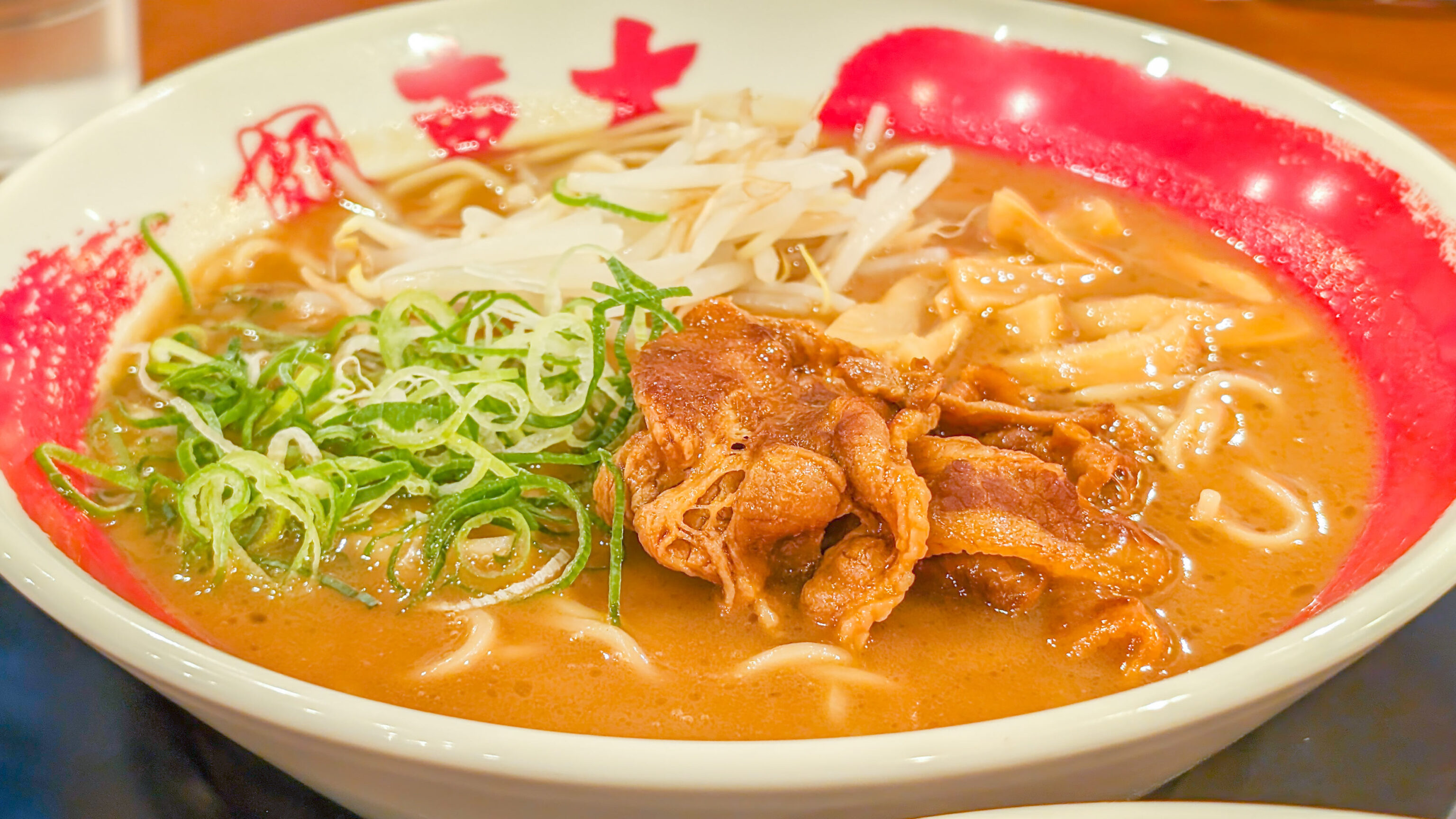
We ordered two bowls of ramen. Both were good though perhaps a tad salty. Their flavors were very similar though a bit different, possibly due to the different ingredients placed into the broth.
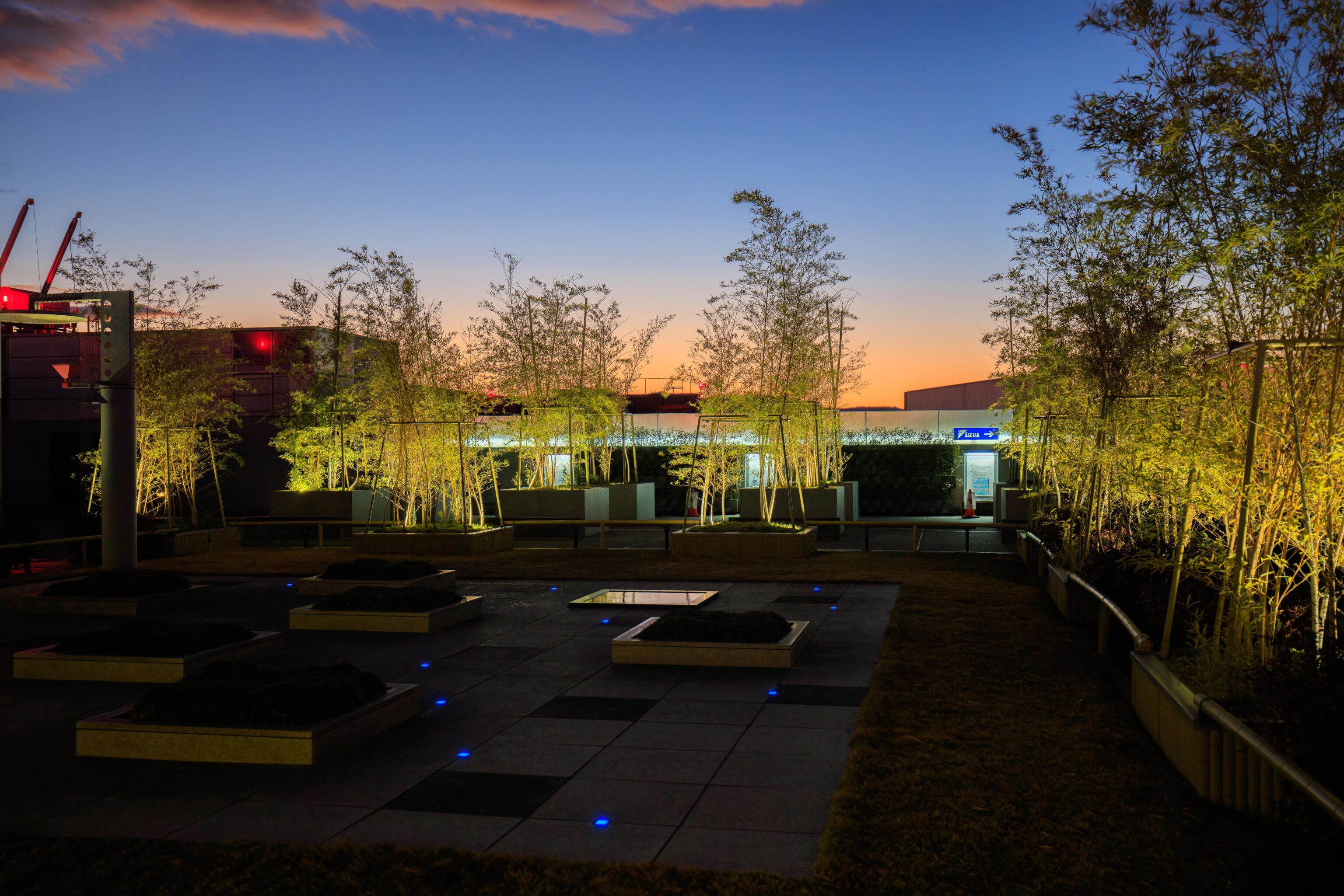
After dinner, we went up to the rooftop to take a look around. It is a nice area that we’ve visited before.
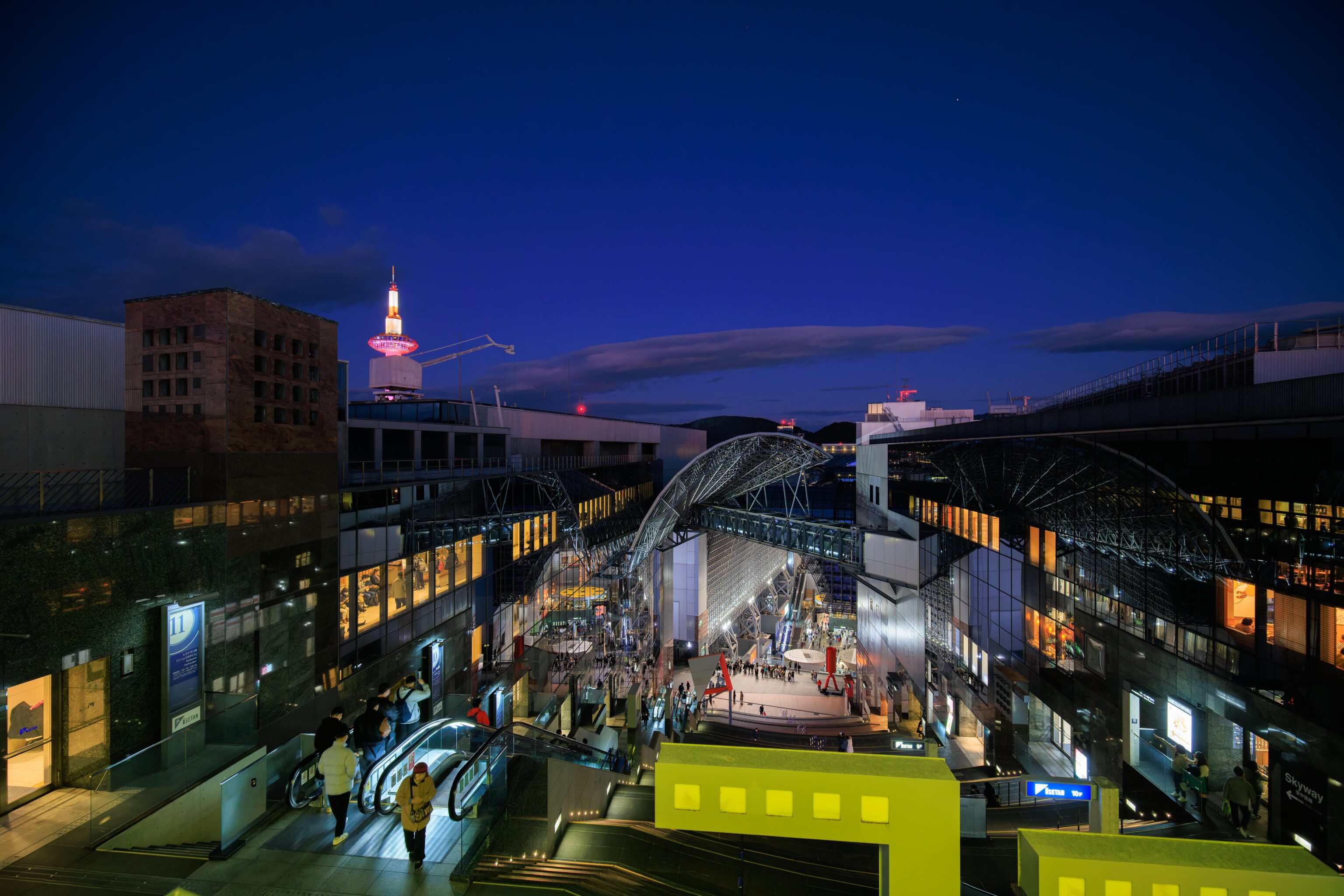
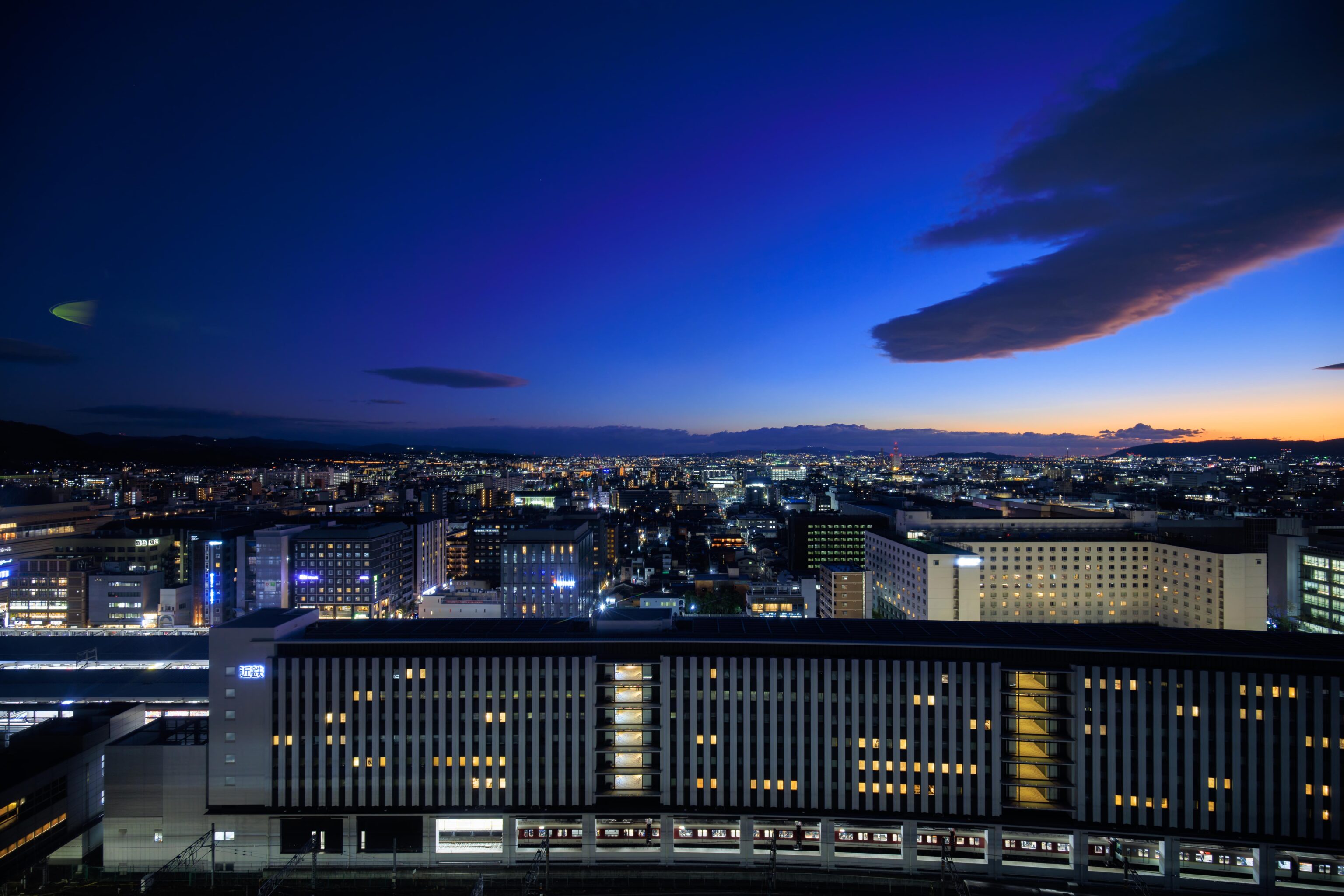
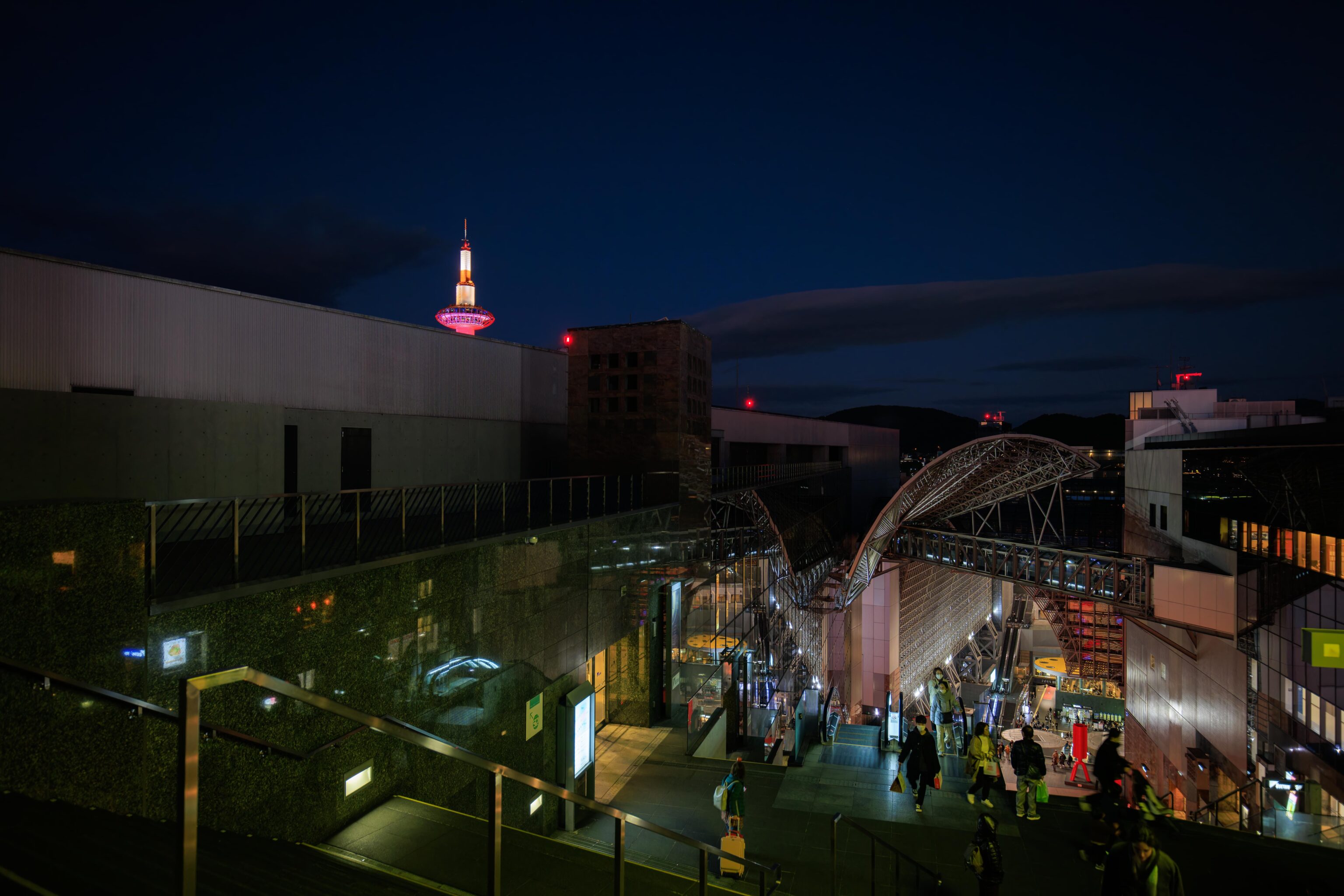
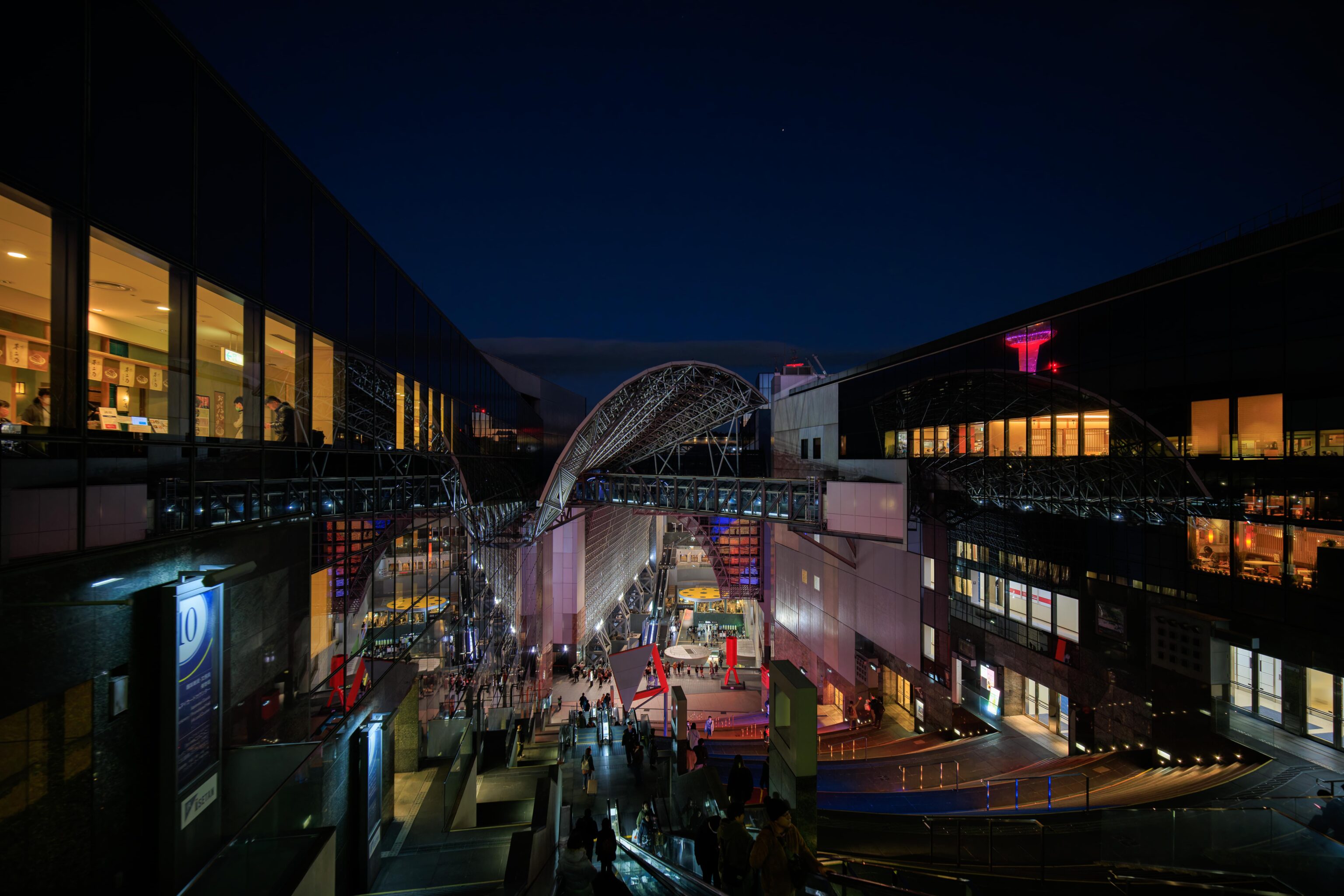
The station is quite large and appears very modern. On the way down, we stopped by Fukunaga 901 on the 8th floor for dessert.
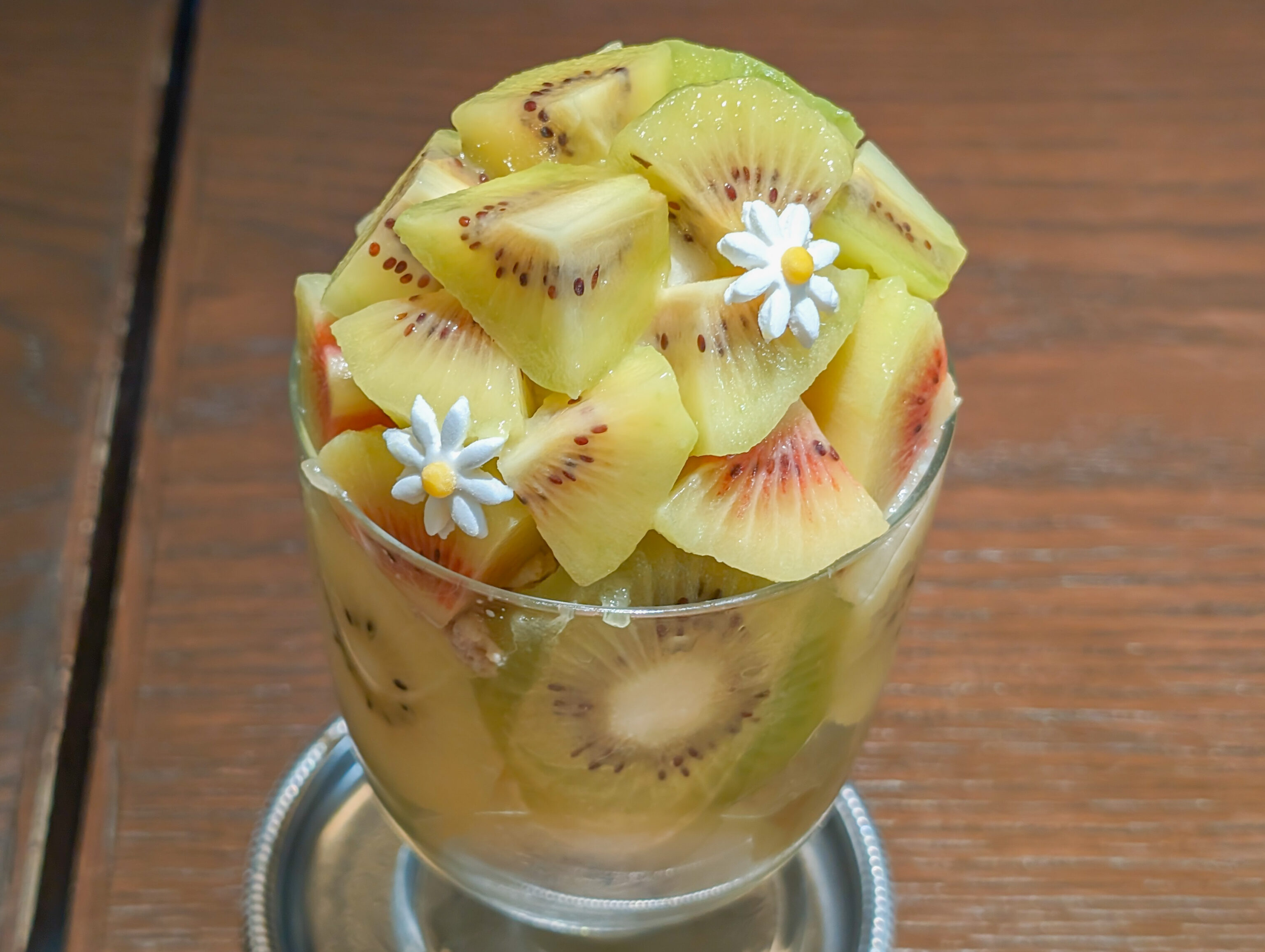
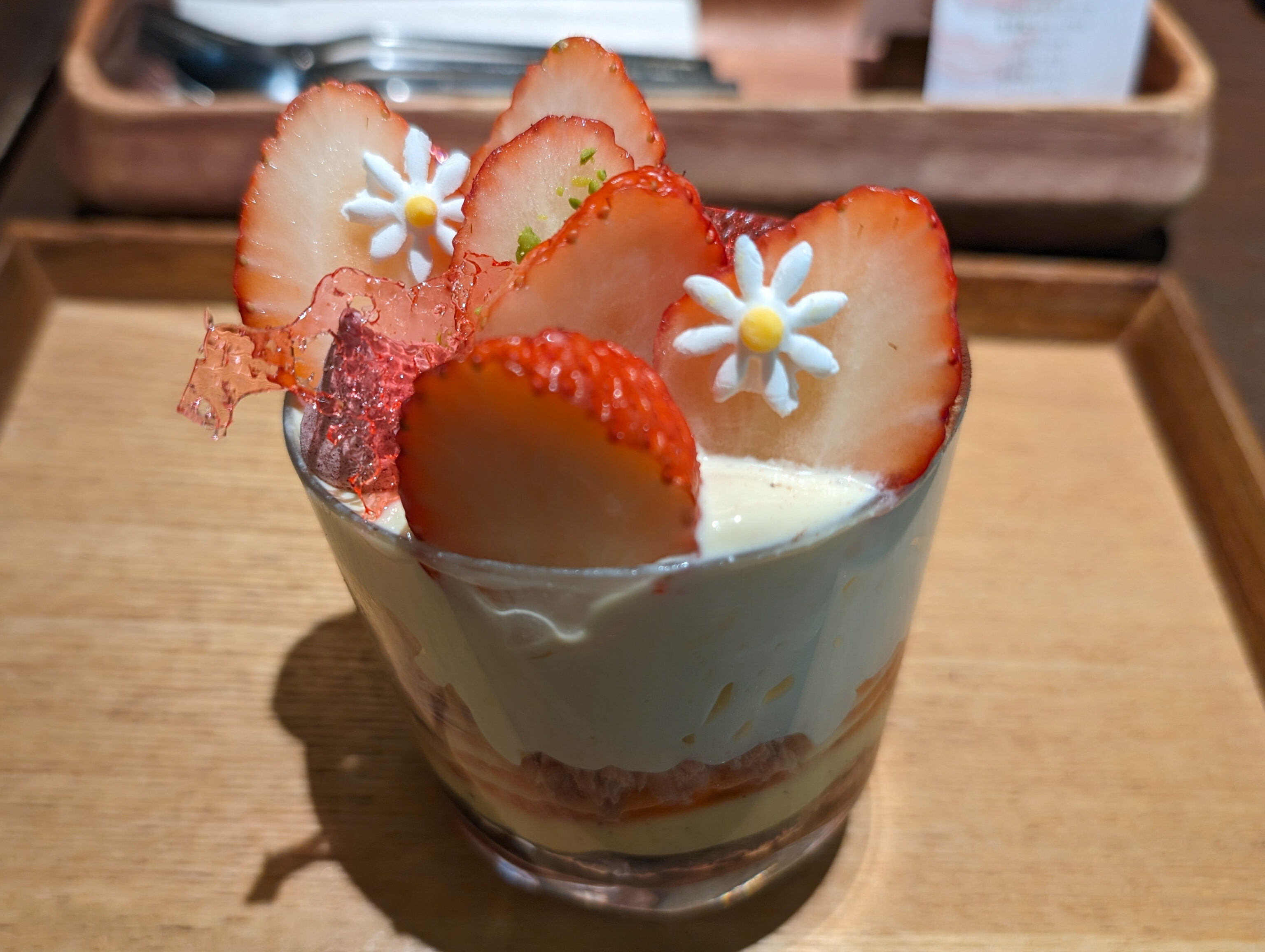
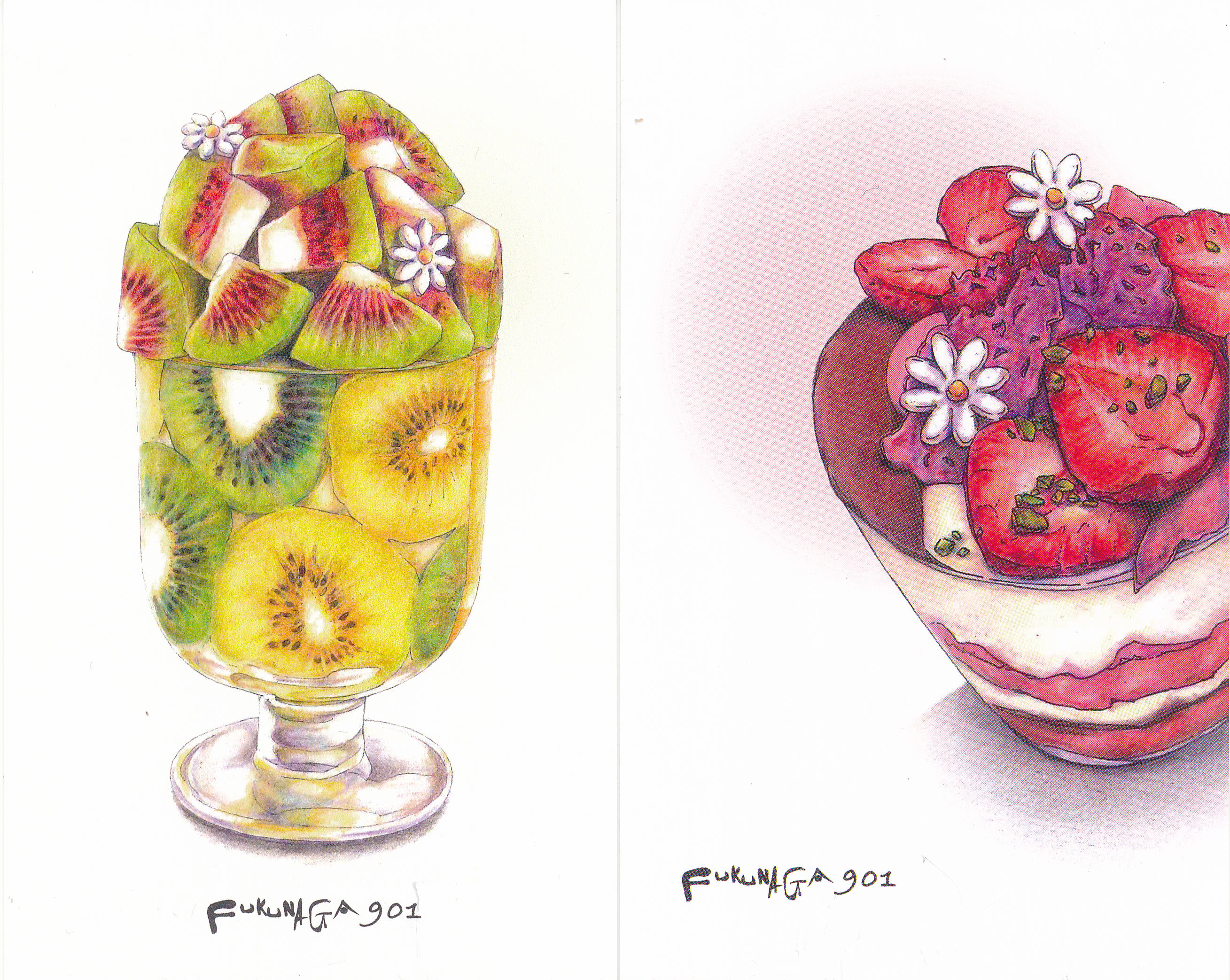
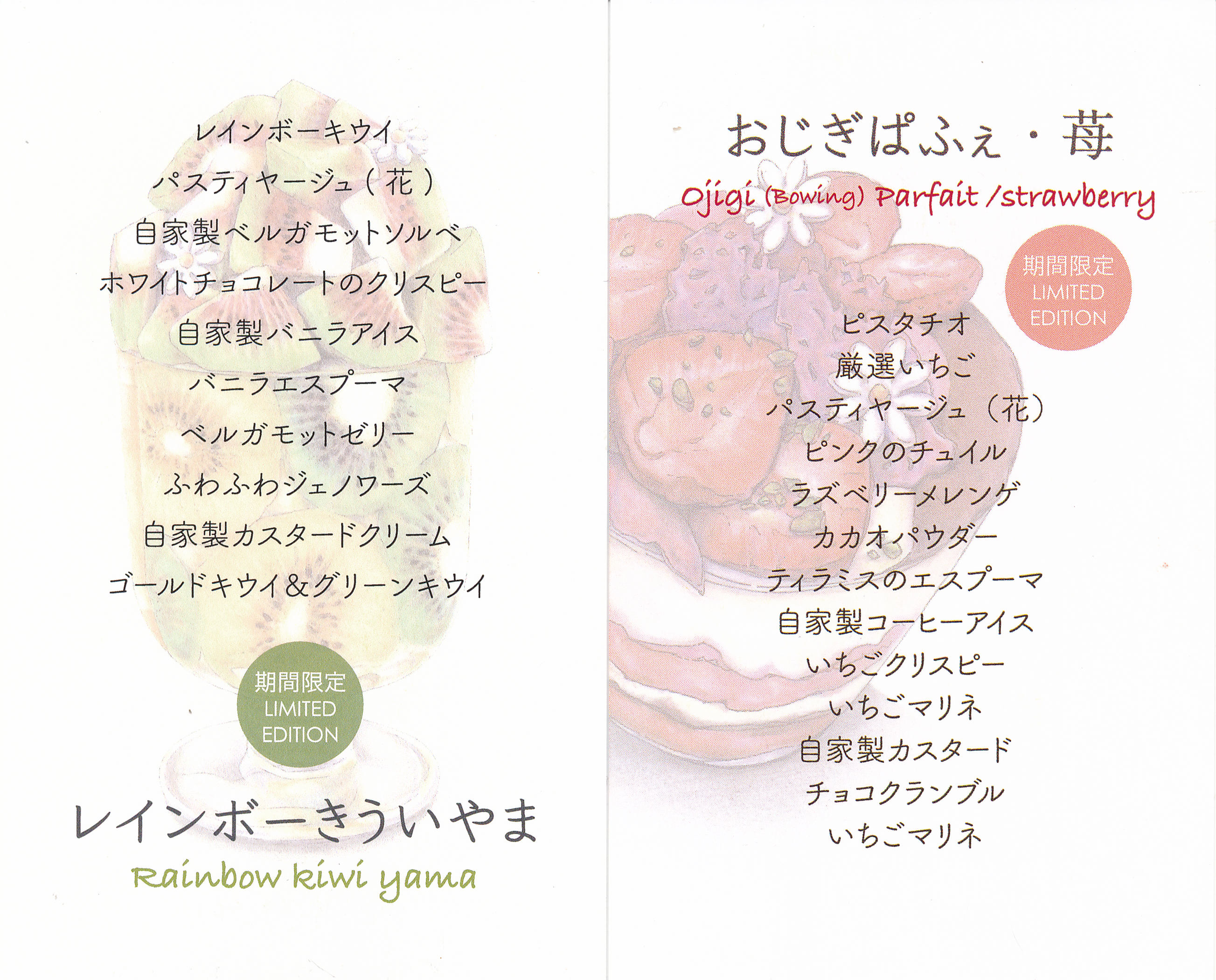
We got two parfaits, one was strawberry based and the other kiwi. The came with cards describing the product. Both were good!
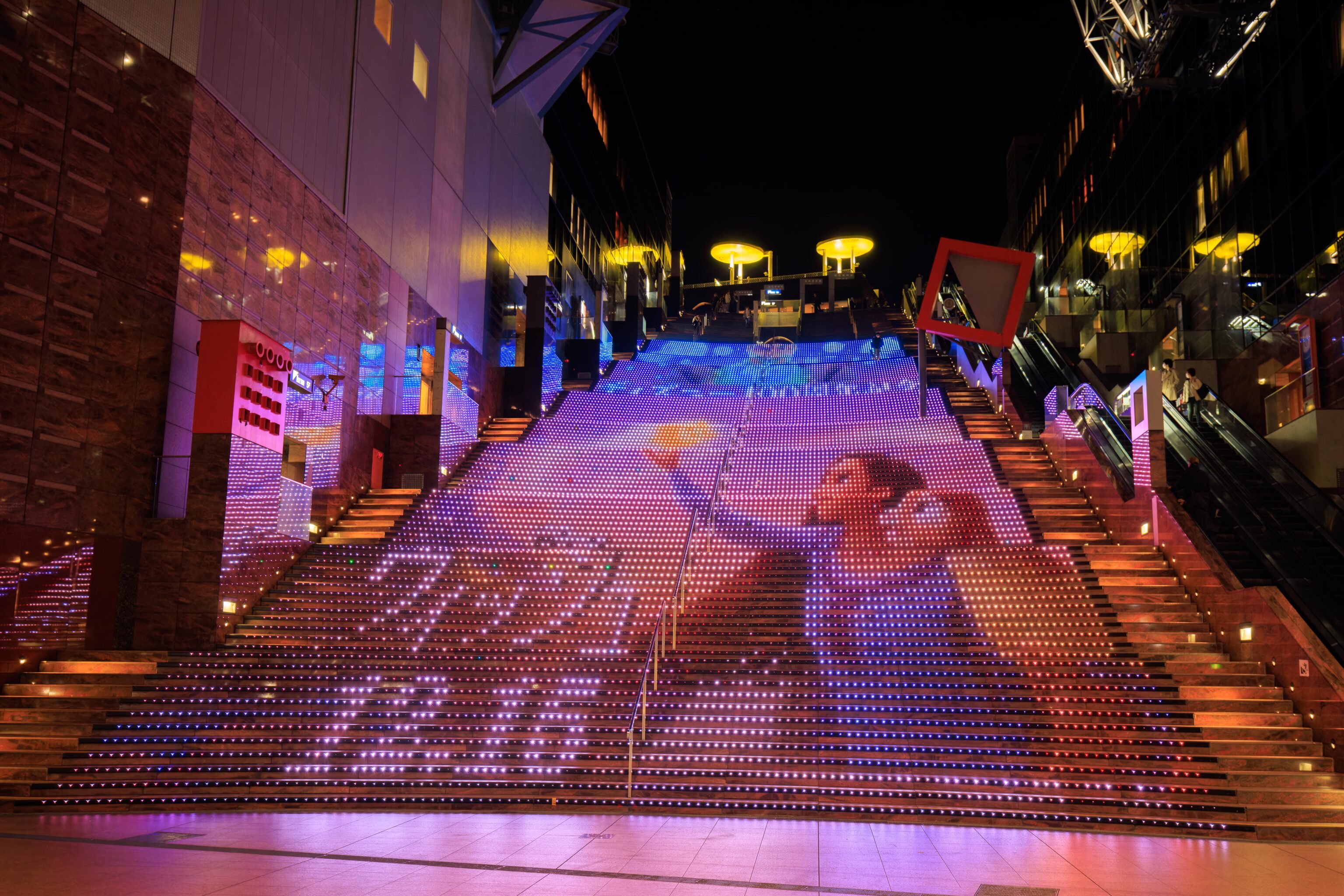
The outdoor stairs to the upper floors are used as a big display. We arrived as it was showing Disney’s Wish, to be released on the 16th here in Japan.
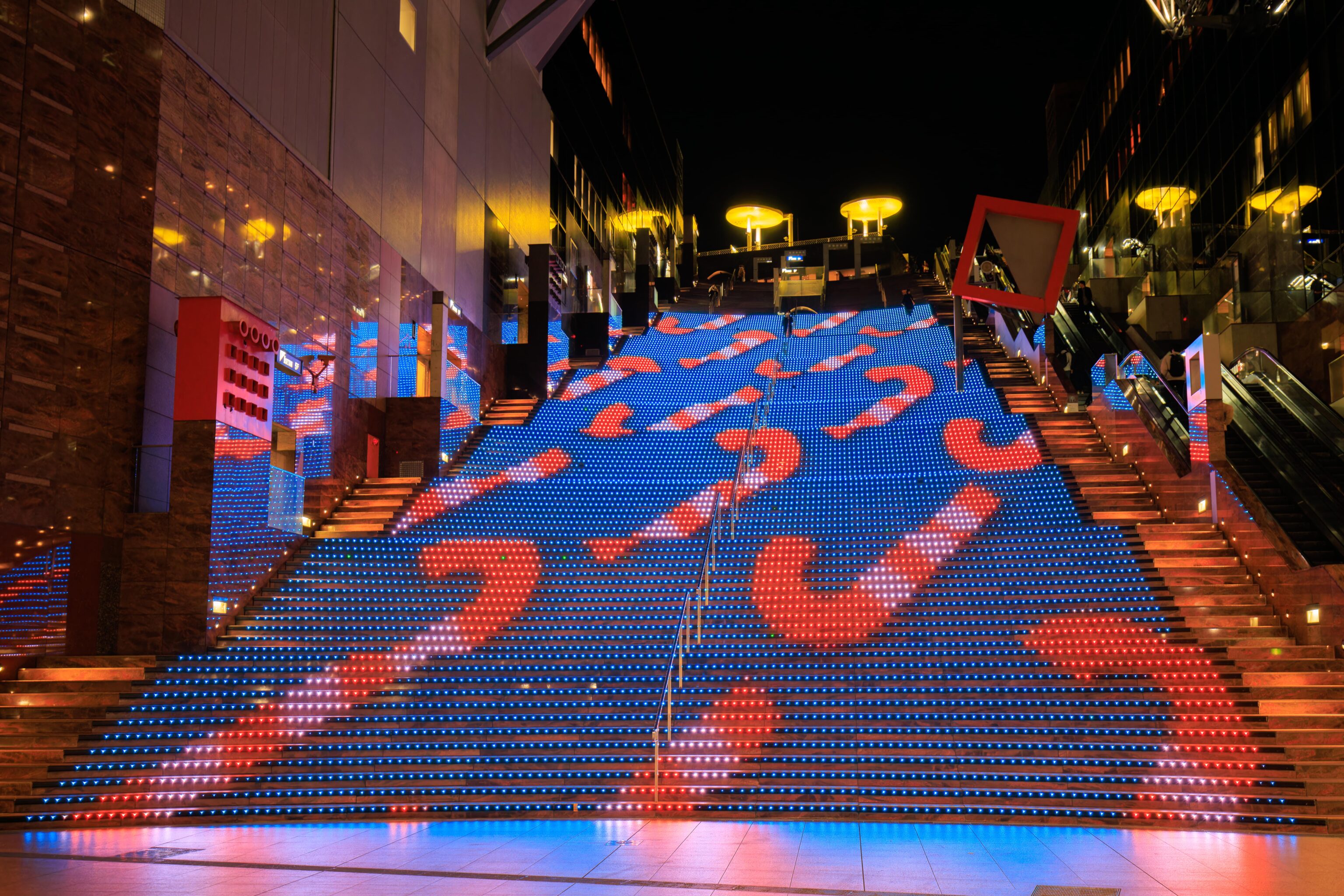
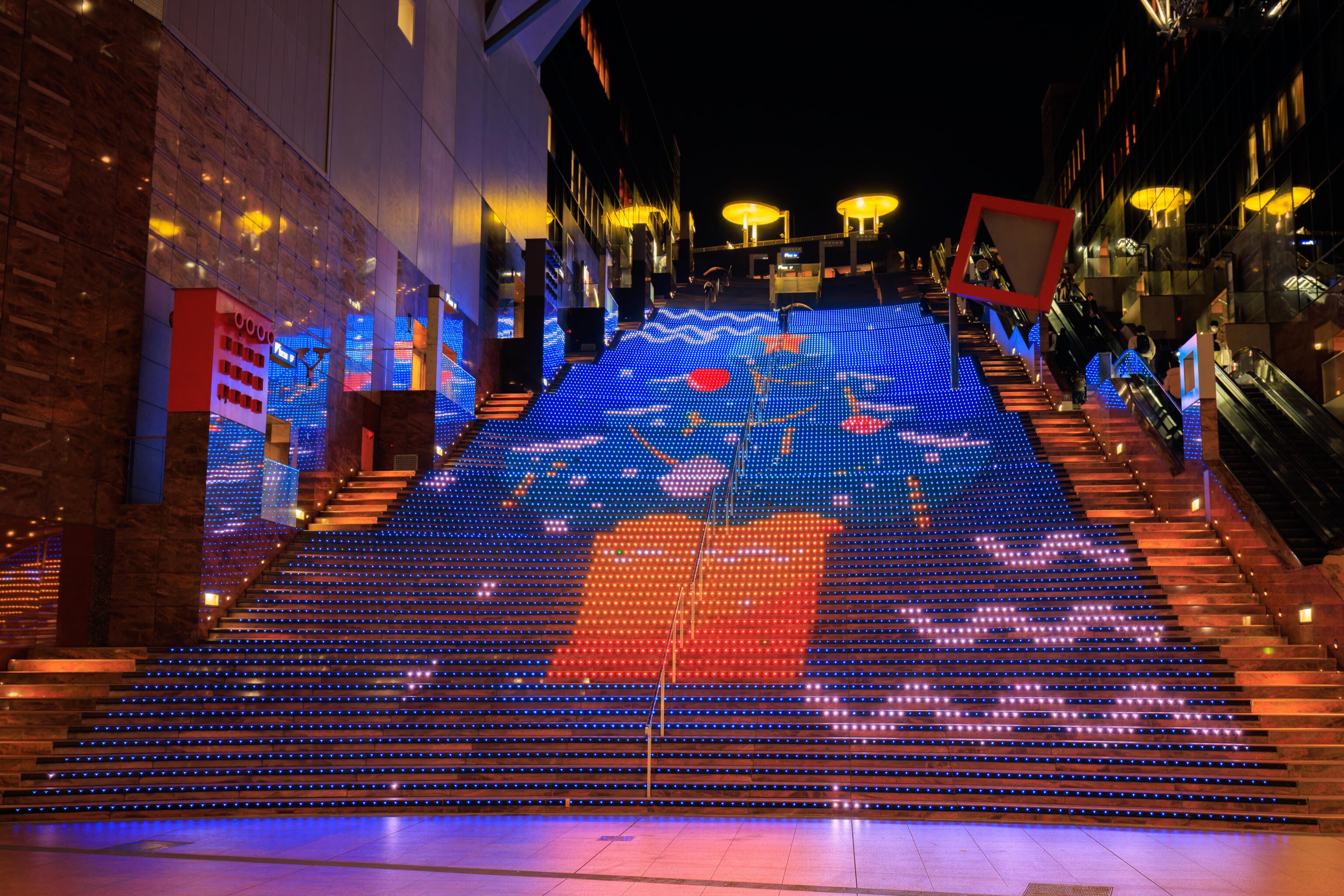
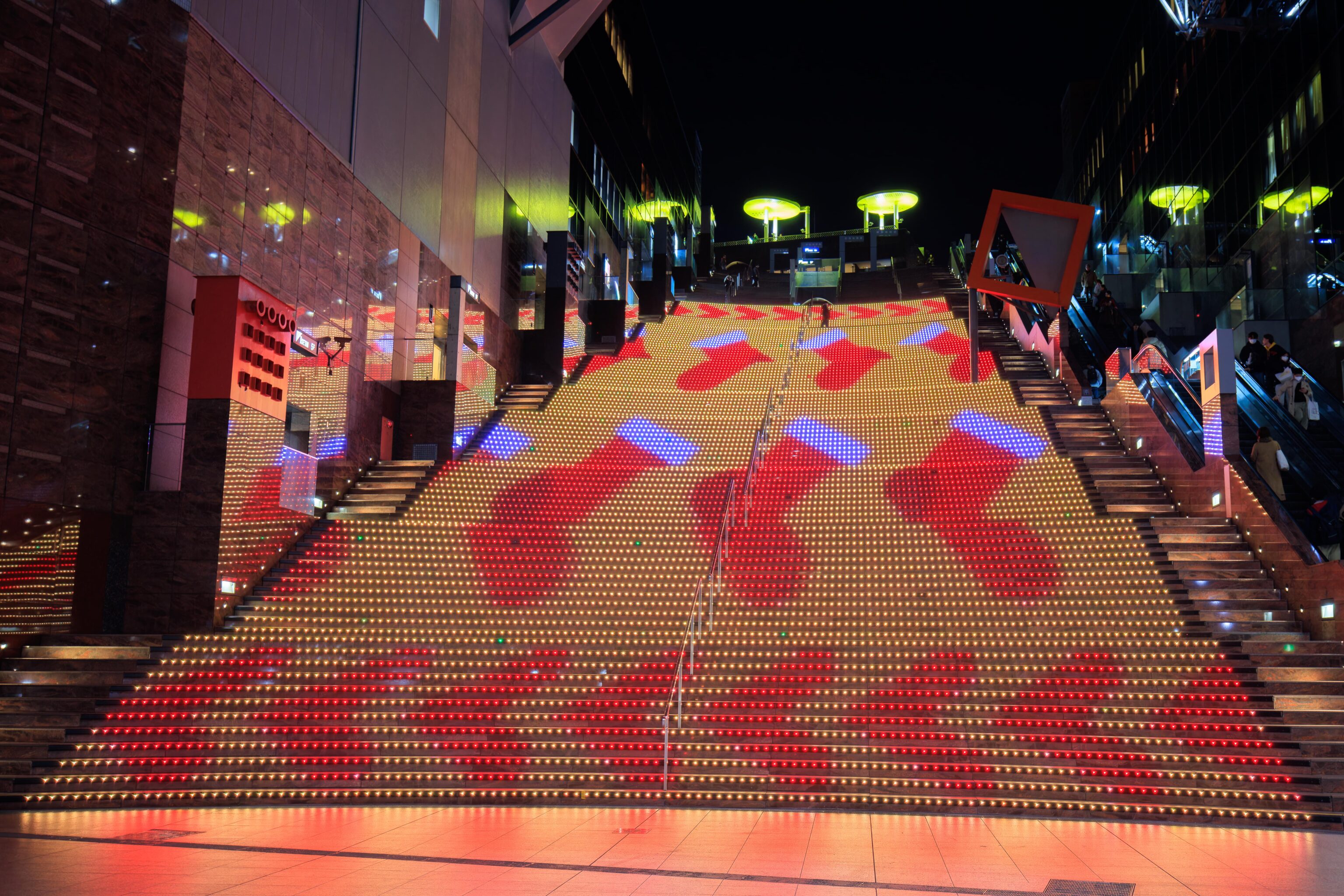
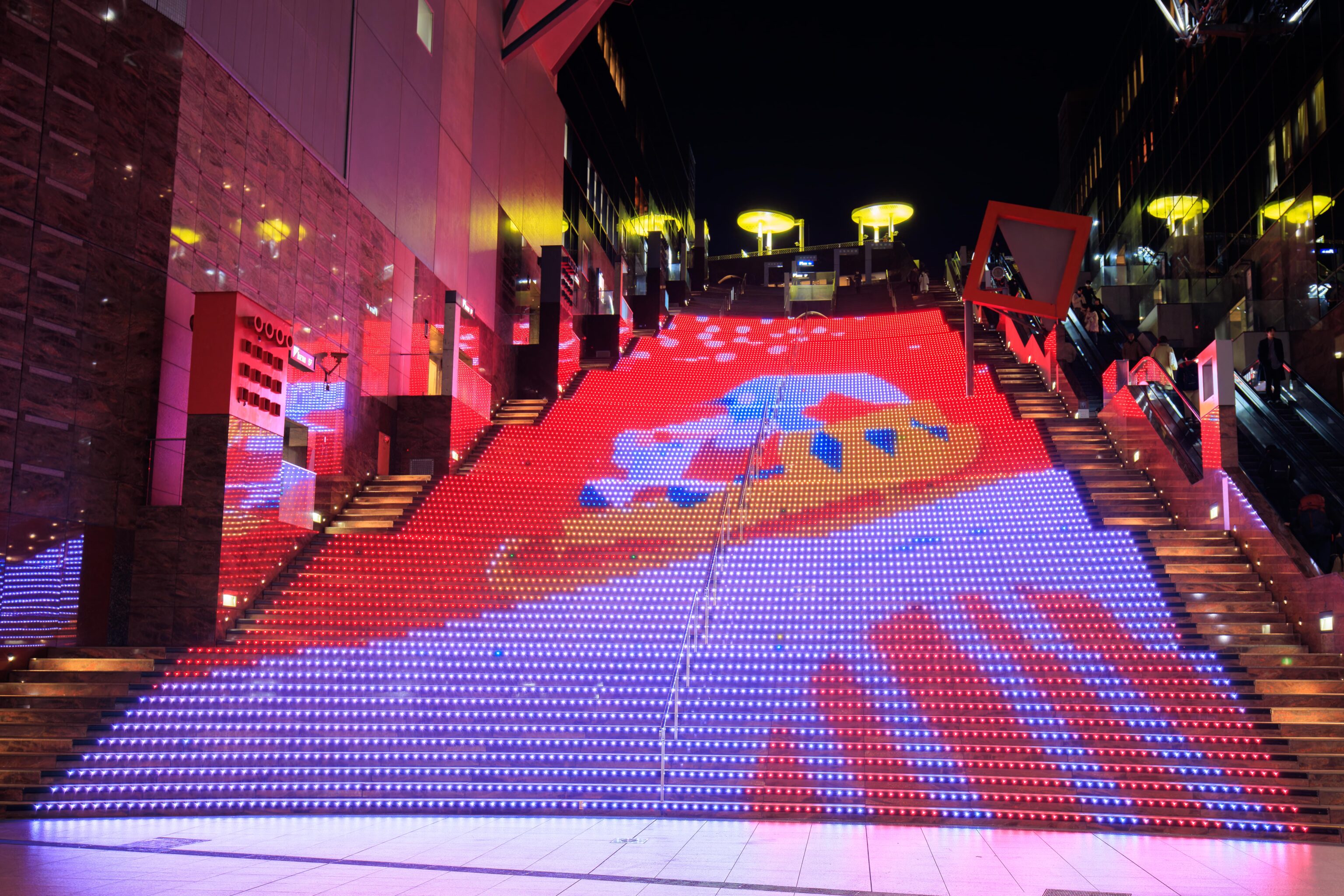
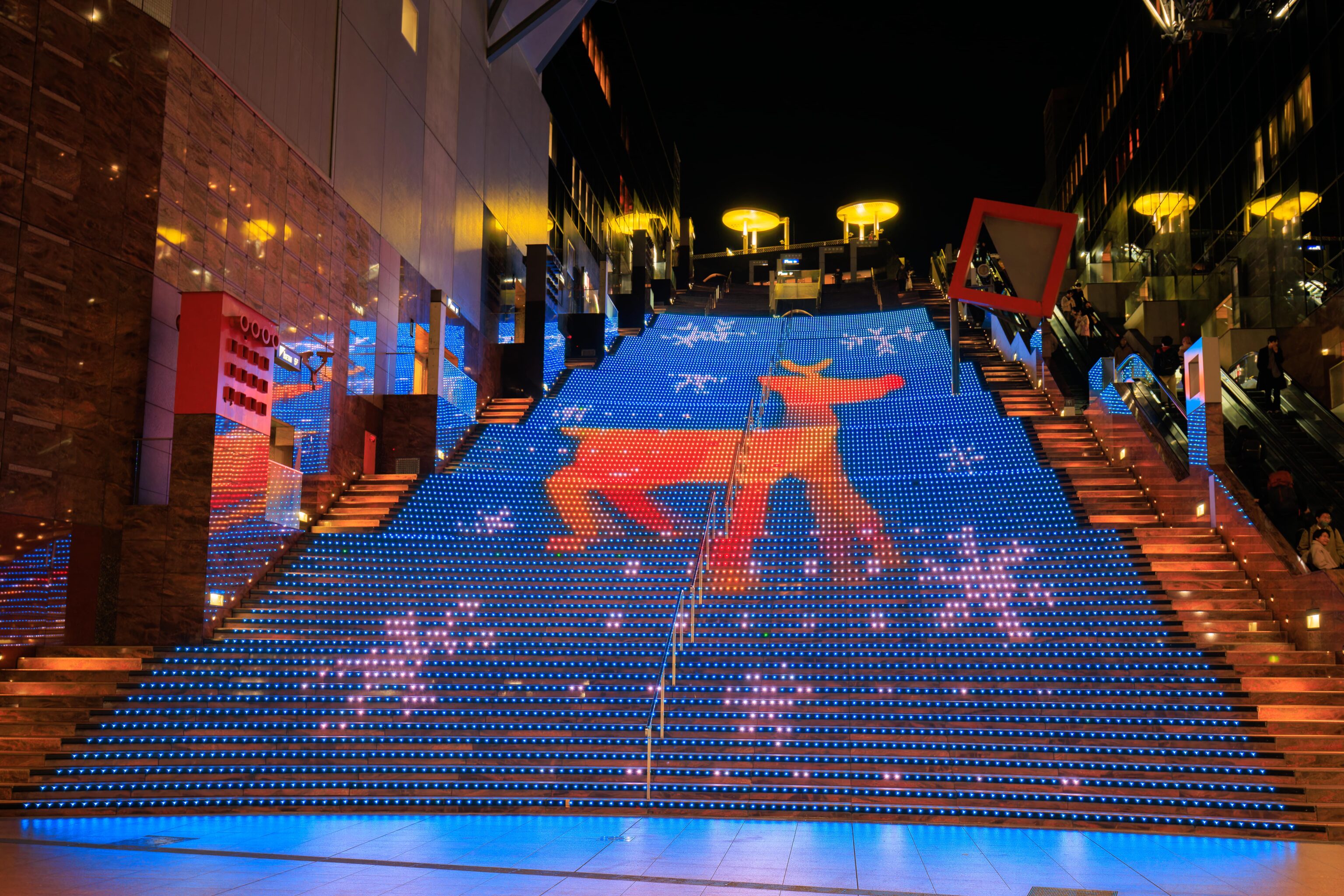
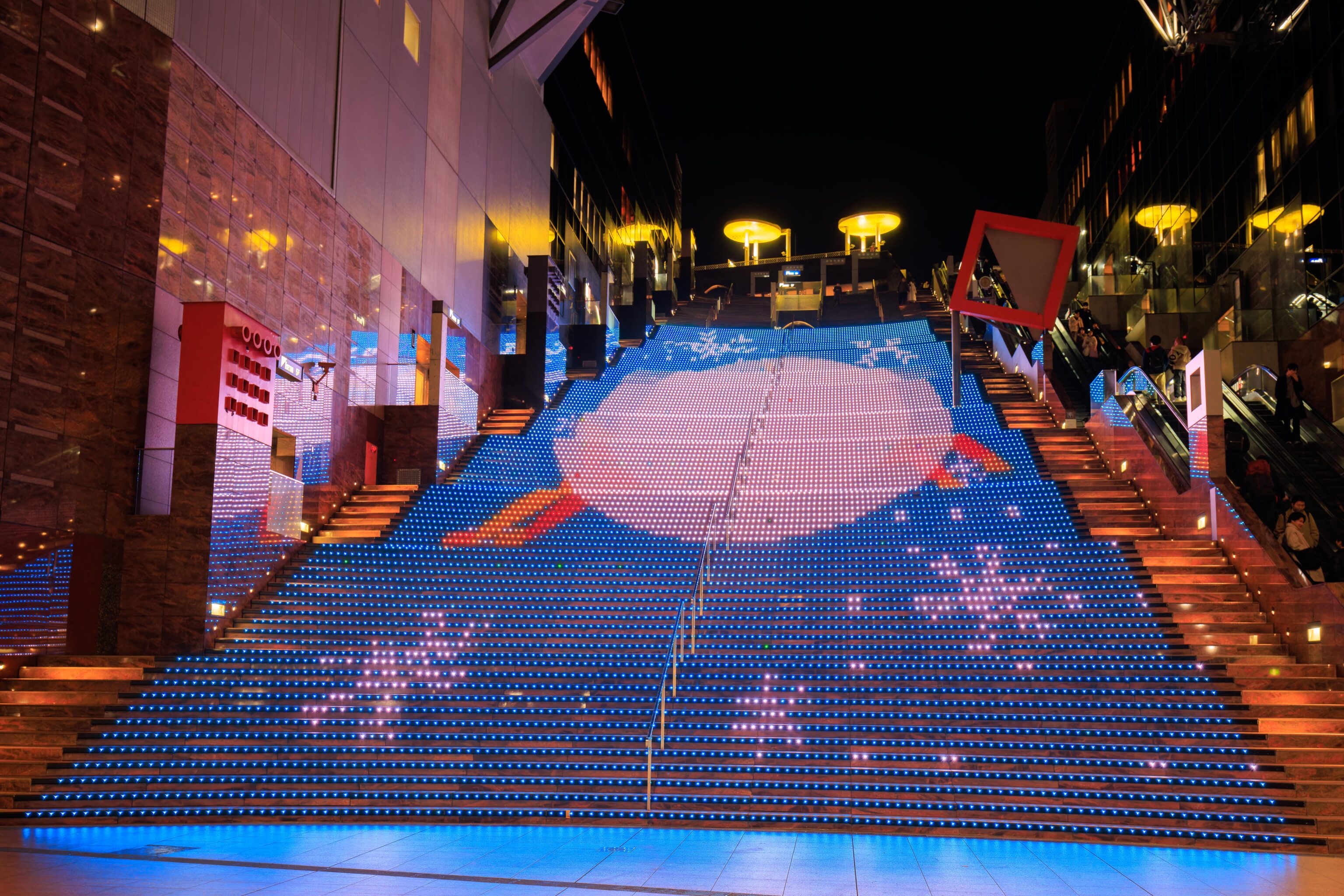
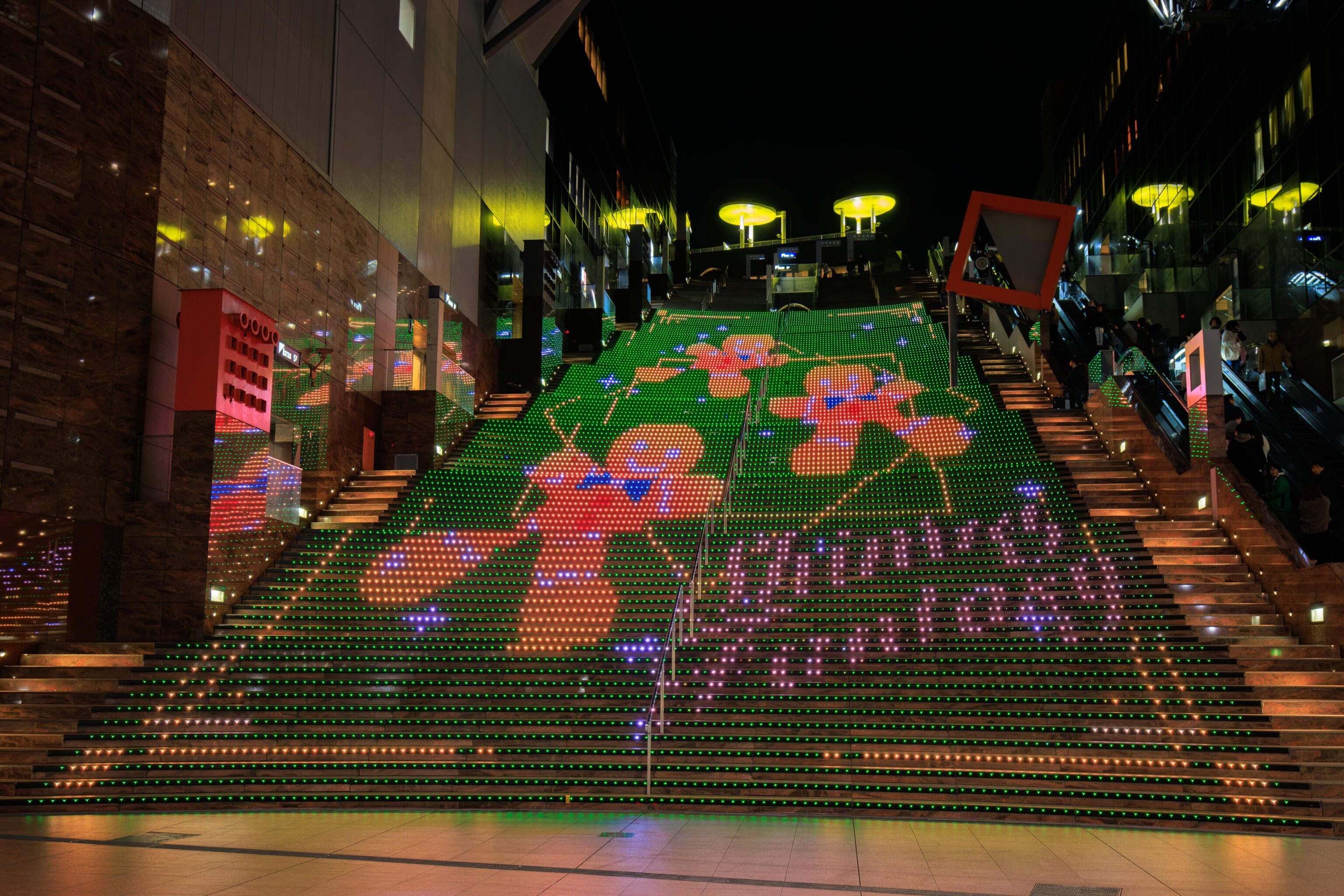
The other scenes were all Christmas holiday themed.
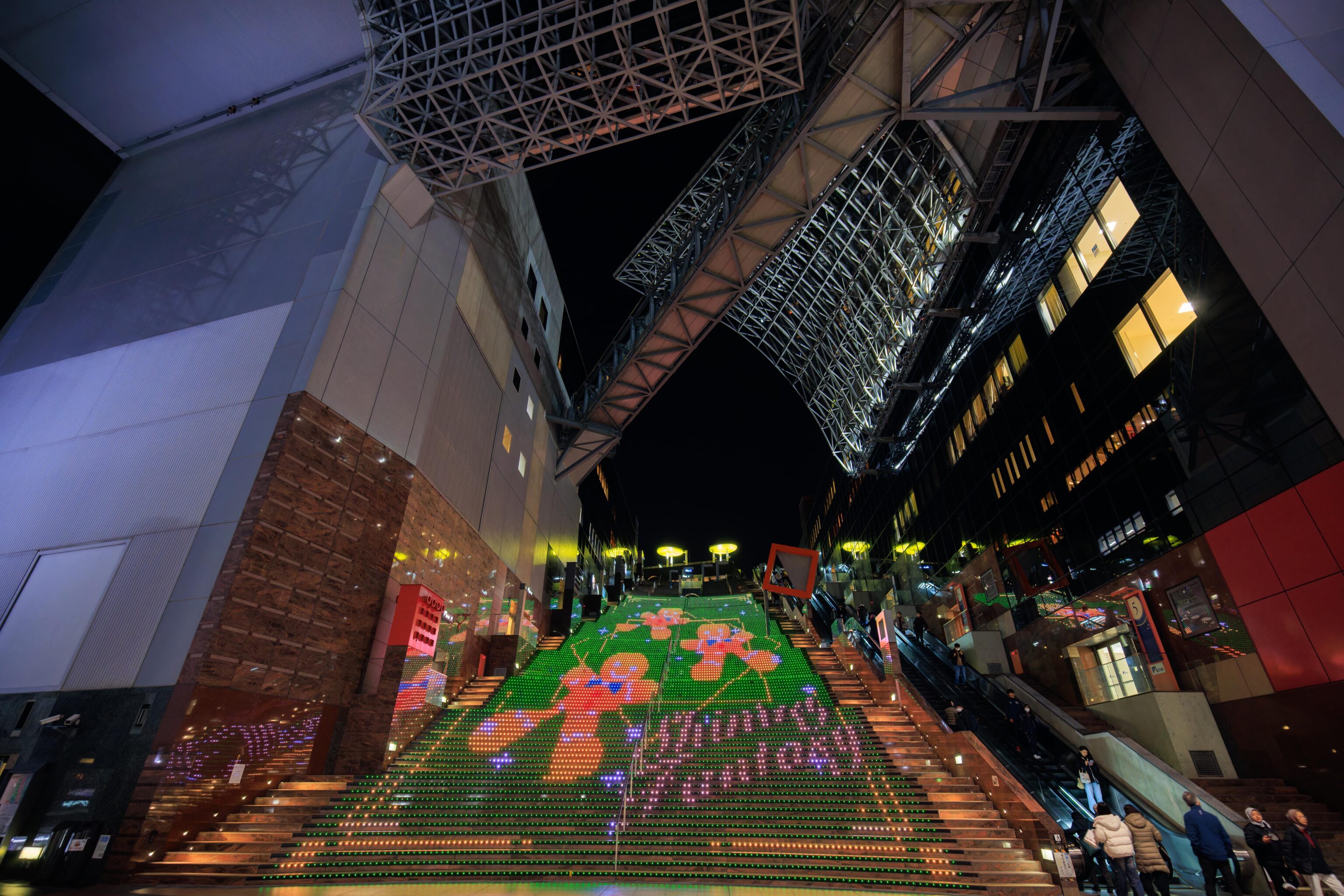
A wide angle view of the stairs, showing more of the station building. From here, we continued heading down into the basement where we took the subway back to the Hyatt Place Kyoto to end the day.


